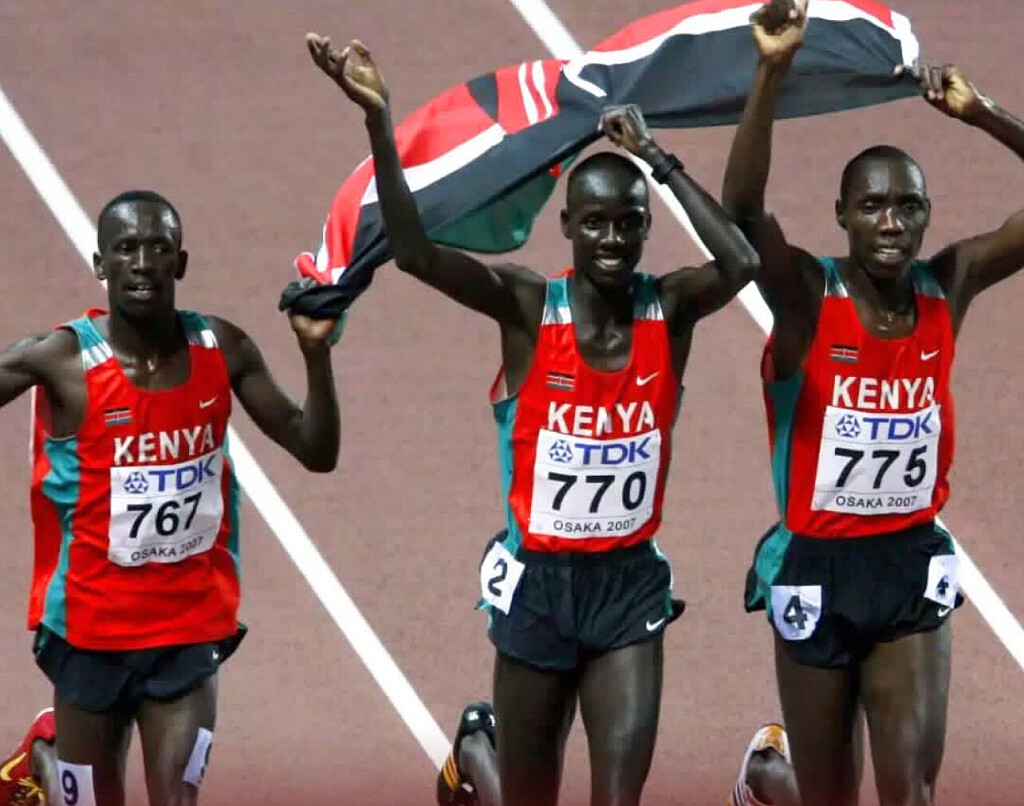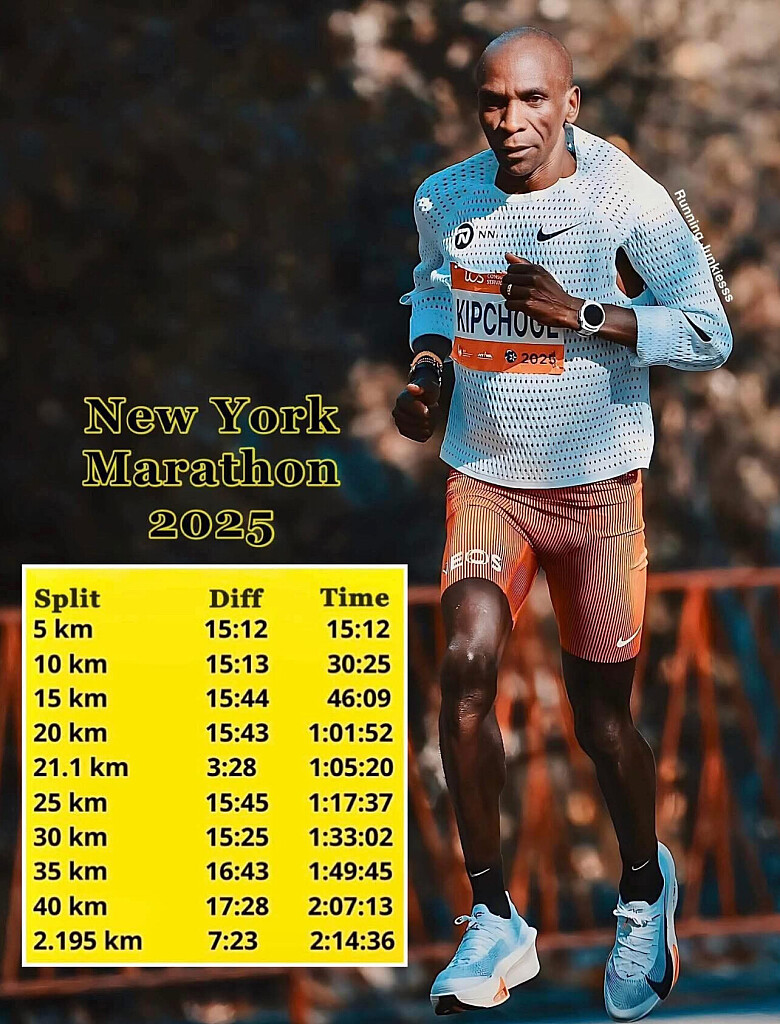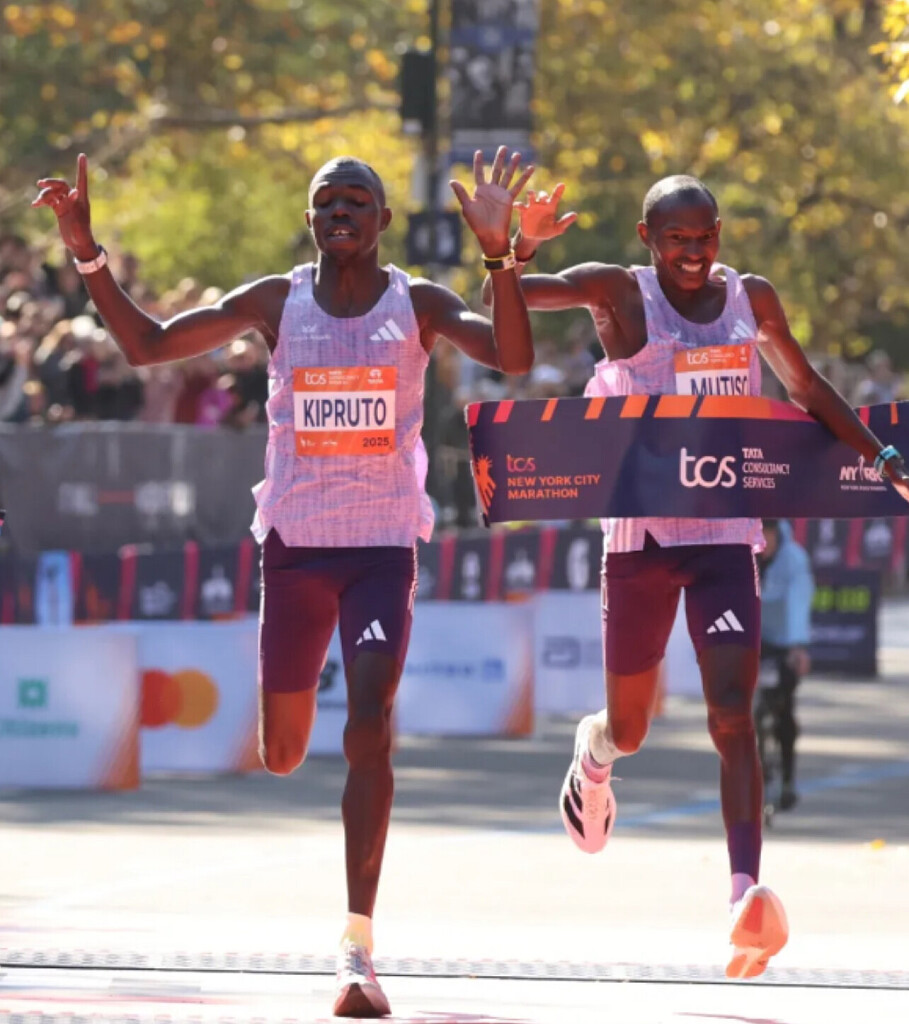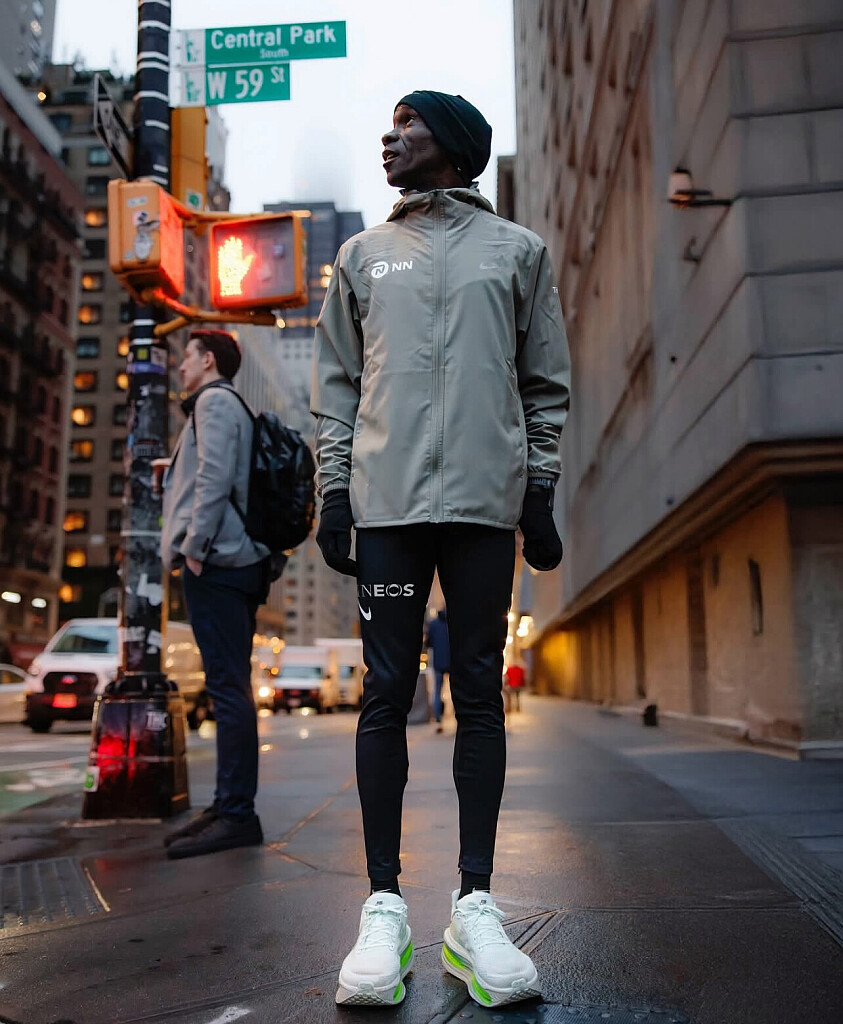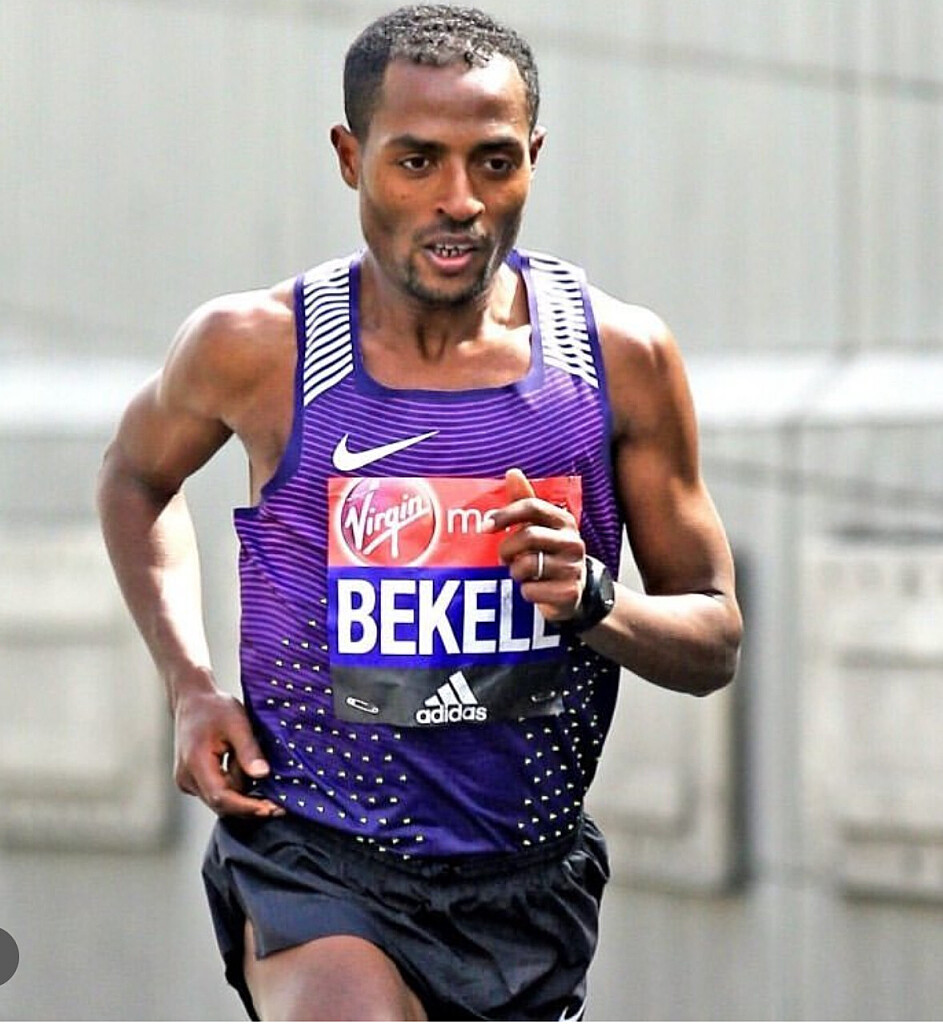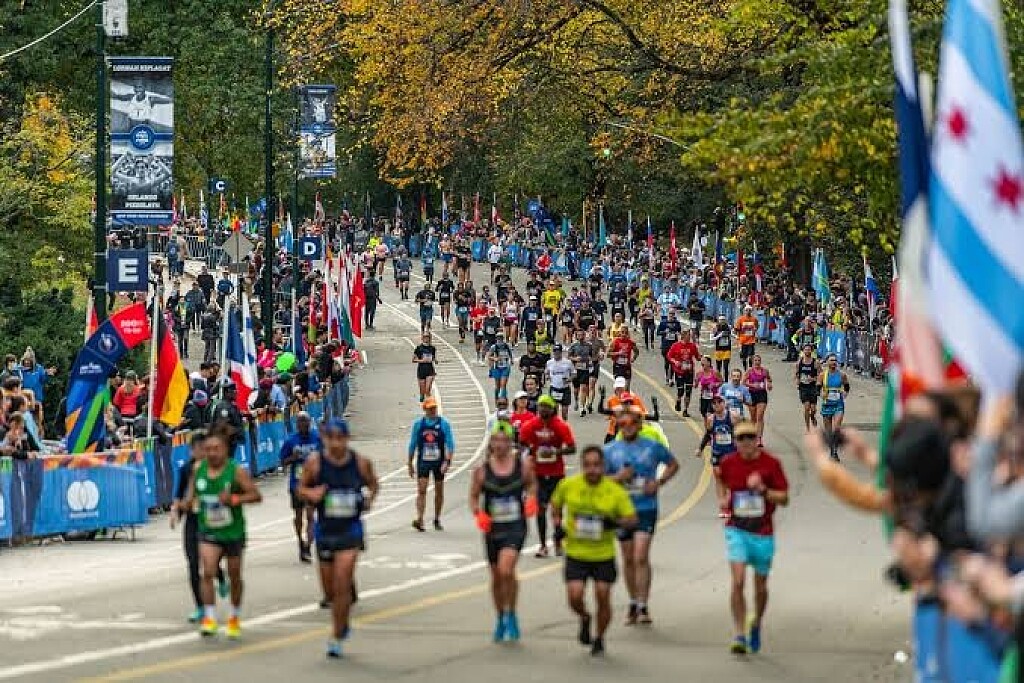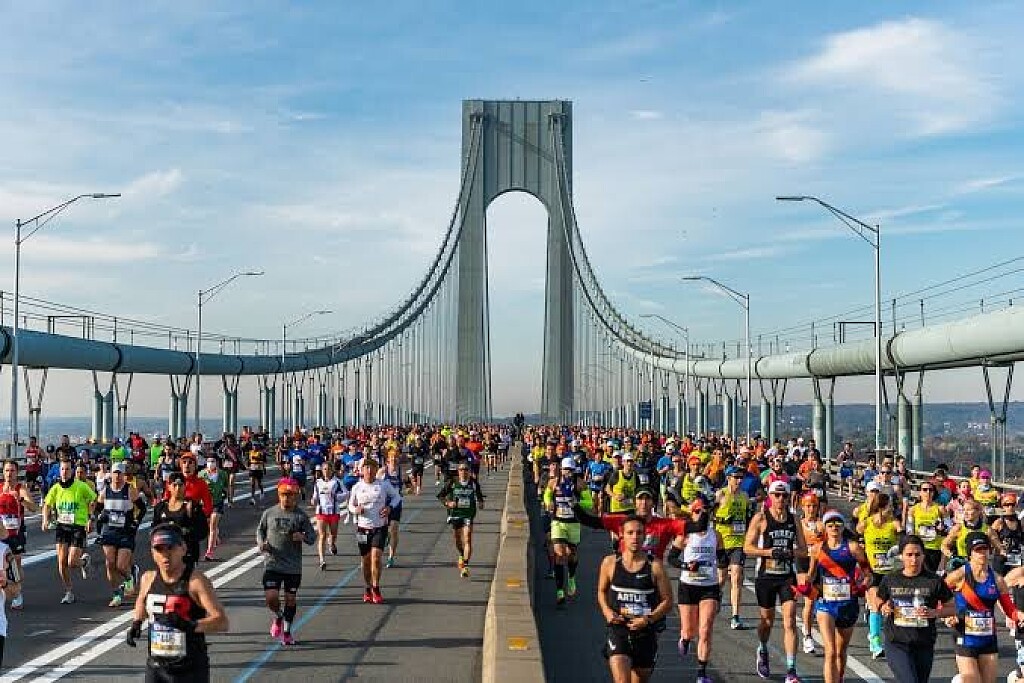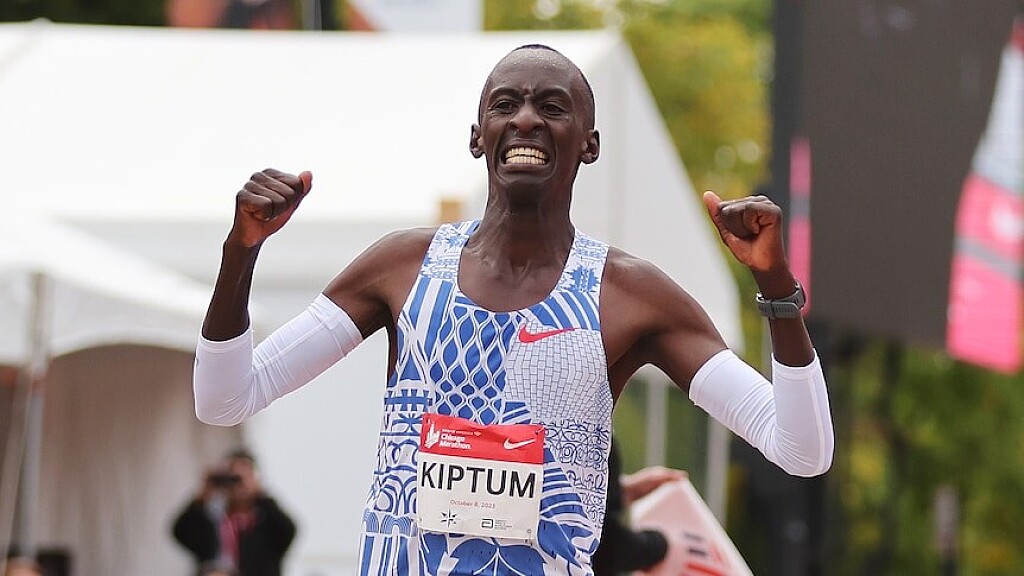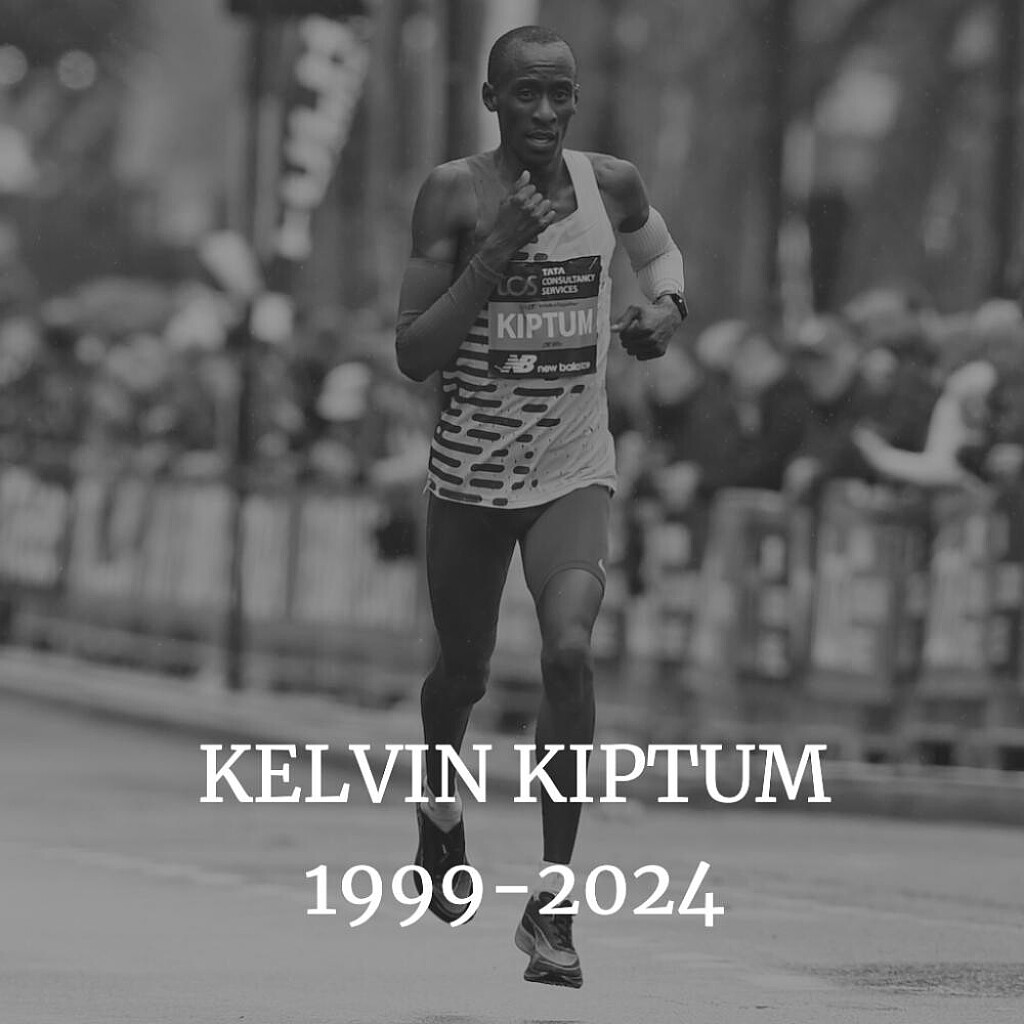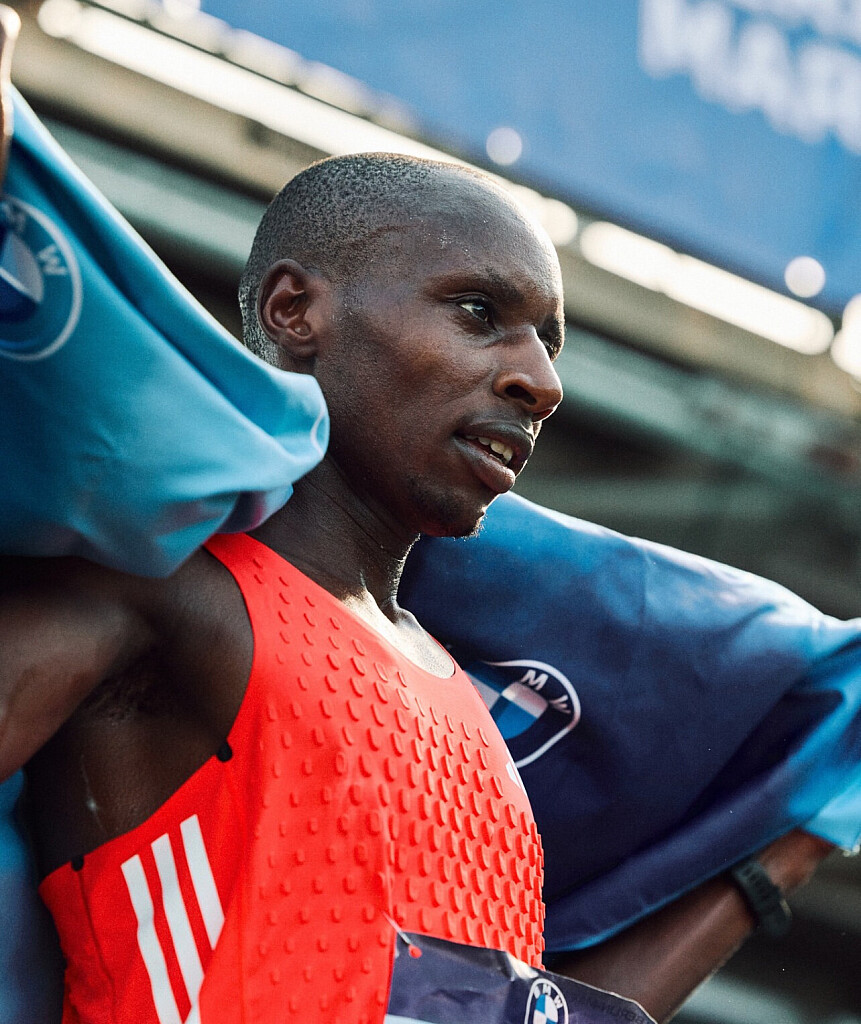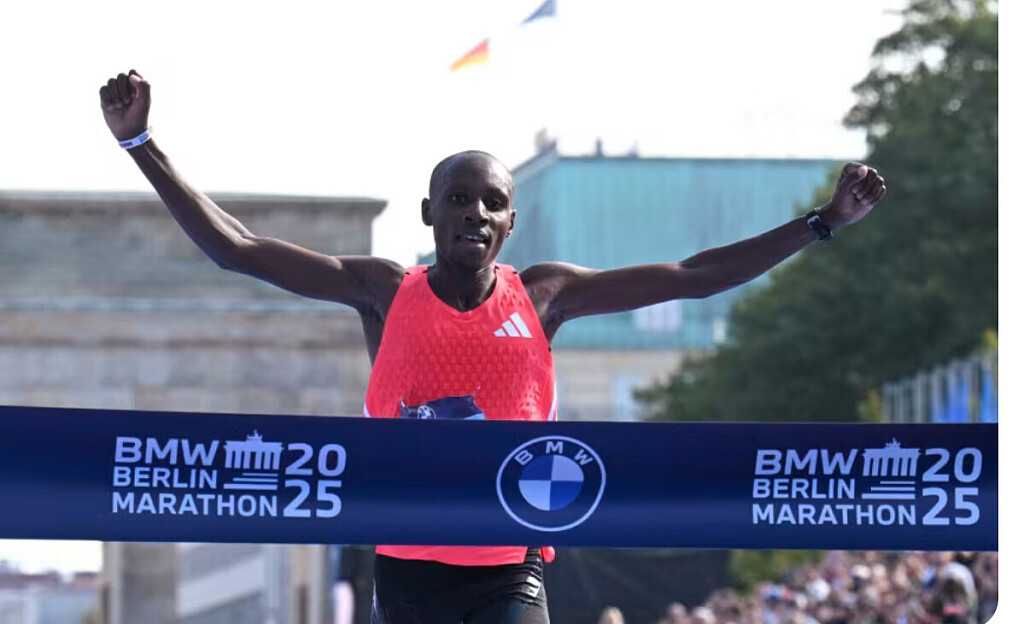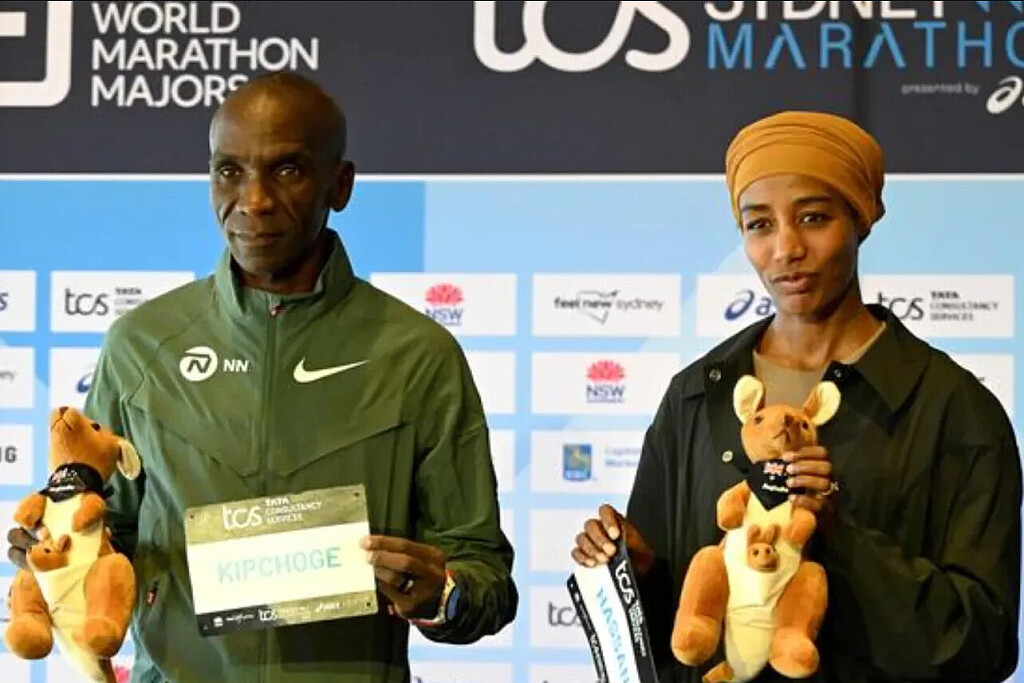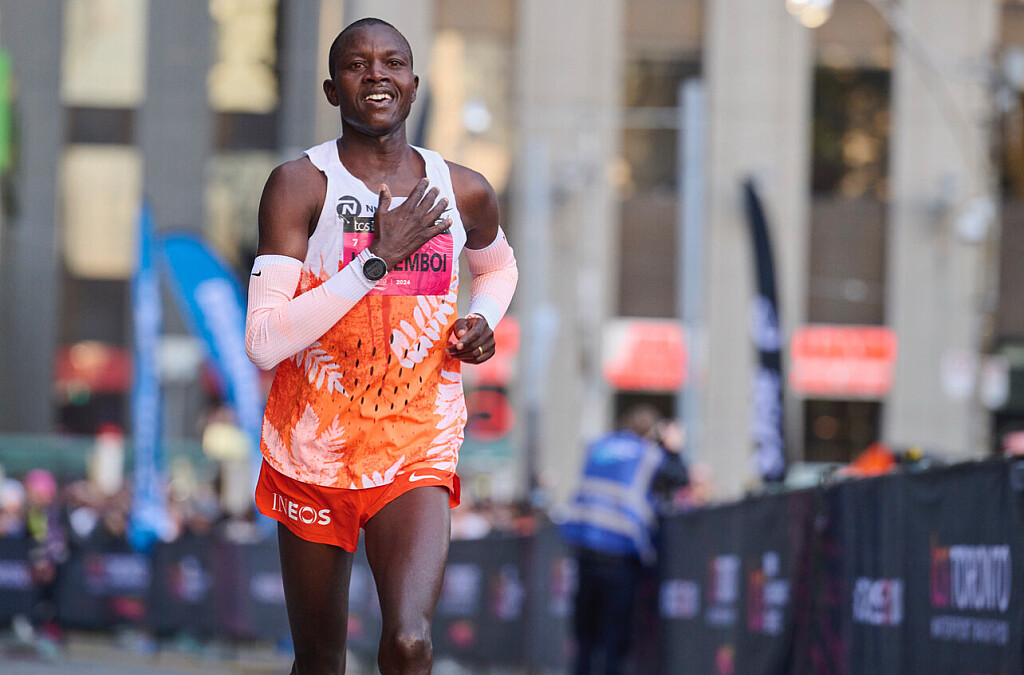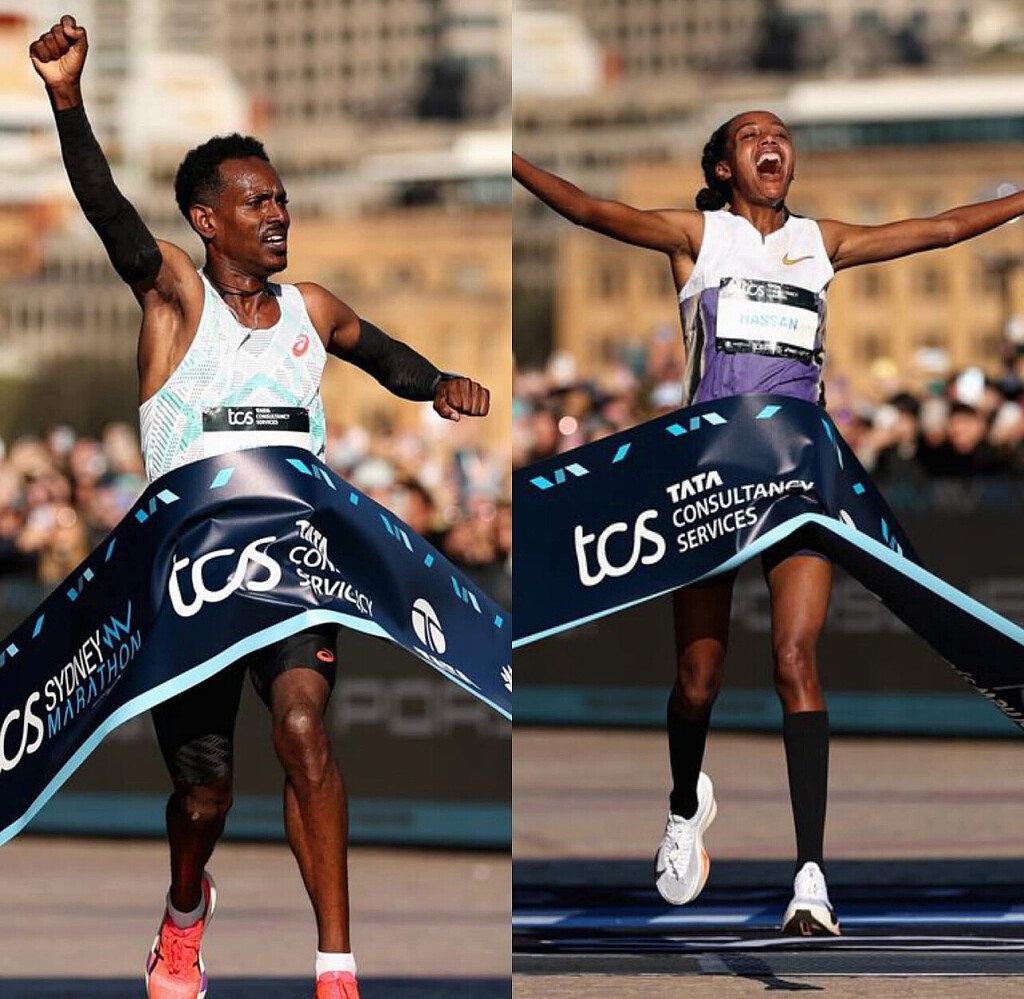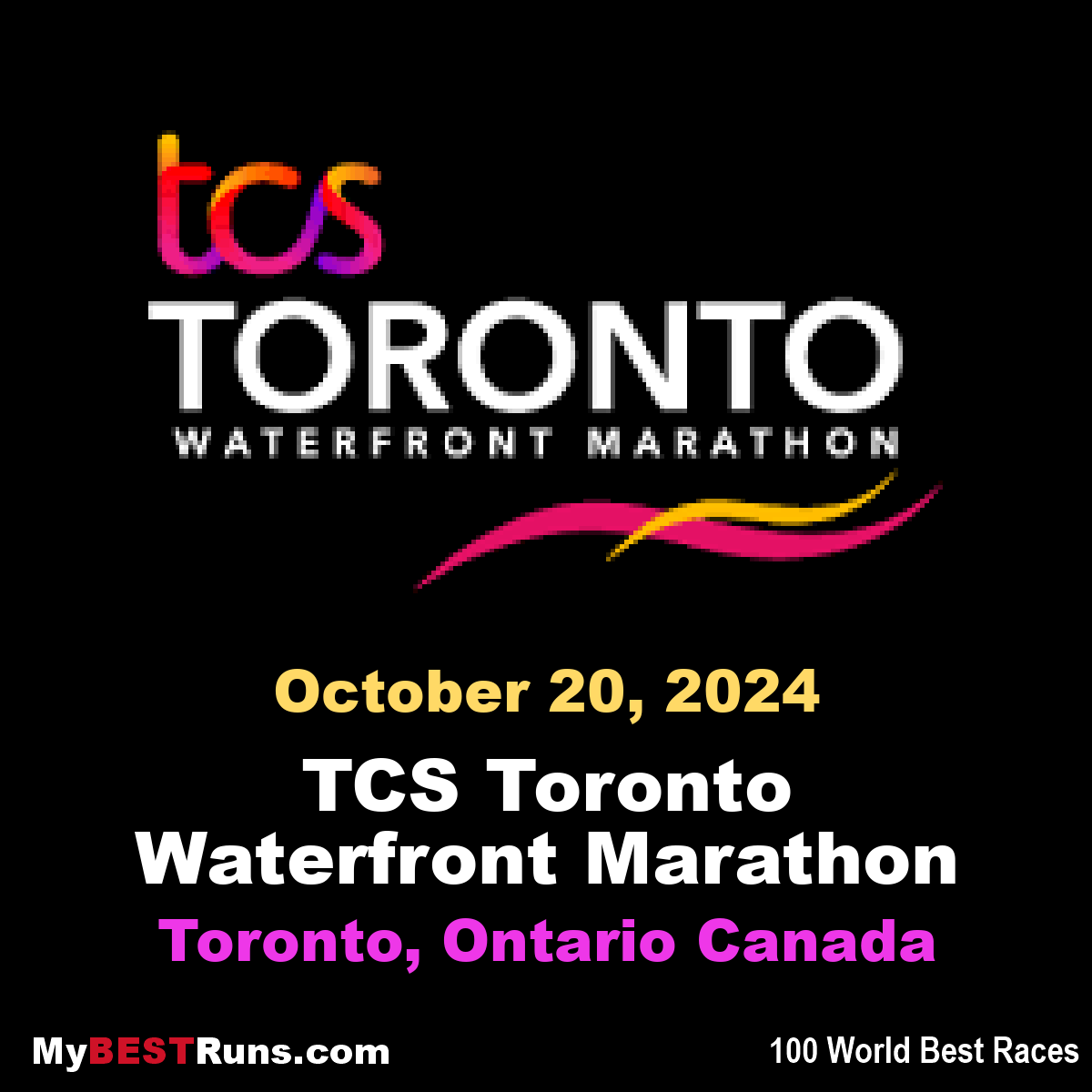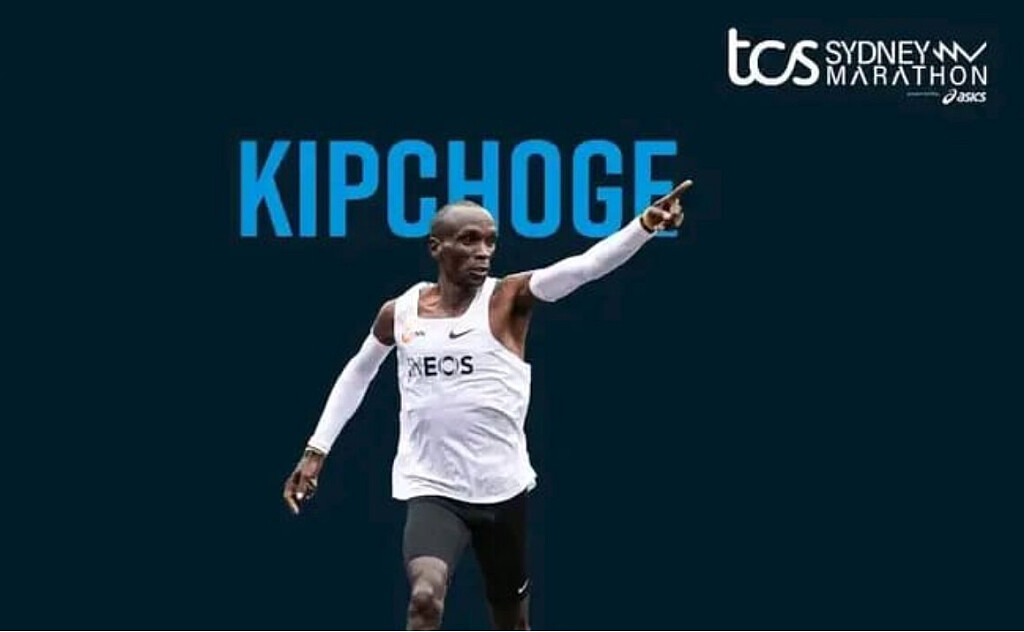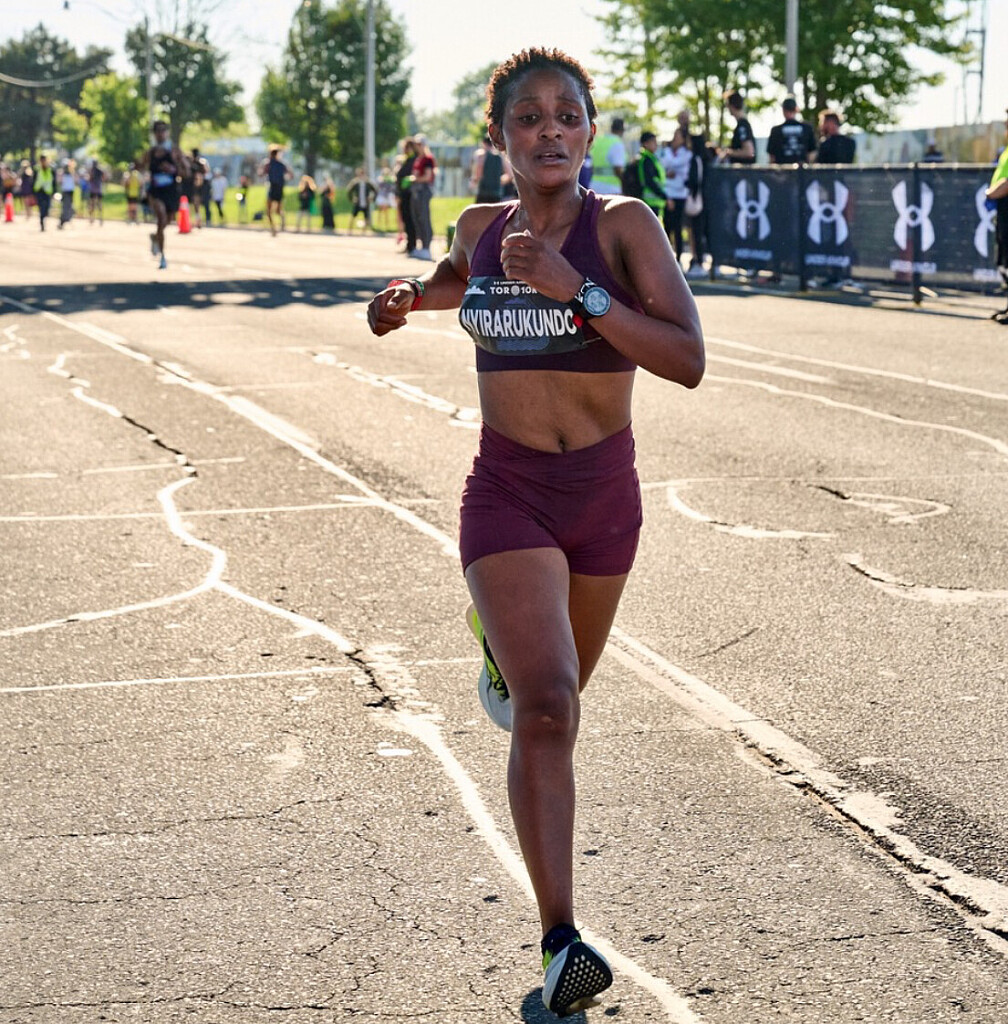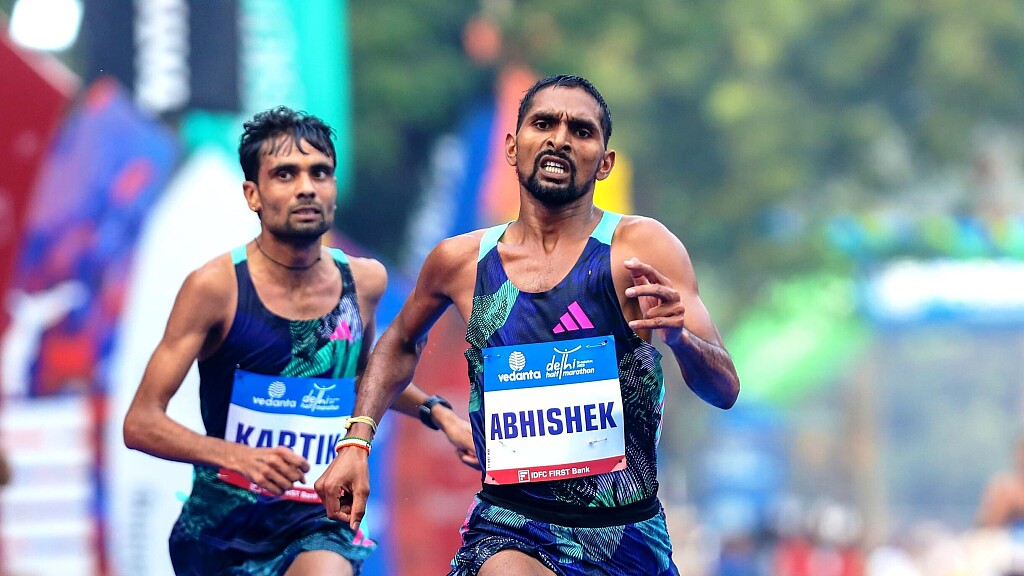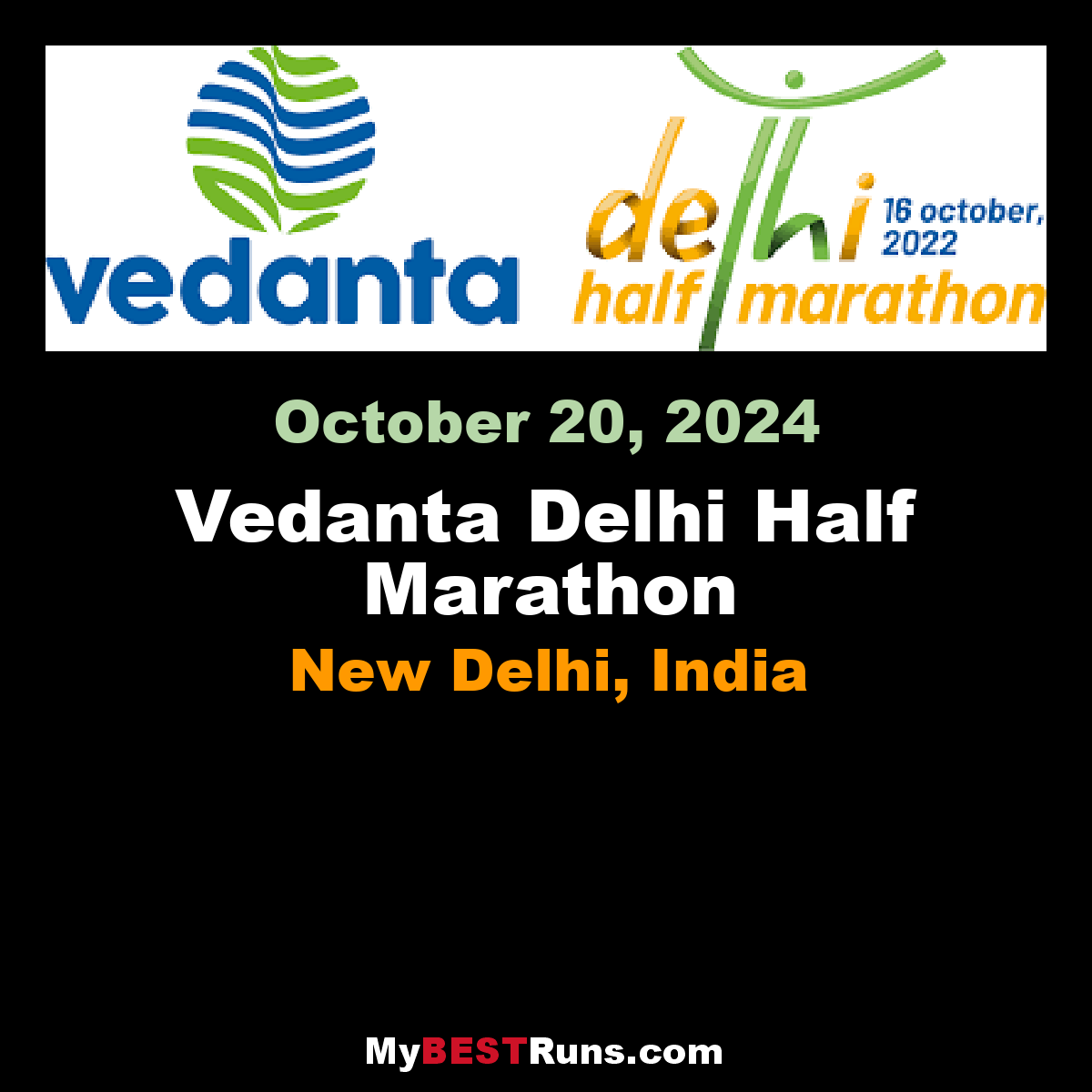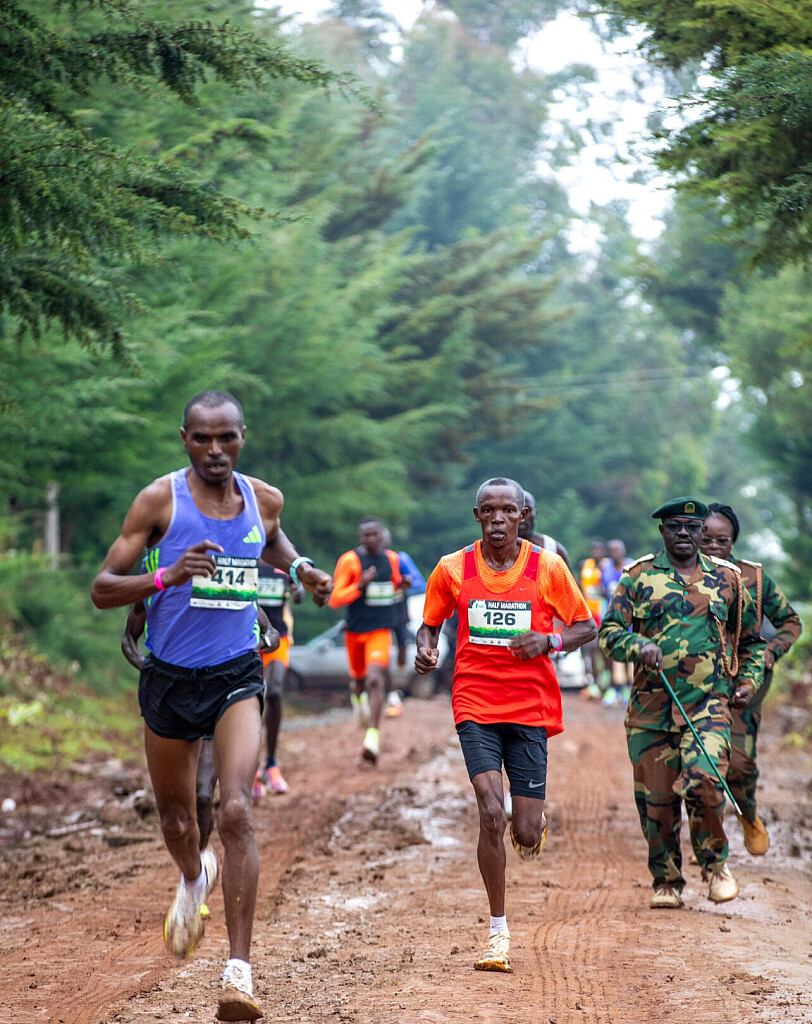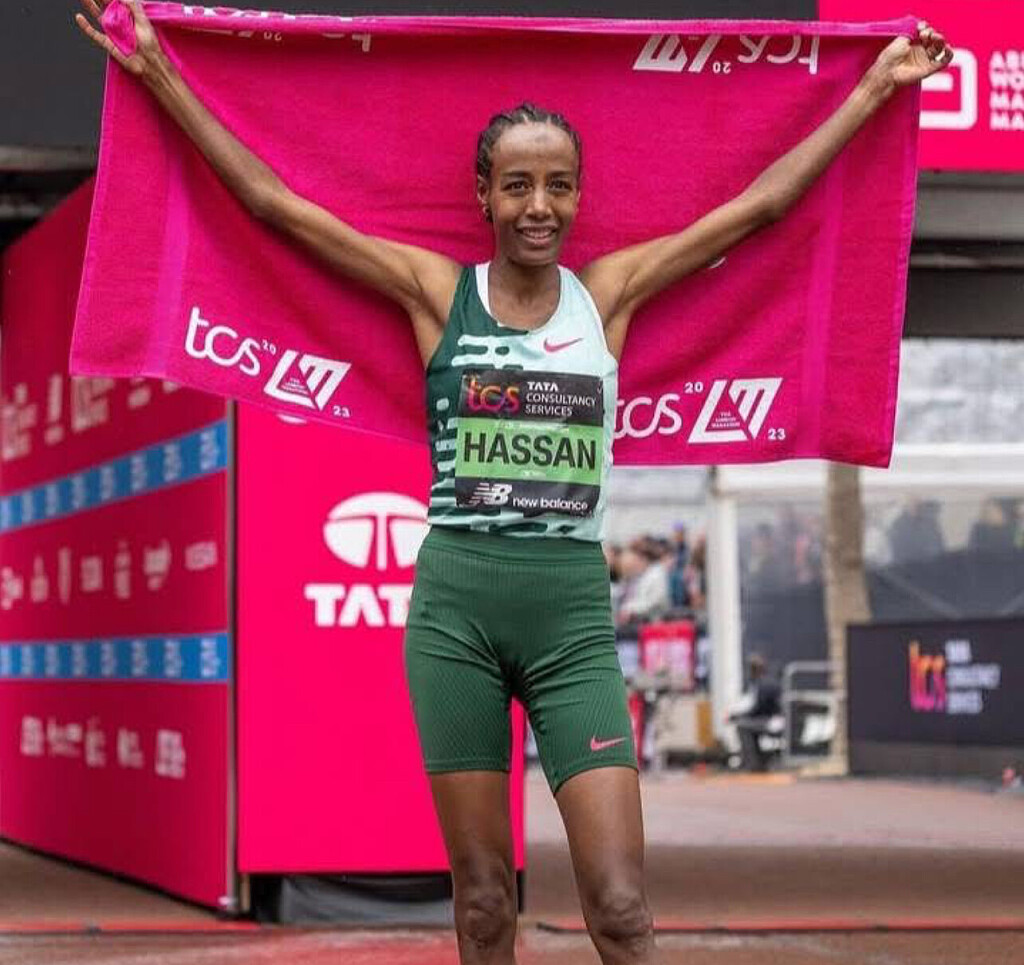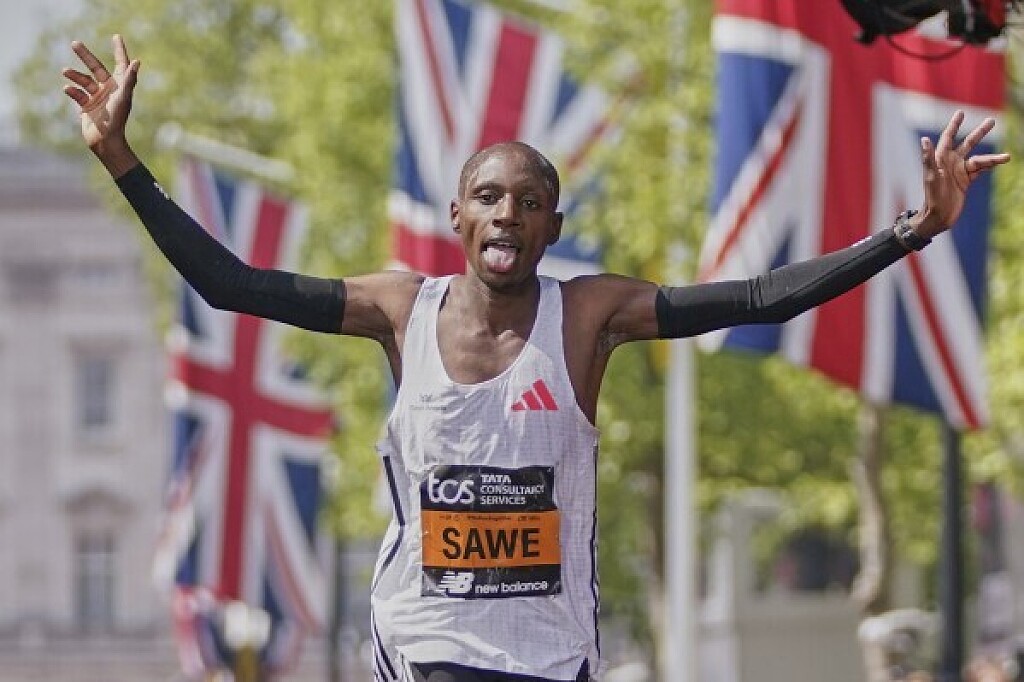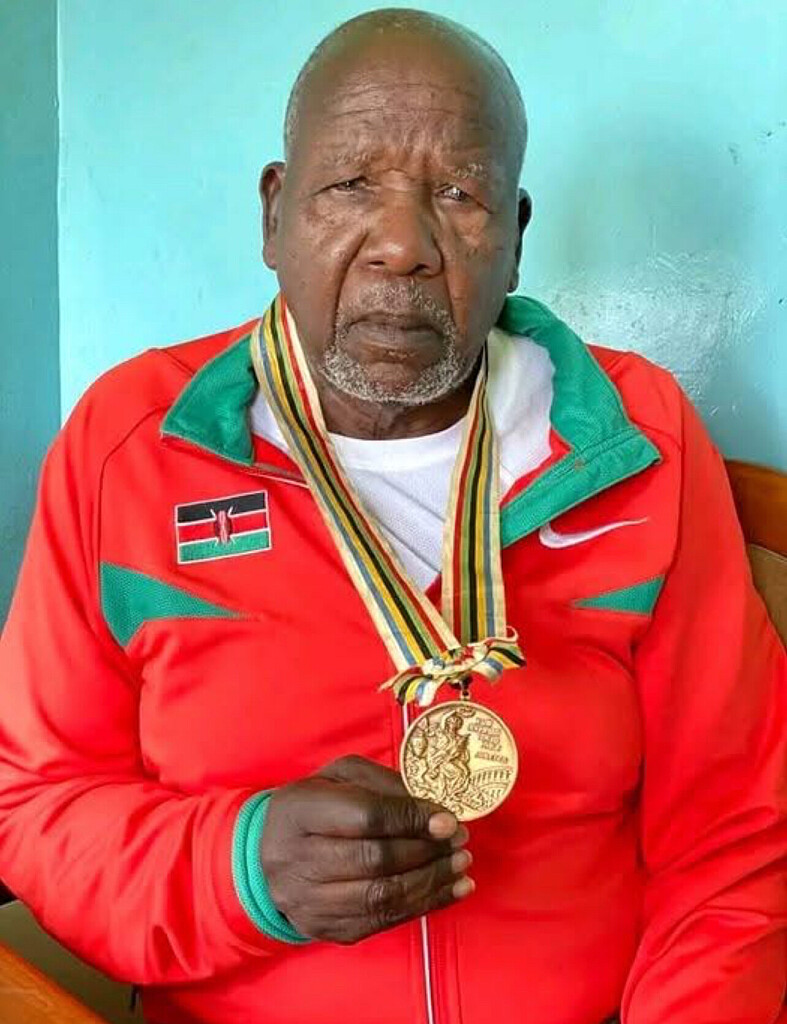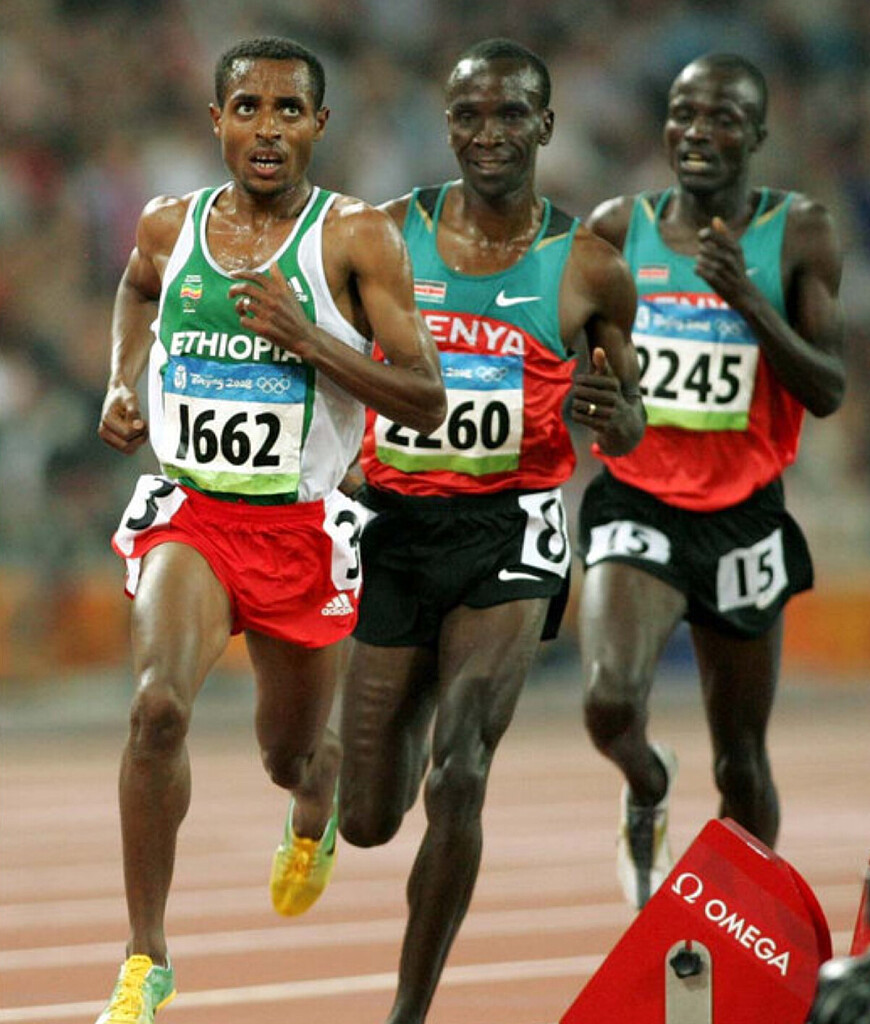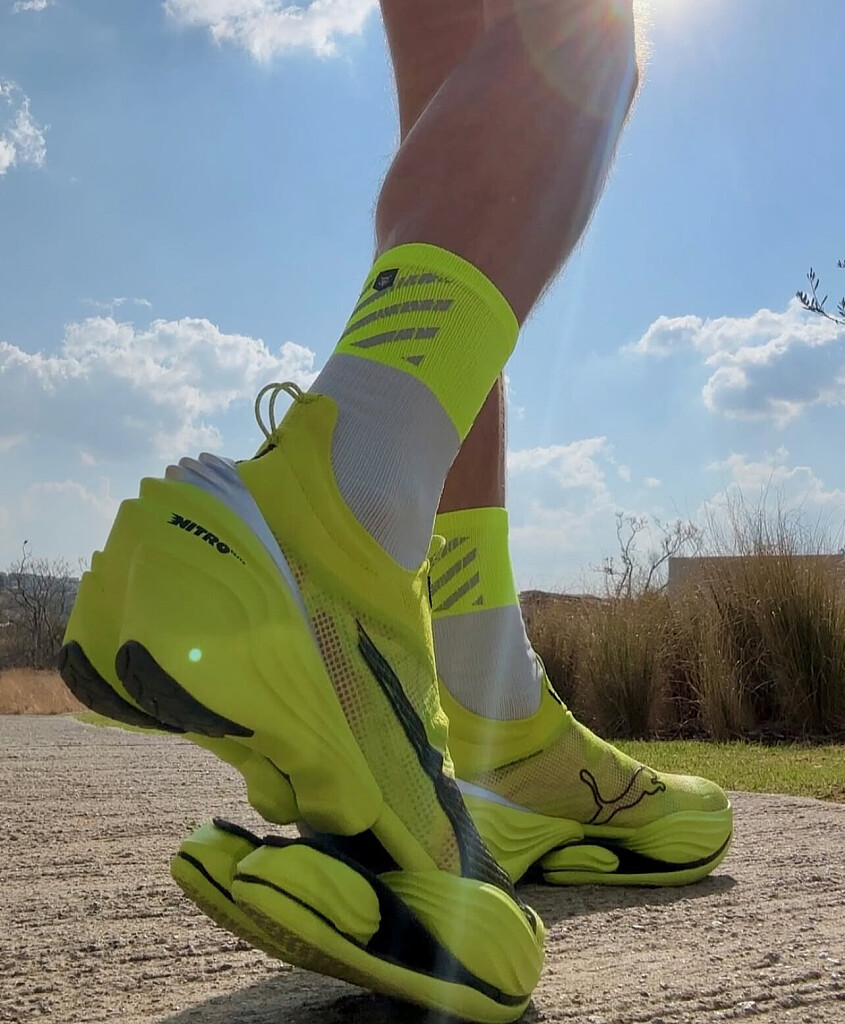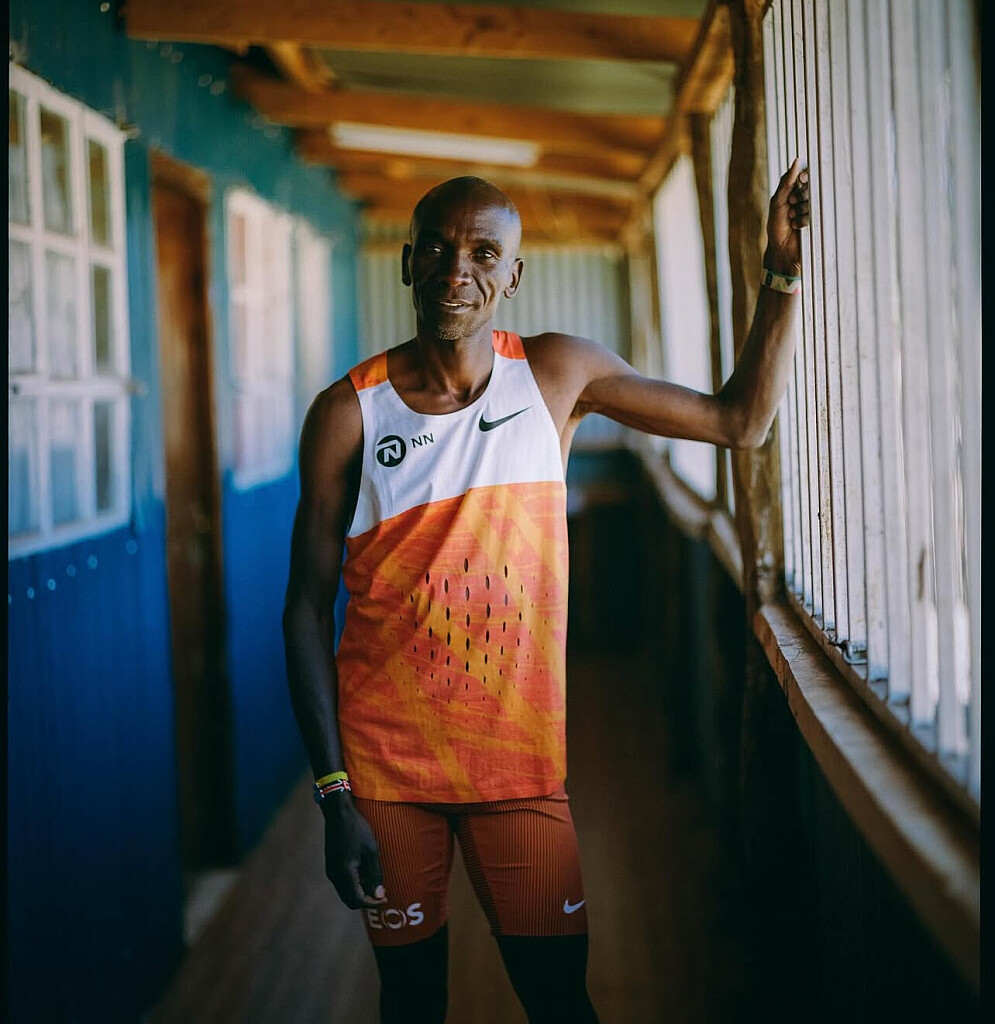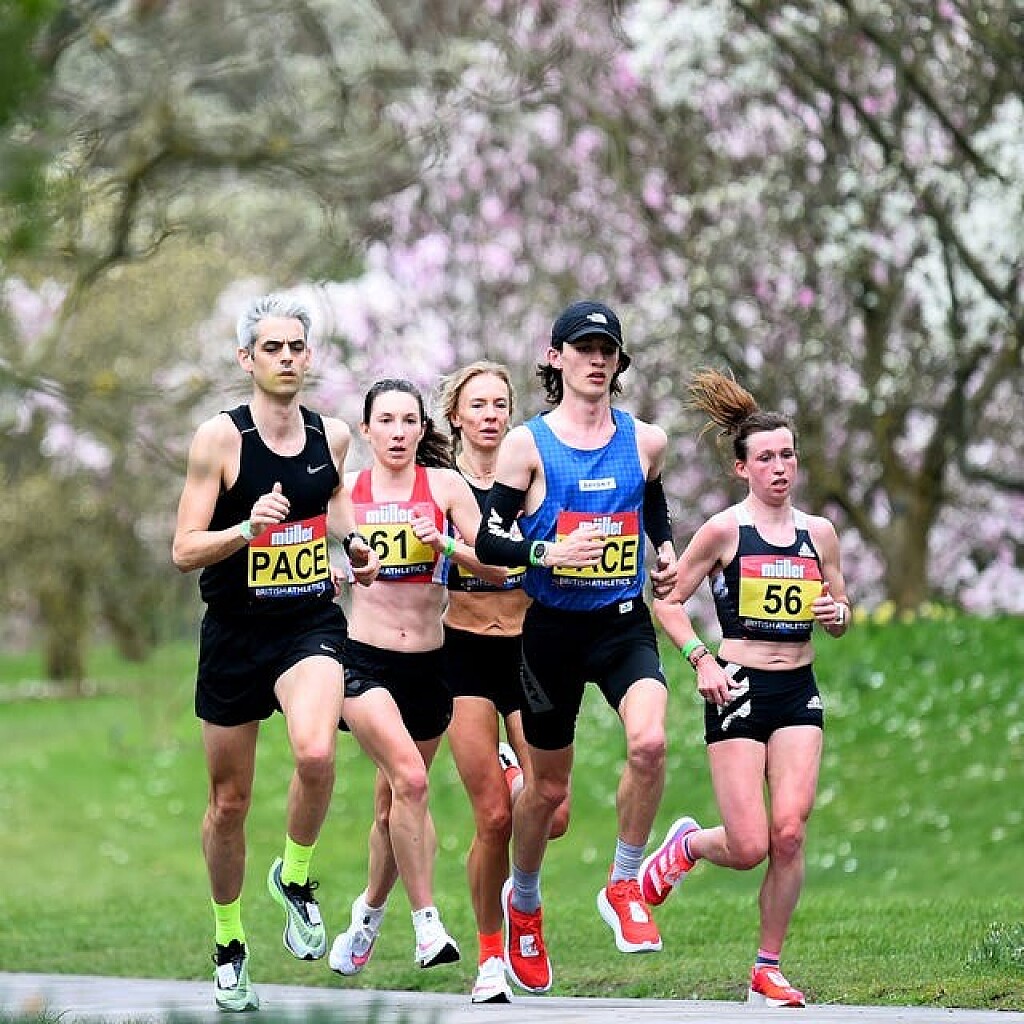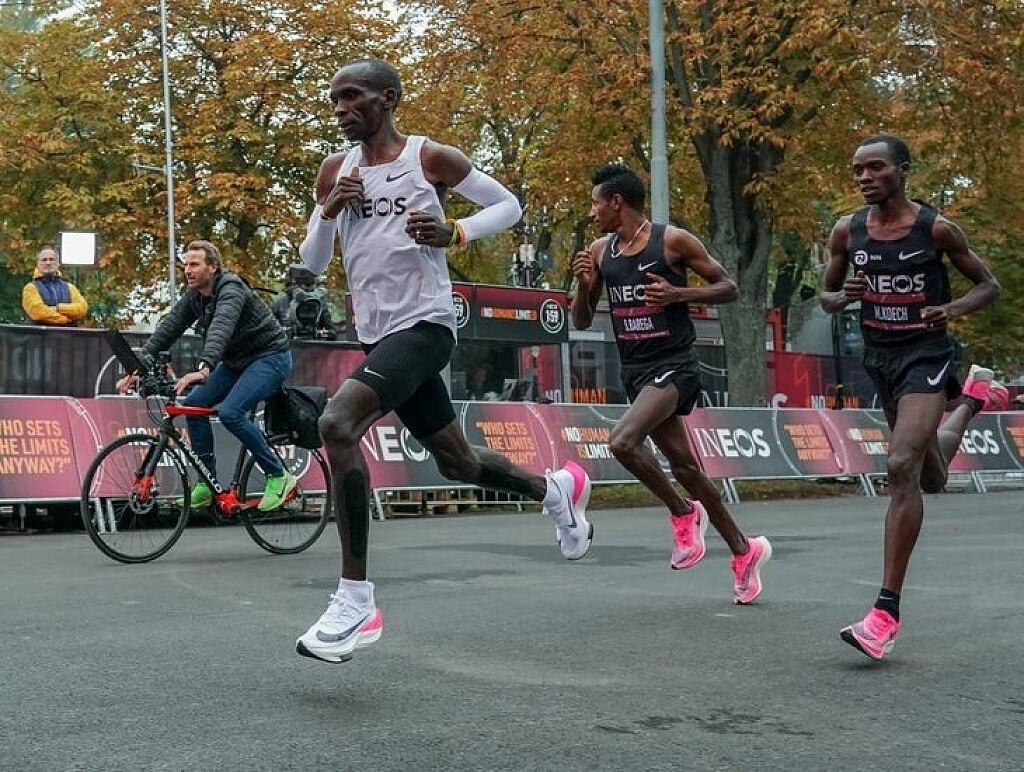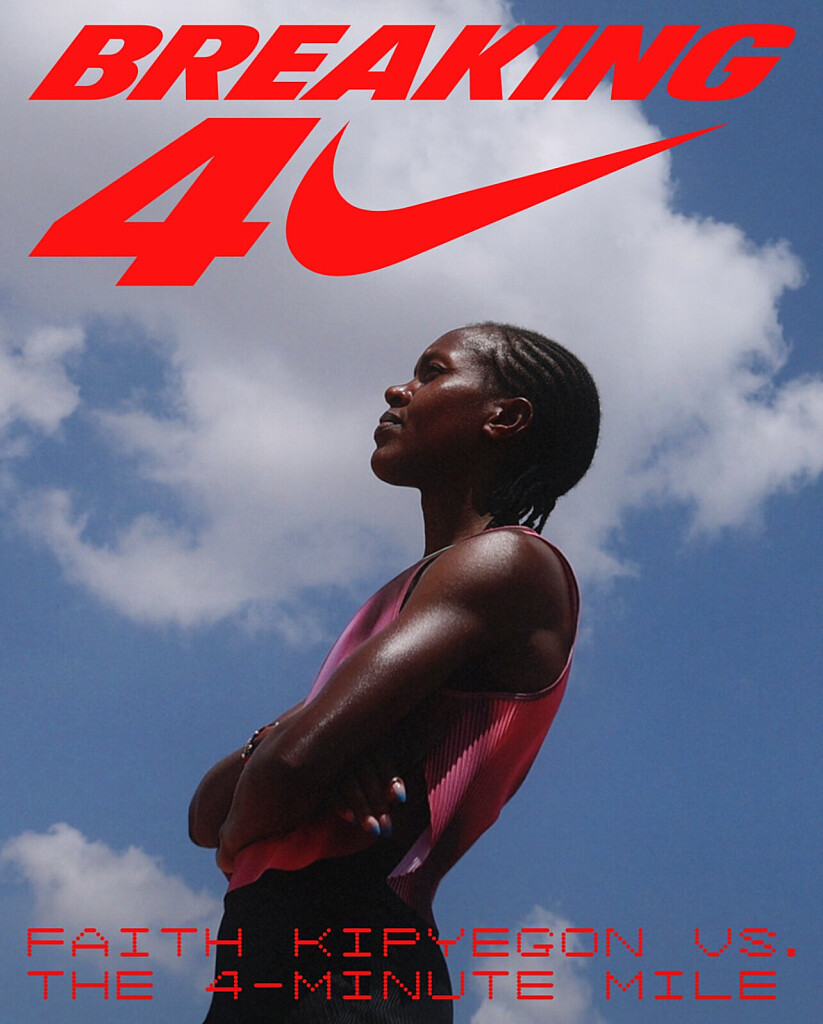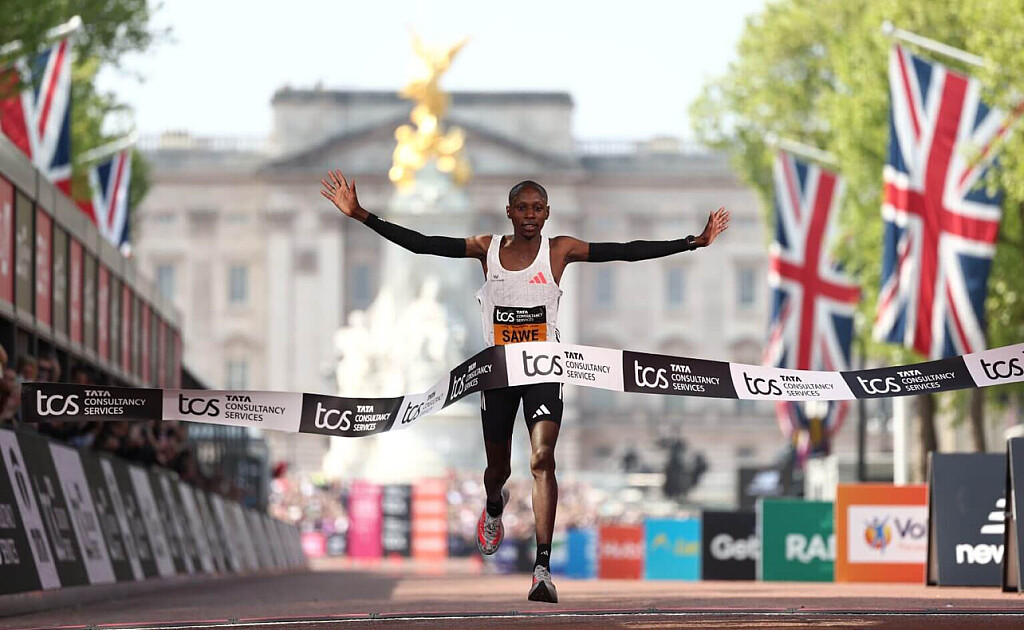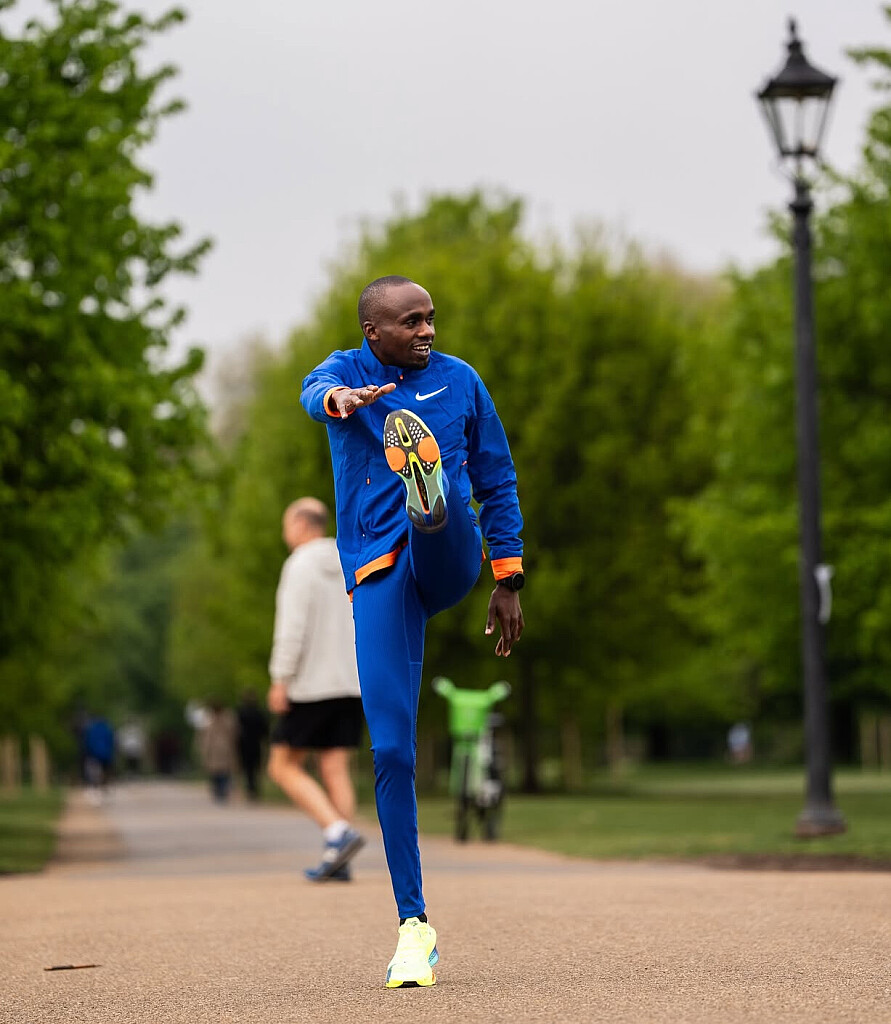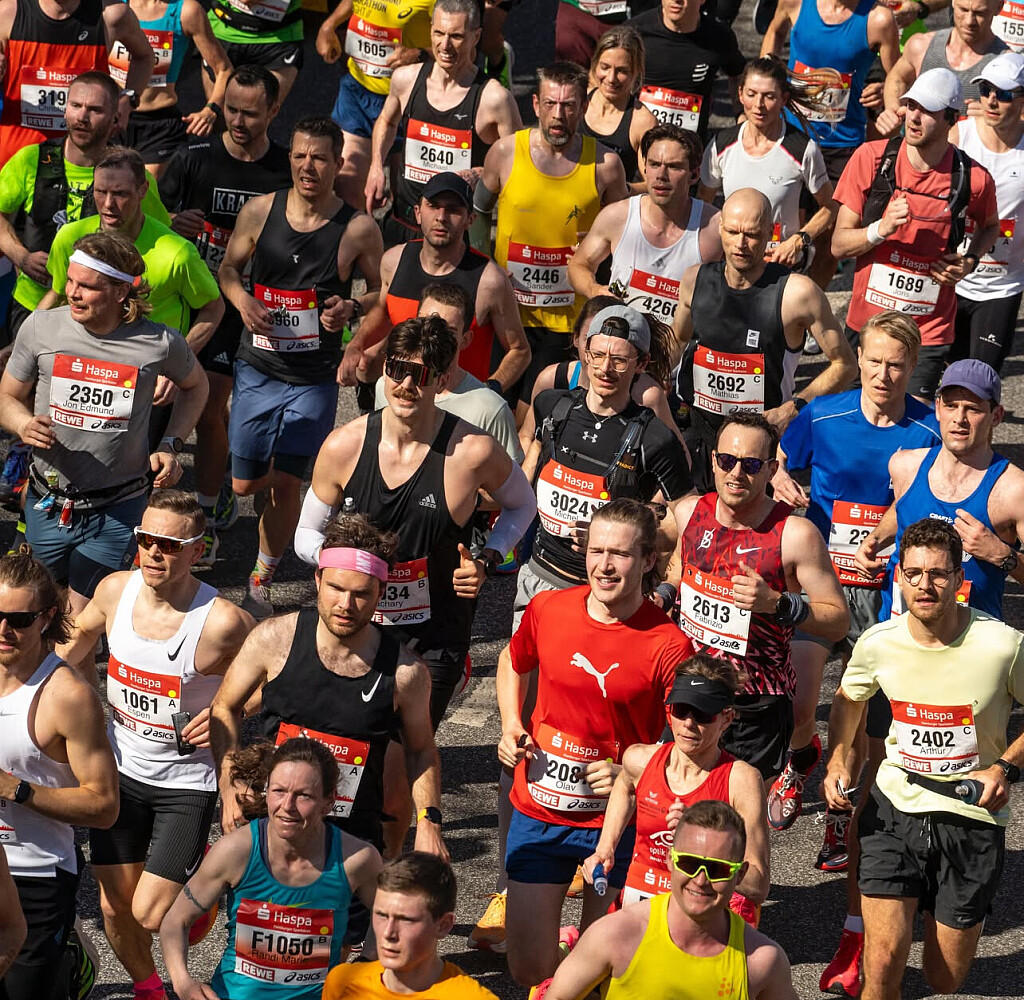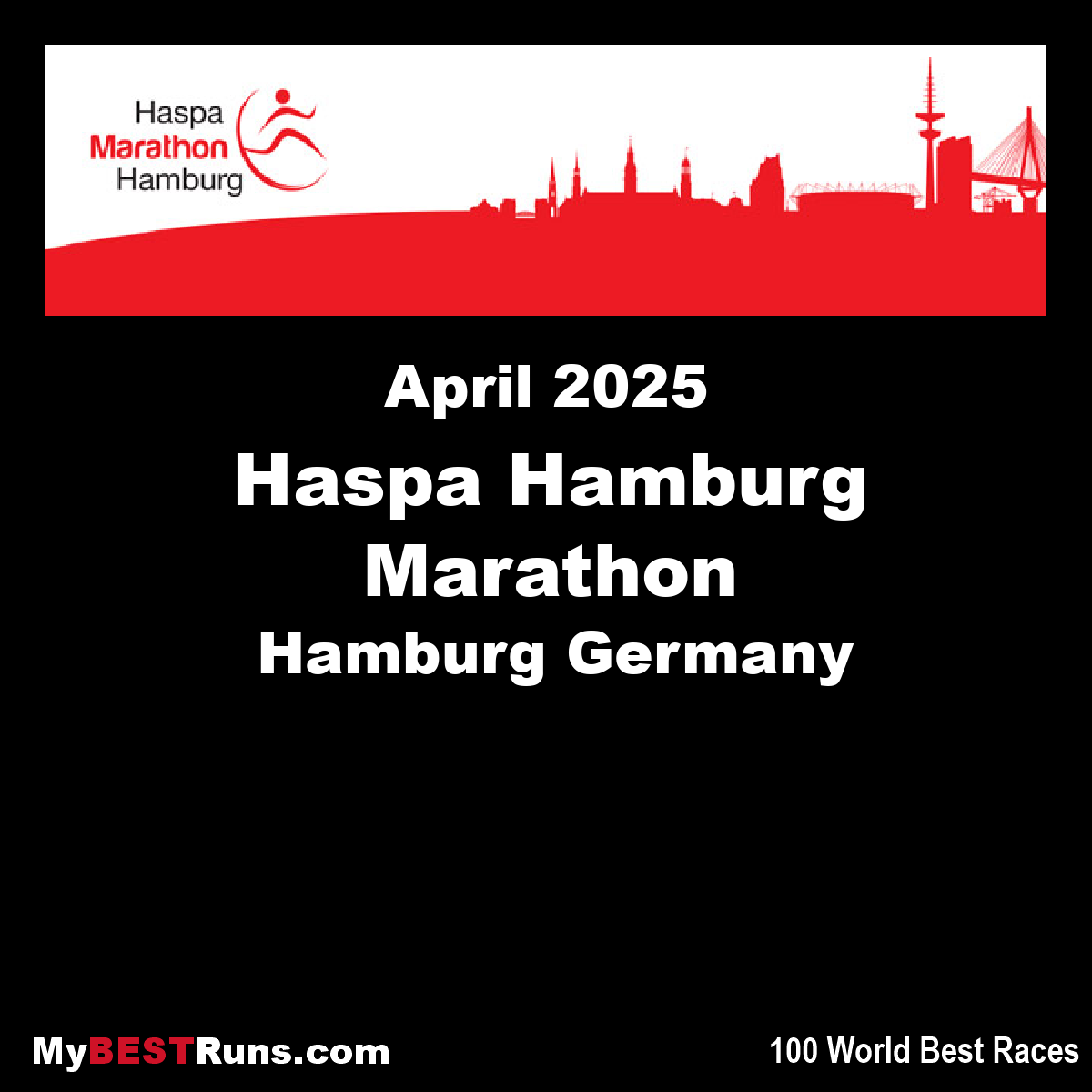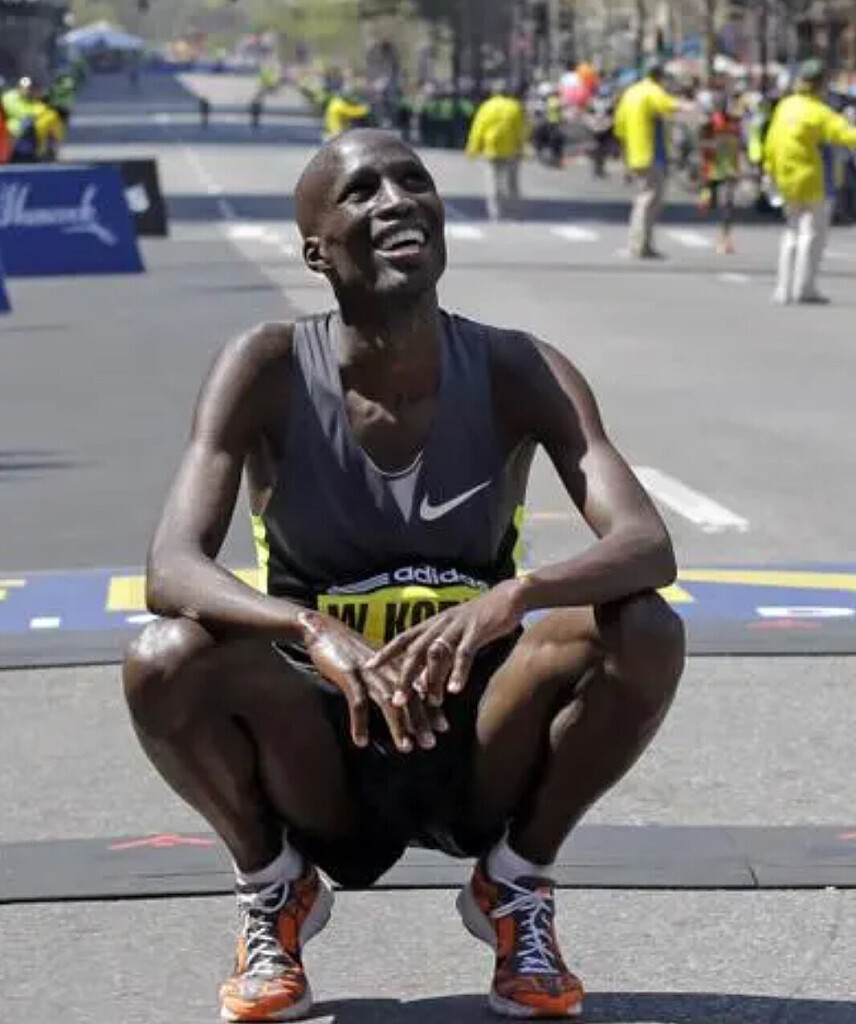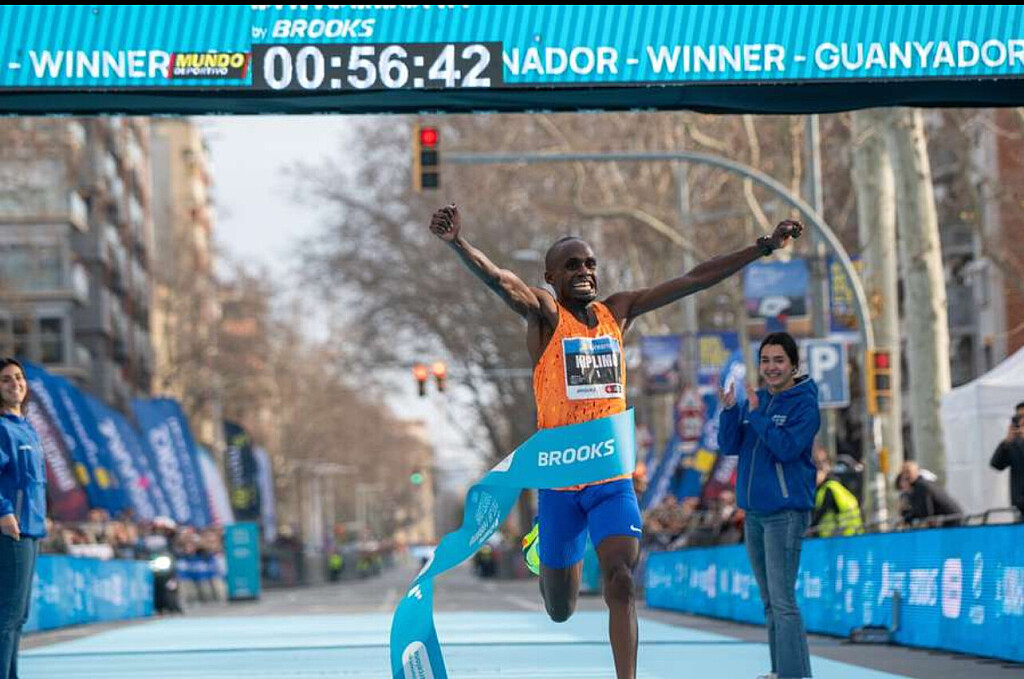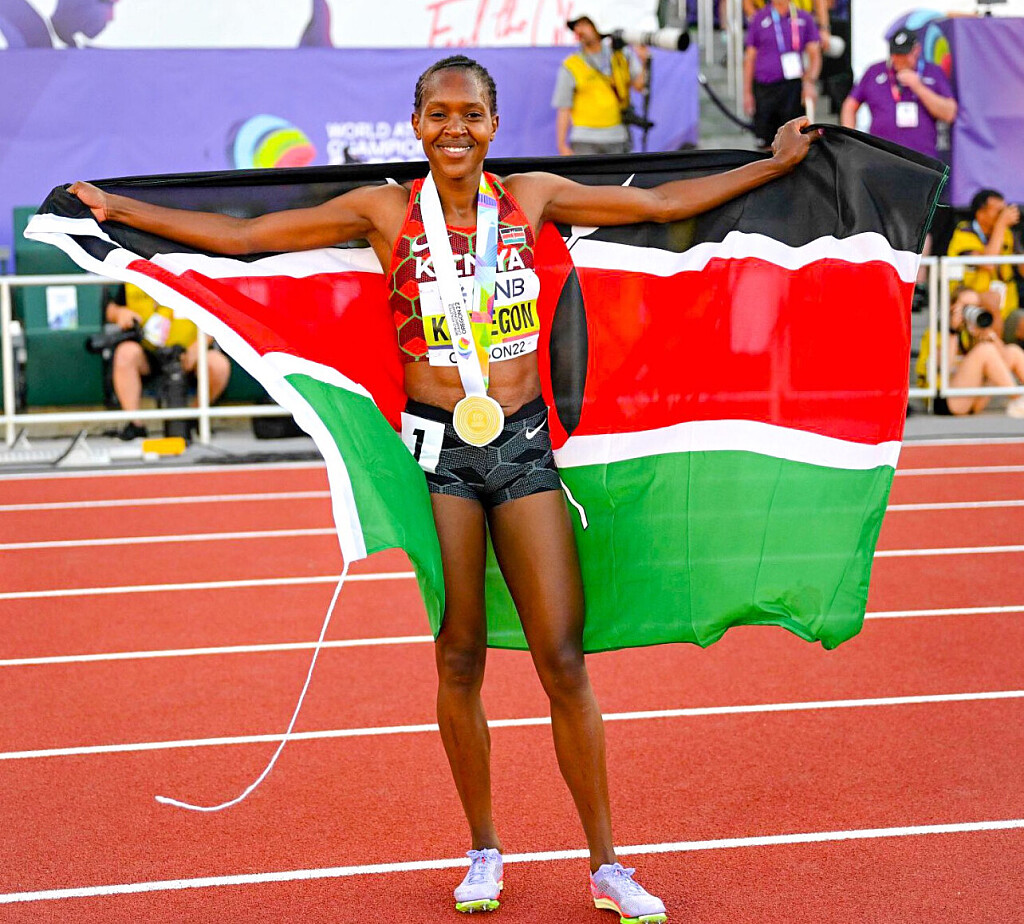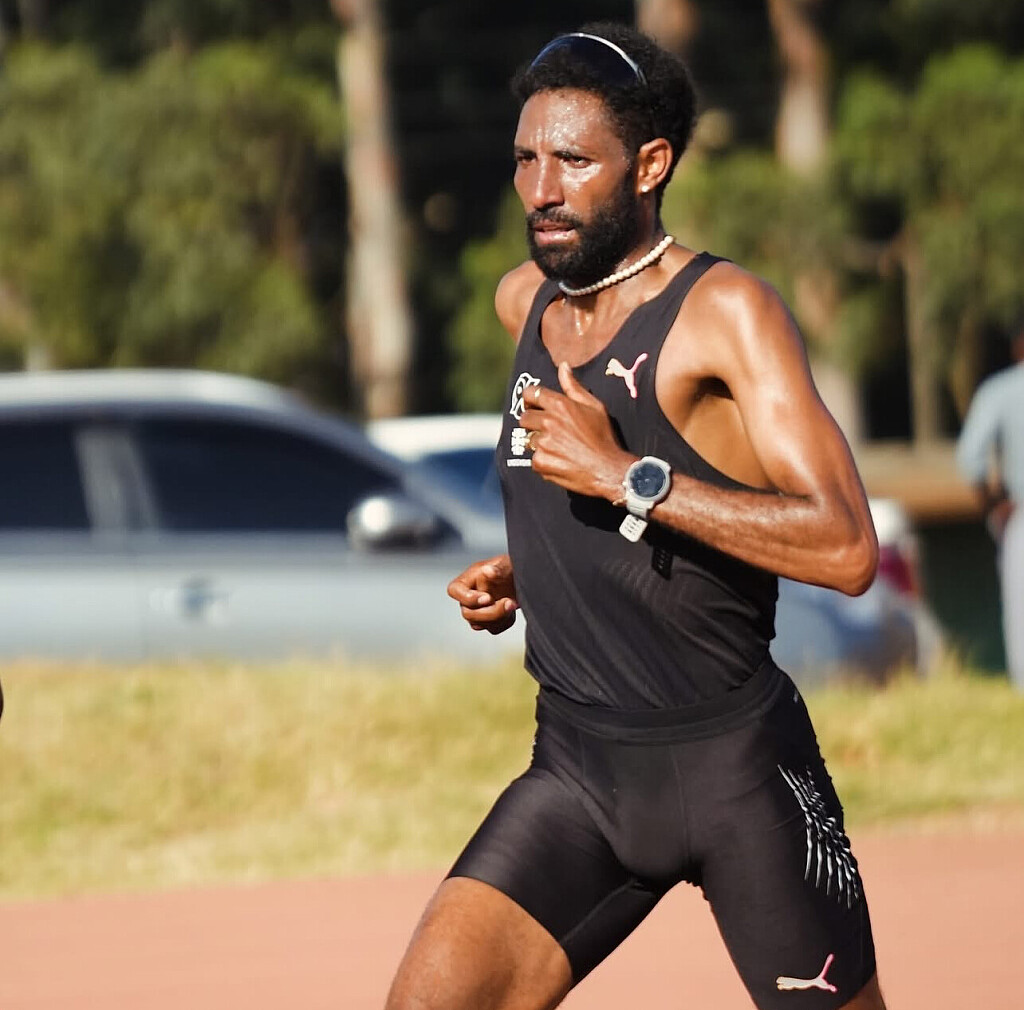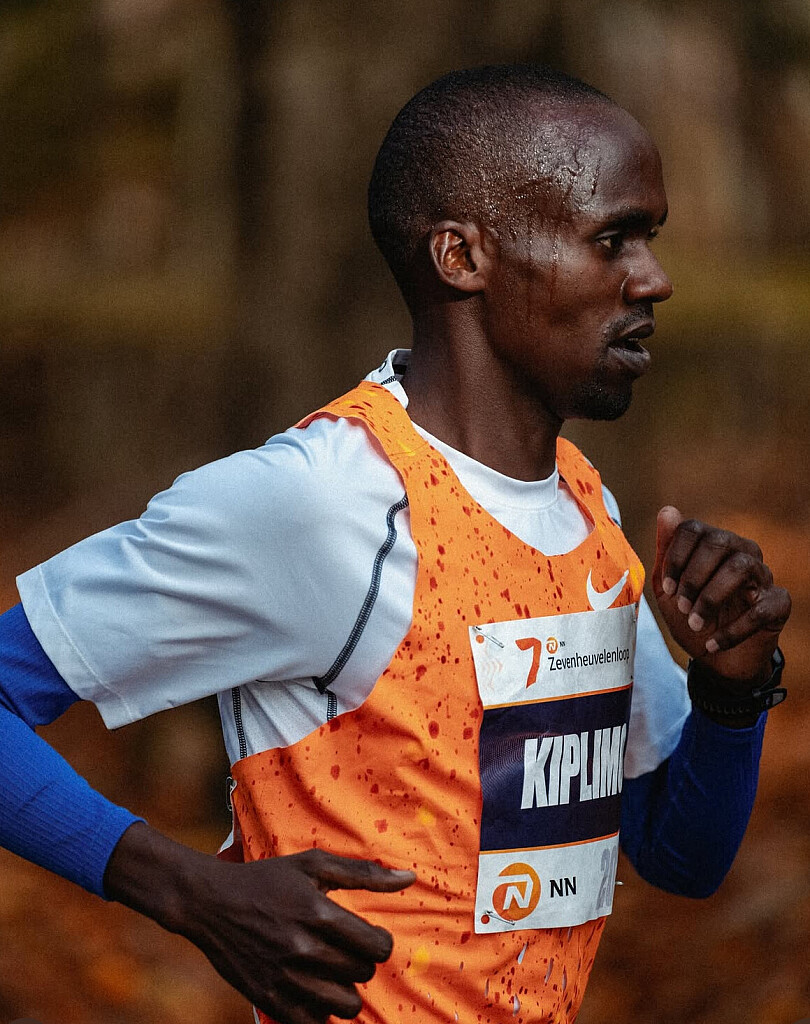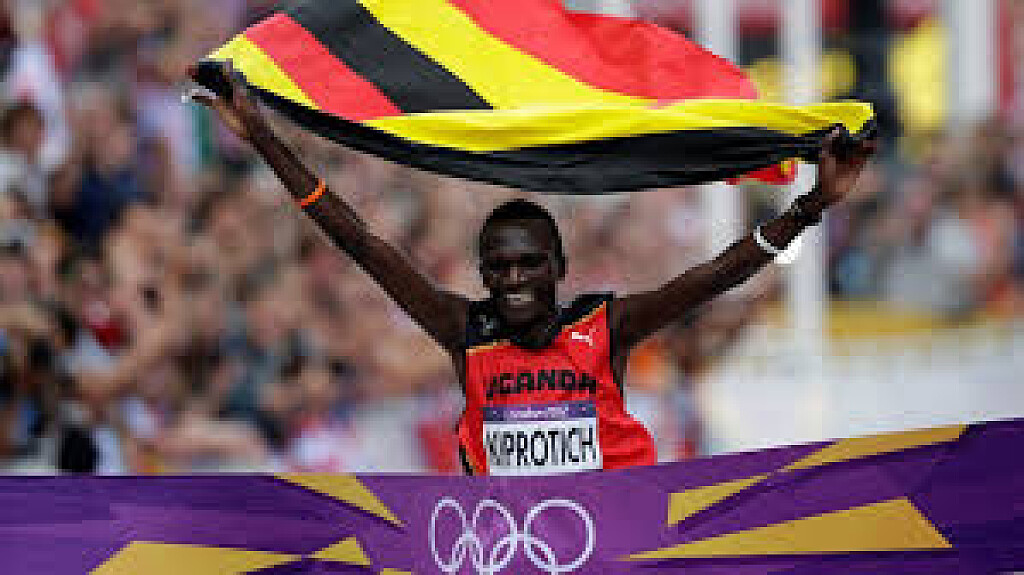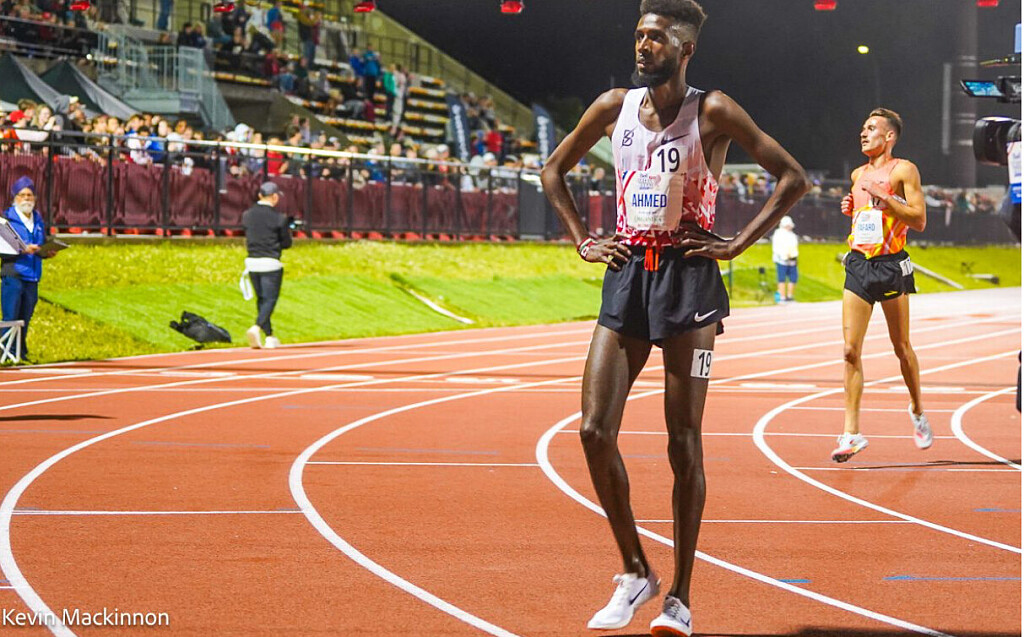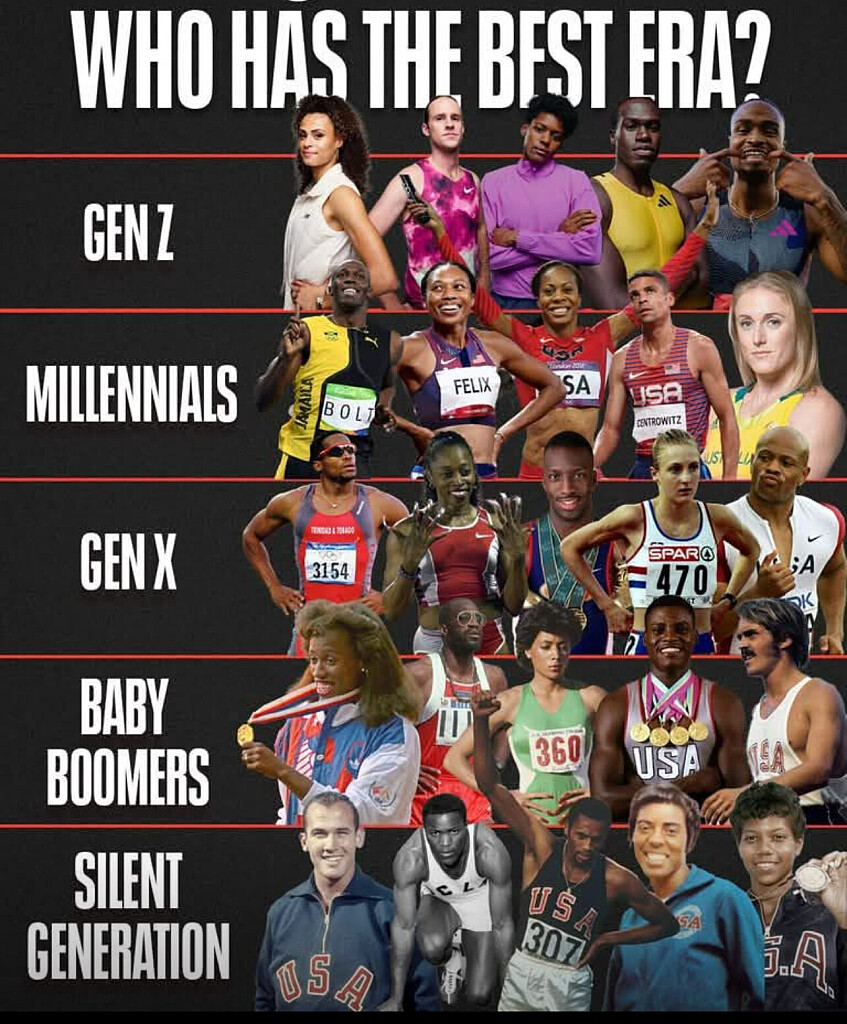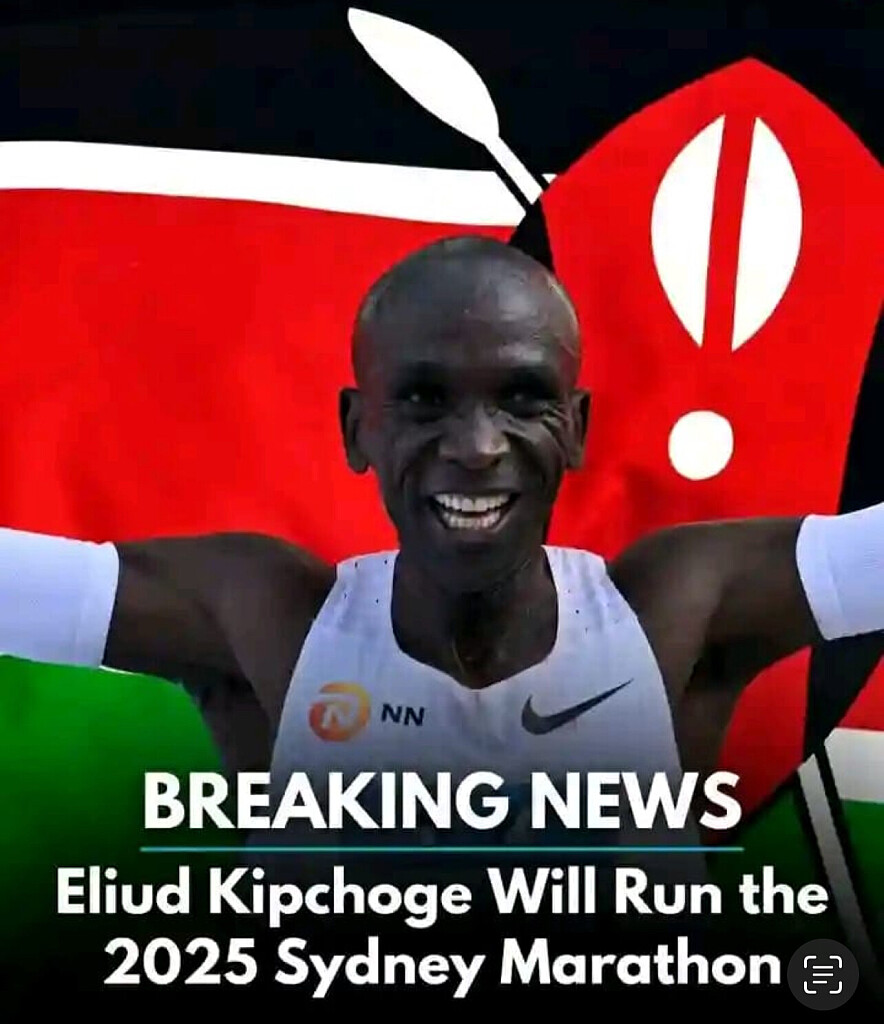Running News Daily
Running News Daily is edited by Bob Anderson. Send your news items to bob@mybestruns.com Advertising opportunities available. Train the Kenyan Way at KATA Kenya and Portugal owned and operated by Bob Anderson. Be sure to catch our movie A Long Run the movie KATA Running Camps and KATA Potato Farms - 31 now open in Kenya! https://kata.ke/
Index to Daily Posts · Sign Up For Updates · Run The World Feed
Articles tagged #Eliud Kipchoge
Today's Running News
How One Tribe in Kenya Came to Dominate Global Distance Running
There may be no statistic in all of sports more astonishing than this one.
The Kalenjin, an ethnic group—often referred to as a tribe—in Kenya, make up about 13.4% of the country’s population, roughly 6.3 million people. On a global scale, they represent about one out of every 1,000 people worldwide.
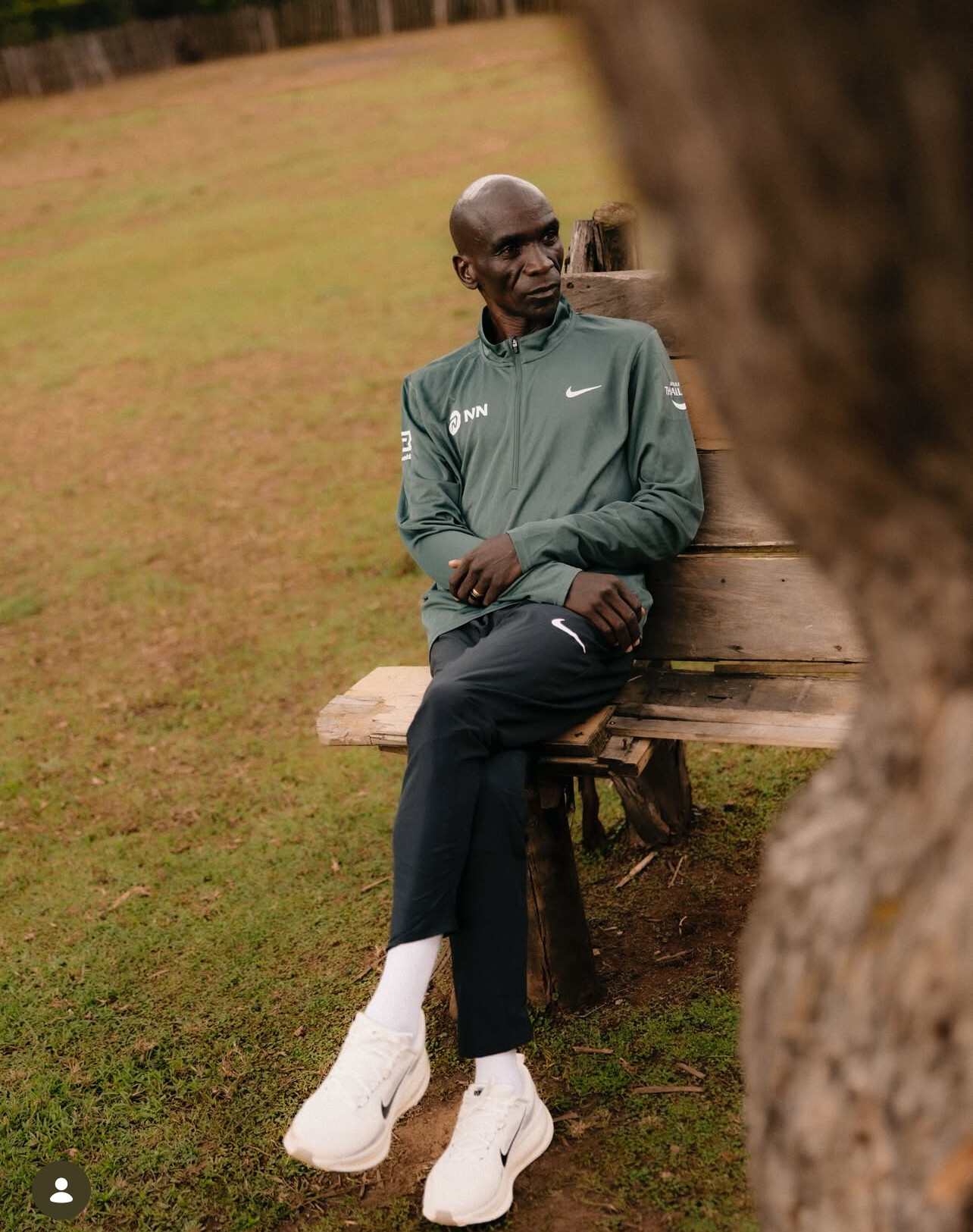
Yet this small community has produced an overwhelming share of the world’s greatest distance runners.

Their dominance has been so complete, and so sustained, that it has been described as “the greatest geographical concentration of achievement in the annals of sport.” And it is hard to argue otherwise.
From the Rift Valley to the World Stage
Most elite Kalenjin runners come from Kenya’s Rift Valley region, particularly areas such as Nandi, Elgeyo-Marakwet, Uasin Gishu, and Baringo, where elevations range from 2,000 to 2,400 meters (6,500–8,000 feet) above sea level.
Here, running is not a hobby—it is part of daily life.
Children grow up walking and running long distances, often on dirt roads. Training at altitude is the norm, not a strategy. And success stories are local and visible, creating a powerful cycle of belief and opportunity.
Champions Across Eras
The Kalenjin impact on global athletics stretches back more than half a century.
Kipchoge Keino, one of the pioneers of Kenyan distance running, won Olympic gold in the 1500 meters at the 1968 Mexico City Games and the 3000-meter steeplechase in 1972, helping place Kenyan runners on the world map.
Since then, Kenyan athletes—many of them Kalenjin—have dominated:
• The 3000-meter steeplechase, winning Olympic gold in nearly every Games since 1968
• The 5,000 meters and 10,000 meters at World Championships
• The marathon, particularly at the World Marathon Majors
Masters of the Marathon
Perhaps nowhere is this dominance more visible than in the marathon.
Kalenjin runners have repeatedly won and controlled races such as:
• Berlin Marathon
• London Marathon
• Chicago Marathon
• Boston Marathon
• New York City Marathon
These victories are not isolated moments—they are part of a long, uninterrupted pattern.
At the center of it all stands Eliud Kipchoge, widely regarded as the greatest marathon runner in history. A member of the Kalenjin community, Kipchoge has:
• Won two Olympic marathon gold medals (2016, 2021)
• Set a world record of 2:01:09 at the Berlin Marathon
• Become the first human to run 26.2 miles in under two hours
He is not an exception. He is the most refined expression of a system that has been producing champions for generations.
Why This One Tribe?
No single explanation tells the whole story, but several factors come together in the Rift Valley:
• Geography: High altitude, rolling terrain, and ideal training conditions
• Physiology: Exceptional running economy and efficient biomechanics
• Culture: Running as a respected path to success and opportunity
• Environment: Group training, competition, and long-term development from a young age
Together, these elements have created something unmatched in sport.
A Phenomenon Without Parallel
Great athletes come from everywhere. But nowhere else has such a small, specific populationproduced such sustained global dominance across events, generations, and decades.
Not sprinting.
Not swimming.
Not cycling.
Not soccer.
Only distance running.
From the highland paths of the Rift Valley to Olympic podiums and marathon finish lines around the world, the story of the Kalenjin remains one of the most extraordinary achievements in human performance.
And it is still being written.
by Boris Baron
Login to leave a comment
Eliud Kipchoge Finishes the 2025 New York City Marathon in 2:14:36
Eliud Kipchoge, the greatest marathoner of all time, took on the challenging streets of New York City for the first time — and finished strong in 2:14:36. Known for his smooth efficiency and calm composure, Kipchoge tackled the hilly and tactical course with trademark focus, staying consistent through the early stages before the pace slowed slightly in the latter half.
His early splits showed controlled aggression: 15:12 at 5K, 30:25 at 10K, and 1:05:20 at halfway. Through 30K, he was still moving well in 1:33:02, but the final 10 kilometers through Central Park tested even the marathon master, bringing him home in 2:14:36.
Though not among his fastest times, this was a run filled with purpose and legacy. For Kipchoge, New York was never about breaking records — it was about embracing one of the sport’s most iconic stages and completing his journey across all six World Marathon Majors.
At 40 years old, the Kenyan legend has now conquered every major marathon city, further solidifying his place as the face of modern distance running. "Many at age 40 have run much faster but this is still very respectable," says KATA founder Bob Anderson.
by Boris Baron
Login to leave a comment
Benson Kipruto Wins a Thrilling 2025 New York City Marathon as Kipchoge and Bekele Fade
The streets of New York witnessed one of the most dramatic finishes in recent marathon history as Benson Kipruto of Kenya edged compatriot Alexander Mutiso by fractions of a second to win the 2025 TCS New York City Marathon. Both men were clocked at 2:08:09, with Kipruto leaning ahead in the final meters of Central Park to claim the title.
The victory marked a triumphant return to the top for Kipruto, who has previously won the Boston and Chicago Marathons. On a day when tactics mattered as much as fitness, he delivered a perfectly timed surge to secure the crown.
Alexander Mutiso finished a close second in 2:08:09, just 0.16 seconds behind, while 2021 New York champion Albert Korir completed the Kenyan sweep in third with a time of 2:08:57. Great Britain’s Patrick Dever ran a superb debut marathon to finish fourth in 2:08:58, and Swiss athlete Matthias Kyburz crossed the line fifth in 2:09:55.
All eyes were on Eliud Kipchoge, the two-time Olympic champion and marathon world record holder, making his long-awaited debut in New York. The legendary Kenyan started conservatively and remained in the lead pack through halfway, but the relentless climbs and bridges of the course eventually took their toll. Kipchoge finished 17th in 2:14:36, smiling as he crossed the line, suggesting this could be his final appearance at a World Marathon Major.
Ethiopian great Kenenisa Bekele also started among the favorites but faded after the 30-kilometer mark and did not finish the race. His withdrawal, along with Kipchoge’s struggles, highlighted the unique difficulty of New York’s course—one that tests strategy and strength more than sheer speed.
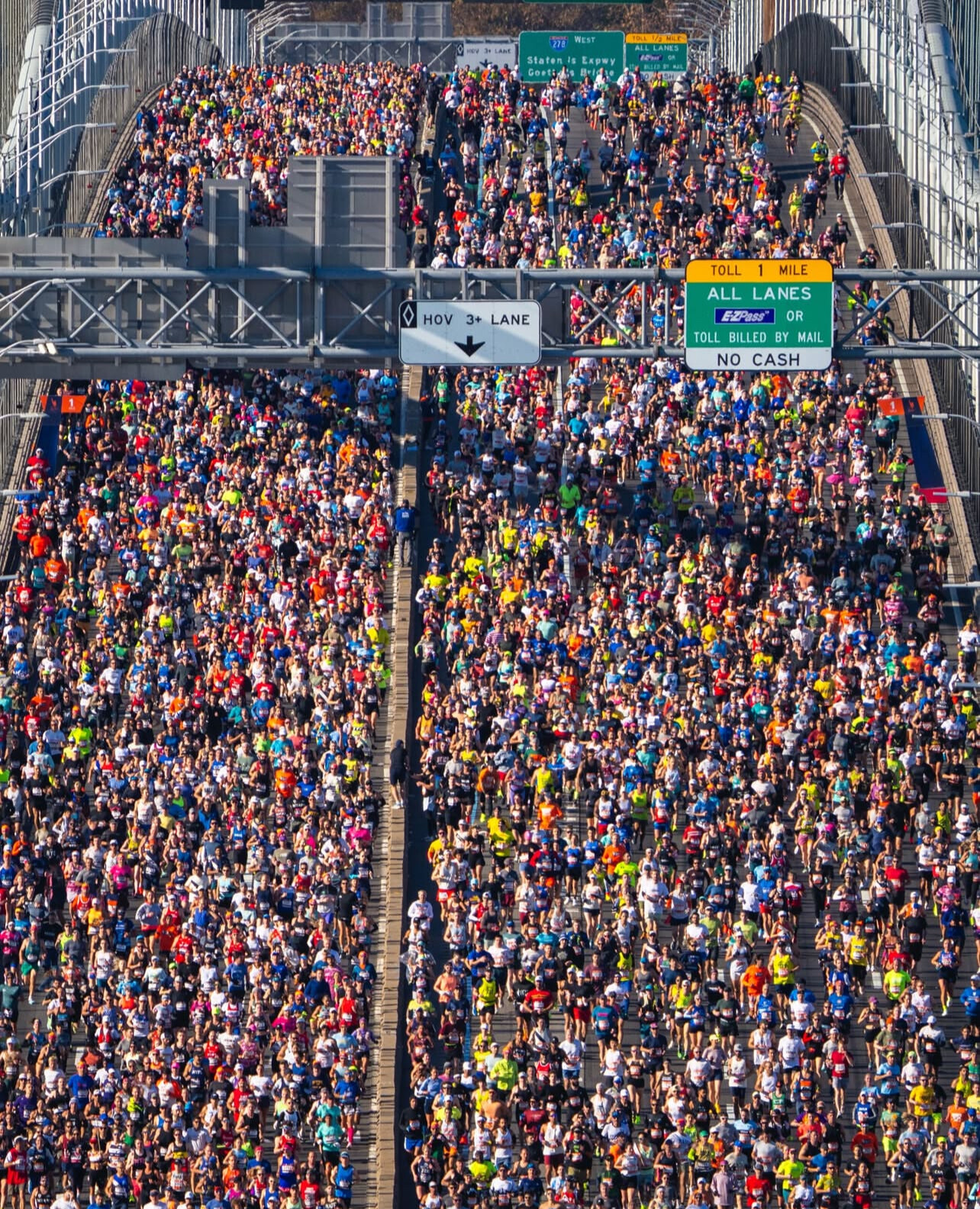
Despite the absence of a record-breaking time, the 2025 edition of the TCS New York City Marathon delivered unforgettable drama. The Kenyan trio’s podium sweep reaffirmed the country’s dominance in distance running, while thousands of runners from across the globe once again turned the streets of the five boroughs into a festival of endurance and inspiration.
Top 10 Men’s Results – 2025 TCS New York City Marathon:
1. Benson Kipruto (Kenya) – 2:08:09
2. Alexander Mutiso (Kenya) – 2:08:09
3. Albert Korir (Kenya) – 2:08:57
4. Patrick Dever (Great Britain) – 2:08:58
5. Matthias Kyburz (Switzerland) – 2:09:55
6. Joel Reichow (United States) – 2:09:56
7. Charles Hicks (United States) – 2:09:59
8. Sondre Moen (Norway) – 2:10:15
9. Tsegay Weldlibanos (Eritrea) – 2:10:36
10. Joe Klecker (United States) – 2:10:37
Eliud Kipchoge finished 17th in 2:14:36.
Kenenisa Bekele did not finish (DNF).
by Boris Baron
Login to leave a comment
Eliud Kipchoge’s Final Quest: Chasing Meaning, Not Medals in New York
When the sun rises over Staten Island this Sunday, the world will witness something special — Eliud Kipchoge, the greatest marathoner of all time, running the TCS New York City Marathon for the first time. At 40, the Kenyan legend isn’t chasing records. He’s chasing completeness — the final chapter of a career that redefined endurance and possibility.
With two Olympic golds, 11 major marathon victories, and the historic sub-two-hour run, Kipchoge already stands alone. Yet New York remains the one missing jewel in his Abbott World Marathon Majors crown. “If I don’t complete all of them,” he says, “I feel like I am halfway. My legacy will be complete when I have a sixth star.”

But New York is no Berlin. Its hills and bridges test rhythm and resolve. Kipchoge faces a tough field, led by his former training partner and defending champion Abdi Nageeye, along with Benson Kipruto, Alexander Mutiso, and Ethiopia’s Deresa Geleta. Nageeye, coming off a 2:04:20 in London, aims to defend his title and disrupt the legend’s farewell.

Still, for Kipchoge, this race is about purpose, not podiums. “My happiness is to see people getting interested in what I’m selling,” he says. “I’m selling the sport as a profession.” His mission now is to inspire — through running, mentorship, and his wellness platform Kotcha, which blends training, nutrition, and education. “We’re bringing knowledge to people’s fingertips,” he explains.
To him, running is a universal language. “All human beings are beautiful,” Kipchoge says. “The problem is ourselves — not using our knowledge.”
As 50,000 runners take on the five boroughs, Kipchoge’s presence turns the marathon into something larger — a meditation on effort, purpose, and legacy. His calm smile and relentless discipline remind the world that greatness isn’t about medals, but meaning.
On Sunday, as he strides through Central Park, Kipchoge won’t just be chasing a finish line. He’ll be closing a circle — running not for glory, but for the joy of fulfillment.
by Robert Kibet for My Best Runs
Login to leave a comment
Eliud Kipchoge Chases One Final Milestone as He Makes His New York City Marathon Debut This Sunday
One of the most anticipated starts in marathon history arrives this Sunday as Eliud Kipchoge, the two-time Olympic marathon champion and widely regarded as the greatest marathoner of all time, makes his debut at the TCS New York City Marathon (NYC Marathon).
The Big Picture
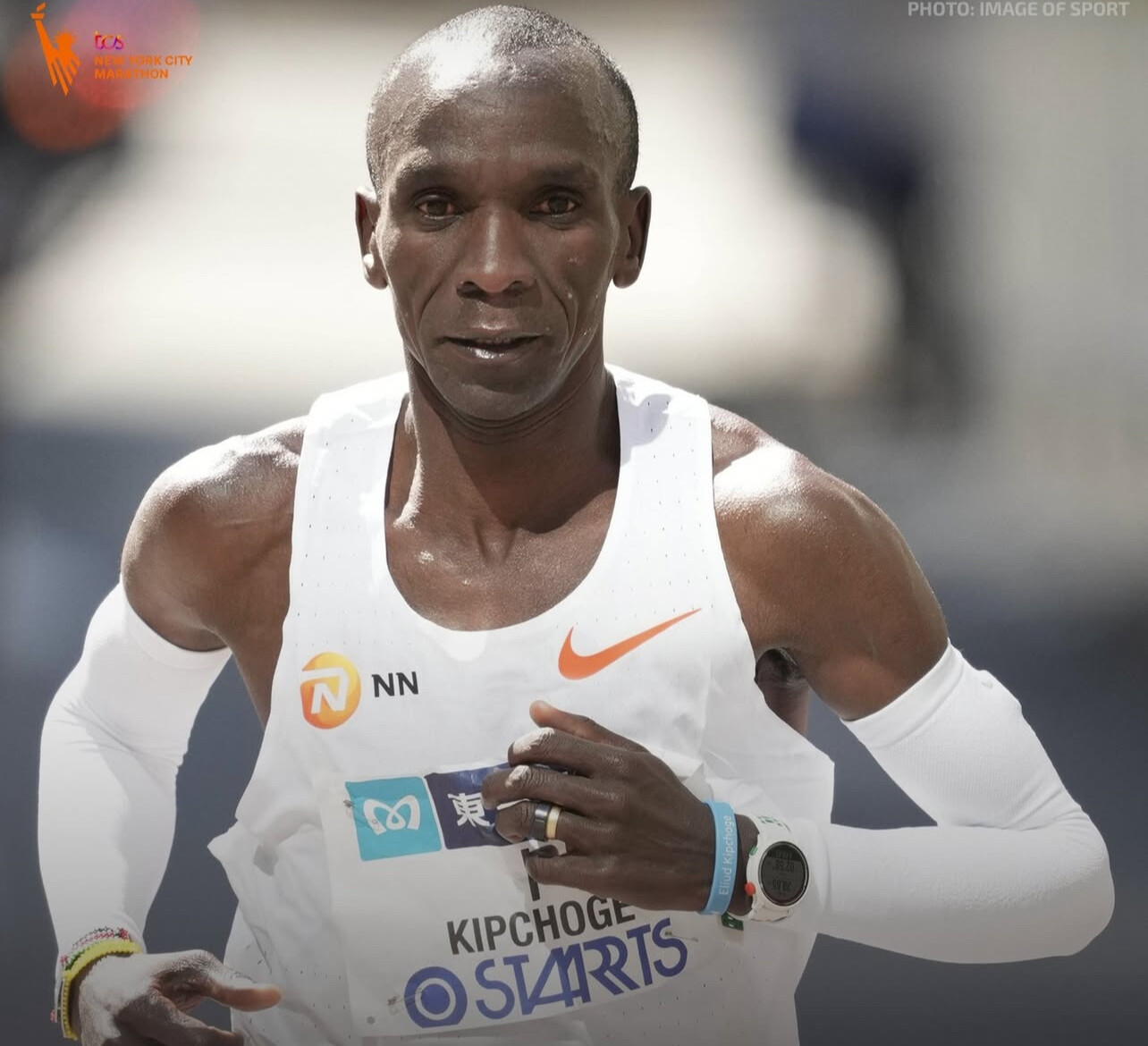
At 40 years old, Kipchoge has already built an extraordinary legacy: Olympic gold medals in 2016 (Rio) and 2020 (Tokyo), a world-record marathon time of 2:01:09 in Berlin 2022, and a historic sub-2-hour marathon effort in Vienna 2019 (1:59:40 – though not ratified).
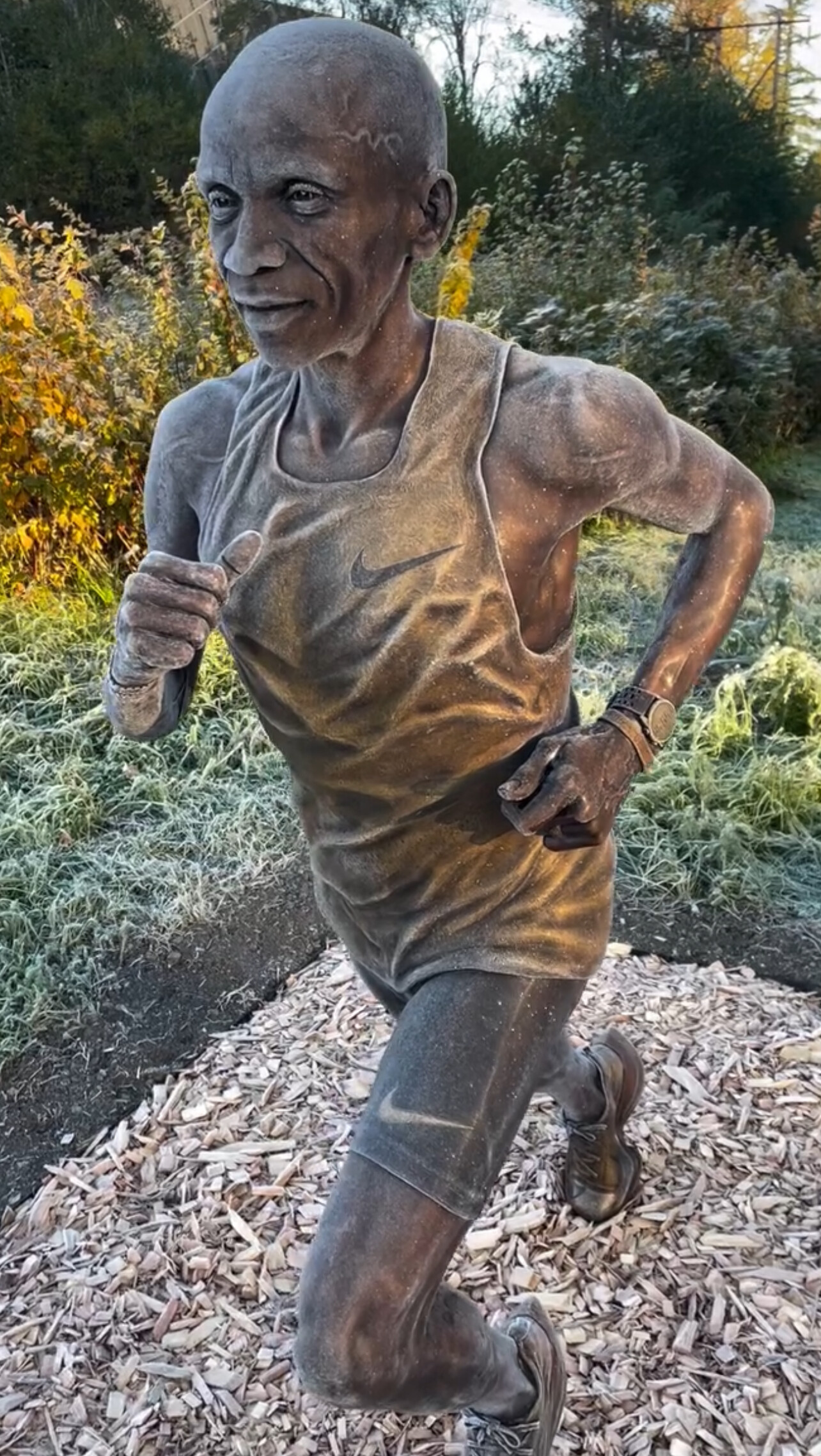
Yet until now, the NYC Marathon has been the elusive piece of the puzzle. By lining up this Sunday, Kipchoge will complete his set of the major Abbott World Marathon Majors (AWMM) if he crosses the finish line—it’s the only major marathon he has yet to run.
Why It Matters
• Legacy: Finishing NYC would give Kipchoge the coveted “six-star” AWMM medal for running all six of the premier majors.
• New challenge: The NYC course is markedly different from the flat, fast courses of Berlin or London. It’s undulating, uses bridges, and traverses the five boroughs—a true test of both physical and mental strength.
• Age and motivation: While Kipchoge remains in top shape, he acknowledges the impact of time and says this race is as much about meaning and experience as it is about finishing fast.
The Competition & Conditions
Kipchoge enters a stacked elite field. He’ll face defending champion Abdi Nageeye of the Netherlands, former NYC winners Evans Chebet and Albert Korir, and several rising stars with sub-2:04 personal bests.
What to Watch
• Will Kipchoge go for a bold win or focus on completing this final major?
• How will the unique challenges of NYC—bridges, hills, and roaring crowds—affect his pacing and strategy?
• Could this race mark the close of his competitive marathon career—or the beginning of a new chapter as ambassador and mentor?
Sunday’s race isn’t just another marathon for Eliud Kipchoge. It’s a long-awaited chapter in a legendary career—one that may see him conquer the final major, inspire millions, and reaffirm his enduring message: No human is limited.
by Boris Baron
Login to leave a comment
Kenenisa Bekele Joins 2025 New York City Marathon Elite Field
Ethiopian legend Kenenisa Bekele, the third-fastest marathoner in history with a 2:01:41 personal best from Berlin 2019, has officially been added to the 2025 TCS New York City Marathon elite men’s field — setting up yet another thrilling clash with Eliud Kipchoge.
Bekele, now 43, withdrew from April’s London Marathon due to recurring injuries that disrupted his buildup. His most recent marathon finish came at the Paris Olympic Marathon, where he placed 39th in 2:12:24. Despite the setback, Bekele’s experience and resilience continue to make him one of the sport’s most compelling figures.

This year’s New York City Marathon will mark Bekele’s sixth career race against Kipchoge, the reigning Olympic champion and former world record holder. Bekele’s only “victory” in that rivalry came at the Paris Olympics, when Kipchoge dropped out mid-race.

Bekele’s addition brings new intrigue to a field already rich in talent and storylines. While New York’s undulating course rarely produces record times, it remains one of the most prestigious and unpredictable races on the global marathon calendar — a true test of strategy and mental strength.
Notably absent from the 2025 lineup is Evans Chebet, the 2022 NYC Marathon champion and last year’s runner-up. Chebet has withdrawn from this year’s race after failing to finish at the Boston Marathon in April.
As the countdown begins, all eyes turn to Central Park, where two of the greatest marathoners of all time — Bekele and Kipchoge — are set to renew their rivalry on one of the world’s toughest stages.
Will Bekele’s comeback write a new chapter in marathon history, or will Kipchoge’s consistency once again define the day? On November 2, New York will have its answer.
by Boris Baron
Login to leave a comment
Running Through The City Of Dreams New York Marathon 2025
On Sunday, November 2, 2025, the five-borough spectacle of the New York City Marathon will unfold once again, offering more than 50,000 runners the chance to push 26.2 miles through the heart of New York. From the cannon blast on Staten Island to the triumphant finish in Central Park, this is a race that marries endurance, emotion and urban drama.
Kipchoge and Hassan Headline an Extraordinary Field
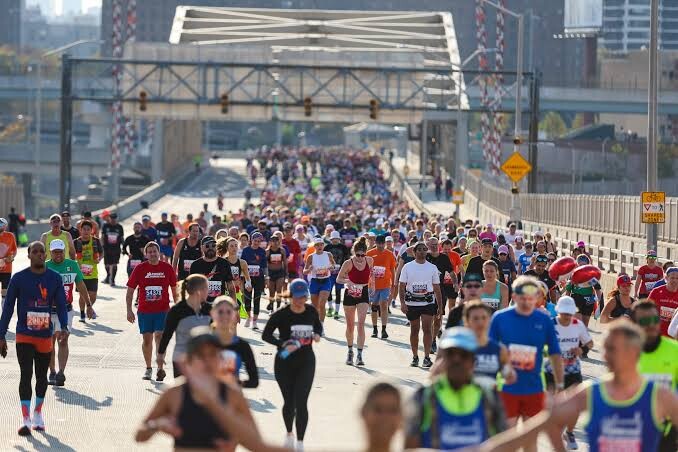
The biggest storyline heading into this year’s race is the presence of Eliud Kipchoge, the greatest marathoner in history, and Sifan Hassan, the double Olympic champion who stunned the world with marathon victories in both London and Chicago. For Kipchoge, New York completes his journey through all six Abbott World Marathon Majors — a crown that has eluded him until now.
Hassan, meanwhile, returns to the marathon distance after a string of world-class performances on both track and road, her fearless racing style perfectly suited to the unpredictable rhythm of New York’s streets.
They’ll face an elite field stacked with world-class names, including Benson Kipruto of Kenya (2:02:16 PB), Evans Chebet (two-time Boston champion, 2:03:00 PB), and defending champion Tamirat Tolaof Ethiopia (course record holder at 2:04:58). The women’s field is equally star-studded, featuring 2022 champion Sharon Lokedi, Tokyo winner Rosemary Wanjiru, and a host of East African contenders ready to test Hassan on one of the sport’s toughest stages.
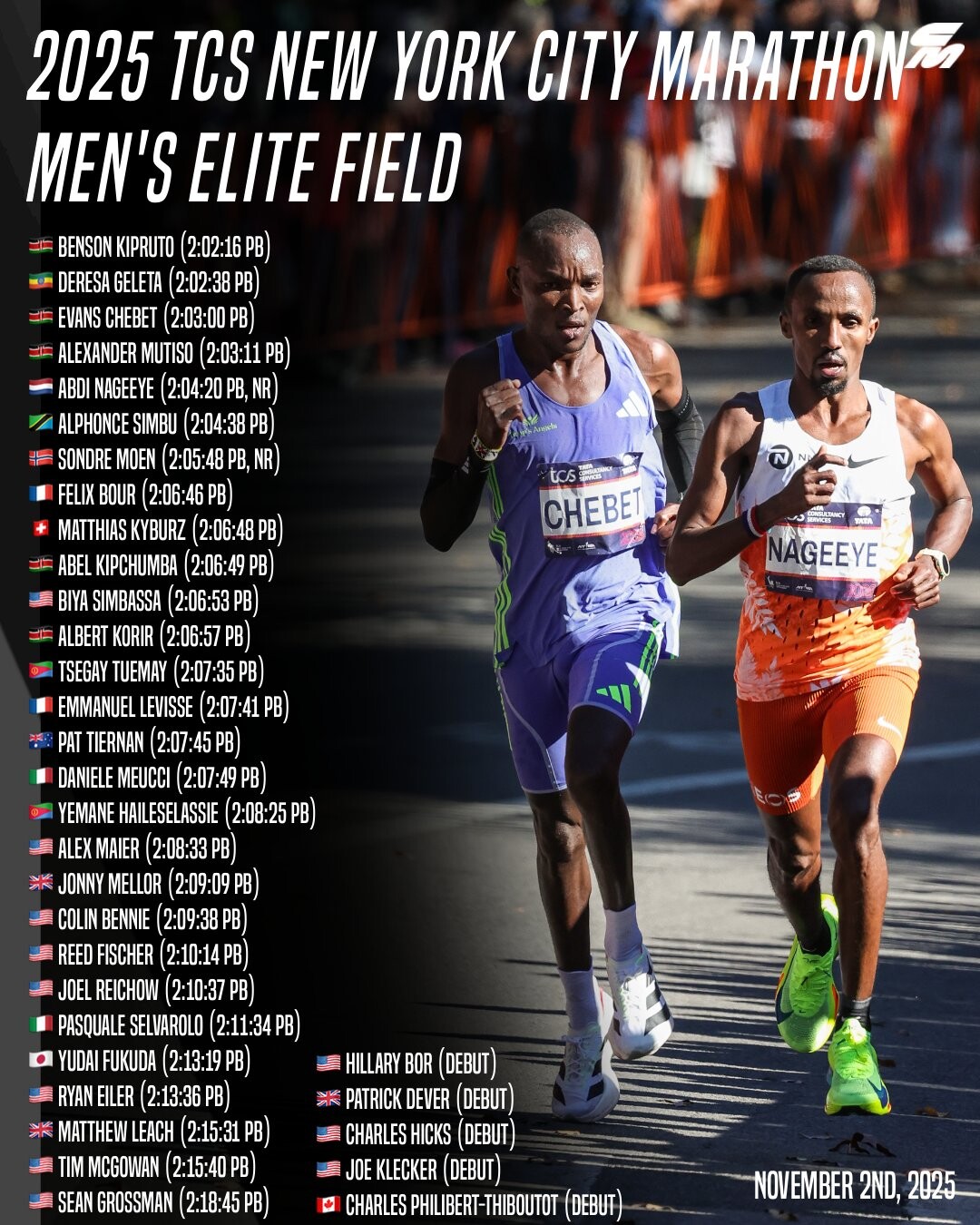
Among the American hopefuls, Emily Sisson, the U.S. record holder in the marathon, headlines the women’s field and will make her New York debut. On the men’s side, Biya Simbassa leads the U.S. charge, joined by a deep domestic field racing for top-American honors and prize bonuses.
Course Records
• Men: 2:04:58 — Tamirat Tola (ETH), 2023

• Women: 2:22:31 — Margaret Okayo (KEN), 2003
These records reflect both top-tier performance and the challenging character of the course — rather than flat, pacer-assisted routes that routinely see world-record times.
Prize Purse
The stakes are high. Open-division winners stand to earn $100,000, with descending prizes through 10th place. The event also offers a $50,000 bonus for a winner who breaks the standing course record, plus separate prize pools for top U.S. finishers and wheelchair divisions. With total payouts approaching nearly a million dollars, the financial motivation is real — even if the course isn’t built for world-record thrills.
Why a World Record Isn’t Realistic
Make no mistake: the New York course is legendary for its toughness rather than its speed. Runners face five major bridge crossings, a long ascent up the Queensboro Bridge around mile 15–16, variable terrain, sharp turns and a final push up Fifth Avenue into Central Park. Unlike flat, pacemaker-led courses such as Berlin or Chicago, NYC emphasises tactical racing, rivalries and finish-line theatre. The organising body eliminated dedicated elite pacemakers years ago in favour of pure head-to-head competition.
While pace groups may support recreational waves, elite winners will race without the type of structured pacemaking that enables constant sub-2:03 splits. In short: this is a championship-style contest, not a time-trial.
What Makes NYC Unique
• Cityscape & crowd noise: From Staten Island’s Verrazzano Narrows Bridge to Brooklyn’s vibrant neighborhoods, the Queensboro Bridge, Manhattan’s First Avenue and the final loop in Central Park, the scenery is unmatched.
• Massive scale but elite depth: The global field, the tens of thousands of recreational runners, the international media — the race’s atmosphere is unmatched in road-racing.
• Legacy of racing over timing: Past editions have celebrated bold attacks and dramatic finishes more than normally smooth pacing. That makes this one of the world’s most storied and unpredictable marathons.
What to Watch on November 2
• How Kipchoge adapts his disciplined, flat-course style to a course that demands rhythm changes, hills and surges.
• Whether Hassan will leverage her track speed and tenacity to counter a course that rewards strength and race-tactics.
• Whether Sisson (and other U.S. entrants) can navigate the final tougher miles to claim top-American status or even an open podium spot.
• The weather and pacing strategy: any wind across the bridges or mis-timed surge could decide the race more than early splits.
• Whether someone dares to go after Tola’s 2:04 : 58 mark — unlikely but possible under perfect conditions.
The 2025 New York City Marathon is more than a race. It is a testament to endurance, to the city that hosts it and to runners who thrive in challenge rather than comfort. Kipchoge and Hassan bring star power. The U.S. challengers bring ambition. And the 50,000+ starters bring stories.
Whether you’re chasing a personal best, seeking a finish-line moment or just watching from the sidelines, November 2 will be unforgettable. The bridges, the boroughs, the final climb into Central Park — the city will judge your resolve. And with no pacemakers to pull you through, this year’s finishers will know they earned every step with heart.
by Boris Baron
Login to leave a comment
TCS New York City Marathon
The first New York City Marathon, organized in 1970 by Fred Lebow and Vince Chiappetta, was held entirely in Central Park. Of 127 entrants, only 55 men finished; the sole female entrant dropped out due to illness. Winners were given inexpensive wristwatches and recycled baseball and bowling trophies. The entry fee was $1 and the total event budget...
more...Eliud Kipchoge Launches “Kotcha Run” — Bringing His Training Secrets to Runners Worldwide
Eliud Kipchoge, the marathon icon and global ambassador of distance running, has officially launched a new app — Kotcha Run — designed to share his legendary training methods with runners everywhere.
Developed in partnership with the NN Running Team, the app provides athletes of all levels with access to the very strategies, tools, and insights that have powered Kipchoge’s record-breaking career and two Olympic gold medals.
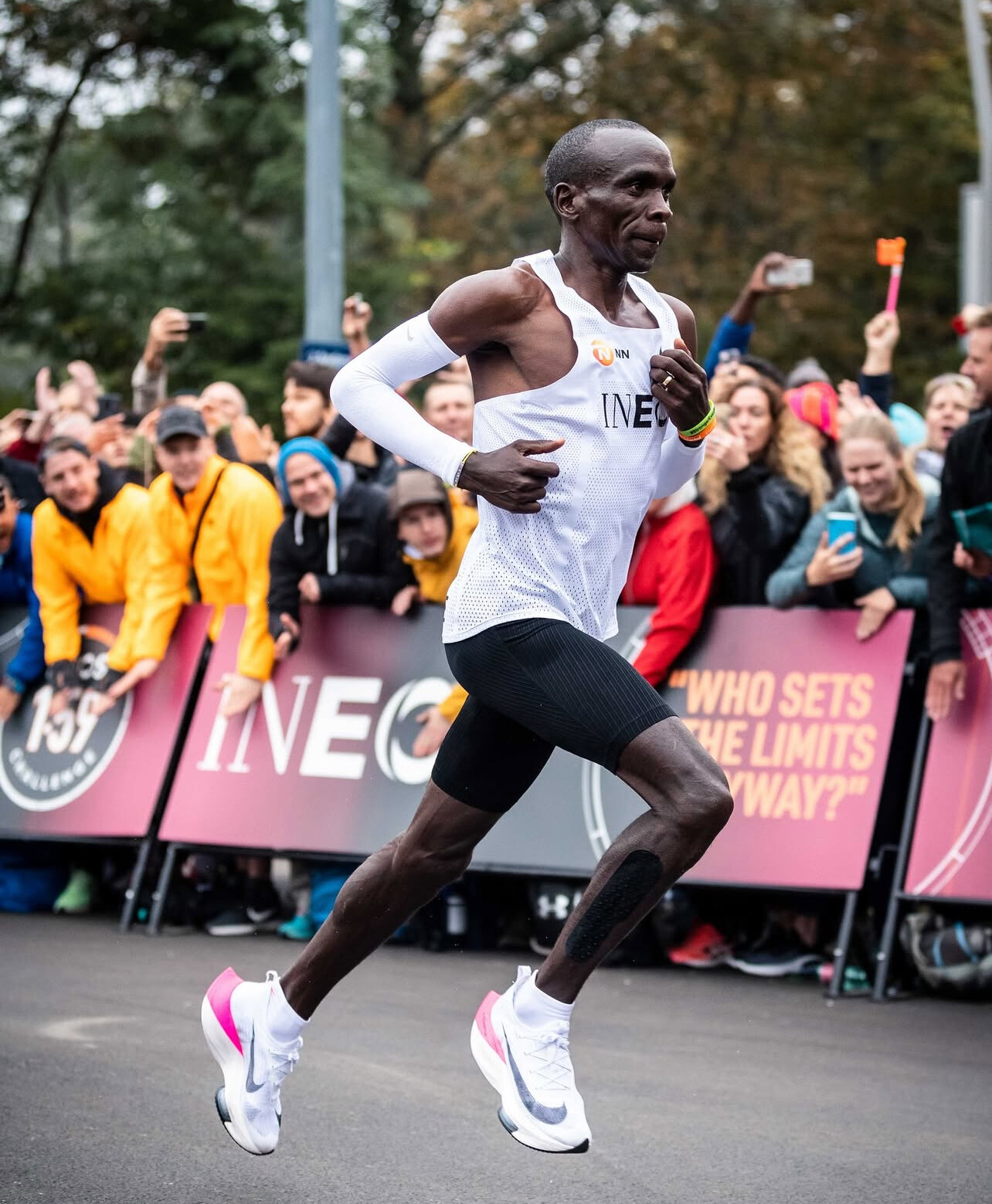
“People always ask me about my secret. Today, I’m offering a way to share it,” Kipchoge explained.
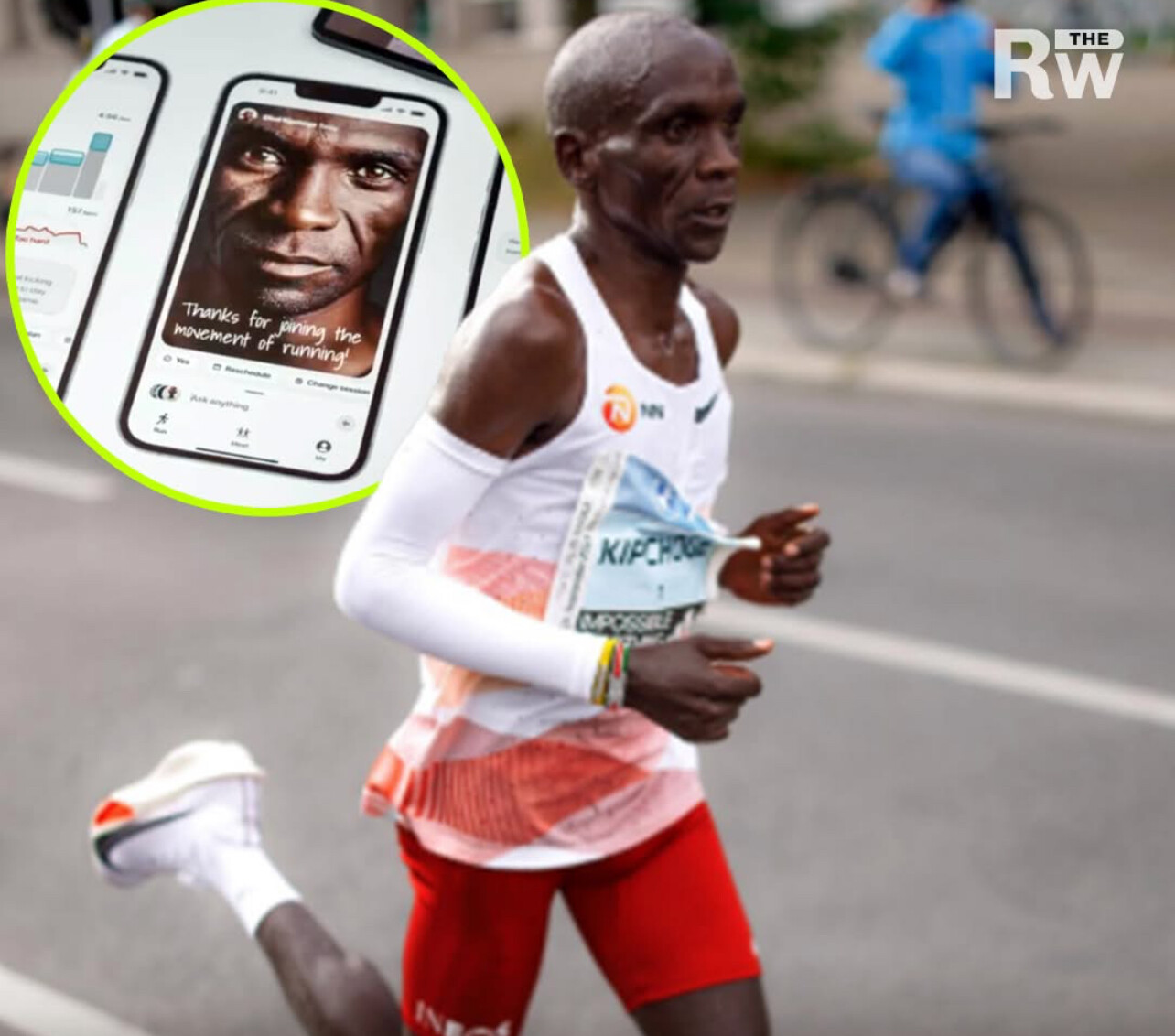
Through Kotcha Run, users can follow customized training programs, explore practical tips, and gain daily motivation directly inspired by the world’s greatest marathoner. Whether you’re preparing for your first 5K or your next marathon, the app helps runners apply Kipchoge’s disciplined yet philosophical approach — centered on patience, consistency, and belief.
Runners can now pre-register on the App Store to be among the first to experience it.
With this launch, Eliud Kipchoge once again proves his commitment to democratizing elite training, helping every runner — from beginner to professional — discover their own “No Human Is Limited” potential.
by Boris Baron
Login to leave a comment
Chasing New York: What to Watch at the 2025 TCS New York City Marathon
Every November, the streets of New York City transform. Five boroughs become a stage. Dreams meet asphalt.
The 2025 TCS New York City Marathon is fast approaching — and for runners, coaches, and fans alike, it remains one of the most electric events on the global running calendar.

The Big Picture
• Date: Sunday, November 2, 2025

• Field size: More than 55,000 runners representing over 130 nations will take on the 26.2-mile journey from Staten Island to Central Park.
• Defending champions: Abdi Nageeye (Netherlands) and Sheila Chepkirui (Kenya) return to defend their crowns.
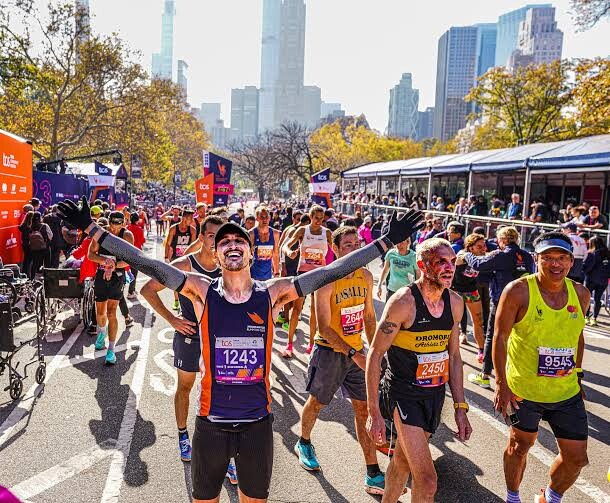
• Debut stars: Marathon legend Eliud Kipchoge and Olympic champion Sifan Hassan will make their long-awaited New York debuts — a storyline that has the running world buzzing.
• Classic route: The course again threads through all five boroughs, starting at Fort Wadsworth on Staten Island, crossing the Verrazzano-Narrows Bridge, and finishing in Central Park.
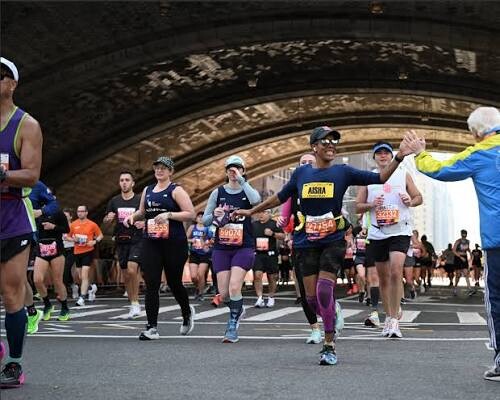
• Sustainability focus: Organizers at New York Road Runners (NYRR) continue to expand environmental initiatives, including recyclable aluminum water bottles and reduced single-use plastics.
Course Records
• Men’s Record: 2:04:58 – Tamirat Tola (2023)
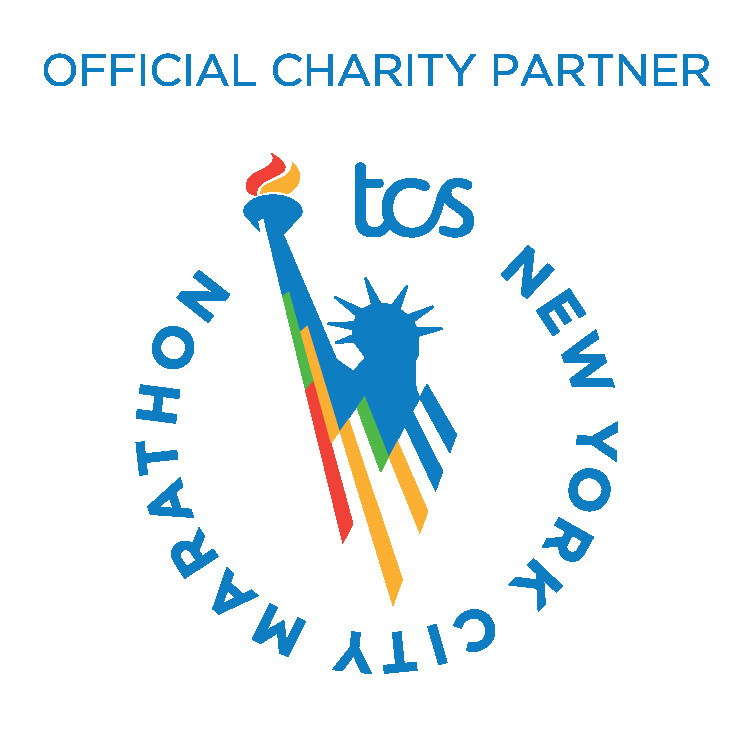
• Women’s Record: 2:22:31 – Margaret Okayo (2003)
Both marks remain tough to challenge on New York’s rolling, bridge-laden course — but with Kipchoge, Chebet, and Nageeye in the men’s field, and Hassan, Obiri, and Lokedi among the women, the potential for history is very real.
Men’s Elite Highlights
• Eliud Kipchoge (Kenya) – two-time Olympic champion, 2:01:09 PB, running NYC for the first time.
• Abdi Nageeye (Netherlands) – defending champion and Olympic silver medalist.
• Evans Chebet (Kenya) – two-time Boston Marathon champion.
• Benson Kipruto (Kenya) – Chicago 2022 winner.
• Albert Korir (Kenya) – former NYC champion.
• Joe Klecker (USA) – U.S. Olympian making his marathon debut.
• Hillary Bor (USA) – U.S. steeplechase champion transitioning to the roads.
• Charles Hicks (USA) – NCAA cross-country champion now turning professional.
Women’s Elite Highlights
• Sifan Hassan (Netherlands) – Olympic champion, winner in London (2023) and Chicago (2024).
• Hellen Obiri (Kenya) – Boston 2023 and NYC 2023 champion.
• Sharon Lokedi (Kenya) – NYC 2022 winner, still a local favorite.
• Sheila Chepkirui (Kenya) – defending NYC champion.
• Emily Sisson (USA) – current American marathon record holder (2:18:29).
• Molly Seidel (USA) – Tokyo Olympic bronze medalist.
• Fiona O’Keeffe (USA) – 2024 U.S. Olympic Trials marathon champion.
• Susanna Sullivan (USA) – Top-10 finisher at Boston 2023, consistent national contender.
This year’s field features 49 Olympians and Paralympians, nine past major marathon winners, and 16 medalists from Olympic or World Championship events — arguably the deepest lineup in New York history.
What Makes New York Unique (and Brutal)
• Rolling terrain and bridges: The Verrazzano, Pulaski, Queensboro, and Willis bridges each sap rhythm and energy.
• Crowd power: Two million spectators line the course, creating unmatched atmosphere — and volume.
• Late-season unpredictability: Weather can swing from cold drizzle to crisp fall perfection.
• Tactical racing: With its uneven pacing demands, NYC rewards strategy over pure speed.
Storylines to Watch
• Kipchoge’s debut: The marathon GOAT takes on the sport’s loudest stage. Can he master New York’s relentless hills and twists?
• Hassan’s bold quest: Coming off London and Chicago wins, can she complete the trifecta in her first NYC appearance?
• Lokedi vs. Obiri: The Kenyan duo continue their fierce rivalry on familiar ground.
• Nageeye’s defense: Last year’s champion faces his toughest test yet with Chebet and Kipruto in pursuit.
• American charge: Sisson, Seidel, O’Keeffe, and Sullivan lead the most complete U.S. women’s team in years — while Klecker and Bor look to ignite the next chapter for American men’s marathoning.
• Record watch: Tola’s 2:04:58 may finally be tested, and Okayo’s 22-year-old mark could fall if conditions align.
For Runners and Coaches
• Train the bridges. Practice long tempo runs that mimic New York’s undulating rhythm.
• Respect the pace. The roar of Brooklyn can trick even the best into going out too fast.
• Fuel flexibly. NYRR’s eco-station setup may differ from other majors — plan accordingly.
• Stay mentally sharp. The final 10 K through Central Park can break anyone unprepared for its hills.
• Layer smartly. Start slightly chilled; the crowds and effort will warm you fast.
The Bottom Line
The 2025 TCS New York City Marathon blends star power, unpredictability, and history like no other race. From Kipchoge’s long-awaited debut to the fiercest women’s field ever assembled in New York, every mile promises drama.
For runners chasing personal bests, and for millions of spectators lining the streets or watching from afar, November 2 will again remind us why this marathon is more than a race — it’s a celebration of endurance, spirit, and the human story that unfolds across 26.2 miles of the world’s greatest city.
by Boris Baron
Login to leave a comment
TCS New York City Marathon
The first New York City Marathon, organized in 1970 by Fred Lebow and Vince Chiappetta, was held entirely in Central Park. Of 127 entrants, only 55 men finished; the sole female entrant dropped out due to illness. Winners were given inexpensive wristwatches and recycled baseball and bowling trophies. The entry fee was $1 and the total event budget...
more...Chicago’s Marathon Legacy — From Kiptum’s Perfection to Kiplimo’s Power
Two years apart, on the same streets of Chicago, two East African greats delivered marathon performances that will be remembered for generations.
In 2023, Kenya’s Kelvin Kiptum stunned the world with his 2:00:35 world record, a run that redefined endurance and perfection.
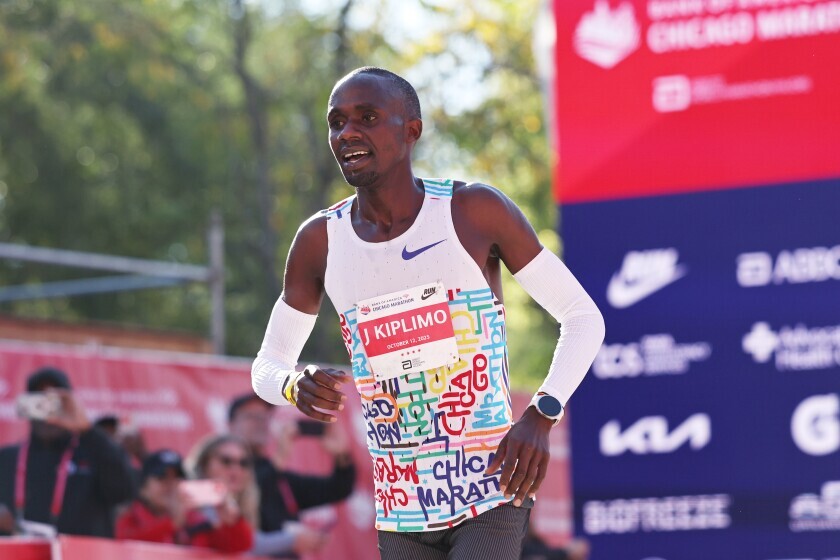
In 2025, Uganda’s Jacob Kiplimo, already the half marathon world record holder, returned to Chicago for his second career marathon and clocked 2:02:23 — his personal best and the seventh-fastest marathon ever run.
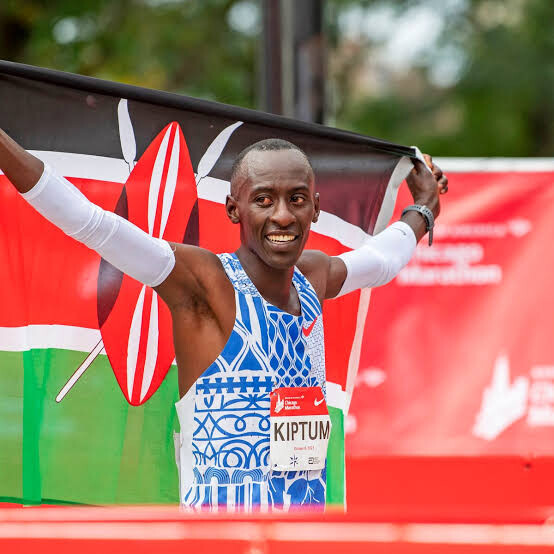
Split by Split — The Chicago Comparison
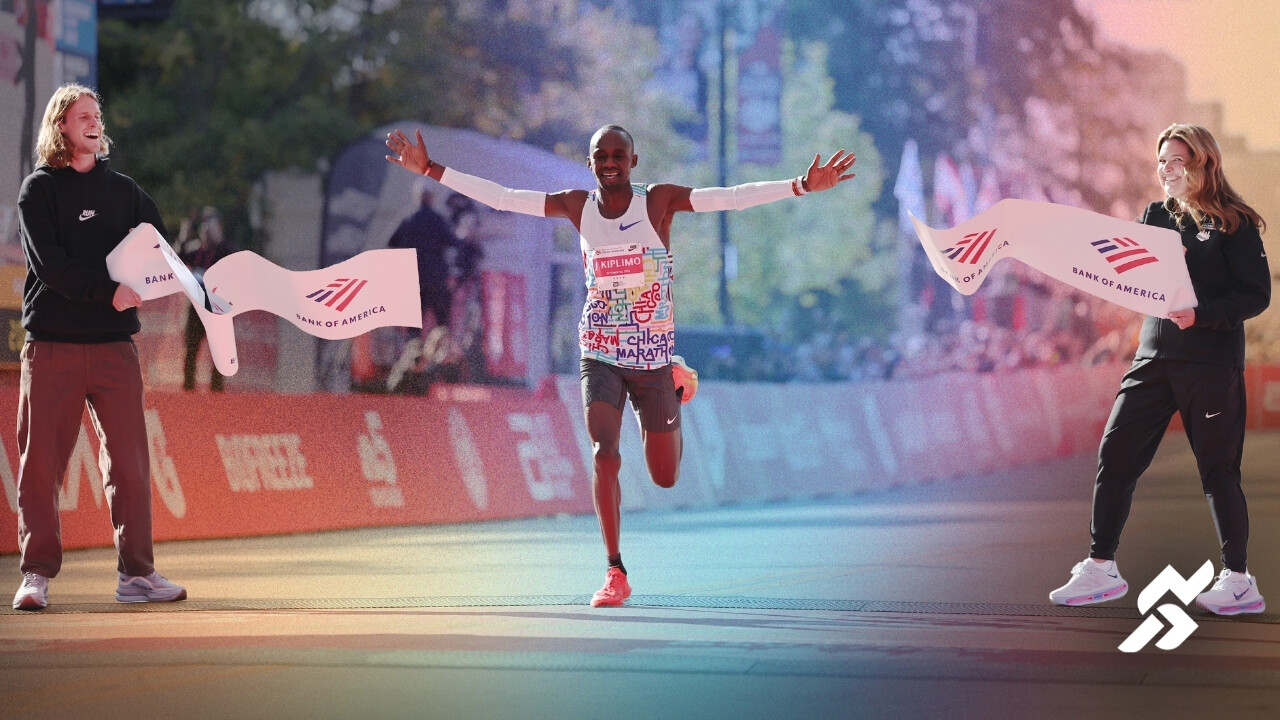
|
Distance |
Kiptum (2023) |
Kiplimo (2025) |
Difference |
|
5 km |
14:26 |
13:58 |
−28 sec |
|
10 km |
28:42 |
28:25 |
−17 sec |
|
15 km |
43:09 |
42:40 |
−29 sec |
|
20 km |
57:39 |
57:05 |
−34 sec |
|
Half |
1:00:48 |
1:00:16 |
−32 sec |
|
25 km |
1:12:04 |
1:11:12 |
−52 sec |
|
30 km |
1:26:31 |
1:25:31 |
−60 sec |
|
35 km |
1:40:22 |
1:39:52 |
−30 sec |
|
40 km |
1:54:23 |
1:55:10 |
+47 sec |
|
Finish |
2:00:35 (World Record) |
2:02:23 |
+1:48 |
How They Ran
Kelvin Kiptum (2023):
Kiptum ran one of the most perfectly executed marathons in history. After a steady opening half in 1:00:48, he unleashed a ferocious negative split of 59:47, the fastest second half ever recorded. His closing 10K in 27:52 sealed a new world record and forever changed how we think about the marathon.
Jacob Kiplimo (2025):
After finishing second in his marathon debut at the 2025 London Marathon, Kiplimo arrived in Chicago more prepared — and fearless. From the start, he attacked the course, opening in 13:58 for 5K, the fastest ever in Chicago. Through 30K, he was over a minute ahead of Kiptum’s world-record pace. Although he slowed slightly in the final 10K, his 2:02:23 finish was the fastest ever by an Ugandan and the 7th-fastest marathon in history.
âš–ï¸ The Contrast
• Strategy: Kiptum’s patience vs. Kiplimo’s aggression.
• Halfway: Kiplimo led by 32 seconds at 21.1K.
• Closing Power: Kiptum’s final 7K (13:51 split) remains unmatched.
• Outcome: Kiplimo’s performance wasn’t a world record, but it confirmed his place among the greatest marathoners of his generation.
Legacy and Continuation
Tragically, Kelvin Kiptum was killed in a car accident in Kenya in February 2024, just months after his world-record run. His passing shocked the running world and ended the career of a man many believed would one day break two hours on a record-eligible course.
When Jacob Kiplimo returned to Chicago in 2025, it felt like a continuation of that story — a symbolic passing of the torch. Running on the same course where Kiptum made history, Kiplimo carried forward the East African legacy of excellence, courage, and speed.
Final Thoughts
Kiptum’s 2:00:35 remains the marathon’s gold standard — calm, controlled, and utterly brilliant.
Kiplimo’s 2:02:23 showed fearless front-running and a promise of what’s still to come.
Two men. Two races. One city.
Chicago — where the modern marathon’s greatest chapters continue to be written.
- - -
The 9 Fastest Men’s Marathons of All Time (as of Oct 13, 2025)
|
Rank |
Name |
Time |
Venue |
|
1 |
Kelvin Kiptum (KEN) |
2:00:35 |
Chicago 2023 |
|
2 |
Eliud Kipchoge (KEN) |
2:01:09 |
Berlin 2022 |
|
3 |
Kenenisa Bekele (ETH) |
2:01:41 |
Berlin 2019 |
|
4 |
Sisay Lemma (ETH) |
2:01:48 |
Valencia 2023 |
|
5 |
Sebastian Sawe (KEN) |
2:02:05 |
Valencia 2024 |
|
6 |
Benson Kipruto (KEN) |
2:02:16 |
Tokyo 2024 |
by Bob Anderson
Login to leave a comment
Kelvin Kiptum: The Man Who Ran Into History and Never Returned
It’s been exactly one year since Kelvin Kiptum did what many believed was impossible — he shattered the marathon world record in Chicago, stopping the clock at 2:00:35.
On October 8, 2023, the 23-year-old Kenyan didn’t just win a race — he redefined the limits of human endurance.
As the world prepares for this year’s Chicago Marathon, it’s impossible not to feel the silence he left behind.
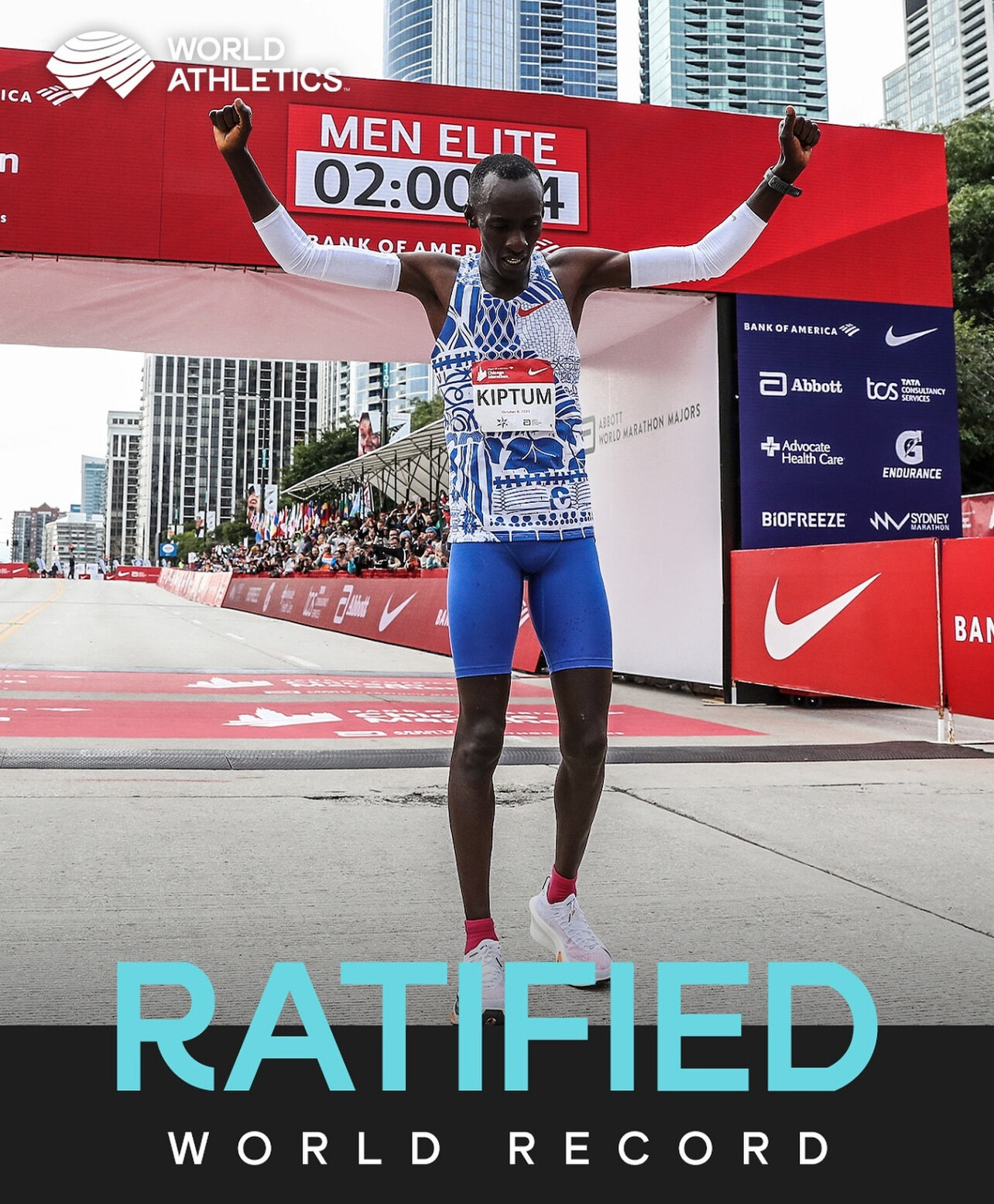
That crisp Sunday morning, Kiptum delivered a performance that stunned the running world. Gliding through Chicago’s streets with unrelenting rhythm, he dropped the field, surged mile after mile, and erased Eliud Kipchoge’s seemingly untouchable world record of 2:01:09 by 34 seconds.
It was only his third marathon. He had never lost one.
Chicago had seen greatness before — but never like this.
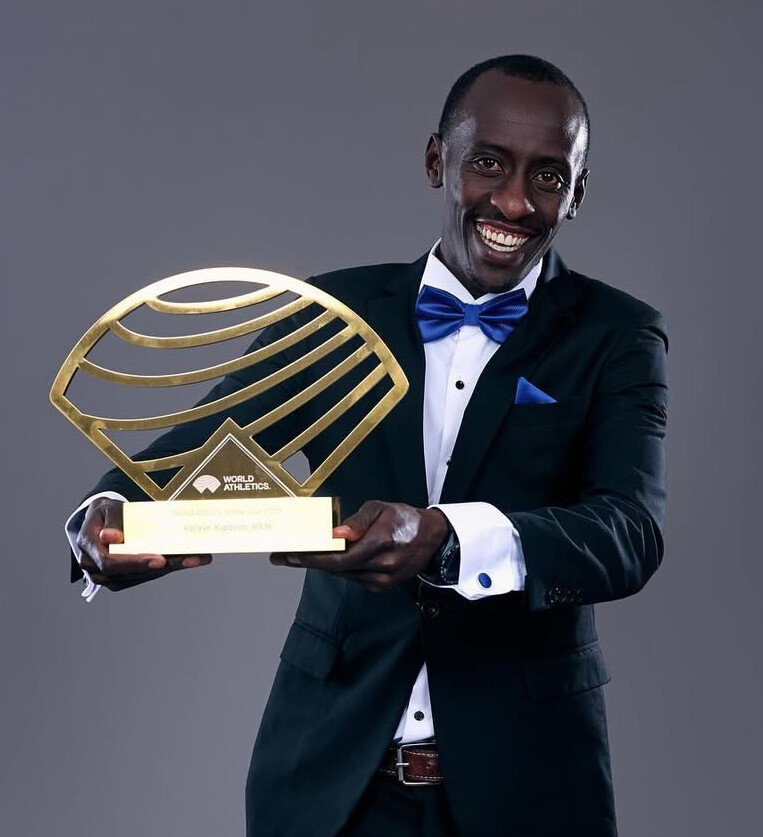
And then, just months later, he was gone.
In February 2024, Kiptum and his coach, Gervais Hakizimana, were killed in a car crash on a quiet road in Kenya. The sport lost more than a record-breaker; it lost a phenomenon — a man who seemed destined to become the first human to run under two hours in an official race.
That dream — carried in Kiptum’s quiet confidence and thunderous stride — vanished that night. His record, ratified only days before his death, stands as both a triumph and a tombstone.
But legends don’t end with tragedy — they echo.
As the 2025 Chicago Marathon approaches, the course remembers. Every stretch of asphalt, every cheer from the crowd, every runner chasing a personal best this weekend — they all run in the shadow of Kiptum’s greatness.
Because Kelvin Kiptum didn’t just run a race.
He ran into history — and never returned.
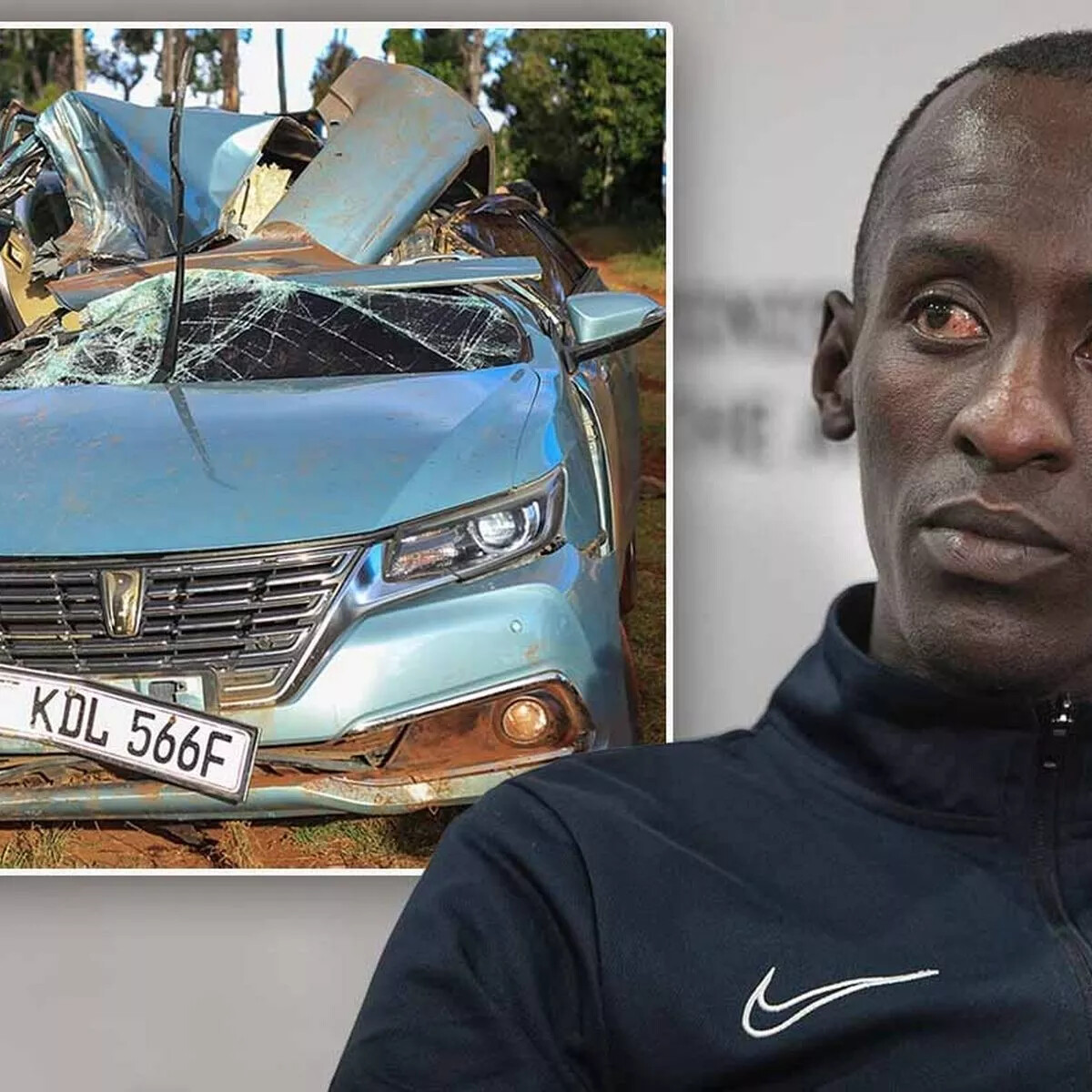
His Legacy Lives On
Across Kenya and beyond, his story continues to inspire a new generation of runners — from the dirt roads of the Rift Valley to the streets of Chicago, Boston, and Berlin. Athletes like Benson Kipruto, Evans Chebet, and countless others now carry his fire forward, chasing their own dreams with the same fearless rhythm that once shook the marathon world.
Kelvin Kiptum’s stride may have stopped, but his impact will keep moving — every time someone dares to believe that impossible is only a pace away.
by Boris Baron
Login to leave a comment
From Rain to Heat: Sabastian Sawe and the New Chapter of Berlin’s Weather-Tested Records
Fifteen years ago, Patrick Makau braved torrential rain and deep puddles on the streets of Berlin, chasing Haile Gebrselassie’s marathon world record. The conditions ruined his attempt, but Makau still managed 2:05:08—the fastest marathon ever run in such relentless rain. A year later, with fair weather, he returned and broke the world record with 2:03:38.
On Sunday in Berlin, history echoed in a new way. This time, it wasn’t rain but unseasonable heat that stood between a Kenyan and marathon immortality. Sabastian Sawe, the 30-year-old rising star, had his sights set on Eliud Kipchoge’s 2:00:35 mark. Instead, he delivered what can only be called a “warm-weather world record,” blazing through the 26.2 miles in 2:02:16. Despite being 101 seconds off the record, it was the fastest time ever achieved in such high temperatures.
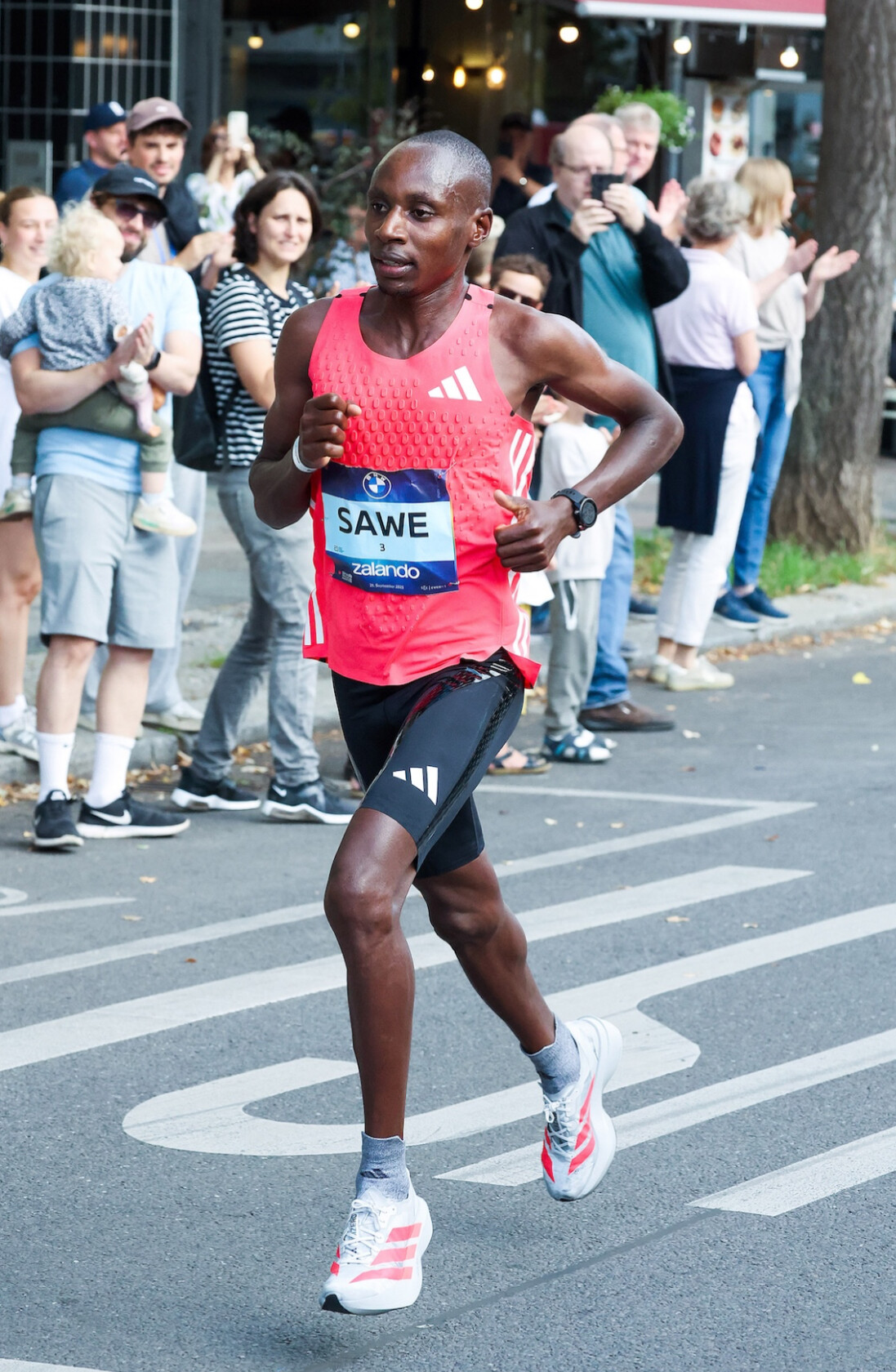
The What-Ifs of Berlin
Sawe, whose personal best stands at 2:02:05, was in career-best form. His coach, Italian veteran Claudio Berardelli, admitted the weather stripped away any chance of the extraordinary.
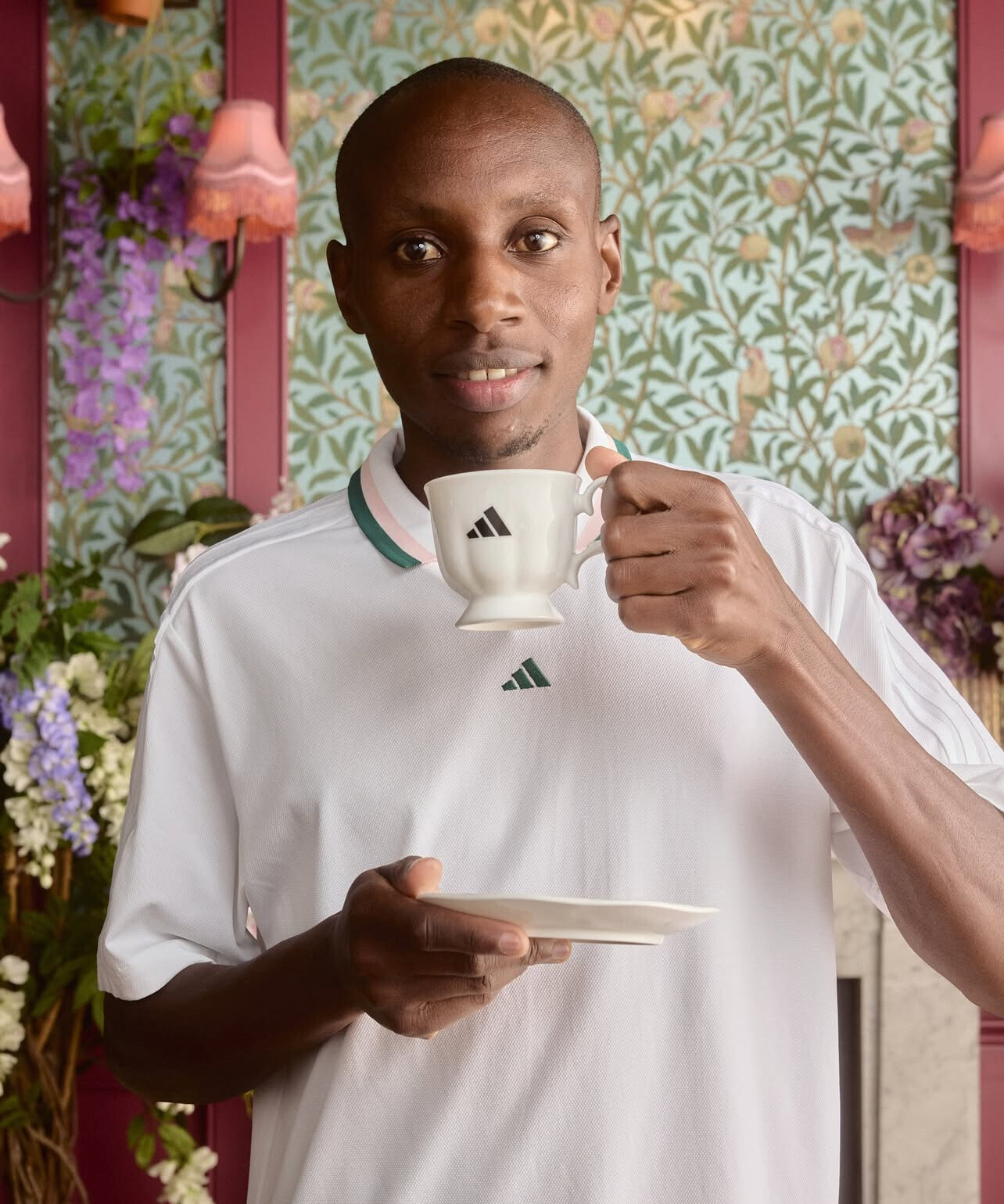
“I know he was in exceptionally good shape. But I do not know what would have been possible,” Berardelli reflected.
The what-if question will linger: how fast could Sawe have run under cooler skies?
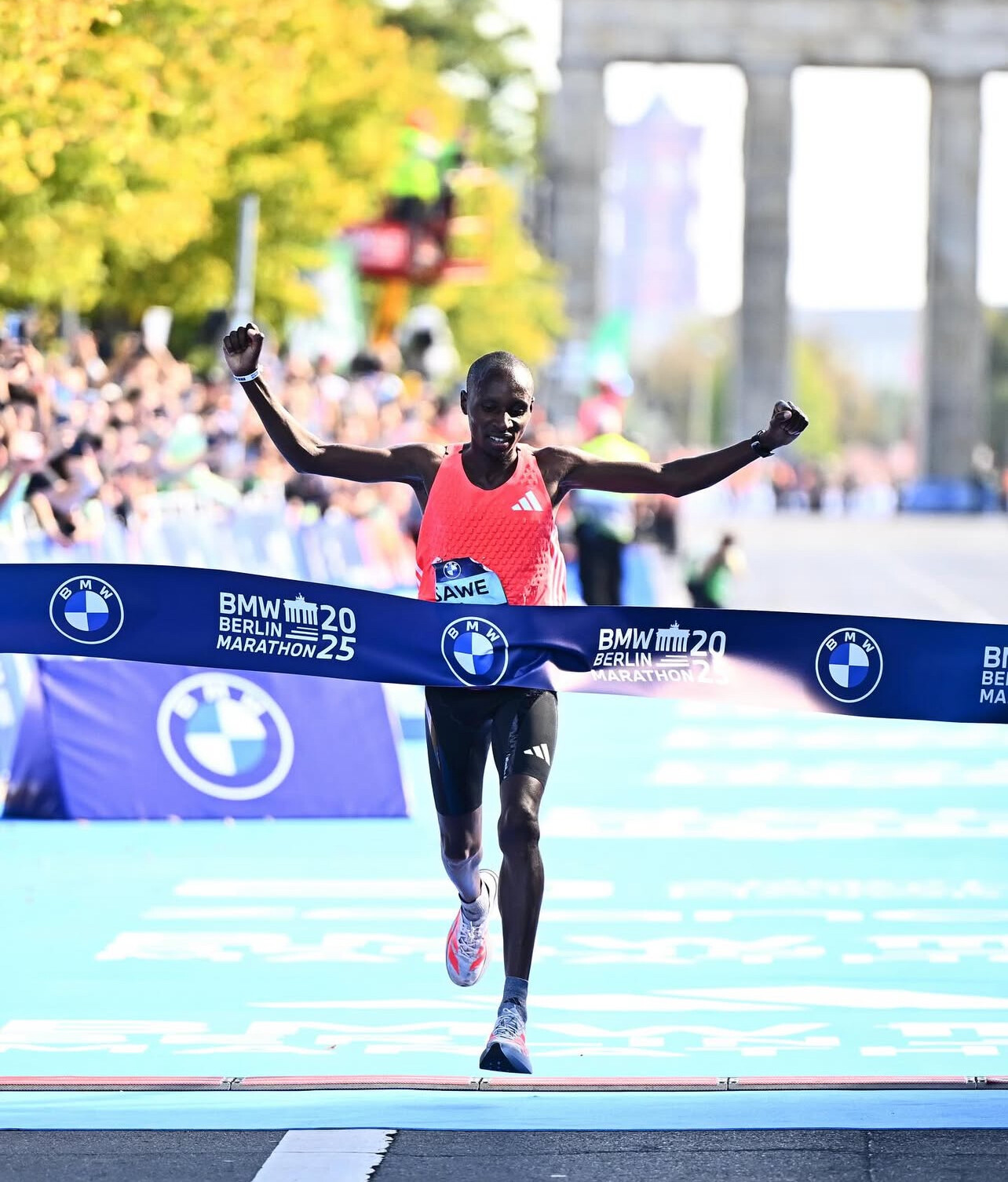
From Humble Beginnings to Global Stardom
Born in the village of Cheukta near Eldoret, Sawe’s story mirrors that of countless young talents in Kenya who struggle for recognition. Despite moving to Iten, the mecca of distance running, he was overlooked by managers and coaches. His breakthrough came only after turning to his uncle, Abraham Chepkirwok—Uganda’s 800m national record holder—and his neighbor Abel Mutai, the London 2012 Olympic steeplechase bronze medalist.

Mutai vouched for him with Berardelli, who placed Sawe in his Kapsabet camp. The rest unfolded quickly. Sawe stunned the field at the 2022 Seville Half Marathon, entering as a pacemaker but leaving with a victory and a world lead of 59:02.
A Gift of Talent and Humility
Berardelli is quick to highlight Sawe’s rare combination of physical and mental qualities:
“He has everything it takes—training ability, mental strength, and humility. I can’t predict what will be possible, but I’m looking forward to finding out.”
Sawe himself remained pragmatic after Berlin:
“I wanted to run really fast and gave it my best, but the weather was too hot. I hope I will have better weather next time. I liked the course, it is very good and fast.”
Berlin: Unfinished Business
Just as Makau returned after the rain to rewrite history, Sawe may yet come back to Berlin with the weather in his favor. With his trajectory and determination, the marathon world could witness a record chase for the ages in 2026.
Until then, Berlin 2025 will be remembered as the day Sabastian Sawe delivered a performance that stood not against the clock, but against the elements—proving once again why the city remains the crucible of marathon greatness.
by Race News Service
Login to leave a comment
Sabastian Sawe Dominates in Berlin With 2:02:16 Victory
Berlin, September 21, 2025 — The Berlin Marathon once again lived up to its reputation as the world’s fastest stage for marathon running. Kenya’s Sabastian Sawe stormed to victory on Sunday, clocking 2:02:16, the fastest marathon time in the world this year and the fourth-fastest ever run on the streets of Berlin.
Sawe, already the reigning champion from Valencia (2024) and London (2025), extended his unbeaten record over the marathon distance. From the gun, he attacked with confidence, hitting 5km in 14:09and 10km in 28:26, well inside world-record pace. By halfway, his split of 60:16 electrified the Berlin crowds and suggested history might be on the cards.
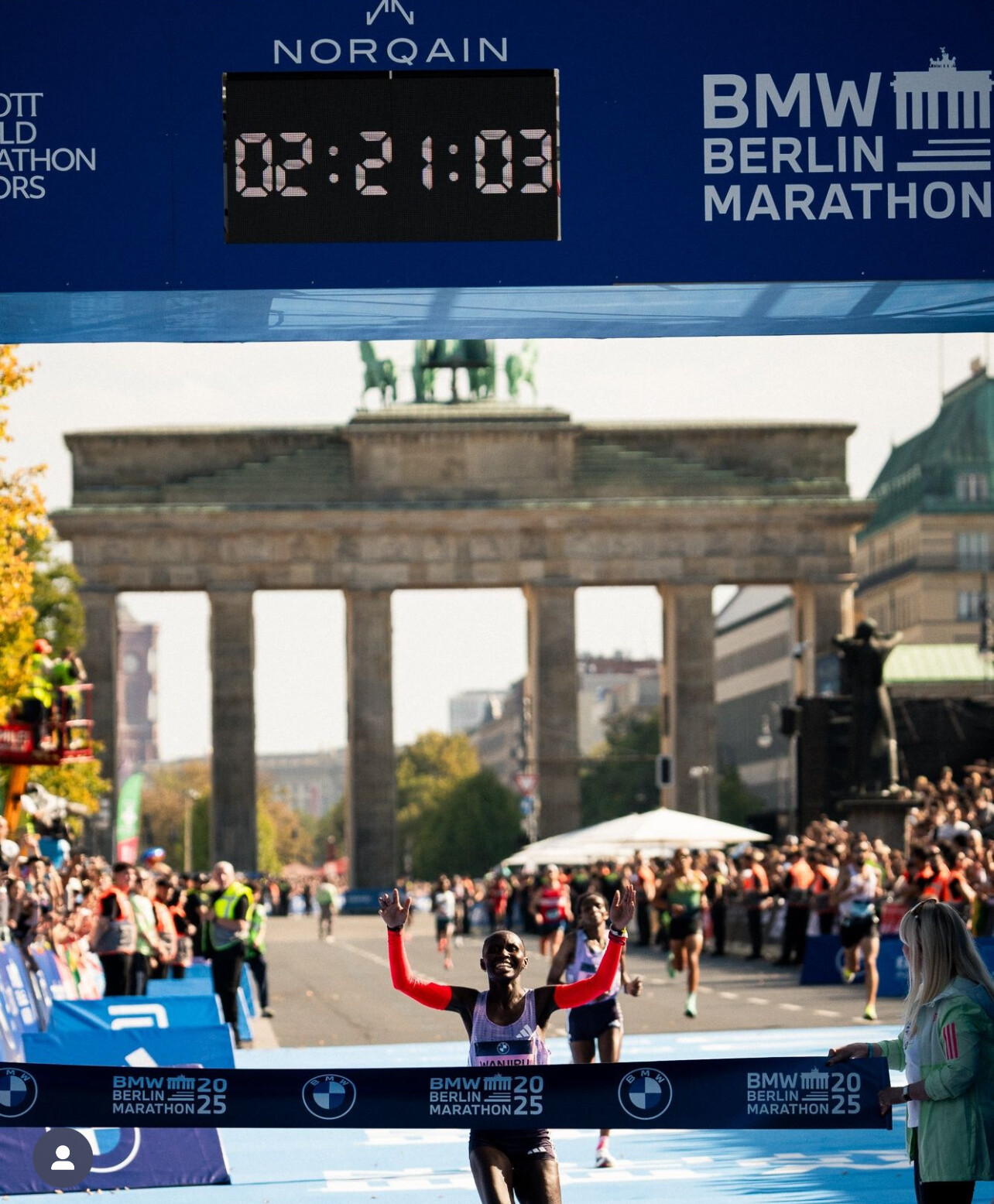
But conditions proved decisive. Unseasonably warm temperatures — climbing to 25°C (mid-70s°F) — and the loss of his pacemakers before the 23km mark forced Sawe to shoulder the workload alone. Though the second half slowed, he maintained control and powered down Unter den Linden to the Brandenburg Gate, finishing with a commanding lead.
Behind him, Akira Akasaki of Japan impressed with a breakthrough run, finishing second in 2:06:15, while Ethiopia’s Chimdessa Debele held on for third in 2:06:57.
Wanjiru Outkicks Dida in Women’s Duel
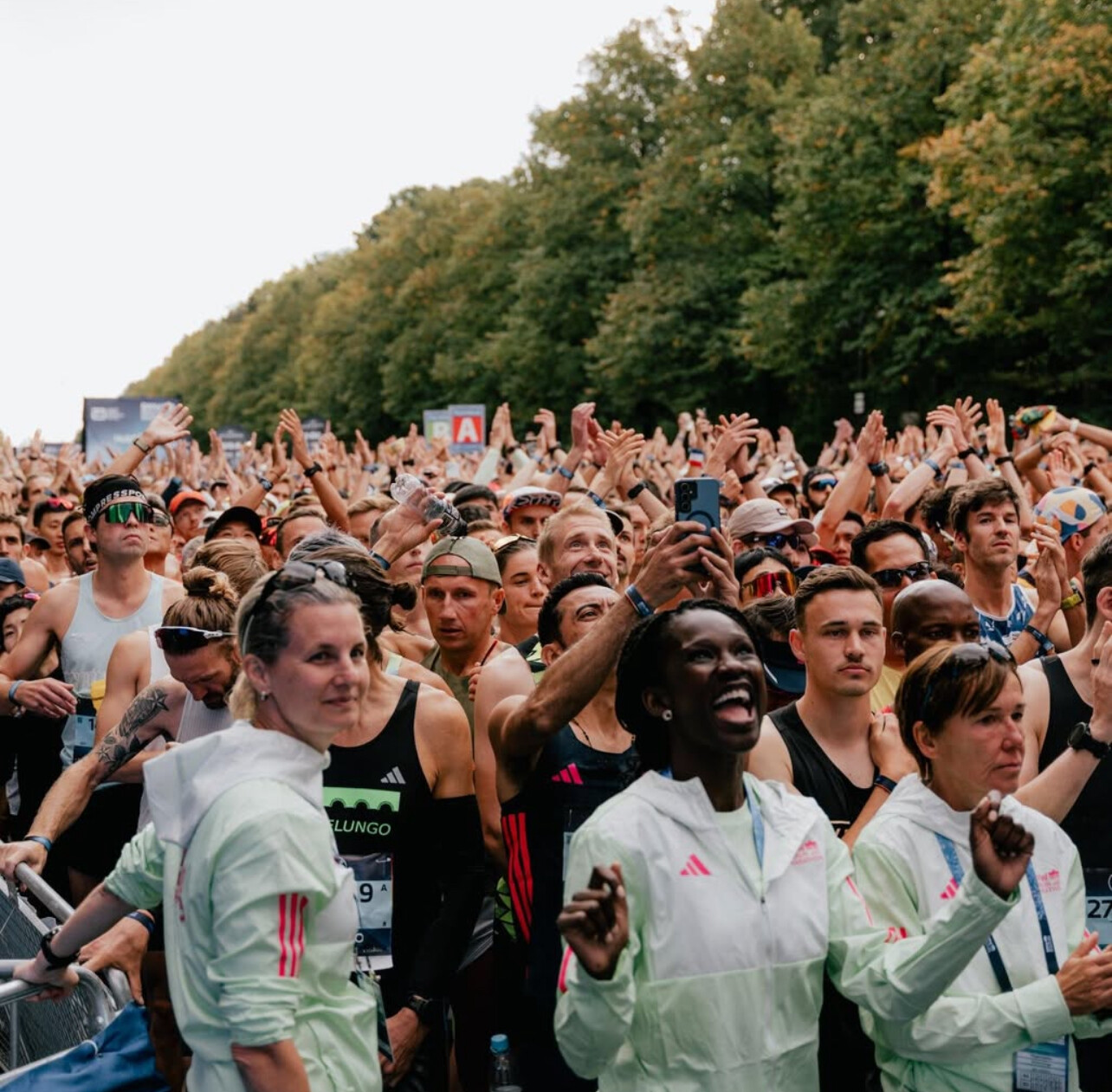
The women’s race produced its own drama, with Kenya’s Rosemary Wanjiru edging Ethiopia’s Dera Dida by just three seconds. Wanjiru clocked 2:21:05 after a decisive surge past the 25km mark. Dida followed in 2:21:08, while fellow Ethiopian Azmera Gebru completed the podium in 2:21:29.
“I knew it would come down to the final kilometers,” Wanjiru said afterward. “The crowd in Berlin gave me so much energy.”
Berlin’s Enduring Legacy
This year’s edition was the 51st running of the Berlin Marathon, and once again, the German capital showcased why it is considered the “world record course.” Since 2003, the men’s world record has been broken eight times in Berlin, most recently by Eliud Kipchoge’s 2:01:09 in 2022. On the women’s side, Tigst Assefa stunned the world here in 2023 with her record 2:11:53.
While Sawe fell short of rewriting those marks, his performance in the heat confirmed his status as the man to beat in global marathon running. With three straight victories in world-class fields, he has announced himself as the heir apparent to Kipchoge.
Results at a Glance
Men
1. Sabastian Sawe (Kenya) — 2:02:16
2. Akira Akasaki (Japan) — 2:06:15
3. Chimdessa Debele (Ethiopia) — 2:06:57
Women
1. Rosemary Wanjiru (Kenya) — 2:21:05
2. Dera Dida (Ethiopia) — 2:21:08
3. Azmera Gebru (Ethiopia) — 2:21:29
by Boris Baron
Login to leave a comment
BMW Berlin Marathon
The story of the BERLIN-MARATHON is a story of the development of road running. When the first BERLIN-MARATHON was started on 13th October 1974 on a minor road next to the stadium of the organisers‘ club SC Charlottenburg Berlin 286 athletes had entered. The first winners were runners from Berlin: Günter Hallas (2:44:53), who still runs the BERLIN-MARATHON today, and...
more...Kipchoge and Hassan Set for New York City Marathon Debuts
Eliud Kipchoge and Sifan Hassan, two of the biggest names in distance running, will make their New York City Marathon debuts on November 2 after both raced the Sydney Marathon on August 31.
Kipchoge, the 40-year-old Kenyan icon, is a two-time Olympic gold medalist and the second-fastest marathoner in history with his 2:01:09 from Berlin in 2022. His last victory over the 26.2-mile distance came at the 2023 Berlin Marathon. Since then, his results have been mixed: 10th at the 2024 Tokyo Marathon, a DNF at the Paris Olympic marathon, and sixth and ninth in London and Sydney this year. Remarkably, 2025 marks the first year of his marathon career in which he will line up for three marathons in a single calendar year.
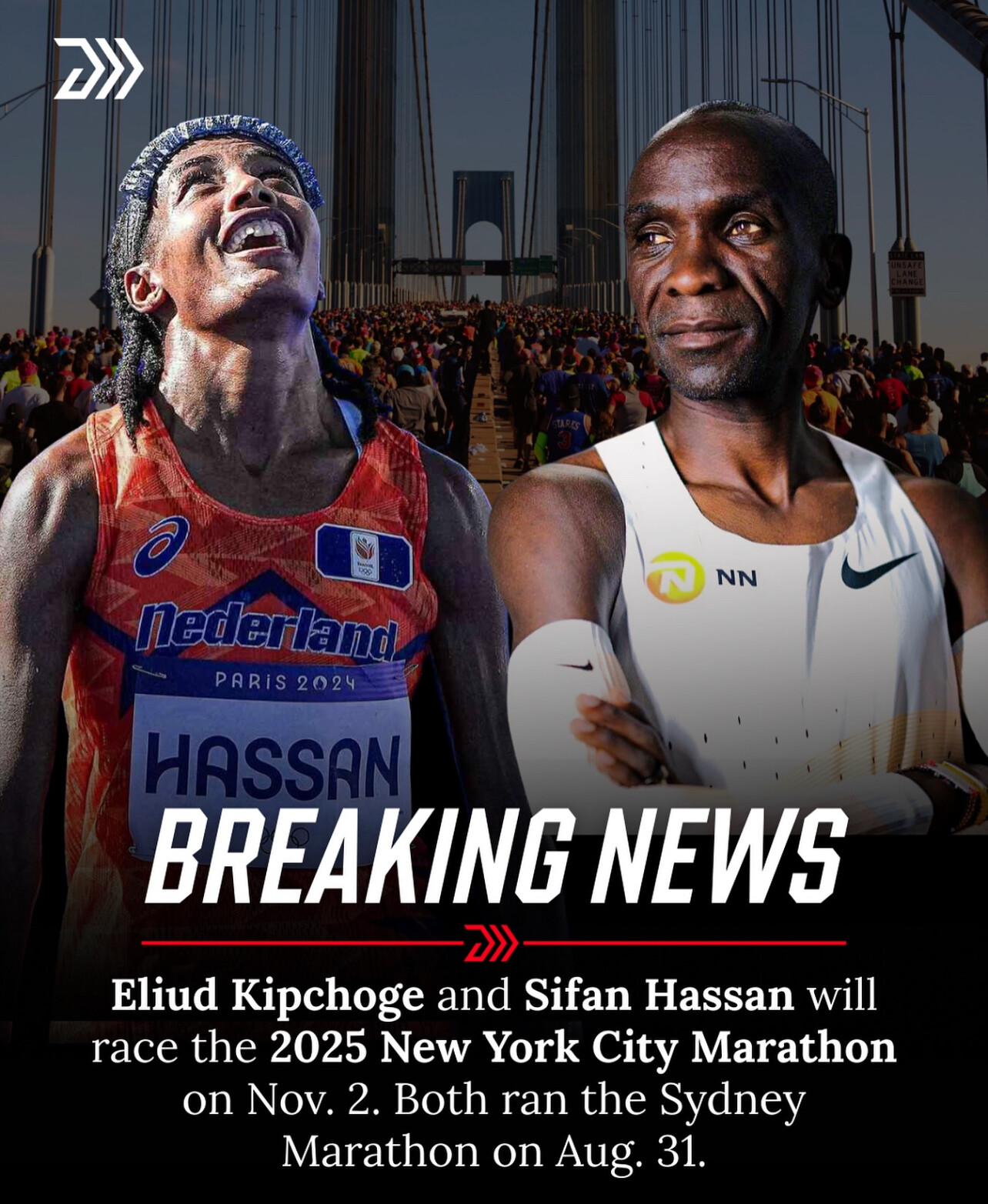
Despite recent setbacks, Kipchoge’s career remains unmatched. He has won four of thekoopoo six long-standing World Marathon Majors—Berlin, Chicago, London, and Tokyo—leaving only Boston and New York City without victoriesok. He finished sixth in Boston in 2023. New York now offers him another chance to etch his name deeper into the sport’s most prestigious stages.
Dutch star Sifan Hassan, already an Olympic champion and one of the most versatile distance runners in history, will also make her New York debut. Known for her ability to dominate from 1500m on the track to the marathon on the roads, Hassan’s presence adds another layer of intrigue to a race that consistently delivers drama.
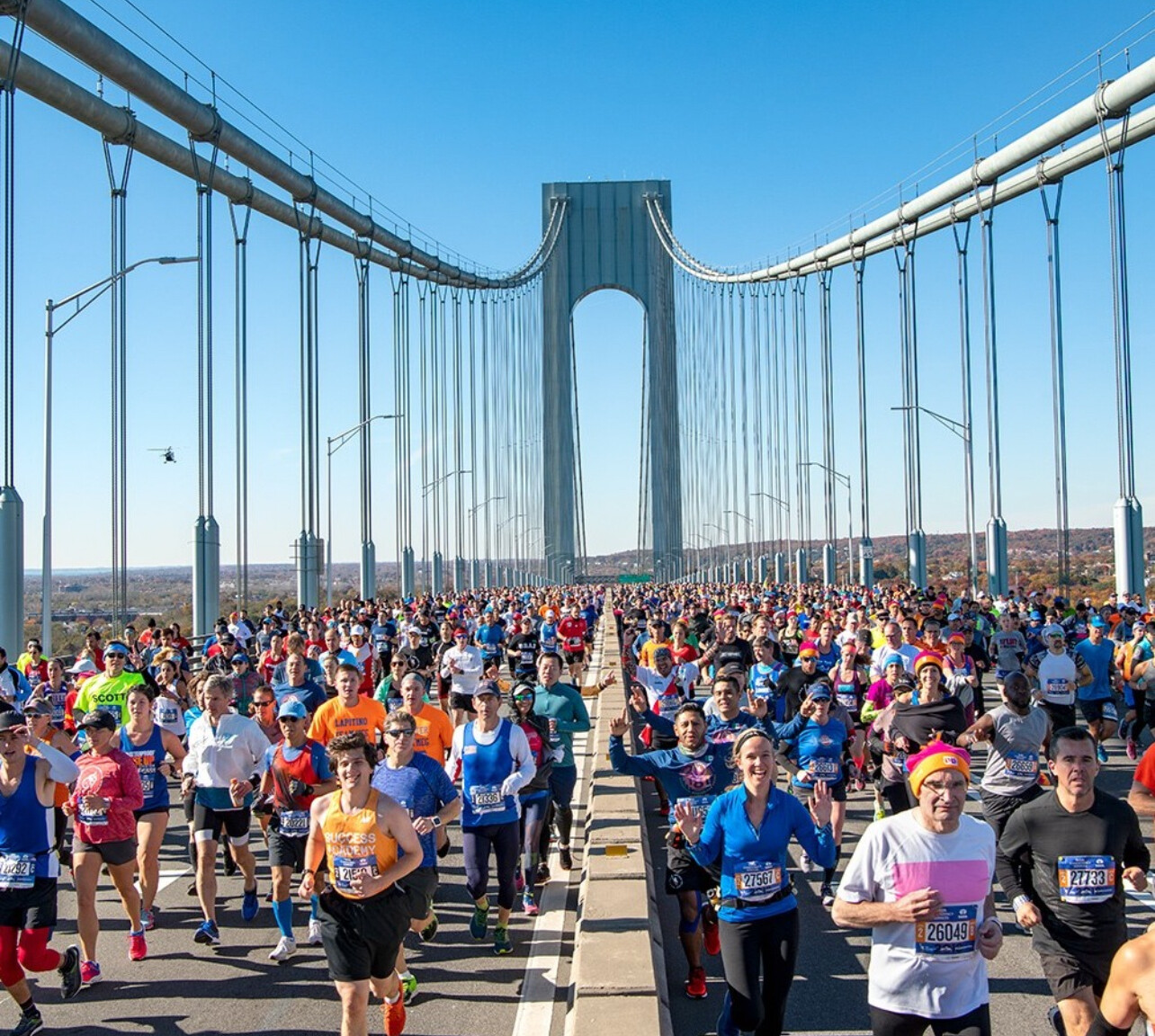
With both Kipchoge and Hassan in the field, the 2025 New York City Marathon promises to be one of the most anticipated races of the year, a true meeting of legends on one of the sport’s grandest stages.
by Boris Baron
Login to leave a comment
TCS New York City Marathon
The first New York City Marathon, organized in 1970 by Fred Lebow and Vince Chiappetta, was held entirely in Central Park. Of 127 entrants, only 55 men finished; the sole female entrant dropped out due to illness. Winners were given inexpensive wristwatches and recycled baseball and bowling trophies. The entry fee was $1 and the total event budget...
more...Noah Kipkemboi Has Victory in Mind at TCS Toronto Waterfront Marathon
Noah Kipkemboi returns to the TCS Toronto Waterfront Marathon on October 19 with one clear objective—victory at this World Athletics Elite Label race.
Last year, the 32-year-old Kenyan produced a personal best of 2:07:31 to finish third in Toronto. He now looks forward to another showdown with his compatriot Dominic Ngeno, who edged him by just eight seconds for second place.
“I hope to win,” Kipkemboi says with a smile. “Because he [Ngeno] challenged me last year with two kilometres to go. I think this time I will be able to catch up with him. For sure we are training well.”
Kipkemboi arrives in confident form, having recently finished third at the Klagenfurt Half Marathon in Austria (62:09). “Last year I went to that race and then had a good race in Toronto. I think I will run my best in Toronto,” he adds.
Training With the Best
Kipkemboi is represented by Global Sports Communications, the Netherlands-based management company that also manages marathon icon Eliud Kipchoge. Based at the Global Sports camp in Kaptagat, Kipkemboi has long been a trusted pacemaker for Kipchoge, including during the Kenyan legend’s 2022 Berlin Marathon world record of 2:01:09.
“I am in the same camp as Eliud—we train together and race together,” Kipkemboi reveals. “Most of the races I have been pacing have been for Eliud. When you are a pacemaker, you have to be ready to help push, but not to a time he doesn’t want. I know how to run with him.”
Under the guidance of Coach Patrick Sang, the group trains from Monday to Friday at the camp, going home only on weekends. For Kipkemboi, the commitment comes with sacrifice: he has a wife and three young children in Eldoret, where he also owns farmland and runs a small shop.
“Things I sell in the shop are things human beings use—like soap, flour, sweets, perfumes,” he explains. “It’s preparation for life after running.”
Giving Back to the Community
Like many Kenyan athletes, Kipkemboi is committed to helping those around him.
“I am supporting some people who are in need. Right now I’m supporting some students in my village,” he says. “It is an opportunity to help whoever needs help. I have some kids in my village who need support now and after five years.”
That support includes paying school fees and providing food—efforts made possible by his racing success.
Toronto, he adds, has also provided lasting memories: “We went to see Kenyan people while there last year. In Toronto we were like at home because there were Kenyan people living there who came to say hi to us. We were as happy as if we were at home.”
Eyes on Victory
Now, as he fine-tunes his preparation, Kipkemboi is clear about his goals.
“I am now preparing for a win. It is my hope to win the race this time,” he declares. “My objective is just to win and improve my time. I ran my personal best in Toronto (2:07:31), but I want to improve upon that.”
The Toronto Waterfront course record stands at 2:05:00, held by his training partner Philemon Rono. With strong pacemakers and good conditions, Kipkemboi knows that mark could be in sight.
by Paul Gains
Login to leave a comment
Sydney Marathon Makes History as Part of World Marathon Majors
Sydney, August 31, 2025 – The Sydney Marathon ushered in a new era today, joining the elite ranks of the Abbott World Marathon Majors with a race that delivered both record-breaking performances and unforgettable moments on the streets of Australia’s largest city.
Hassan Dominates the Women’s Race

Olympic champion Sifan Hassan of the Netherlands continued her dominance in the marathon with a commanding victory. Hassan crossed the finish line at the Sydney Opera House in 2:18:22, smashing the course record and becoming the first woman to dip under 2:20 on Australian soil.
Former world record holder Brigid Kosgei of Kenya claimed second place, while last year’s Sydney champion Workenesh Edesa of Ethiopia secured third. Hassan’s winning margin reflected her superior class and endurance, reinforcing her reputation as one of the greatest all-around distance runners in history.
Kiros Breaks Men’s Course Record
The men’s race was equally electrifying. Ethiopia’s Hailemaryam Kiros surged clear at the 30km markalongside compatriot Addisu Gobena before unleashing a decisive kick in the final stages. Kiros broke the tape in 2:06:06, the fastest marathon ever run on Australian soil.
Gobena, just 20 years old and competing in his fourth marathon, impressed with a 2:06:16 for second place, while Tebello Ramakongoana of Lesotho clocked 2:06:47 to finish third.
“The competition was very tough, this was a strong, strong field,” said Kiros, who finished fifth at the Berlin Marathon earlier this year.
Kipchoge Inspires at 40
Marathon legend Eliud Kipchoge, celebrating his 40th birthday this year, showed his enduring spirit on the world stage. Although he was unable to keep pace when the Ethiopians surged, Kipchoge still battled through to finish ninth in 2:08:31.
For the man many consider the greatest marathoner of all time, the performance was a reminder that his mission extends beyond racing—to inspire, to unite, and to prove that running is a lifelong journey.
A Citywide Celebration
The marathon course highlighted Sydney’s most iconic landmarks, with the field of 35,000 runnersstreaming across the Sydney Harbour Bridge, winding through Centennial Park, and finishing against the stunning backdrop of the Opera House.
Perfect racing conditions—bright sunshine and cool temperatures—helped elevate performances and ensured Sydney made the most of its debut as a World Marathon Major, joining New York, London, Boston, Chicago, Tokyo, and Berlin in the sport’s most prestigious series.
Final Results at a Glance
Men
1. Hailemaryam Kiros (ETH) – 2:06:06 (course record)
2. Addisu Gobena (ETH) – 2:06:16
3. Tebello Ramakongoana (LES) – 2:06:47
Women
1. Sifan Hassan (NED) – 2:18:22 (course record)
2. Brigid Kosgei (KEN) – ~2:18:56
3. Workenesh Edesa (ETH) – ~2:22:05
A Defining Moment
With new course records, thrilling competition, and global attention, the 2025 Sydney Marathonestablished itself as not just a spectacular race but also a cornerstone of the global marathon calendar. For elite athletes and everyday runners alike, Sydney delivered a day to remember.
by Boris Baron
Login to leave a comment
Kenya’s Dominic Ngeno Returning to TCS Toronto Waterfront Marathon
It speaks volumes about a marathon when podium finishers are eager to come back. Last year, Kenya’s Dominic Ngeno finished runner-up at the TCS Toronto Waterfront Marathon. Now, from his home in Iten, he confirms he will return for this year’s edition on October 19.
“It was an amazing race last year and I learned a lot,” he says with a grin. “The race was good. I am coming now to combat. I was so happy that the fans were cheering us all the way in the streets. It was so amazing.”
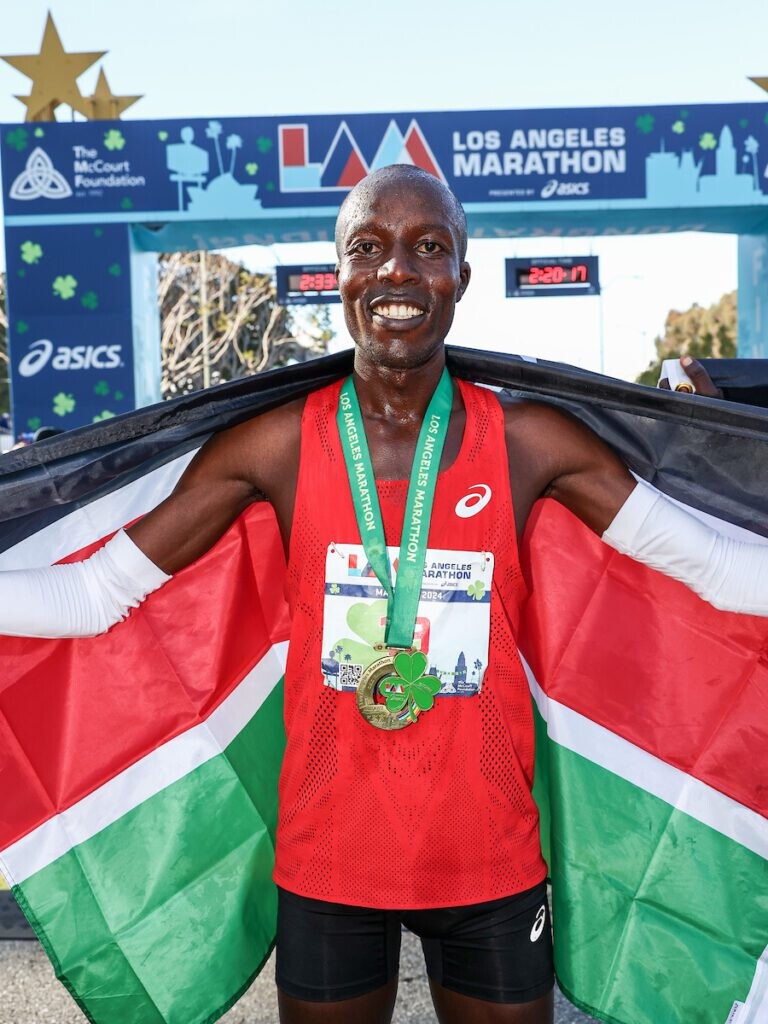
Finding his stride in Iten
In recent months, Ngeno has made some important changes. He left his training base in Kaptagat to return home to Iten, 2,400m above sea level — the famed “Home of Champions.” The switch has made him happier and, he believes, stronger. The proof came at the 2025 Paris Marathon, where he finished 5th in a new personal best of 2:06:37.
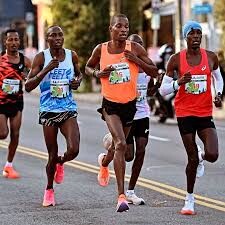
“I ran 2:06:37 in Paris and it is a hard course,” he explains. “It is not like Toronto. Last year I feared Toronto was tough because for a few years guys were running 2:09 or 2:10. But when I finished, I saw it was good. Paris compared to Toronto? Toronto is a nice course.”
Training with purpose
Speaking via WhatsApp video, he animatedly describes his training and credits his group of six training partners with pushing him forward. Just before the interview he had run 20km in the evening, then 10km the following morning, with a demanding session of 15 x 1km intervals planned later that day. Every couple of weeks he adds a 40km long run.
“When I am not training, I am resting in the compound — just sleeping,” he says with a smile. “Sleeping is part of the training program. After lunch I sleep, then go for training. When I come back, I take tea and wait for dinner.”
Like many Kenyan athletes, he still makes time to follow English Premier League football.
“Yeah, I am a big fan of Chelsea — the Blues,” he laughs. “My favourite player used to be Didier Drogba, but now it is Cole Palmer.”
A latecomer with big dreams
Ngeno turns 28 on September 3rd, still relatively new to the marathon. After high school he played soccer, then studied in Eldoret for two years, where he met some of Kenya’s top runners. But it was a chance encounter at a 2021 cross country meet with Amos Kipruto — the 2022 London Marathon champion and 2019 world bronze medalist — that shifted his focus.
“We had some small interactions,” Ngeno recalls. “He really inspired me because he didn’t run so many half marathons, and his dream came true after he started running marathons. That inspired me. I ran only two half marathons before deciding to be a marathoner full time.”
Building a future beyond running
Professional running offers him a chance to secure a brighter future. A contract with Asics helps, but he is also investing wisely.
“There is life after running so you need to invest whatever you get,” he says. “Now I have a small business — I have electronics stores and I am also farming. After running I will work with my family and grow that. I have shops and people who work for me. Whenever someone needs something like a television, they can go there.”
Looking ahead
Some of the greatest marathoners — Haile Gebrselassie, Kenenisa Bekele, Eliud Kipchoge — have thrived well into their late 30s. Ngeno believes he has another decade at the top and is motivated by the possibility of representing his country.
“First, I love running, and because I love running I want to run my best and change my life,” he declares. “I want to be the best. I have that dream of running for Kenya. This year when they were selecting the team I was not far from selection. I believe soon I will run for Team Kenya — maybe at the World Championships or Olympic Games.”
For now, his focus is firmly on the TCS Toronto Waterfront Marathon, where he aims to take on a world-class field and turn last year’s second place into victory.
by Paul Gains
Login to leave a comment
TCS Toronto Waterfront Marathon
The Scotiabank Toronto Waterfront Marathon, Half-Marathon & 5k Run / Walk is organized by Canada Running Series Inc., organizers of the Canada Running Series, "A selection of Canada's best runs!" Canada Running Series annually organizes eight events in Montreal, Toronto and Vancouver that vary in distance from the 5k to the marathon. The Scotiabank Toronto Waterfront Marathon and Half-Marathon are...
more...SYDNEY MARATHON – KIPCHOGE’S LAST DANCE?
The 2025 Sydney Marathon men’s field is stacked with talent rarely seen outside the World Marathon Majors. Thirteen men boast personal bests faster than the course record of 2:06:18, while nineteen have broken 2:07. The depth rivals Tokyo’s strongest lineups of recent years. On the start list are legends and rising stars alike: Eliud Kipchoge, Birhanu Legese, Dawit Wolde, Edward Cheserek, and Vincent Ngetich.
Kipchoge: The Legend at a Crossroads
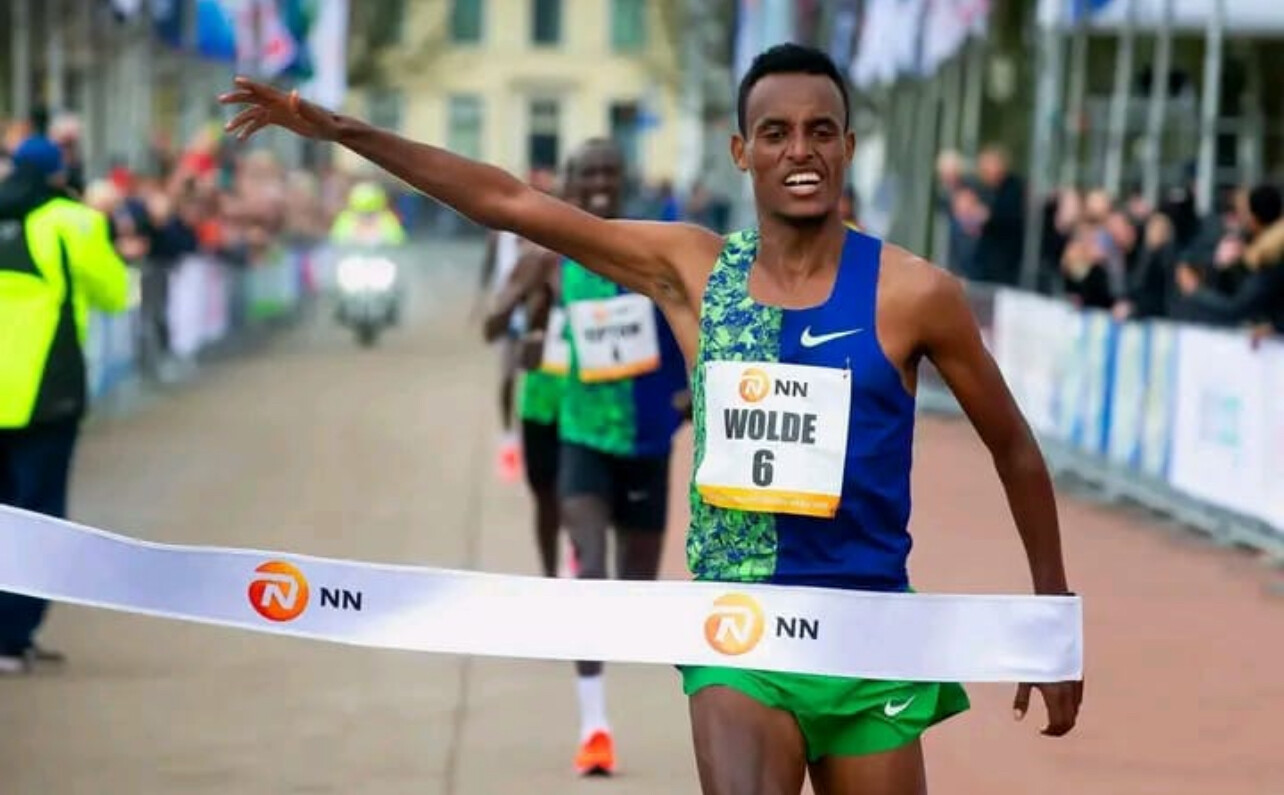
Nothing new can be said about Eliud Kipchoge’s greatness — his 2:01:09 from Berlin 2022 remains the second-fastest marathon in history, and his body of work defines the modern era. Yet the past two seasons have tested him. Tenth in Tokyo 2024, a DNF at the Paris Olympics, and a weary fade in London 2025 seemed to confirm decline. But in London he fought back, refusing to surrender, and clawed his way to sixth in 2:05:25. For a 40-year-old, that was extraordinary.
Kipchoge is no longer racing under the crushing weight of expectation. Instead, he runs for inspiration — to show what resilience looks like. That makes him dangerous still. And it raises the question: could Sydney be the stage for one final act of brilliance?
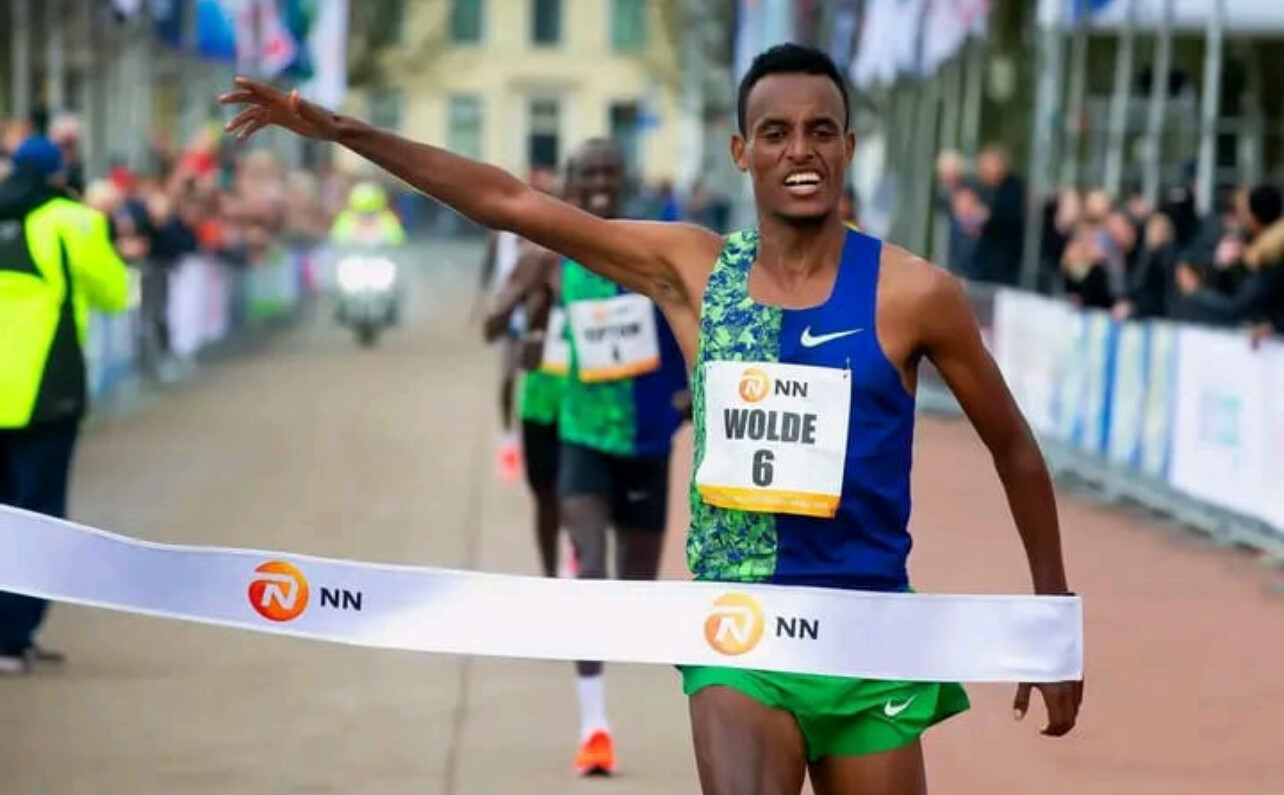
The Challengers
Dawit Wolde (Ethiopia) – Fresh off victory in Xiamen 2025 (2:06:06, course record), the Olympian owns a 2:03:48 best. His confidence and consistency mark him as a serious contender.
Birhanu Legese (Ethiopia) – Twice a Tokyo champion (2019, 2020) and a proven 2:02:48 performer in Berlin, he brings the pedigree of a man who has already mastered Major moments.
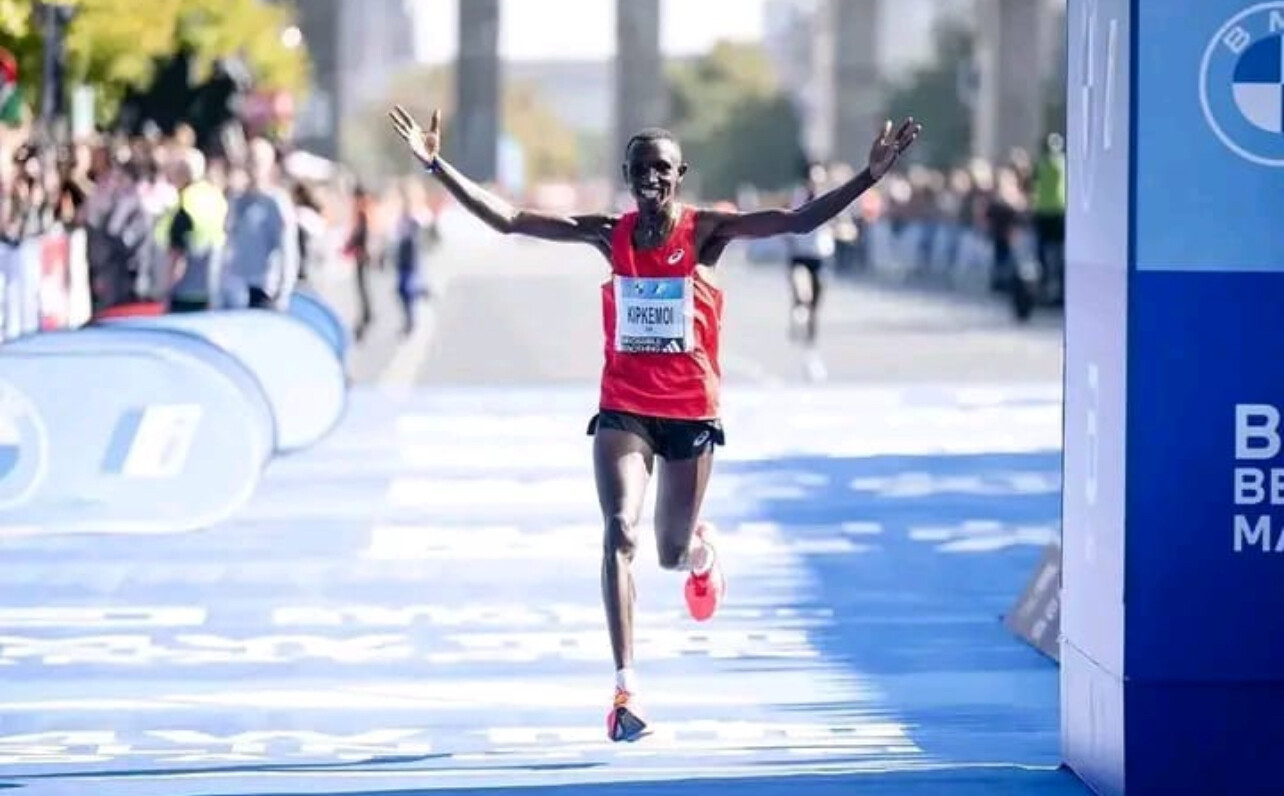
Edward Cheserek (Kenya/USA) – “King Ches” ruled the NCAA with 17 titles before turning to the marathon. In just his second attempt he ran 2:05:24 in Valencia 2024, slashing nearly six minutes from his debut in New York. Rapid progression makes him the true wildcard.
Vincent Ngetich (Kenya) – At 26, he is the face of the new generation. His 2:03:13 debut in Berlin 2023 was the third-fastest debut in history. Since then, he has collected back-to-back podiums in Tokyo. Of all Sydney entrants, he alone has stood on a Major podium in the past two years. With youth, momentum, and speed, he starts as the man to beat.
Generations Collide
Sydney will be more than a race — it will be a clash of eras. On one side stands Kipchoge, the living legend who has carried the sport for two decades, searching for one last masterpiece. On the other, the hungry new wave led by Ngetich, ready to seize the crown.
On September race day, the streets of Sydney could bear witness to either a farewell triumph… or the dawn of a new reign.
by Boris Baron
Login to leave a comment
Sydney Marathon
The Sydney Marathon is a marathon held annually in Sydney, Australia. The event was first held in 2001 as a legacy of the 2000 Summer Olympics, which were held in Sydney. In addition to the marathon, a half marathon, 9 kilometres (5.6 mi) "Bridge Run", and a 3.5 kilometres (2.2 mi) "Family Fun Run" are also held under the banner...
more...Rwandan Star Salome Nyirarukundo Set for TCS Toronto Waterfront Marathon
Salome Nyirarukundo has left a remarkable mark on the Canadian road racing scene since arriving from Rwanda seven years ago, most recently winning the 2025 Under Armour Toronto 10K. Now, the Ottawa-based runner is preparing for her next big challenge—the TCS Toronto Waterfront Marathon on October 19.
This will be her first marathon in six years. She last raced the distance at the 2019 Ottawa Marathon, finishing 4th in 2:30:44. Before that, she won the 2018 Montreal Marathon in an impressive 2:28:05.
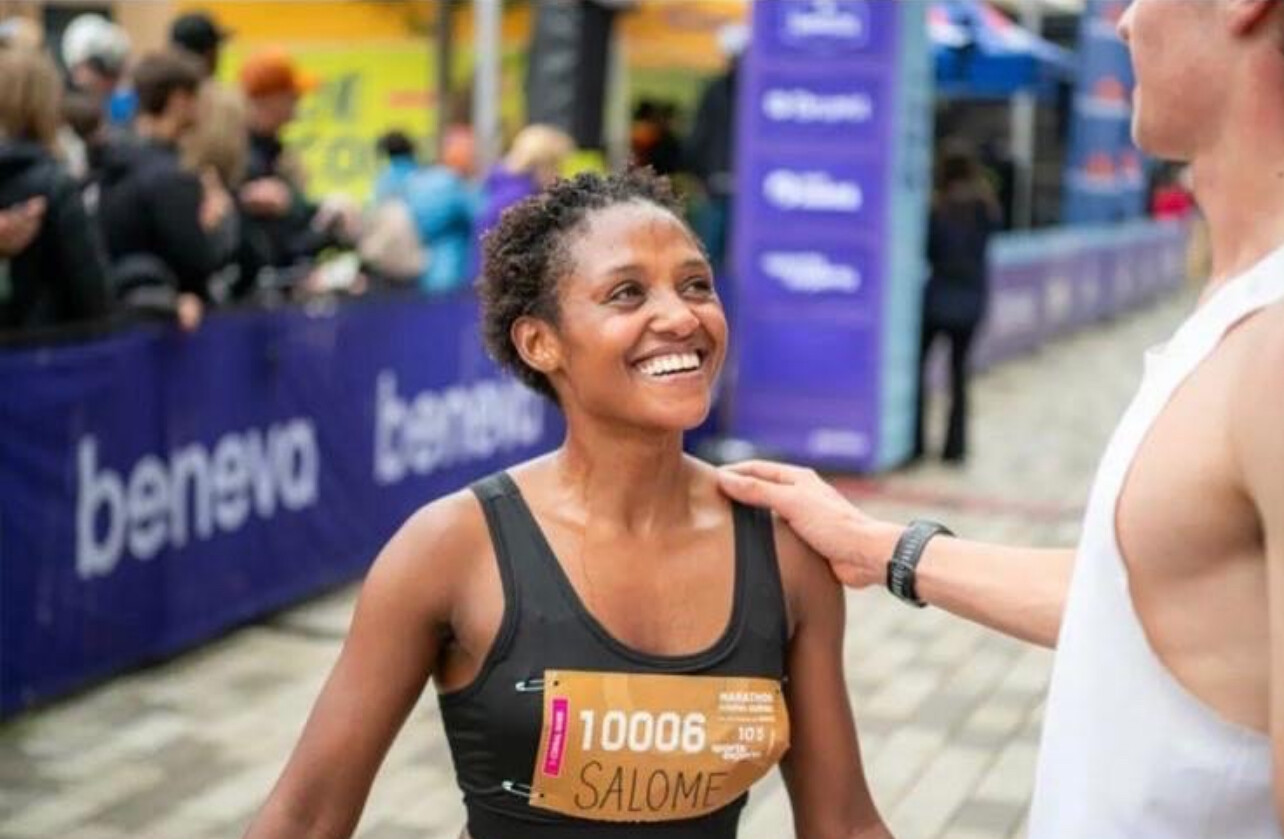
“It’s been three or four years that I have been hoping to do the Toronto Waterfront Marathon,” Nyirarukundo says. “It is a big race, but the timing was difficult before. I was injured and couldn’t participate. This year is the right moment for me to see what I can do. I always feel excited coming to Toronto because I have a good connection with the fans. I’ve run the Toronto 10K three times, and I think that experience will help me in the marathon.”
Her familiarity with the course could indeed be an advantage. The Toronto 10K shares much of its route with the marathon, running along the shores of Lake Ontario. Along with her 2025 victory, Nyirarukundo placed 2nd in both the 2023 and 2024 editions of the event.
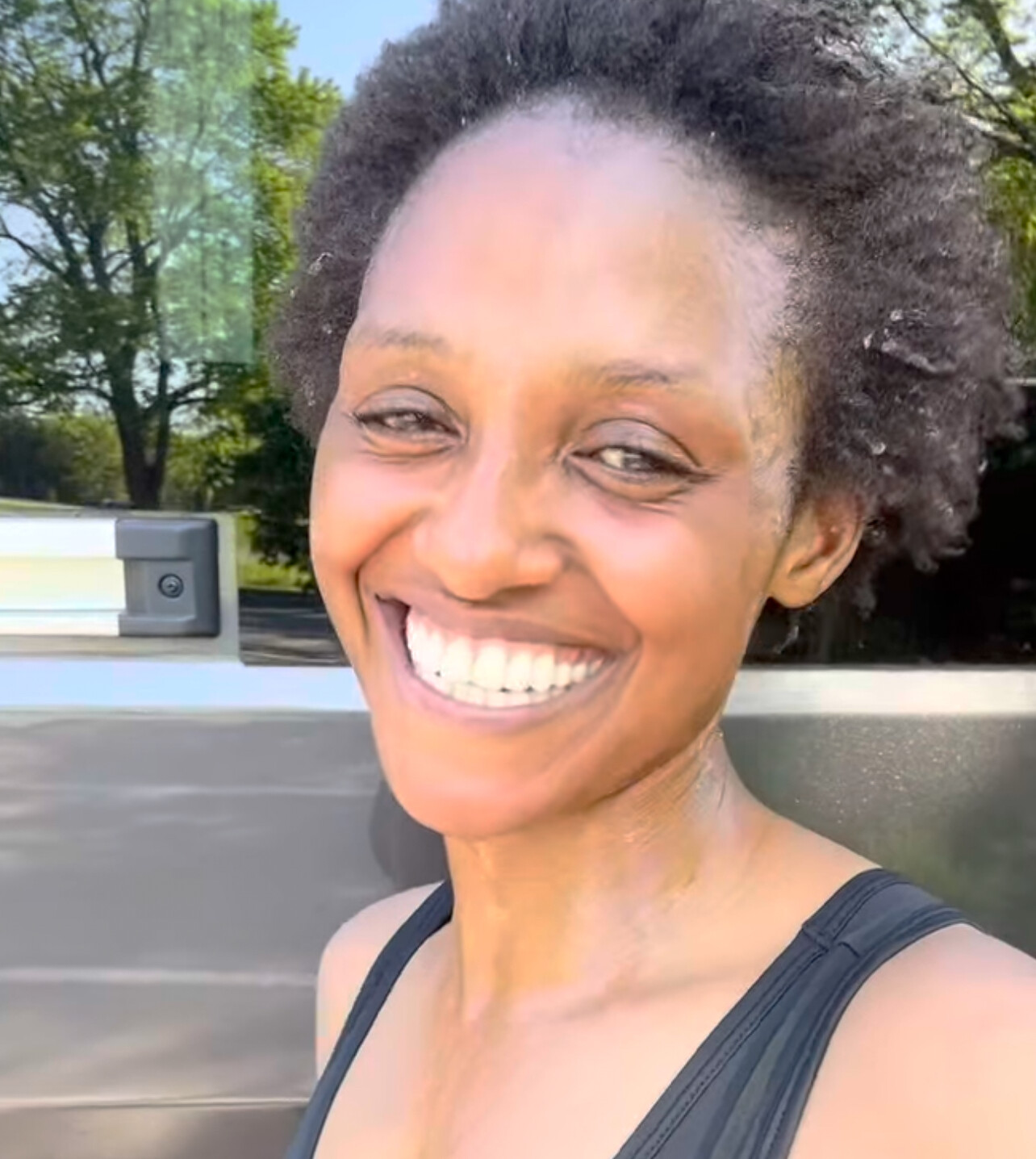
Still just 27, she has already achieved a distinguished international career. She represented Rwanda in the 10,000m at the 2016 Olympic Games and still holds her nation’s records in the 5,000m (15:34.91), 10,000m (31:45.82), and half marathon (1:08:48)—the latter faster than the Canadian national record.
Her talent was recognized early. As a teenager in Kigali, she was signed by Global Sports Communications and trained in Kaptagat, Kenya, alongside Eliud Kipchoge. She recalls him as quiet, humble, and willing to share everyday chores in camp despite his superstar status.
Since moving to Canada, Nyirarukundo has balanced training with working as a personal care worker in two Ottawa hospitals. While grateful for the employment, she admits it’s challenging to combine shift work with high-level training.
“Unfortunately, I am not in the same situation as before,” she explains. “When I ran 1:08:48 for the half marathon, I was training full-time morning and evening. Now I am doing two jobs and then training. It’s not easy, but I have confidence in myself. I believe I can still get back to that level.”
Despite her demanding schedule, she remains competitive. She placed 4th at the 2025 Canadian 10K Championships, finishing ahead of former national record holder Lanni Marchant. Seeing Canadian stars like Natasha Wodak and Malindi Elmore succeed well into their 40s has fueled her determination
“Natasha really inspired me,” Nyirarukundo says. “Last year she was number one in Canada, and I thought about quitting. But then I saw her and Rachel Hannah—very strong athletes—and I thought, ‘If they can do it, I can too.’”
Her friendship with Hannah has been another boost. The two have raced side by side in Toronto for years, and recently they trained together for a 38km long run in Plantagenet, Ontario.
Even with early-morning runs before 6:00 a.m. hospital shifts, Nyirarukundo pushes through, motivated by responsibility for her younger siblings back in Rwanda’s Rutsiro district. “I am mother and father for them,” she says. “Without them, I could not do what I am doing now.”
Balancing family obligations and training hasn’t been easy, but her passion for running remains intact. As she looks toward her Toronto Waterfront Marathon debut, Nyirarukundo has set a clear goal: to run under 2:30.
And she still makes time for life beyond running. “I don’t know how to swim, but I love outdoor camping,” she laughs. “I never did this in Rwanda. This year I’m going to Prince Edward Island for one week of camping at the end of August.”
Nyirarukundo dreams of one day representing Canada. With her mix of talent, resilience, and determination, the TCS Toronto Waterfront Marathon could mark a new beginning for this remarkable athlete.
by Paul Gains
Login to leave a comment
Men’s Elite Field Set for a Sizzling Showdown at the 2025 Berlin Marathon
Berlin, Germany – September 29, 2025 (Race Day)
With its flat, fast course and history of record-breaking performances, the BMW Berlin Marathon has become a magnet for the world’s best distance runners—and this year is no exception.
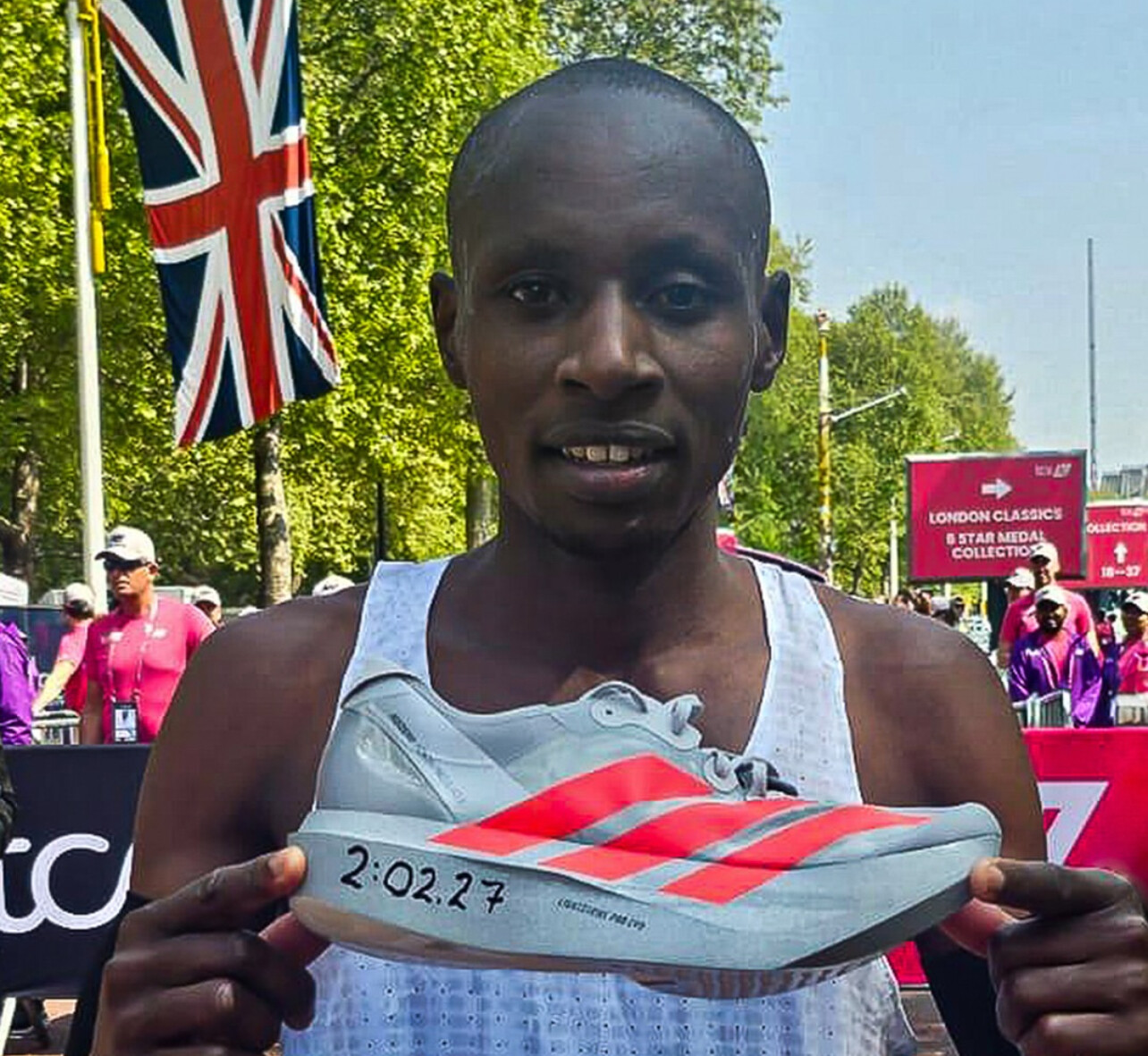
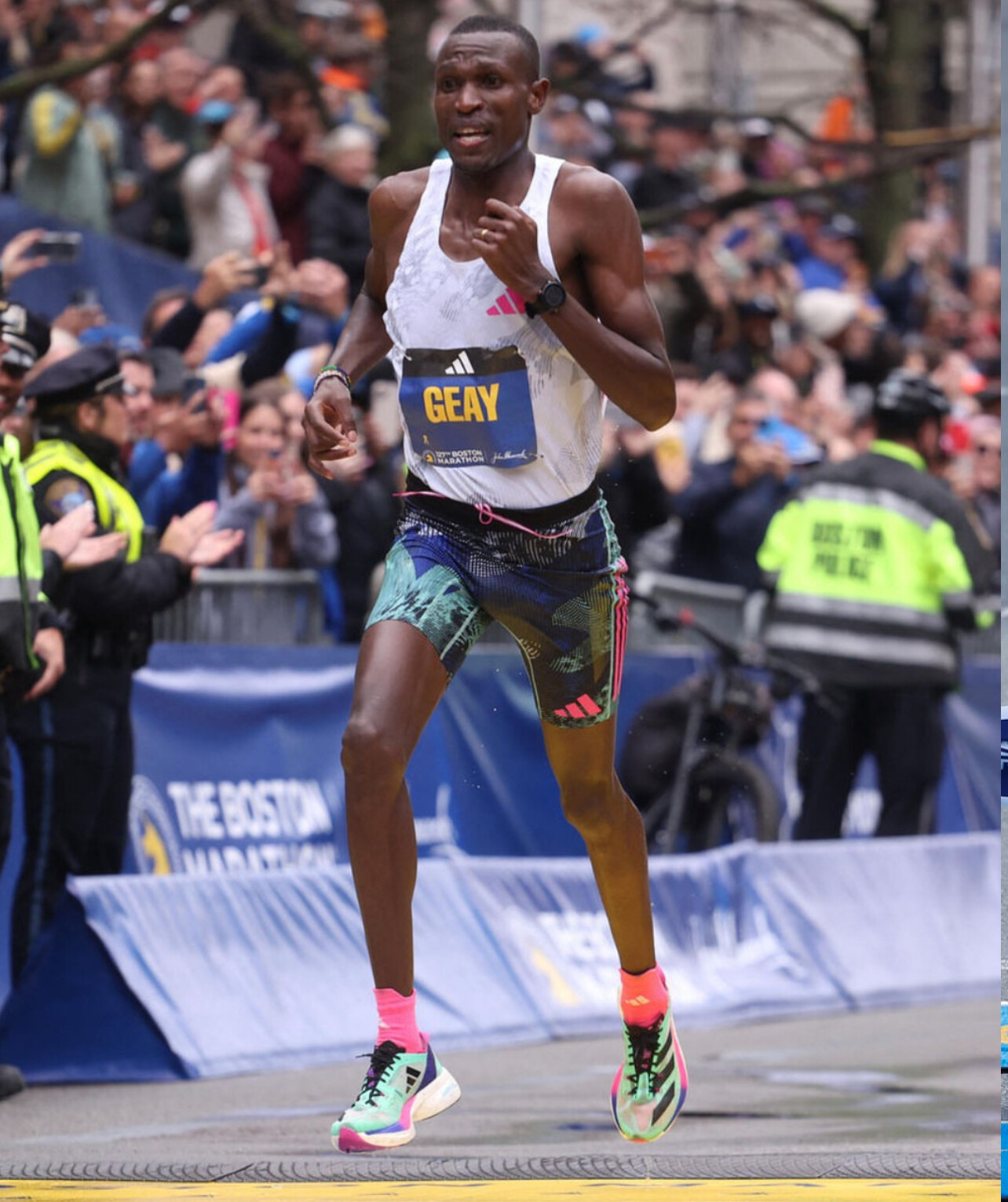
The 2025 men’s elite field is stacked with sub-2:05 talent from Kenya, Ethiopia, Tanzania, and Japan, including several proven champions and emerging stars. On September 29, all eyes will be on Berlin to see if the next marathon milestone can be broken.
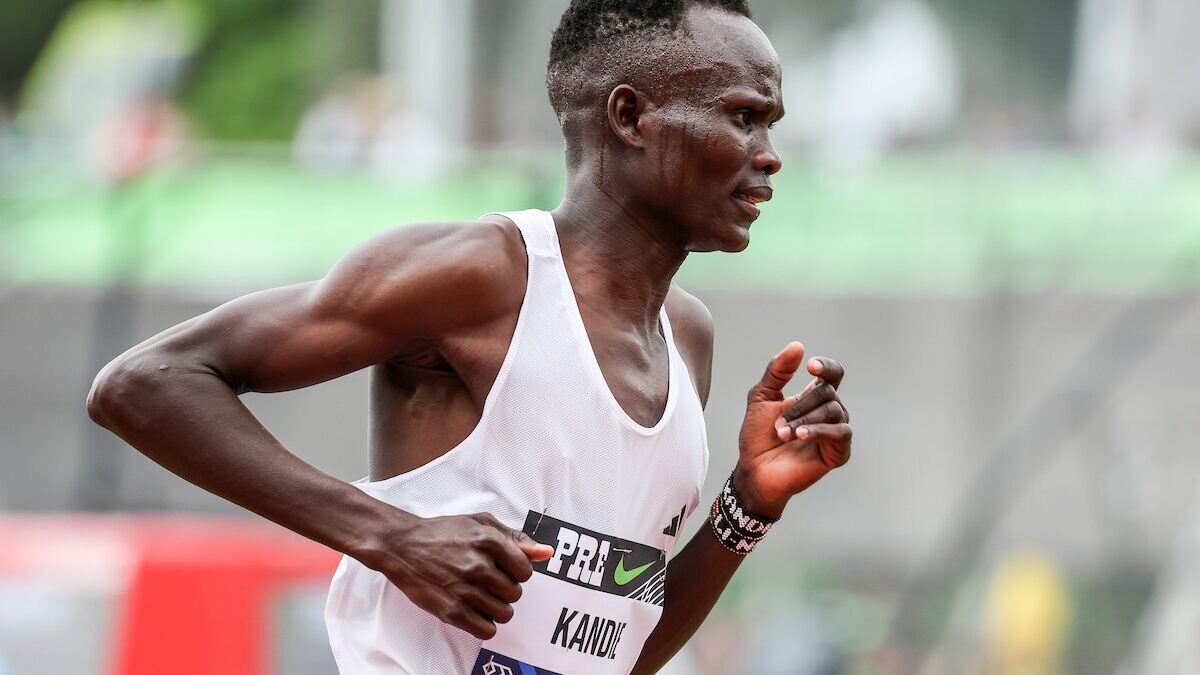
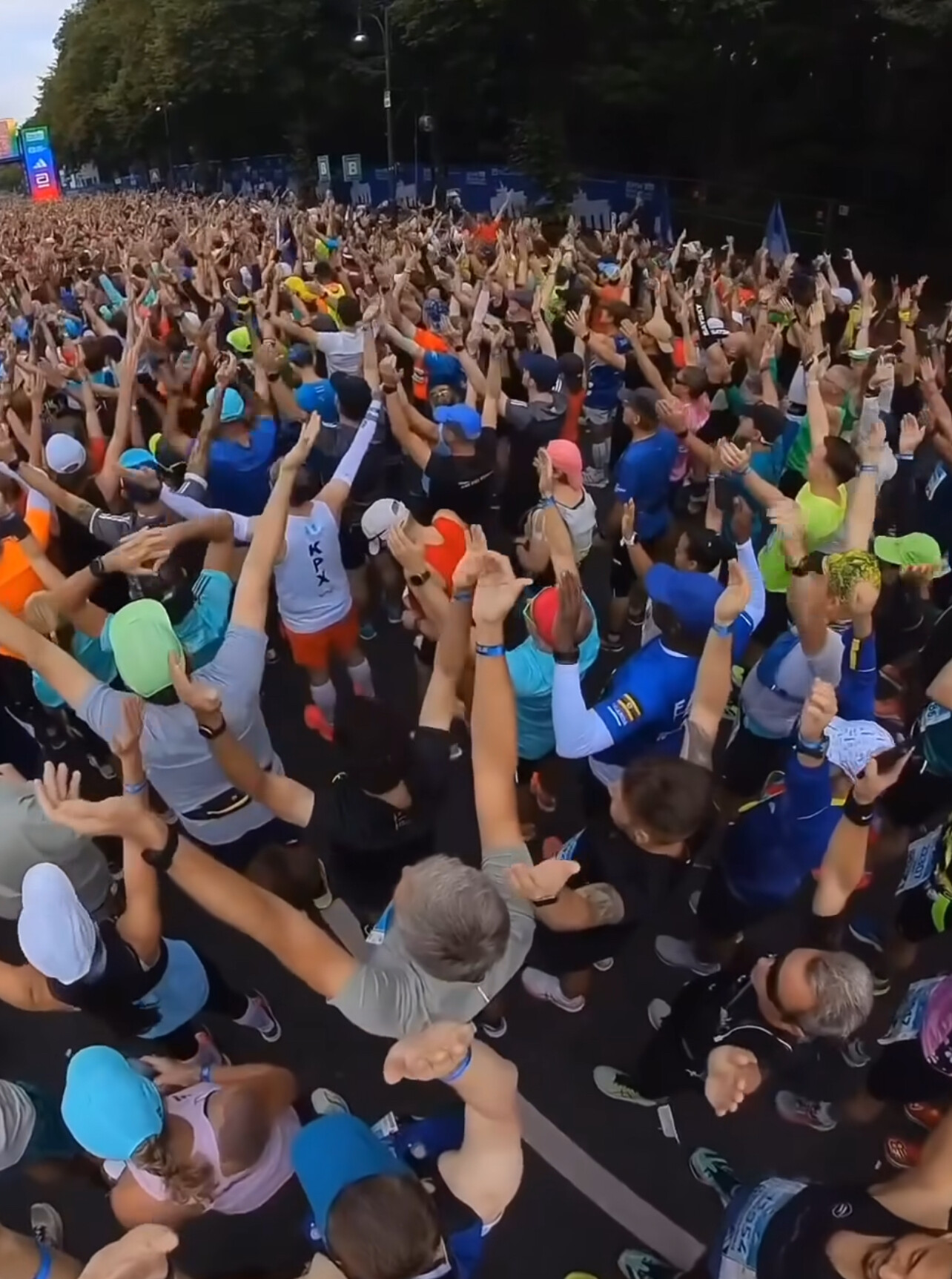
Top Contenders and Their Personal Bests
|
Name |
Country |
Personal Best |
|
Sabastian Sawe |
KEN |
2:02:05 |
|
Gabriel Gerald Geay |
TAN |
2:03:00 |
|
Milkesa Mengesha |
ETH |
2:03:17 |
|
Haymanot Alew |
ETH |
2:03:31 |
|
Guye Adola |
ETH |
2:03:46 |
|
Leul Gebresilase |
ETH |
2:04:02 |
|
Tesfaye Deriba |
ETH |
2:04:13 |
|
Daniel Mateiko |
KEN |
2:04:24 |
|
Haftu Teklu |
ETH |
2:04:42 |
|
Chimdessa Debele |
ETH |
2:04:44 |
|
Kengo Suzuki |
JPN |
2:04:56 |
|
Abel Kirui |
KEN |
2:05:04 |
|
Chala Regasa |
ETH |
2:05:06 |
|
Samwel Mailu |
KEN |
2:05:08 |
|
Yihunilign Adane |
ETH |
2:05:3 |
|
|
|
Kenya and Ethiopia Headline the Race
Kenya’s Sabastian Sawe, with a PB of 2:02:05, enters as the top seed. He’s followed closely by Tanzania’s Gabriel Geay, who made headlines in Boston and New York with aggressive front-running. Ethiopia is sending a deep and dangerous lineup—including Milkesa Mengesha, Haymanot Alew, and veteran Guye Adola (the 2021 Berlin champion).
Daniel Mateiko of Kenya, a former half marathon standout, will look to solidify his position as a full marathon threat, while Abel Kirui, the two-time world champion, continues to defy age with elite performances.
The Global Wildcard: Japan’s Kengo Suzuki
With a 2:04:56 personal best, Kengo Suzuki is the fastest Japanese marathoner ever and could be a serious factor if conditions align. His presence adds global depth to a field heavily dominated by East Africa.
Fast Times Almost Guaranteed
Berlin’s pancake-flat course, combined with cool fall weather and top-tier pacers, means fast times are almost inevitable. With six men holding PBs under 2:04 and over a dozen under 2:05, there’s a strong chance we could see a sub-2:03 winner, or even a new course record.
While the official world record still stands at 2:00:35 (set in 2023 by Eliud Kipchoge), several in this year’s field have the credentials—and ambition—to challenge history.
Race Day Outlook
• Date: Sunday, September 29, 2025
• Course: Flat and record-ready, through the streets of Berlin
• Weather Forecast: Typically cool (expected 11–13°C), ideal for fast times
• Live Coverage: Streaming and TV coverage expected worldwide
Stay tuned to My Best Runs for full coverage, live updates, and post-race analysis from Berlin!
by Boris Baron
Login to leave a comment
BMW Berlin Marathon
The story of the BERLIN-MARATHON is a story of the development of road running. When the first BERLIN-MARATHON was started on 13th October 1974 on a minor road next to the stadium of the organisers‘ club SC Charlottenburg Berlin 286 athletes had entered. The first winners were runners from Berlin: Günter Hallas (2:44:53), who still runs the BERLIN-MARATHON today, and...
more...Genzebe Dibaba: Chasing Greatness on the Roads, Will Berlin 2025 be her moment of redemption?
Where is Genzebe Dibaba?
Once the undisputed queen of the track, the six-time world champion and Olympic 1500m silver medalist has spent recent years grappling with one of the toughest transitions in elite running: the marathon.
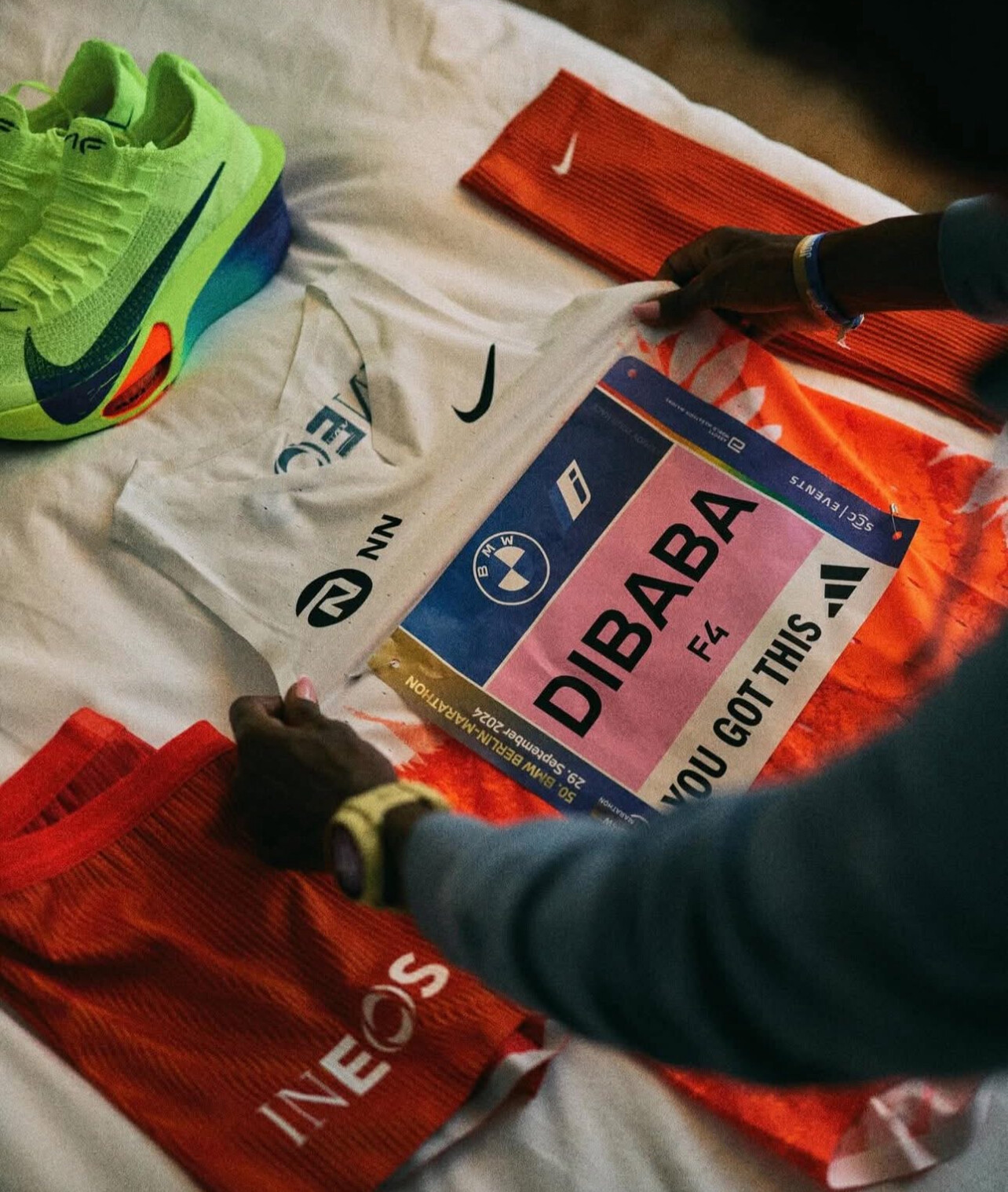
“The marathon is not only a test on race day,” Dibaba said recently. “It challenges every part of you—especially during training.”
Since stepping up to the 42.195-kilometer distance, the journey has been anything but smooth. Known for her devastating finishing kick and fluid stride on the track, Genzebe has found the roads to be an entirely different battleground—one that demands patience, endurance, and humility.
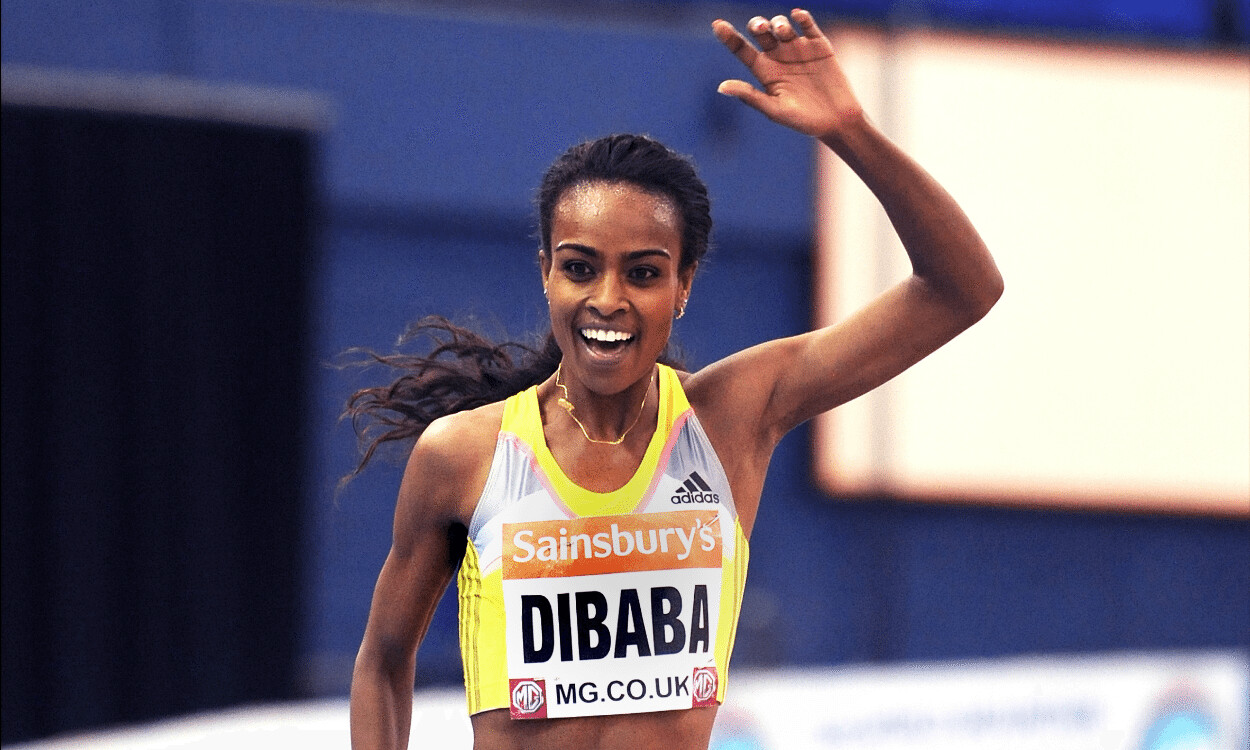
In 2024, the spotlight was on her return to Berlin, home of world records and legendary performances. But the race didn’t go as planned. Dibaba did not finish—a rare DNF for one of the most accomplished athletes of her generation. And just like that, she disappeared from competition.
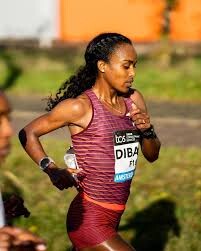
But not from the sport.
Back in the high-altitude terrain of Addis Ababa, Genzebe has been quietly rebuilding. Her training partner is her younger sister, Anna Dibaba—a rising star in her own right. Together, away from the noise, they’ve been logging miles, revisiting fundamentals, and chasing the kind of strength only the marathon demands.
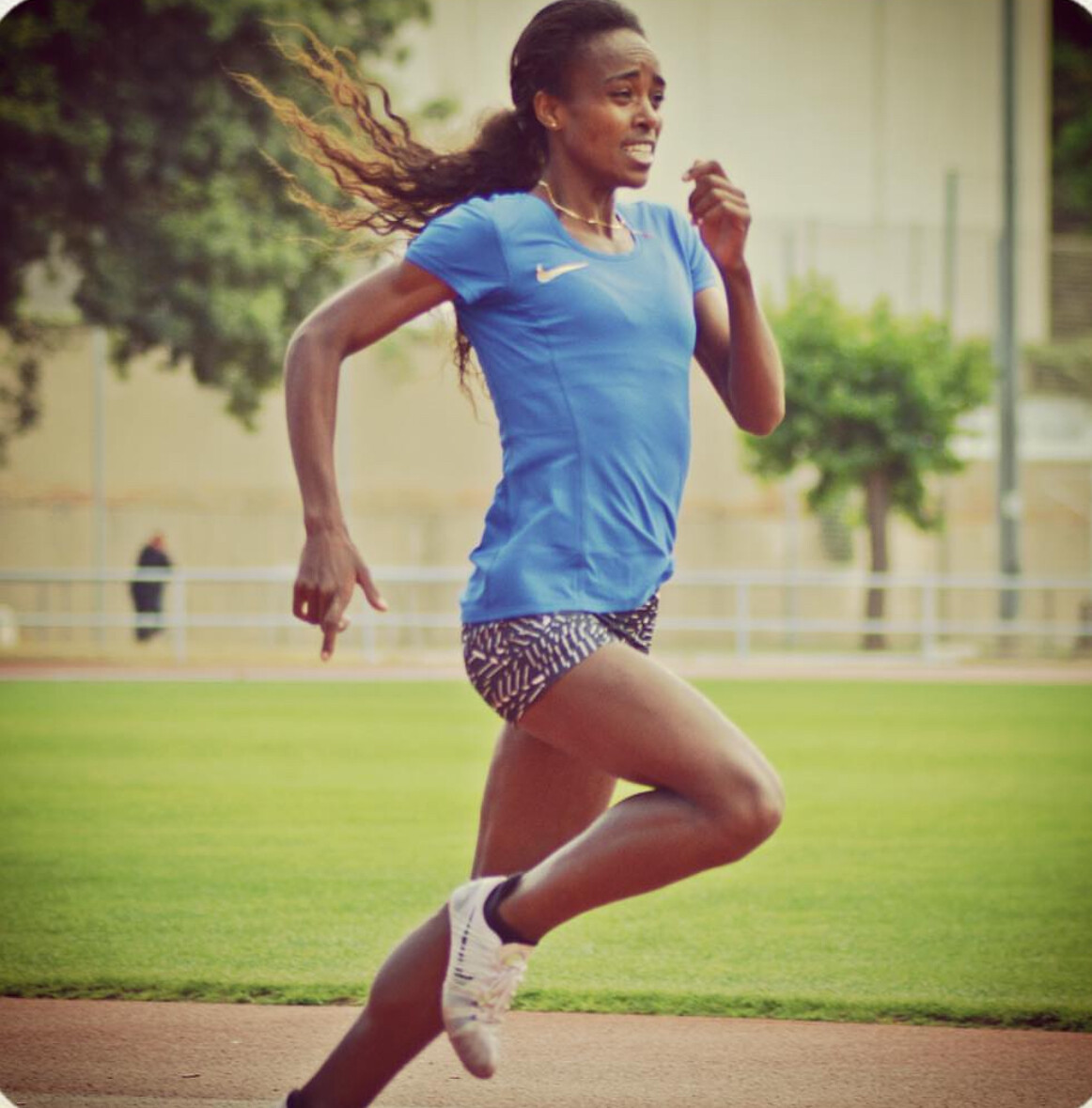
Genzebe’s pedigree remains unquestioned. From junior dominance to world indoor records, from global titles in cross country to Olympic medals on the track—few athletes have ever displayed her range or brilliance. While the marathon has stretched her, she’s shown time and again that she thrives on challenges.
Berlin 2025: A Race of Legends
Now, all eyes are turning once again toward the BMW Berlin Marathon, set for Sunday, September 28, 2025. As one of the six Abbott World Marathon Majors, Berlin is renowned for its flat, fast course and record-breaking performances. Eliud Kipchoge famously broke the world record there in 2022 (2:01:09), and Berlin has hosted more official men’s and women’s world records than any other marathon.
The 2025 edition is expected to feature a deep elite field, with organizers already teasing the return of top contenders from around the world. It’s a race that attracts nearly 50,000 runners and millions of spectators, making it one of the most iconic events on the global calendar.
And the big question lingers:
Will Genzebe Dibaba be among them? Will she return to Berlin in search of redemption and reassert her place among the greats—this time on the roads?
The countdown is on.
And if Genzebe lines up at the start in September, it won’t just be a race.
It will be a statement.
by Boris Baron
Login to leave a comment
Delhi Half Marathon Returns for 20th Edition on October 12, 2025
The 2025 edition of the Delhi Half Marathon is set to light up the streets of India’s capital on October 12, with the iconic Jawaharlal Nehru Stadium serving as both the start and finish point. Celebrating its 20th anniversary, the event remains one of Asia’s premier road races, having earned World Athletics Gold Label status and certification from the Association of International Marathons and Distance Races (AIMS).
At Wednesday’s official launch, former Indian men’s hockey captain and current junior team coach PR Sreejesh, a two-time Olympic bronze medallist, helped usher in the milestone edition.
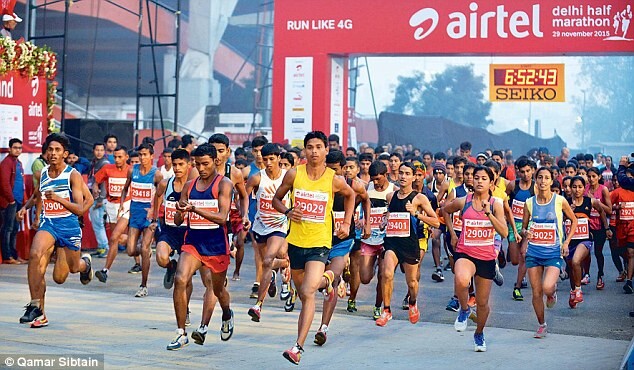
Registration opened July 17 for all race categories—including the Half Marathon, Open 10K, Great Delhi Run, Senior Citizens’ Run, and Champions with Disability—and closes on September 19.

Since its inaugural running in 2005, the Delhi Half Marathon has drawn some of the world’s top distance runners. The 2024 men’s elite title was claimed by Joshua Cheptegei of Uganda, the reigning Olympic 10,000m champion, with a blistering 59:46. On the women’s side, Eilish McColgan of Great Britain took the crown. India’s top finishers were Sawan Barwal and Lili Das, who will likely return with eyes on the national podium.
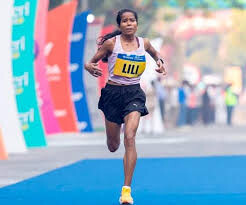
The course records still stand from a memorable 2020 edition: Amedework Walelegn of Ethiopia set the men’s mark at 58:53, while Yalemzerf Yehualaw, also from Ethiopia, holds the women’s record with 1:04:46.
Even marathon legend Eliud Kipchoge is part of the event’s rich history—he won the men’s elite race back in 2016.
With world-class athletes, enthusiastic local support, and a flat, fast course, the Delhi Half Marathon continues to be a must-run event for elites and amateurs alike.
by Boris Baron
Login to leave a comment
Vedanta Delhi Half Marathon
The Airtel Delhi Half Marathon is a haven for runners, creating an experience, that our citizens had never envisaged. The streets of Delhi converted to a world-class running track. Clean, sanitized road for 21.09 kms, exhaustive medical support system on the route, timing chip for runners, qualified personnel to ensure smooth conduct of the event across departments. The race...
more...Rotich and Reline Triumph in Muddy Showdown at Kaptagat Forest Half Marathon - Kaptagat, Kenya — July 12, 2025
On a misty Saturday morning in the high-altitude woodlands of Simotwo, Elgeyo Marakwet County, Gideon Kiprop Rotich and Catherine Reline embraced the mud, mist, and mayhem to win the 2025 Kaptagat Forest Half Marathon. Battling a soaked red clay course shared by Kenya’s finest—including marathon legend Eliud Kipchoge—the two champions rose above the chaos to claim hard-fought victories in the men’s and women’s 21km races.
MEN’S 21KM — Rotich Edges Rivals in Thrilling Sprint Finish

The men’s race quickly became a tactical chess match, played out on unpredictable terrain. Rotich, showing remarkable composure through the slippery climbs and sharp descents, surged in the final kilometer to win in 1:07:02.
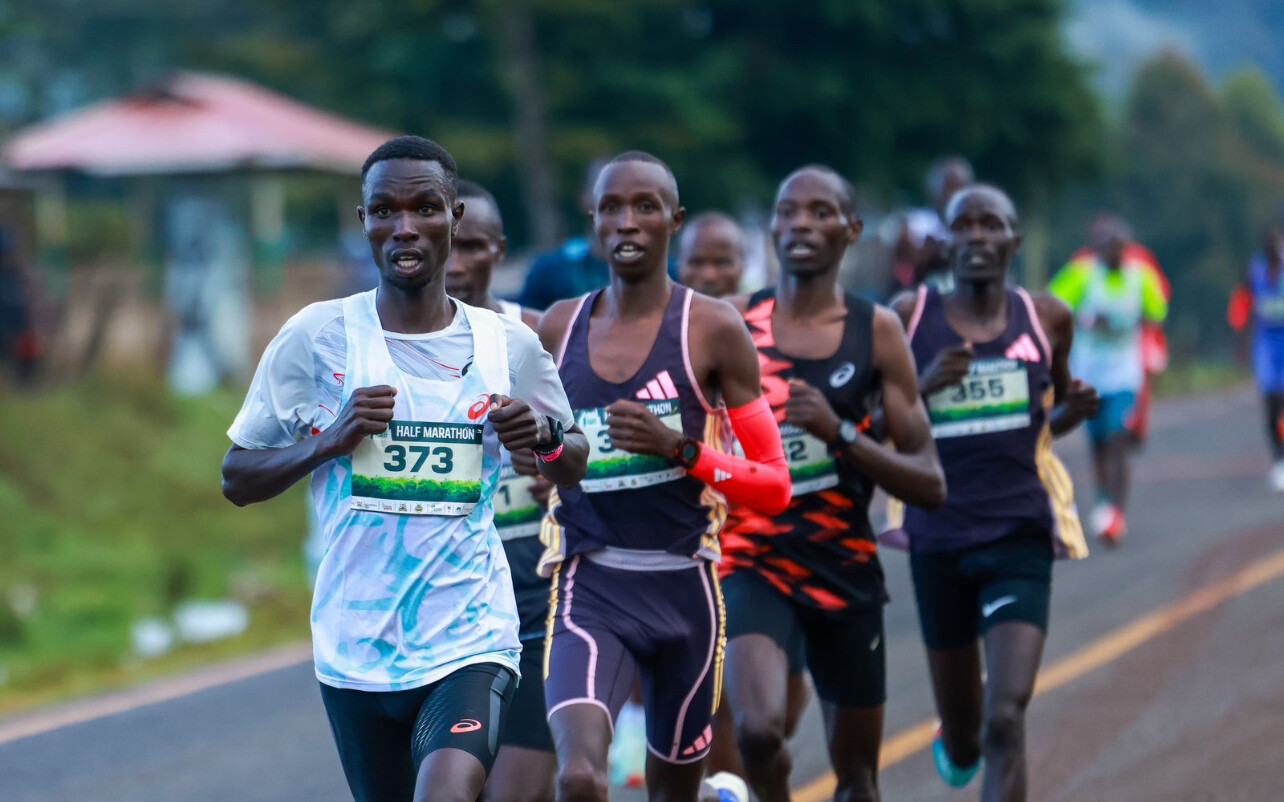
From the outset, he was closely shadowed by Wisley Kipkemoi Yego (Keringet) and Alfred Kipkemoi Cheruiyot, with the trio passing 5K in 14:19, 10K in 32:47, and 15K in 47:21. As the fog thickened and footing worsened, Rotich found a decisive gear on the final descent. Yego finished just two seconds back in 1:07:04, with Cheruiyot another heartbeat behind in 1:07:05.
“You couldn’t push the way you normally would,” said Rotich, his shoes caked with thick mud. “The ground was soft; the air was heavy. But that’s Kaptagat—it doesn’t reward the fastest, it rewards the smartest and toughest.”
Only 16 seconds separated the top five finishers, marking one of the most dramatic conclusions in the event’s recent history.
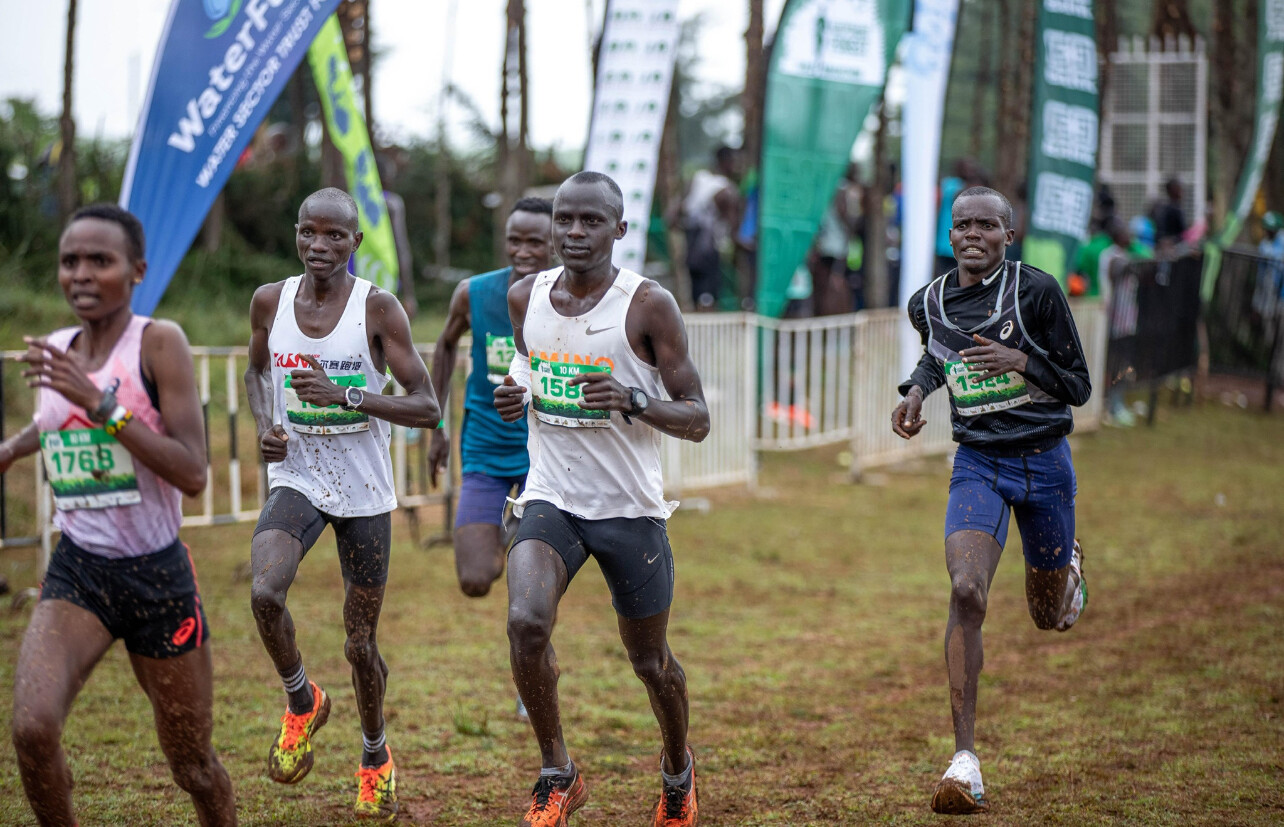
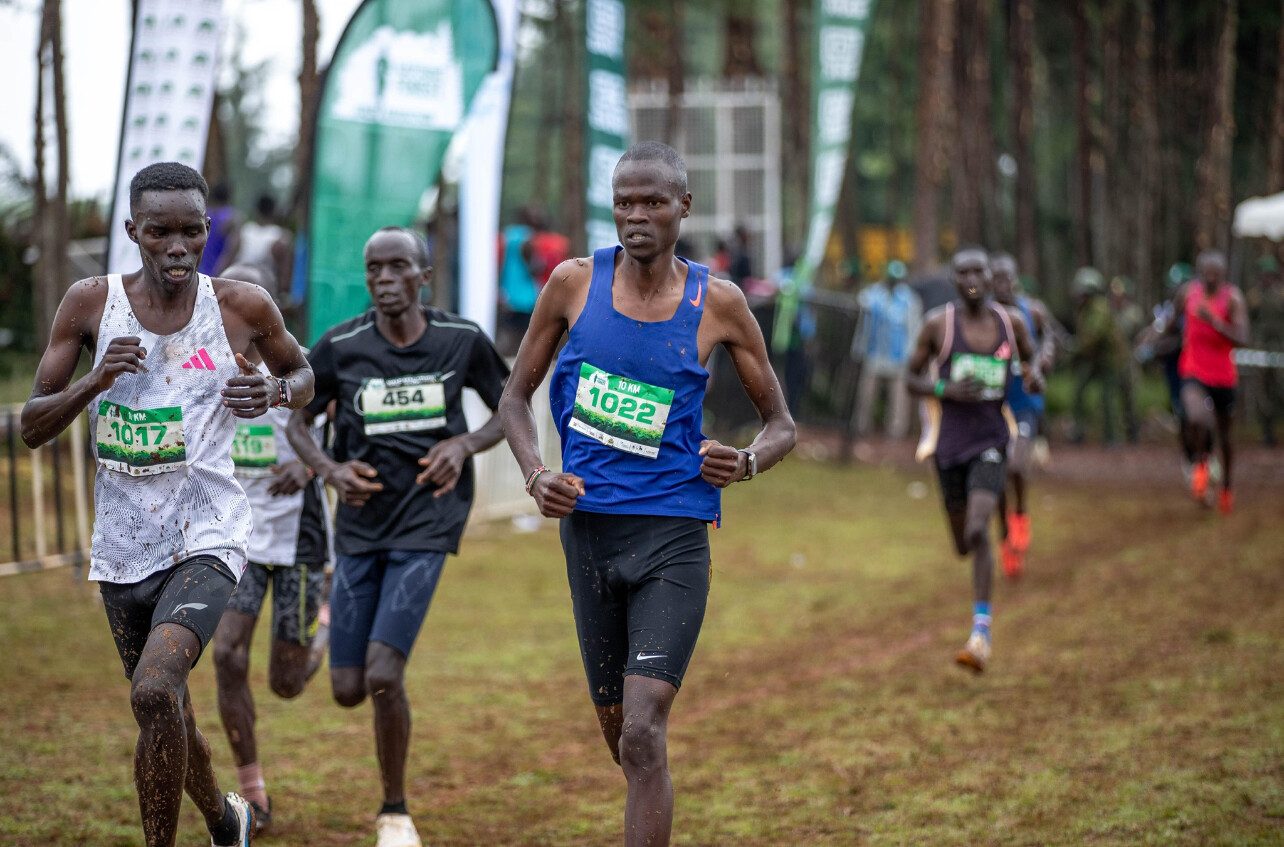
WOMEN’S 21KM — Reline Dominates with Precision and Power
In the women’s race, Catherine Reline executed a masterclass in pacing and poise. She broke away after 10K and never looked back, claiming victory in 1:14:23.
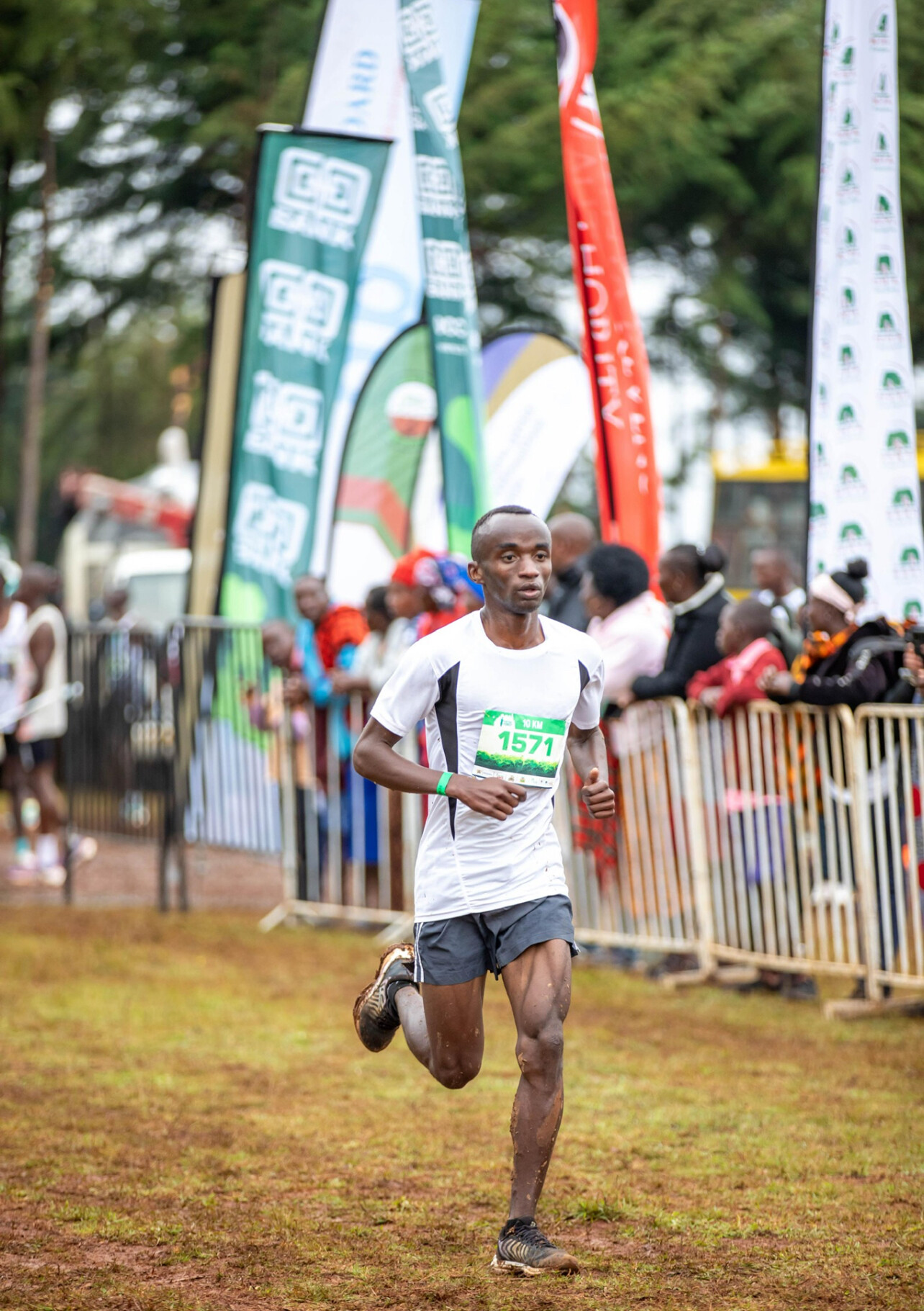
Her 5K split of 16:22 gave early notice of her form, with 10K and 15K reached in 37:33 and 53:39, respectively. Confident and sure-footed through the muddiest stretches, she ran unchallenged to the finish.
“The forest was unforgiving,” Reline said. “But I trusted my rhythm and focused on staying upright through the muddy patches. Once I found my footing, I just kept pressing.”
Vivian Cherotich (1:15:09) and Catherine Peiyoy (1:15:44) rounded out the podium after a gritty chase through the fog-shrouded ridgelines and pine forest trails.
Mud, Mist, and the Magic of Kaptagat
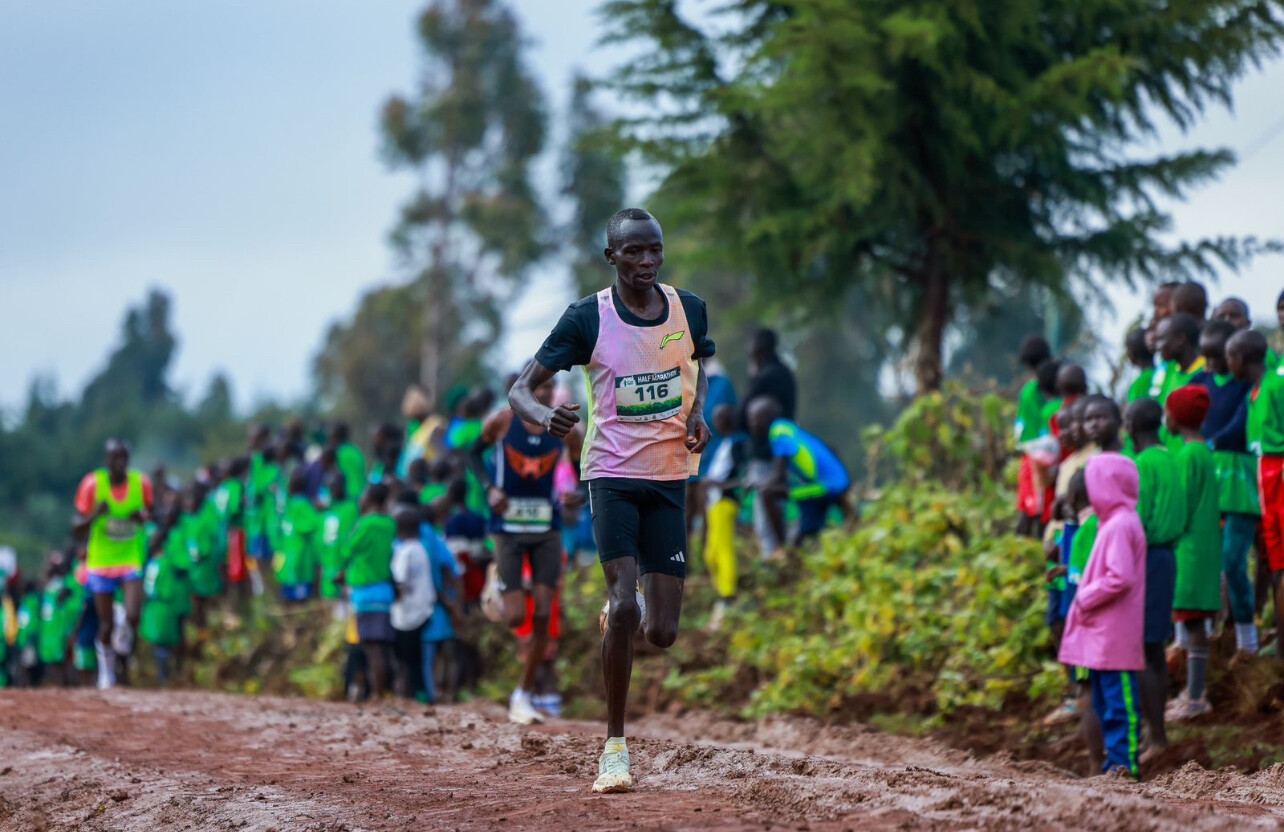
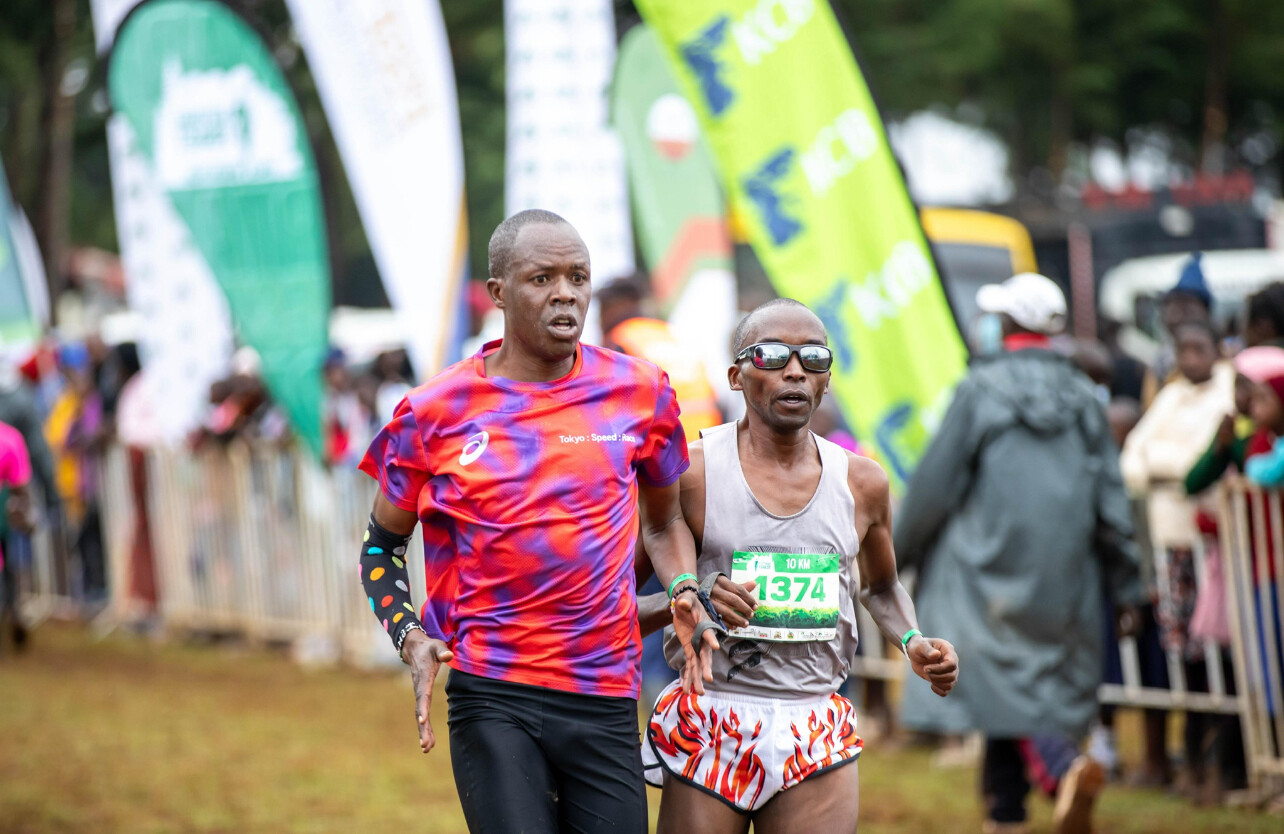
Despite a relentless drizzle and pre-race downpour, the race drew hundreds of spirited spectators. From Simotwo High School to the inner loops of the Kaptagat forest, locals wrapped in shawls, ponchos, and even barefoot stood cheering along the soaked 2,600-meter elevation trail.
Organizers praised the resilience of the athletes and hinted at possible drainage improvements for future editions. But for many, the mud and mist are part of Kaptagat’s mystique.
“This course defines toughness,” said third-place finisher Cheruiyot. “And the crowd’s energy—despite the rain—kept us going.”
As sunlight finally pierced the cloud cover, the 2025 Kaptagat Forest Half Marathon cemented its reputation once again: raw, real, and one of Kenya’s toughest tests of endurance.
Top 10 Results – Men’s 21km
1. Gideon Kiprop Rotich – 1:07:02
2. Wisley Kipkemoi Yego – 1:07:04
3. Alfred Kipkemoi Cheruiyot – 1:07:05
4. Kalipus Lomwai – 1:07:12
5. Stephen Kimutai Kibet – 1:07:18
6. Philemon Kiprotich Konor – 1:07:35
7. Timothy Kiptoo – 1:07:56
8. Patrick Mosin – 1:08:01
9. Noah Kipkemboi – 1:08:18
10. Jonah Belio – 1:08:21
Top 6 Results – Women’s 21km
1. Catherine Reline – 1:14:23
2. Vivian Cherotich – 1:15:09
3. Catherine Peiyoy – 1:15:44
4. Gladys Longari – 1:15:48
5. Beatrice Cheserek – 1:16:49
6. Gladys Jeptepkeny – 1:17:33
by Robert Kibet
Login to leave a comment
Sydney Marathon Attracts Another Star: Sifan Hassan Joins Eliud Kipchoge for August Showdown
The 2025 Sydney Marathon just got even more exciting.
Already making global headlines with the announcement that world record holder Eliud Kipchoge ?? would headline the event, organizers have now confirmed that Dutch star Sifan Hassan ?? will also line up on Sunday, August 31.
This marks a major development in the race’s bid to join the World Marathon Majors circuit. By bringing together two of the sport’s biggest names, Sydney is positioning itself as one of the must-watch marathons of the year.
Kipchoge, a two-time Olympic marathon gold medalist and widely regarded as the greatest marathoner of all time, will be running on Australian soil for the first time. Meanwhile, Hassan, the reigning London Marathon champion and one of the most versatile distance runners in history—with Olympic medals in the 1500m, 5000m, and 10,000m—is looking to build on her marathon legacy.
Both Kipchoge and Hassan bring massive global attention to any race they enter. Their participation is not only a coup for Sydney but also a sign of the growing competitiveness of international marathon events outside the traditional six majors.
The 2025 edition of the Sydney Marathon promises to be one of the most watched marathons of the year.
Stay tuned for more updates as the elite field continues to build.
by Boris Baron
Login to leave a comment
Sydney Marathon
The Sydney Marathon is a marathon held annually in Sydney, Australia. The event was first held in 2001 as a legacy of the 2000 Summer Olympics, which were held in Sydney. In addition to the marathon, a half marathon, 9 kilometres (5.6 mi) "Bridge Run", and a 3.5 kilometres (2.2 mi) "Family Fun Run" are also held under the banner...
more...Sebastian Sawe Chooses Berlin Over World Championships, Eyes Fast Time on Record-Breaking Course
Kenya’s marathon sensation Sebastian Sawe has confirmed he will compete in the 2025 Berlin Marathon this September, opting out of the World Athletics Championships in Tokyo.
The decision comes after a remarkable start to Sawe’s marathon career, where he has already posted two of the fastest times in history. He won his debut in Valencia in December 2024 with a world-leading 2:02:05, then followed it up with another dominant victory at the 2025 London Marathon, clocking 2:02:27.
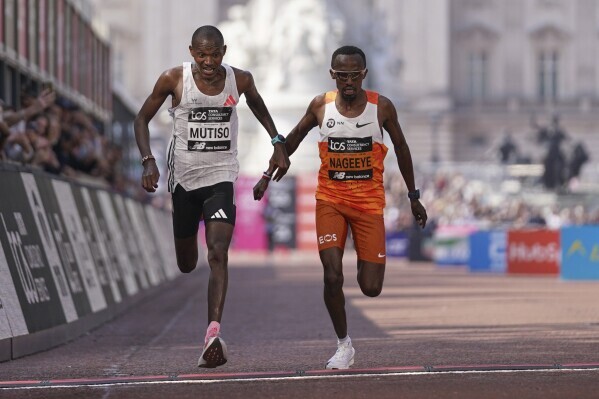
Many had expected Sawe to headline Kenya’s men’s team for the marathon at the World Championships in Tokyo on September 15. However, with the Berlin Marathon scheduled just six days later, the 30-year-old confirmed he is focusing solely on Berlin.

“I am preparing for Berlin,” Sawe stated, noting that while he aims to run a fast time, chasing a world record is not currently the goal. “It’s too early to talk about a world record. It takes time and clear planning to achieve it.”
The Berlin course is renowned as the fastest in the world, with 13 world records set on its streets. The current men’s marathon world record is 2:00:35, set by the late Kelvin Kiptum at the 2023 Chicago Marathon. Kiptum broke the previous record of 2:01:09 set by Eliud Kipchoge—who himself has won Berlin five times.
Like Kiptum, Sawe burst onto the marathon scene with a historic debut. Their similarities have drawn comparisons, especially with Sawe’s smooth transition from half marathon success to world-class marathon victories.
All eyes will now be on Berlin to see just how fast Sawe can go on a course that has repeatedly rewritten the marathon history books.
by Boris Baron
Login to leave a comment
BMW Berlin Marathon
The story of the BERLIN-MARATHON is a story of the development of road running. When the first BERLIN-MARATHON was started on 13th October 1974 on a minor road next to the stadium of the organisers‘ club SC Charlottenburg Berlin 286 athletes had entered. The first winners were runners from Berlin: Günter Hallas (2:44:53), who still runs the BERLIN-MARATHON today, and...
more...Wilson Kiprugut Chumo: Kenya’s First Olympic Medalist Who Opened the Door for a Nation of Champions
When Wilson Kiprugut Chumo crossed the finish line of the 800 meters at the 1964 Tokyo Olympic Games, he wasn’t just securing a bronze medal—he was making history. As the first Kenyan and the first African to ever win an Olympic medal, Kiprugut laid the foundation for generations of middle- and long-distance dominance by Kenyan athletes on the global stage.
Born in 1938 in Kericho, Kenya, Kiprugut’s journey to Olympic glory began humbly. A natural athlete, he served in the Kenyan Army where his running talent was noticed and nurtured. With limited access to elite training or facilities, Kiprugut relied on raw talent, discipline, and sheer determination.
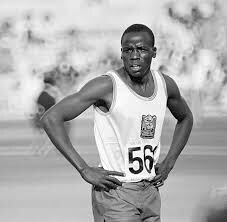
At the 1964 Tokyo Games, he surged into the international spotlight with his brilliant bronze in the men’s 800 meters. Four years later, at the 1968 Olympics in Mexico City, he returned even stronger, earning a silver medal and further establishing Kenya as a rising force in athletics.

Kiprugut’s pioneering legacy is profound. His breakthrough showed that athletes from Kenya—and Africa at large—could not only compete but thrive on the world stage. The floodgates opened. Just a decade later, names like Kip Keino, Henry Rono, and eventually Eliud Kipchoge would become synonymous with distance running greatness.
Today, Kiprugut is celebrated not only for his historic medals but for what they represent: the birth of Kenya’s unparalleled Olympic legacy. More than 60 years after Tokyo 1964, his influence continues to ripple across tracks around the world.
by Boris Baron
Login to leave a comment
Olympic 5000m medalist Edwin Soi joins new KATA Running Camp in Kericho — a unique Kenyan training program blending elite coaching and community impact.
From Olympic bronze to farming for the future, Edwin Soi’s journey reflects both speed and sustainability.
In the world of distance running, Edwin Soi is a name etched in excellence. At the 2008 Beijing Olympics, Soi captured the bronze medal in the 5000 meters, finishing with a time of 13:06.22behind Kenenisa Bekele and Eliud Kipchoge—an iconic race that cemented his place among the greats of Kenyan running.
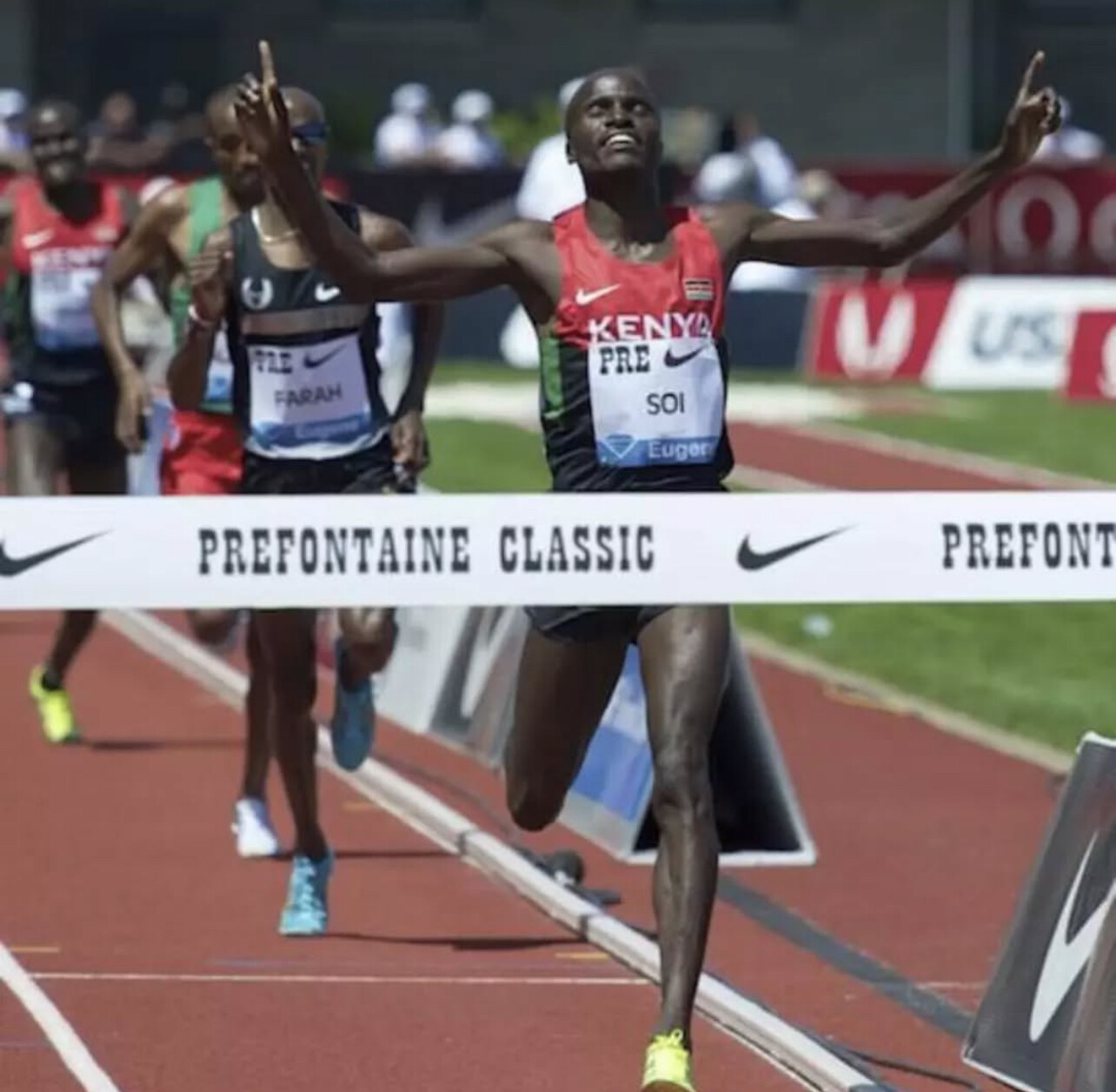
Now, over 15 years later, Soi continues to perform at an elite level. In early 2025, he placed on the podium at a major half marathon in Poland, proving that his speed and endurance have stood the test of time. But the accomplished Olympian is now expanding his impact beyond the track.
This year, Soi has teamed up with Bob Anderson, the founder of Runner’s World and the visionary behind the Kenyan Athletics Training Academy (KATA). Together, they are launching a unique initiative in Kericho, Kenya that combines world-class training with sustainable farming.

“I am very excited to be working with Bob Anderson on this new, unique program,” says Soi. “Bob has created something very special for athletes, and combining it with his ideas about farming KATA Potatoes gives us the opportunity to be sustainable. It’s perfect.”
A Vision Rooted in History
Bob Anderson’s connection to Kenyan running spans nearly four decades.
“I first traveled to Kenya in 1987 and saw and met many runners. I knew then that a program like what we have now set up was needed,” Anderson explains. “I returned with my wife Catherine in 2014 and met Elam and Joel. That’s when the idea for the Kenyan Athletics Training Academy (KATA) in Thika really started to take shape.”

KATA officially opened in 2019, offering elite Kenyan athletes a base to train and grow. But the vision didn’t stop there.
In 2023, Anderson and longtime friend Brock Hinzmann (last photo) a 2:19 marathoner from Los Altos Hills, California, piloted the first KATA farm. The goal was to integrate agriculture into athlete development—creating a model where training and sustainability go hand in hand.
“We established a KATA farm in 2023 working with Brock, but the program needed some refinements. I finalized our new format in May of 2025. I told Edwin Soi about our program and he told me he loved the idea and jumped right on it,” says Anderson.
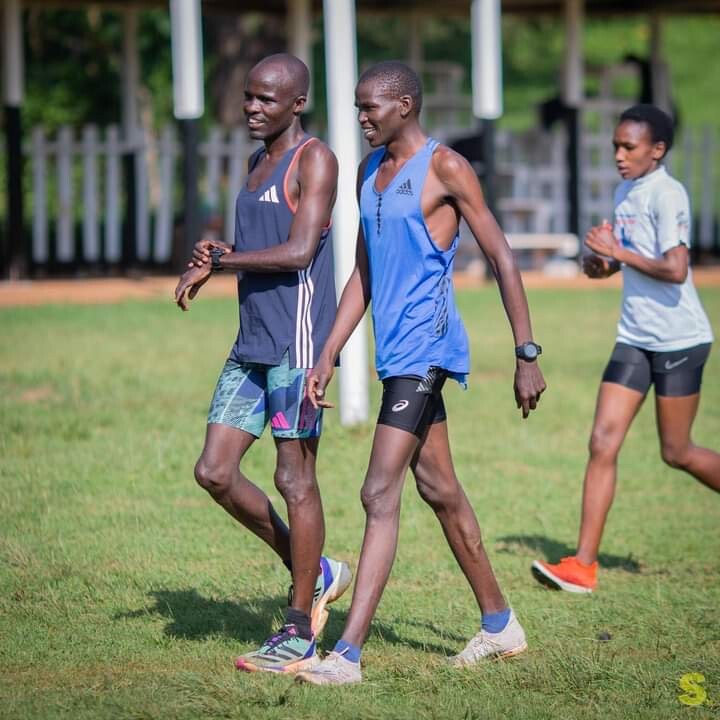
Kuresoi: A New Chapter
Now, with Soi’s leadership, the KATA Running Camp and Potato Farm in Kuresoi is set to become a flagship model for the future. Athletes will not only receive top-level training from one of the greatest distance runners of his generation, but they’ll also participate in sustainable farming practices—planting, maintaining, and harvesting KATA-branded potatoes.
The program provides housing, coaching, food, and competition opportunities—with the added benefit of long-term revenue from agriculture. It’s a model designed not just to develop athletes, but to support their lives beyond running.
“Edwin Soi brings credibility, passion, and wisdom to this project,” says Anderson. “It’s not just about winning races anymore—it’s about building something that lasts.”
Looking Ahead
With KATA camps now expanding across Kenya—including recent launches in Kapcherop, Molo, Nyandarua, and Kuresoi—the partnership between Bob Anderson and Edwin Soi represents a new chapter in Kenyan running. One where elite performance and local empowerment go hand in hand.
Soi’s journey—from Olympic bronze to coaching, mentoring, and planting the seeds of a new future—demonstrates what’s possible when world-class talent meets a visionary purpose.
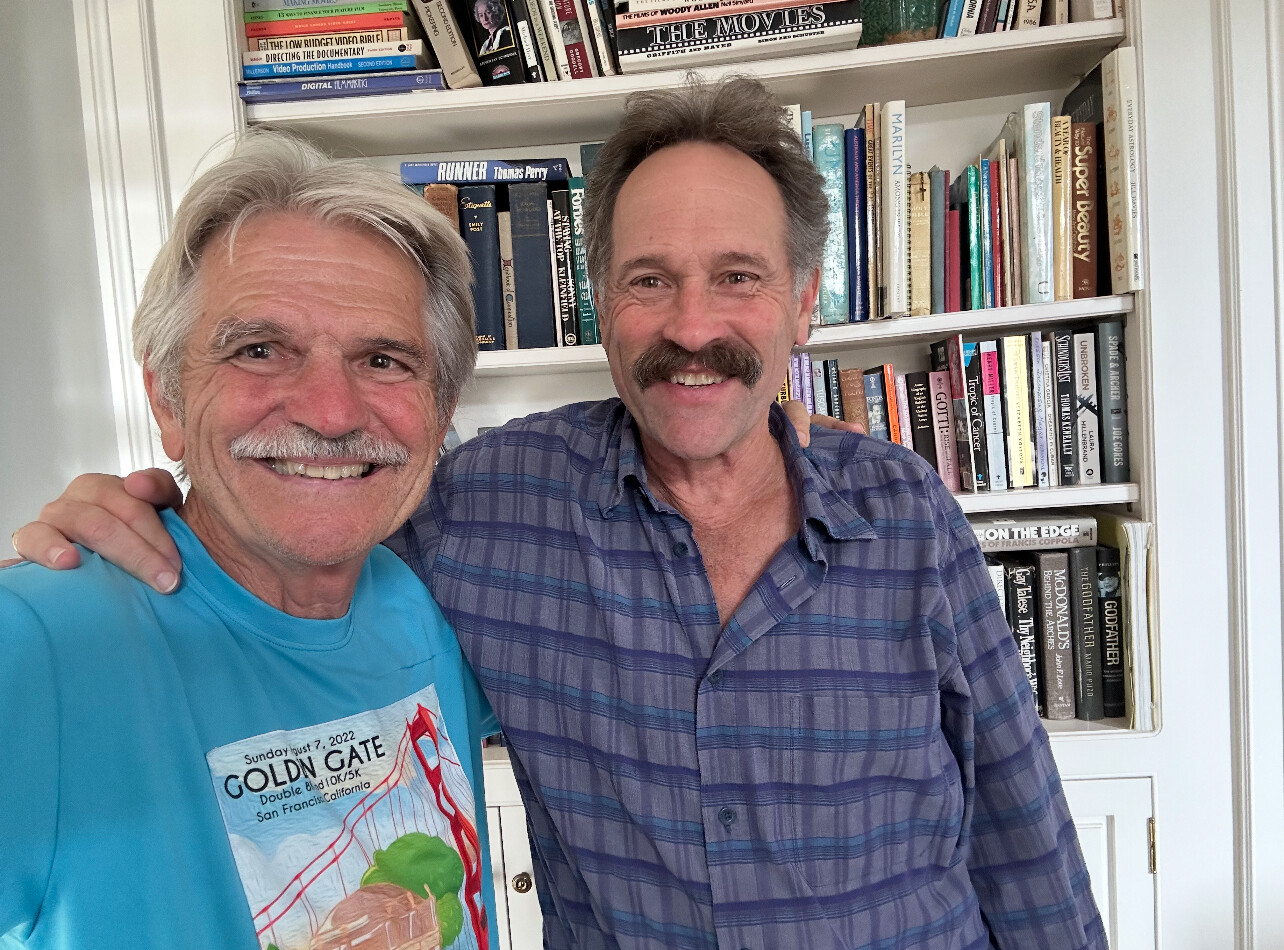
by Boris Baron
Login to leave a comment
Super Shoes or Super Runners? How Carbon-Plated Racing Shoes Are Reshaping the Distance Running World
A Bold Step Forward—or Too Much?
The eye-catching shoes in the images, with their bright yellow color and radical stack height, exemplify the cutting-edge engineering behind today’s carbon-plated distance racing shoes. These models, possibly from Puma’s Nitro range, showcase an exaggerated rocker design, thick midsoles, and strategically placed carbon plates, all intended to maximize energy return. However, this aggressive design pushes the limits of World Athletics regulations, which restrict stack heights to a maximum of 40mm for road races. If these shoes exceed that, they would be deemed illegal in sanctioned competitions—a fine line that highlights the tension between innovation and fairness in modern distance running.
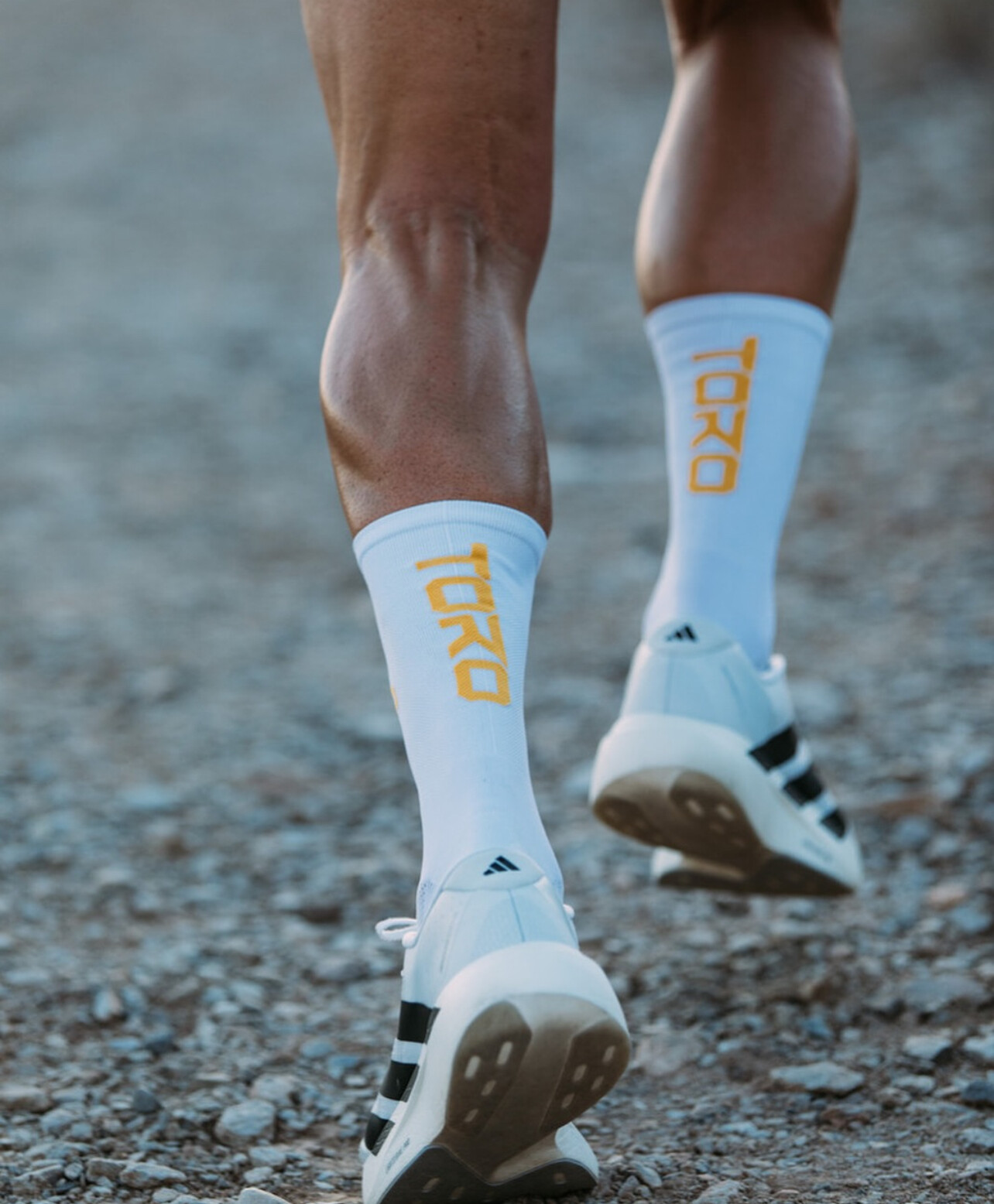
Over the past few years, the distance running community has witnessed a revolution, not just in athletic performance but in technology. At the heart of this transformation are the carbon-plated “super shoes,” with models like the Nike Alphafly 3, Adidas Adizero Pro Evo 1, and Saucony Endorphin Elite capturing headlines—and finish lines.
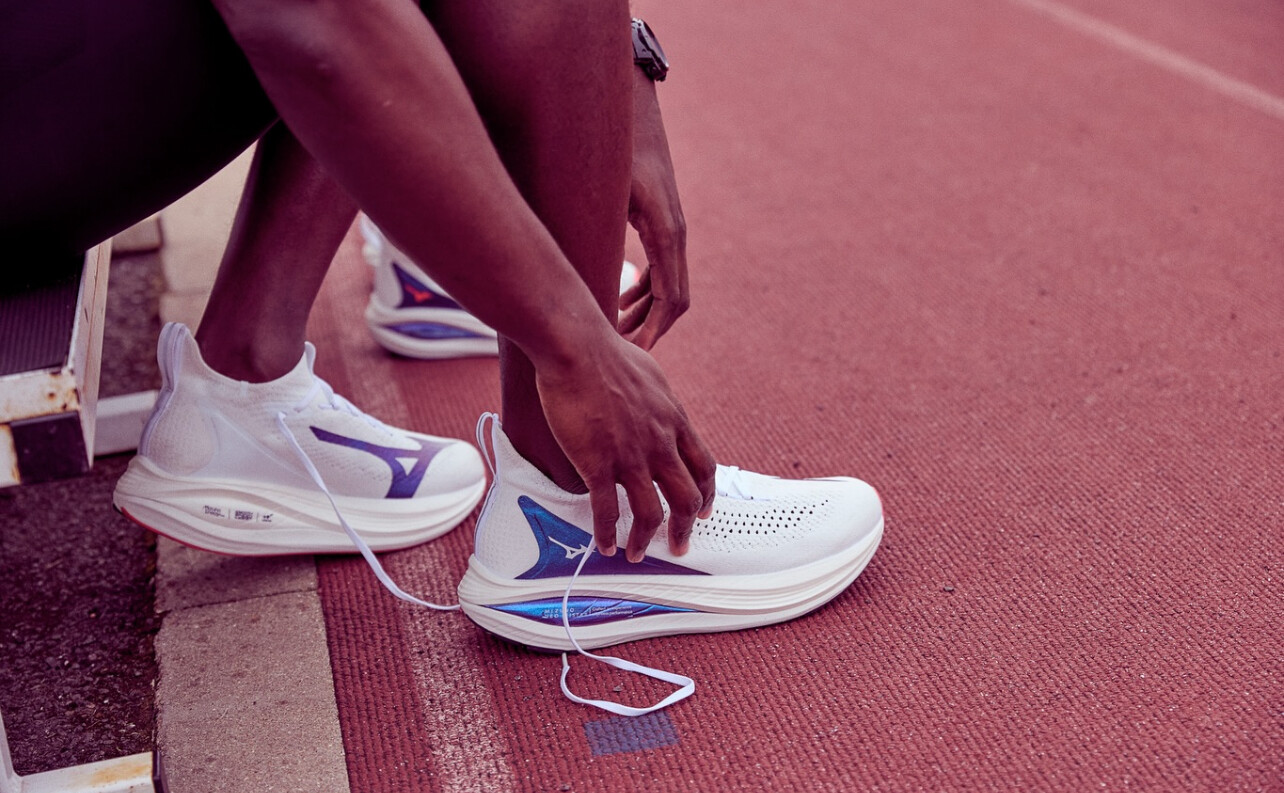
These shoes are more than just a flashy innovation. They represent a fusion of engineering, biomechanics, and material science aimed at optimizing energy return and minimizing fatigue. The secret lies in their construction: a lightweight, resilient foam midsole paired with a rigid carbon-fiber plate that creates a propulsive effect. Research has shown these super shoes can improve running economy by up to 4%, translating into crucial seconds—or even minutes—shaved off race times for elite athletes.
Marathon world records and personal bests are being rewritten at a blistering pace. From Eliud Kipchoge’s sub-two-hour marathon in a prototype Nike shoe to Tigst Assefa’s stunning women’s world record at the Berlin Marathon, the combination of human talent and advanced footwear is undeniable.
However, this technological leap hasn’t come without controversy. Critics argue that super shoes are blurring the line between natural ability and mechanical advantage, creating an uneven playing field. Access is also a concern: with many of these models retailing at $250 or more, elite athletes and well-funded programs often have a leg up on competitors who can’t afford the gear. Some purists feel this shift detracts from the simplicity and rawness of the sport, which historically prized grit and determination over gear.
Yet others argue that innovation is inevitable. After all, every era of distance running has had its technological advances, from cinder to synthetic tracks, from wool to moisture-wicking gear. Super shoes are merely the latest chapter in this ongoing evolution. They offer athletes a tool—how they use it is still up to them.
For amateur runners, these shoes are not just for the elites. Weekend warriors chasing personal records have embraced carbon-plated models, with many reporting improvements in comfort and reduced post-race soreness. But it’s essential to note that no shoe can replace proper training, nutrition, and race strategy.
Looking ahead, the super shoe debate will likely continue, especially as brands develop even more advanced models. World Athletics, the sport’s governing body, has already implemented regulations on shoe design and stack height to maintain some level of fairness.
In the end, the question remains: are we witnessing the rise of super runners, or is this the dawn of a new era where gear becomes as crucial as training? Either way, carbon-plated racing shoes have changed distance running forever—and there’s no turning back.
"As a master runner I like a shoe that does not have such a thick sole," says 77 year old lifetime runner Bob Anderson. "I have taken a few falls and these new super shoes could be a problem."
by Boris Baron
Login to leave a comment
Elite Runner Spotlight: Lessons from Eliud Kipchoge's Training Regimen
Eliud Kipchoge is one of the most dominant distance runners of our time. With multiple Olympic gold medals and world records under his belt, Kipchoge's training regimen is of great interest to runners around the world. Let's take a closer look at his approach to training and what we can learn from it.
Kipchoge's Training Philosophy

Kipchoge's training philosophy is centered around consistency, patience, and progressive overload. He believes in building a strong foundation of endurance through consistent training, and then gradually increasing the intensity and volume of his workouts.

Key Components of Kipchoge's Training
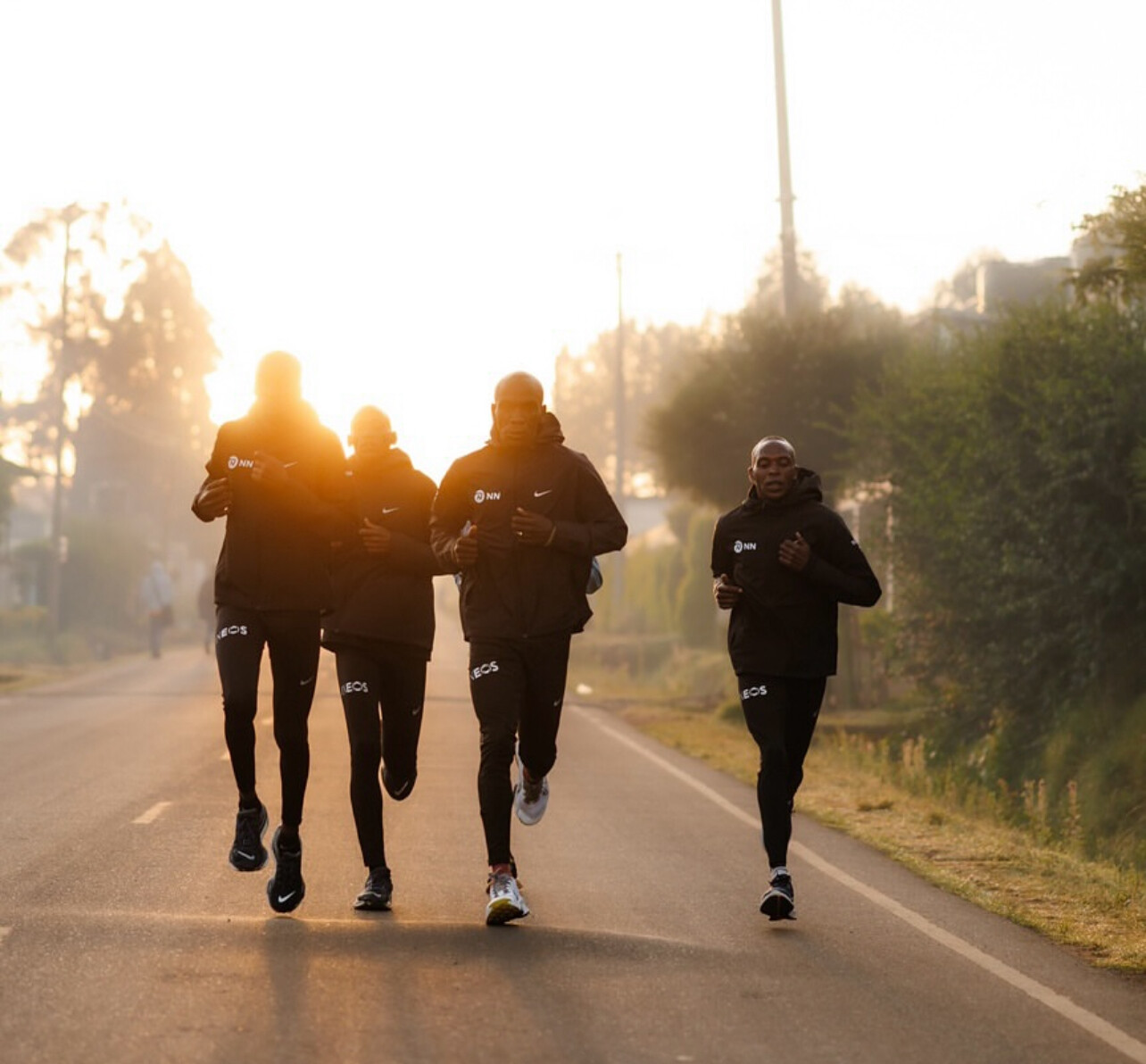
1. *High-Volume Training*: Kipchoge is known for his high-volume training, often running 93-124 miles per week. This high volume helps him build a strong endurance base, which is essential for success in distance running.
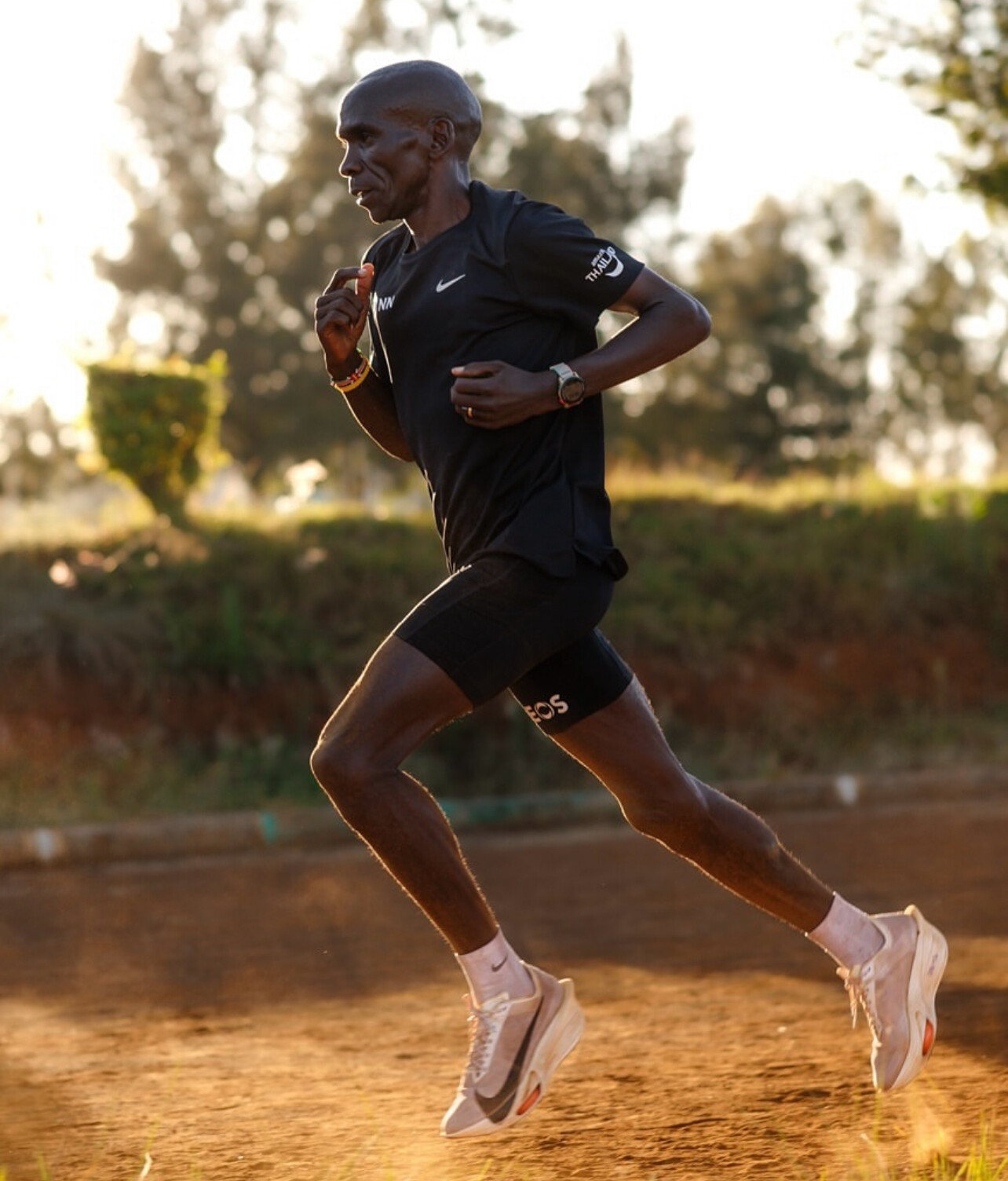
2. *Interval Training*: Kipchoge incorporates interval training into his regimen, which involves alternating between periods of high-intensity running and active recovery. This type of training helps improve his running efficiency, endurance, and speed.
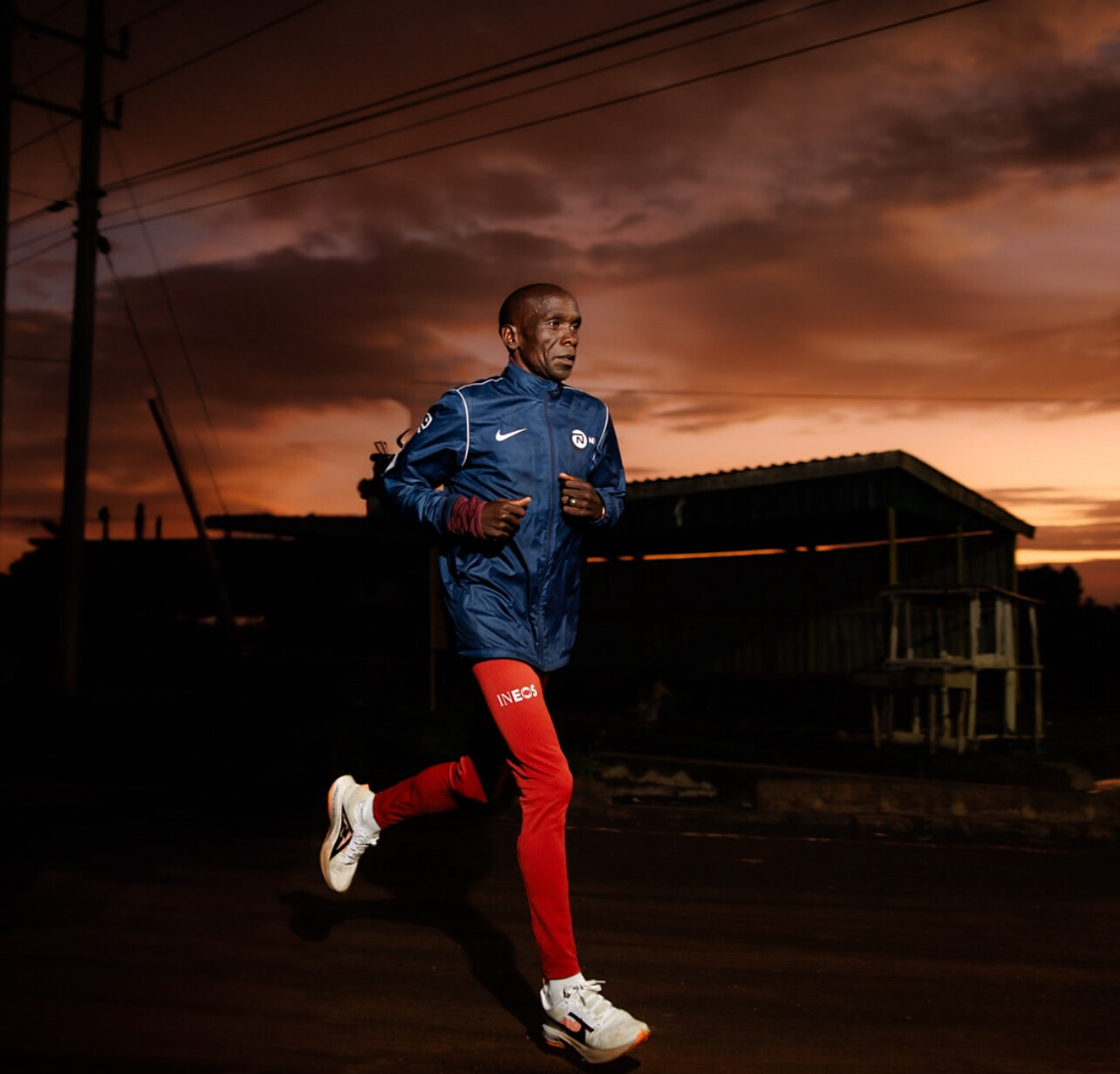
3. *Hill Sprints*: Kipchoge often includes hill sprints in his training, which helps improve his explosive power and running efficiency.
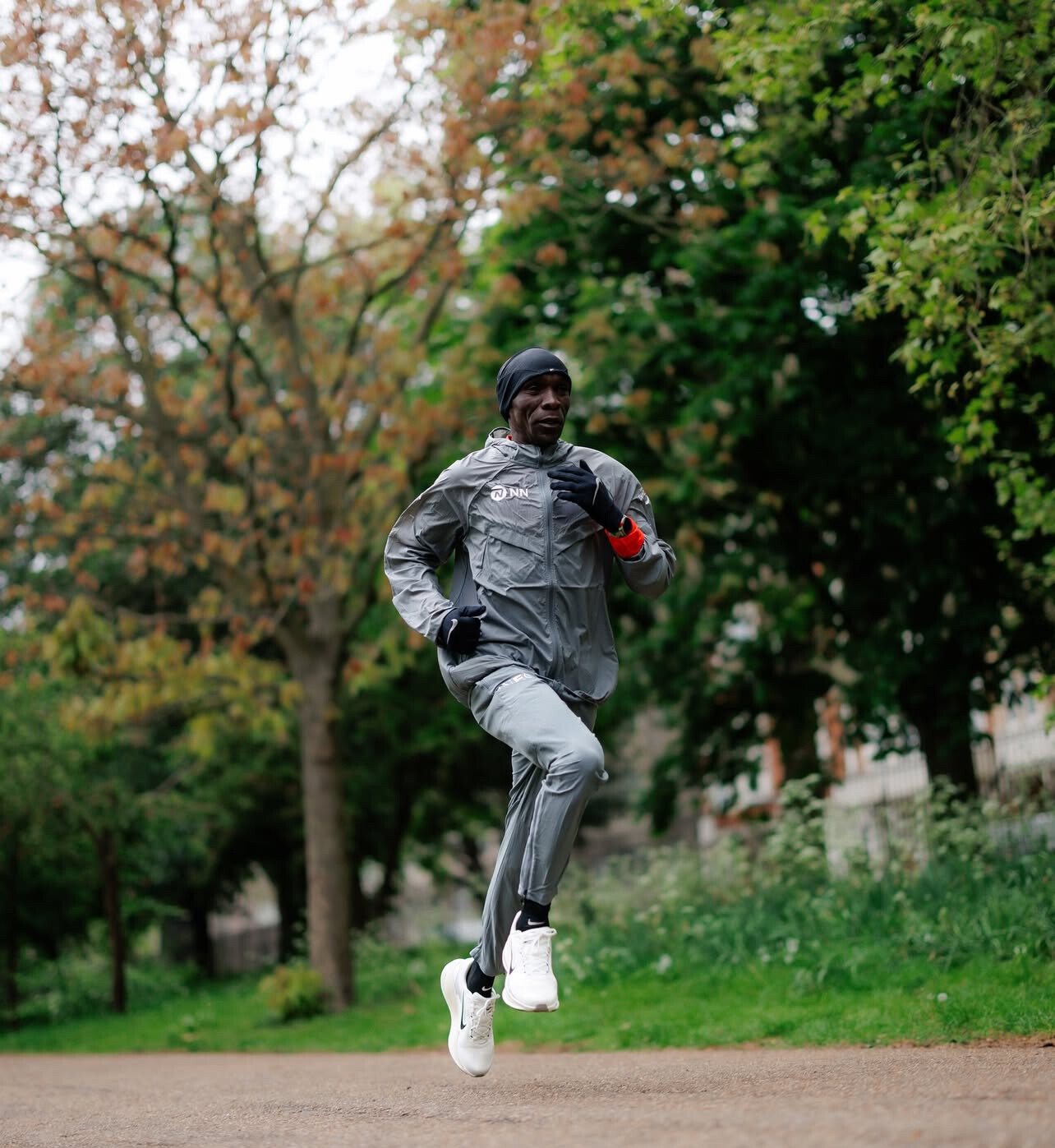
4. *Long Runs*: Kipchoge's training includes long runs, often at a moderate pace, to help build his endurance and mental toughness. These runs can range from 10-22 miles.
5. *Recovery*: Kipchoge prioritizes recovery, ensuring he gets enough rest and nutrition to support his intense training.
Lessons for Amateur Runners
While most of us can't replicate Kipchoge's intense training regimen, there are valuable lessons we can learn from his approach:
1. *Consistency is Key*: Consistency is crucial in building endurance and improving performance. Aim to establish a regular training routine and stick to it.
2. *Progressive Overload*: Gradually increase the intensity and volume of your workouts to continue making progress and avoiding plateaus.
3. *Incorporate Variety*: Incorporate different types of workouts, such as interval training and hill sprints, to add variety to your training and improve performance.
4. *Prioritize Recovery*: Adequate recovery is essential for allowing your body to adapt to the demands of training. Make sure to prioritize rest, nutrition, and recovery techniques.
Takeaways for Your Own Training
By studying Kipchoge's training regimen, we can learn valuable lessons about the importance of consistency, progressive overload, and recovery. While we may not be able to replicate his intense training, we can apply these principles to our own training and see improvements in our performance.
Ready to apply these lessons to your own training? Share your favorite training tips or experiences with us on social media using #MyBestRuns!
by Sally Decker
Login to leave a comment
Chasing the Unseen: How Micro-Pacing Can Shave Minutes Off Your PR
For serious distance runners, every second counts. While high mileage, speed work, and careful recovery are key to success, there’s a subtle yet powerful strategy that can give you an edge on race day: micro-pacing.
Unlike traditional pacing—where runners aim for steady splits or even effort—micro-pacing is about making minute, real-time adjustments throughout a race. It’s the art of responding to every subtle change: a slight headwind, a gradual incline, a moment of mental fatigue. It means staying attuned to both your body and the course, and making tiny shifts in effort that keep you in the optimal performance zone.
How to Practice Micro-Pacing:
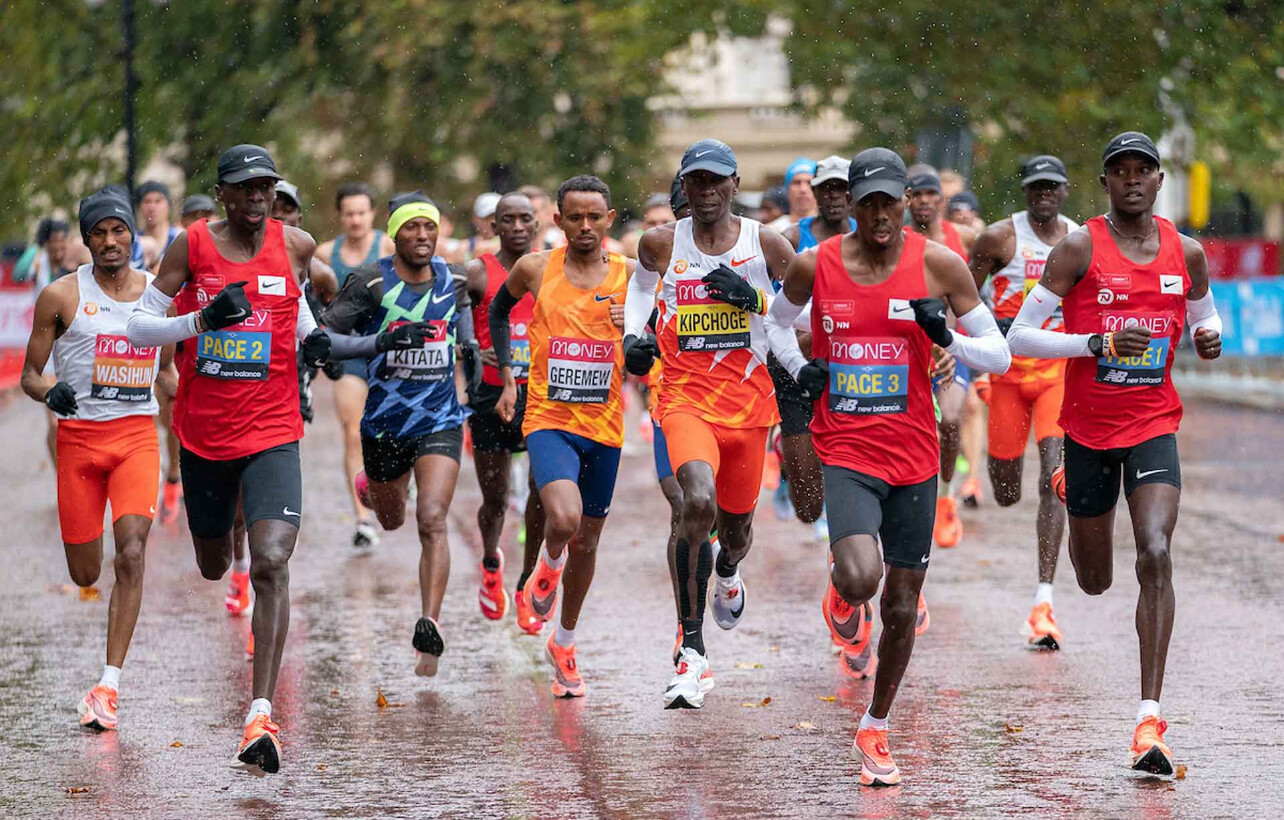
• Train on varied terrain: Incorporate rolling hills, uneven surfaces, and mixed conditions to sharpen your awareness and adaptability.
• Use your tools wisely: Leverage GPS watches with elevation profiles or running power meters to track micro-changes in effort.
• Develop internal awareness: Practice mindful running, focusing on breathing, body tension, and posture. This helps you tune into subtle cues that signal when to adjust your effort.
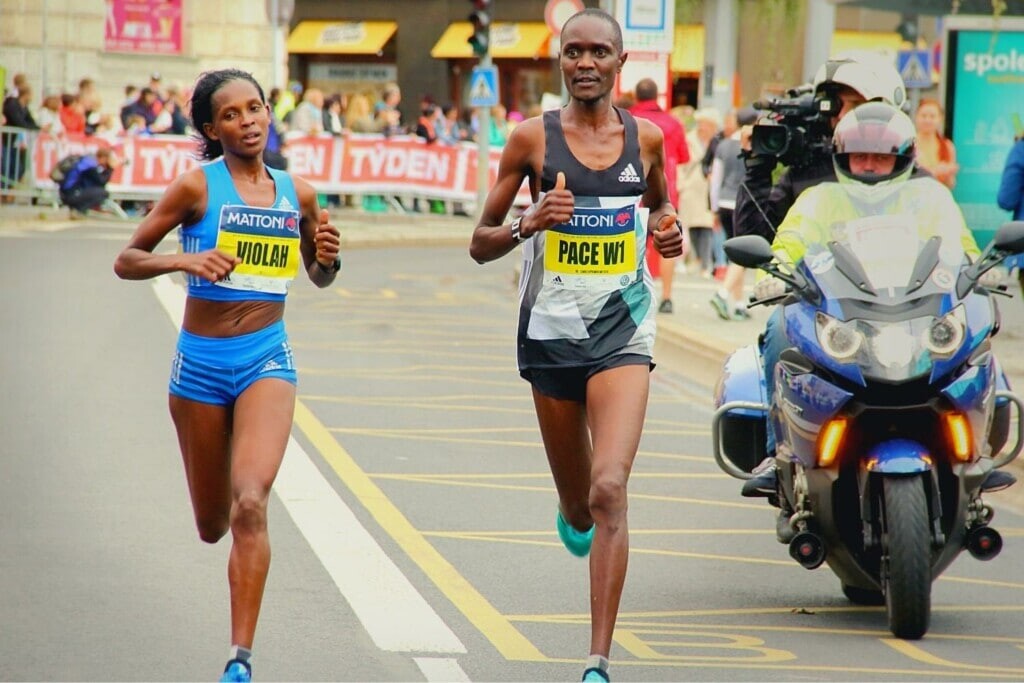
Why It Works:
• Energy efficiency: Micro-pacing helps you conserve energy early in a race and maintain strength when it counts most.
• Adaptability: It allows you to respond dynamically to your competitors’ moves, unexpected race-day conditions, or even your own energy fluctuations.
• A competitive edge: Elite runners like Eliud Kipchoge and Sifan Hassan don’t just stick to a rigid plan—they read the race moment by moment, making subtle adjustments that keep them in control.
For serious distance runners, micro-pacing is the next level of race strategy. It turns pacing from a static plan into a fluid, responsive system, empowering you to perform your best when it matters most. If you’re chasing a personal best, it’s time to master the art of the unseen.
by Boris Baron
Login to leave a comment
Marathon Legend Kipchoge Shifts Focus to Global Causes
Marathon legend says he has one more year—and plans to run for causes around the world
The news may have flown under the radar during race day coverage, but a powerful quote from Eliud Kipchoge at the finish of the 2025 London Marathon is now making waves in the global running community.
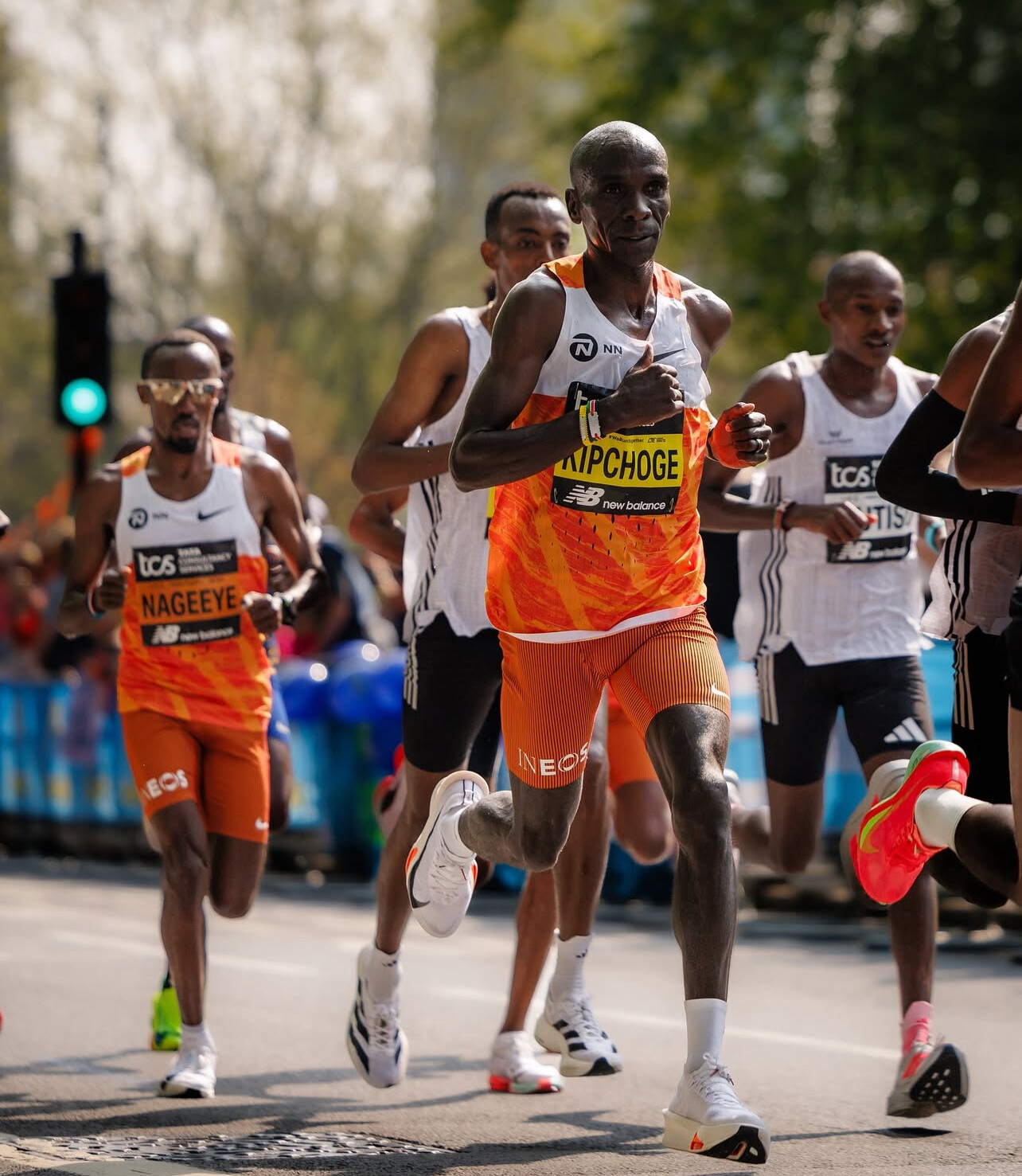
“It might be the last time I come here to run competitively,” Kipchoge said quietly after finishing the race on April 27. While the moment was overshadowed at the time by headlines about the winners and fast times, his words are now resonating deeply with fans.
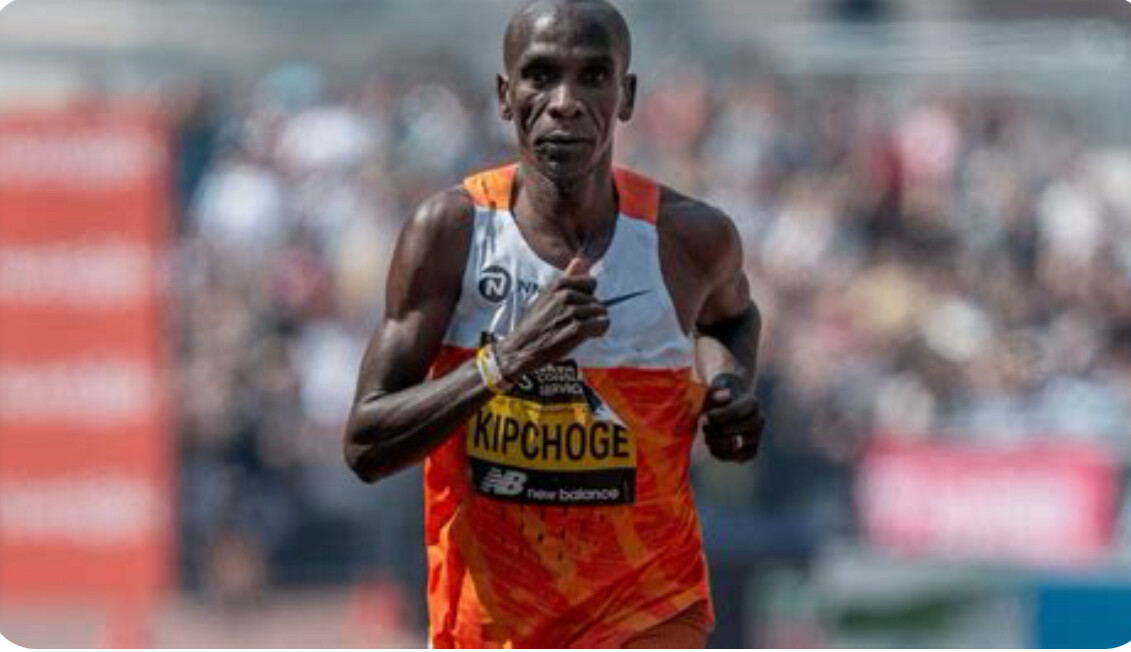
Thankfully, Kipchoge wasn’t announcing a full retirement. The two-time Olympic marathon champion and former world record holder added: “I think I’ll be going around the world to run in big city marathons for a cause, for education, and for conservation. But above all, I’m still having one more year.”
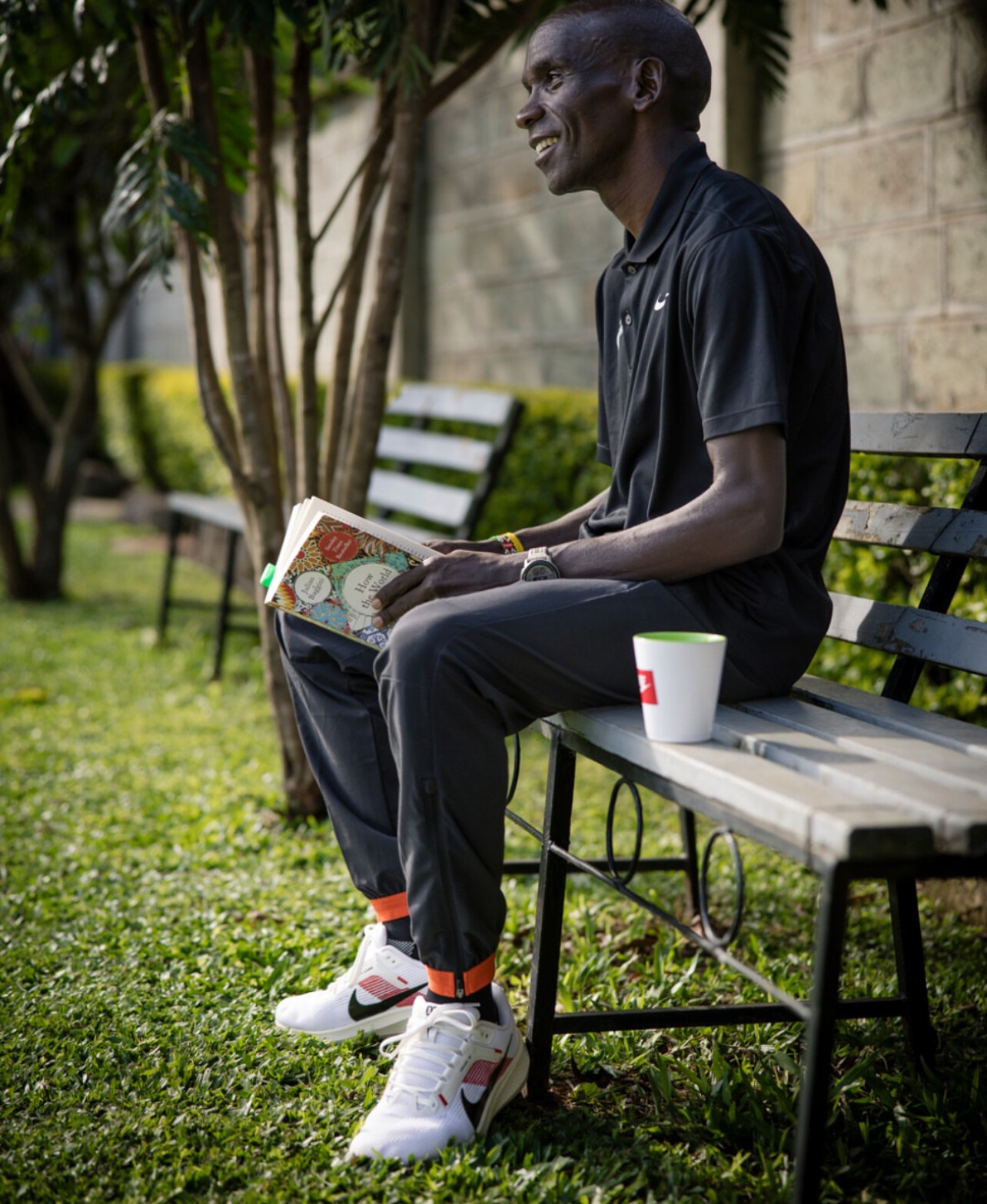
That final sentence is the reprieve the world needed. After more than 20 years at the pinnacle of distance running, Kipchoge isn’t done yet. But it does suggest that the end of his elite competitive career is near.
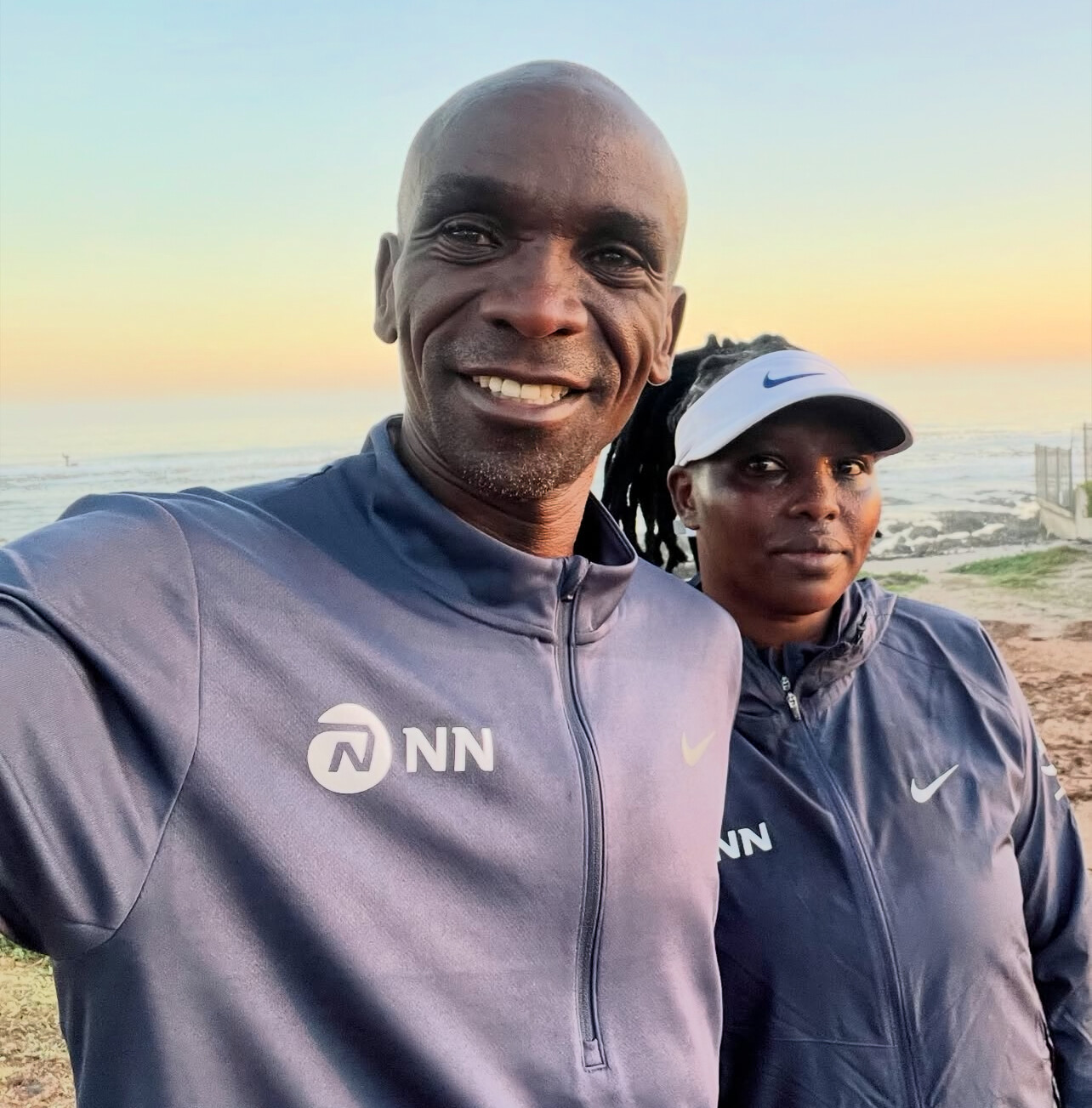
A Legacy Like No Other
Widely regarded as the greatest marathoner of all time, Kipchoge has won 11 World Marathon Majors, including a record four in London and five in Berlin. His 2:01:09 Berlin performance stood as a world record and remains the second-fastest official marathon ever recorded.
In 2019, he made history as the first person to break the two-hour barrier for the marathon, clocking 1:59:40 in Vienna in a specially staged event. He also won Olympic gold in Rio (2016) and successfully defended his title in Tokyo (2021).

What Comes Next
At age 40, Kipchoge has more than earned the right to step away—but he’s choosing to run with purpose instead. He plans to use his final year of competitive racing to spotlight global causes close to his heart, including education and conservation. His future appearances in major city marathons will be driven by more than medals.
While London may never see Kipchoge in full competitive mode again, the running world will still have a chance to celebrate the living legend. One more year. One final lap. And a legacy that will endure for generations.
by Boris Baron
Login to leave a comment
Sleep Like a Champion: Why Rest May Be Your Most Powerful Running Tool
Most runners focus on mileage, splits, and fueling—but there’s one key performance enhancer that’s often overlooked: sleep. Elite athletes and sports scientists increasingly agree that rest isn’t just recovery—it’s training.
Sleep and Performance: What Science Says

During deep sleep, the body releases human growth hormone (HGH), which repairs muscles, rebuilds tissues, and restores energy. Your immune system strengthens, the brain consolidates motor memory (important for running form), and muscles rebuild stronger.

Sleep deprivation can lead to:
• Slower reaction times and decision-making
• Increased injury risk
• Poor glycogen storage
• Reduced endurance and mental focus
Simply put: if you’re not sleeping well, your training gains are compromised
What Elite Runners Are Doing
Top runners are making sleep a priority—right alongside workouts and recovery days.
• Eliud Kipchoge sleeps 9+ hours per night and takes a daily nap to support his high-volume training.
• Molly Seidel calls sleep her “number one recovery tool.”
• Jakob Ingebrigtsen is known for dialing back screen time and evening stress to protect sleep quality.
Coaches across the globe now structure training schedules to ensure athletes can rest, especially before and after intense sessions.
Sleep Tech: Measuring What Matters
Devices like the Whoop Strap, Oura Ring, and Garmin sleep trackers are giving runners new insight into recovery. These tools track heart rate variability (HRV), sleep stages, and readiness scores, helping athletes fine-tune their training and rest cycles.
How to Optimize Your Sleep for Better Running
1. Stick to a sleep schedule – go to bed and wake up at the same time daily.
2. Create a wind-down routine – limit screens, caffeine, and stress before bed.
3. Keep your bedroom cool and dark – around 65°F (18°C) is ideal.
4. Avoid late-night workouts – they can spike adrenaline and delay sleep.
5. Prioritize naps if nighttime sleep falls short – even 20 minutes helps.
Your next personal best might not come from a new training block or pair of shoes—it might come from simply getting more sleep. If you’re serious about performance, sleep is non-negotiable.
Train hard. Sleep smarter. Recover stronger.
by Boris Baron
Login to leave a comment
Why Negative Splits Win Races and How to Master Them
For serious runners chasing personal records and breakthrough performances, mastering the negative split can be a game-changer. A negative split means running the second half of a race faster than the first—and while it sounds simple, it requires discipline, pacing, and confidence.
Elite marathoners like Eliud Kipchoge and Paula Radcliffe have used negative split strategies to break records and win major races. Kipchoge’s historic sub-2-hour marathon in Vienna was executed with near-perfect even splits, and many of his victories were sealed with strong second halves.
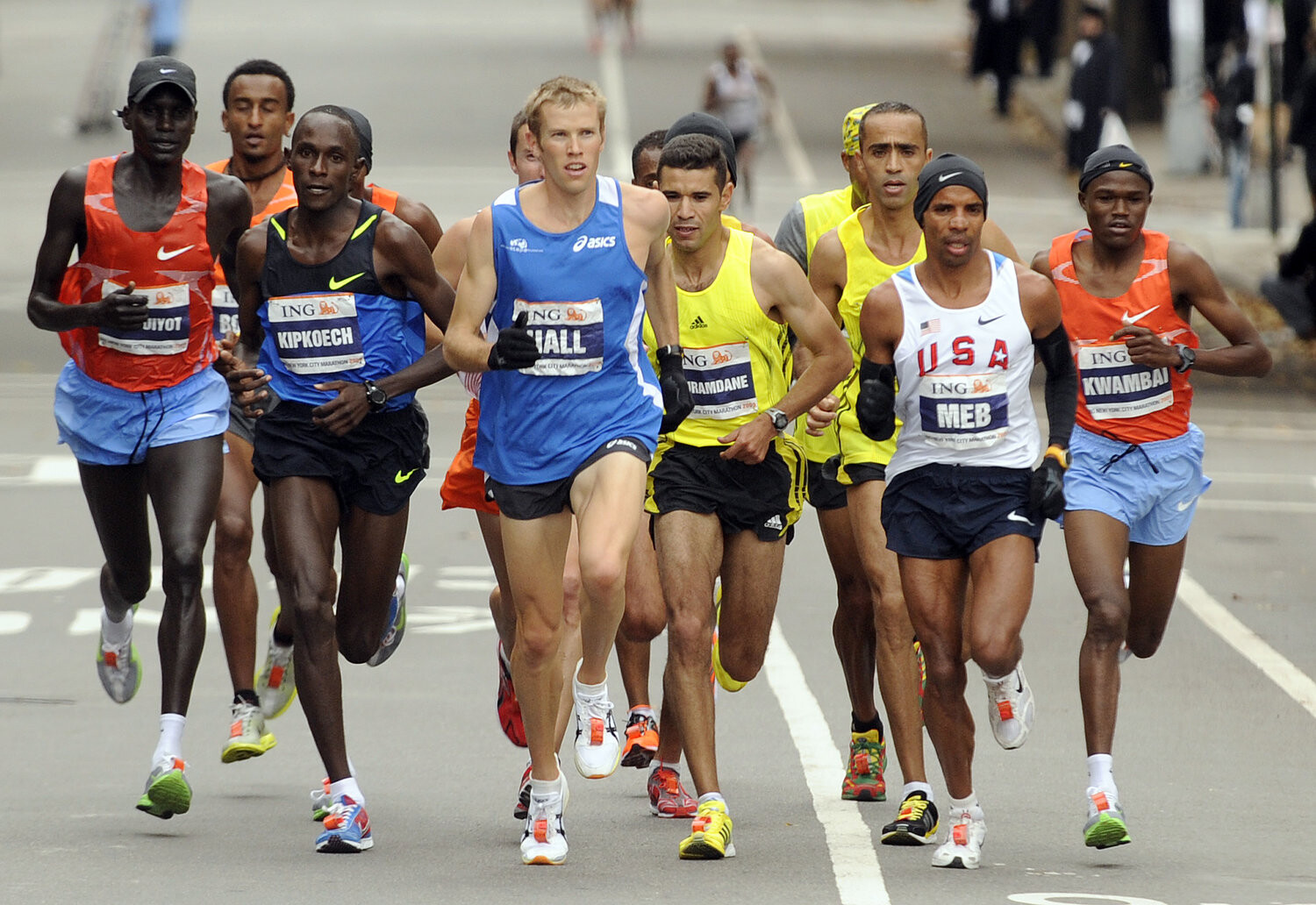
Why It Works
Running a negative split allows you to conserve energy early, delay fatigue, and surge when it counts most. By holding back slightly in the first half, you avoid lactate buildup and maintain better control. Mentally, it can be a major boost—there’s nothing more empowering than passing fading runners in the final miles.
Pacing too fast early is a common mistake, even among experienced runners. But a controlled first half followed by a confident finish often leads to faster times, stronger performances, and more satisfying races.
Bob Anderson’s Progressive Step-Up Method
Bob Anderson, founder of Runner’s World and owner of KATA Portugal at Anderson Manor and KATA Kenya, has long believed in the power of progressive step-ups in training. “Every mile needs to be faster than the one before,” he says.
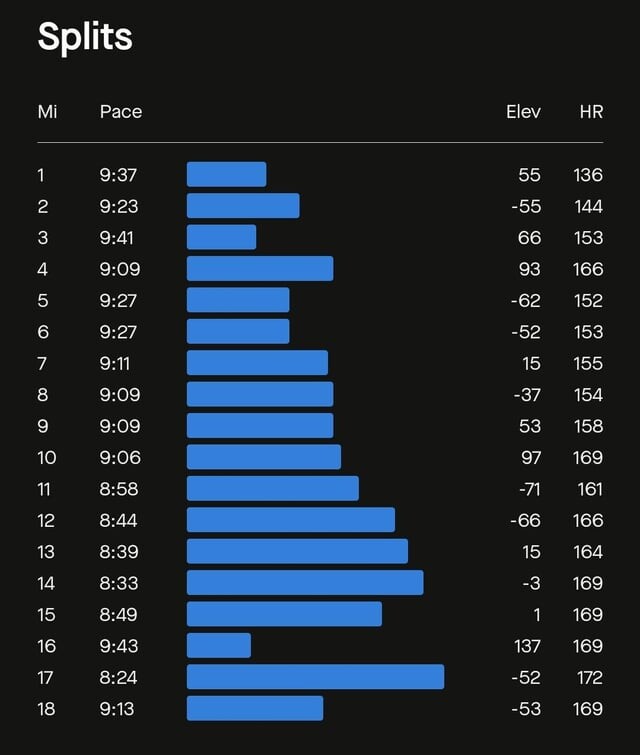
At age 53, Anderson ran a ten-mile race in 59:17 using this principle. In one key workout leading up to the race, he ran six one-mile repeats, starting with a 5:47 and finishing with a 5:17—each one faster than the last. His rest periods ranged from three to five minutes, enough to regroup but not fully recover. Once he felt ready to run faster, he did.
Even if you don’t run negative splits during a race, training this way helps build the strength, stamina, and mental focus needed to finish fast and stay in control.
How to Train for Negative Splits
Want to incorporate this strategy into your training? Try the following:
• Progression Runs: Start easy and increase pace gradually every few miles.
• Tempo Finishes: End long runs with 2–3 miles at goal pace or faster.
• Split Tempos: Run the second half of a tempo run faster than the first.
• Step-Up Intervals: Run repeats with each one faster than the last to simulate race finish intensity.
Pacing on Race Day
A successful negative split starts with patience. Know your goal pace and run slightly slower for the first few miles. Let others surge ahead—your time will come. For the marathon, aim to reach the halfway point feeling strong and confident. Then turn it up.
Final Thoughts
Negative splits aren’t just a strategy—they’re a mindset. With smart training, steady pacing, and progressive workouts, you’ll not only race faster—you’ll finish stronger. Whether you’re chasing a new PR or just want to run your best race yet, mastering this approach can take your performance to the next level.
by Boris Baron
Login to leave a comment
Kenya vs Ethiopia What Sets Their Runners Apart
When it comes to distance running, no two countries are more dominant—or more frequently compared—than Kenya and Ethiopia. From 5Ks to marathons, athletes from these East African nations consistently top podiums and rewrite record books. But while the results may look similar, the paths to victory are often quite different.
Altitude Advantage, Different Terrains
Both Kenya and Ethiopia benefit from high-altitude environments that naturally boost endurance. Kenya’s top training hubs, like Iten and Eldoret, sit between 7,000 and 8,000 feet. Ethiopia’s Bekoji and Sululta offer similar elevations. But terrain matters too: Kenya’s roads are often red clay or uneven gravel, ideal for building strength and resilience. Ethiopia’s runners more frequently train on hills and mountain trails, with steeper and more demanding climbs integrated into daily runs.
Training Philosophies Diverge
Kenyan training is rooted in simplicity and rhythm. Athletes often meet for large group sessions, with a strong focus on tempo runs, long-distance efforts, and unstructured fartleks. The vibe is community-oriented and competitive—if someone surges, the group follows.
In contrast, Ethiopia’s elite training tends to be more individualized and coach-driven. Athletes follow structured schedules with clearly defined paces, recovery sessions, and high-intensity track workouts. The approach is more scientific, and recovery days are strictly observed.
Daily Life and Recovery
Kenyan runners typically live together in camps, waking early to train, followed by long periods of rest. A second run often comes in the late afternoon, and the lifestyle emphasizes minimal distractions.
Ethiopian runners may train in smaller groups and return home between sessions. There’s more variety in how the day is structured, though the focus on discipline remains.
(Photos) Kenyan Training in Iten and Eldoret
1. Mass Training Run in Iten
A striking image capturing a large group of Kenyan runners during a typical morning session on the red dirt roads of Iten, known as the “Home of Champions.”
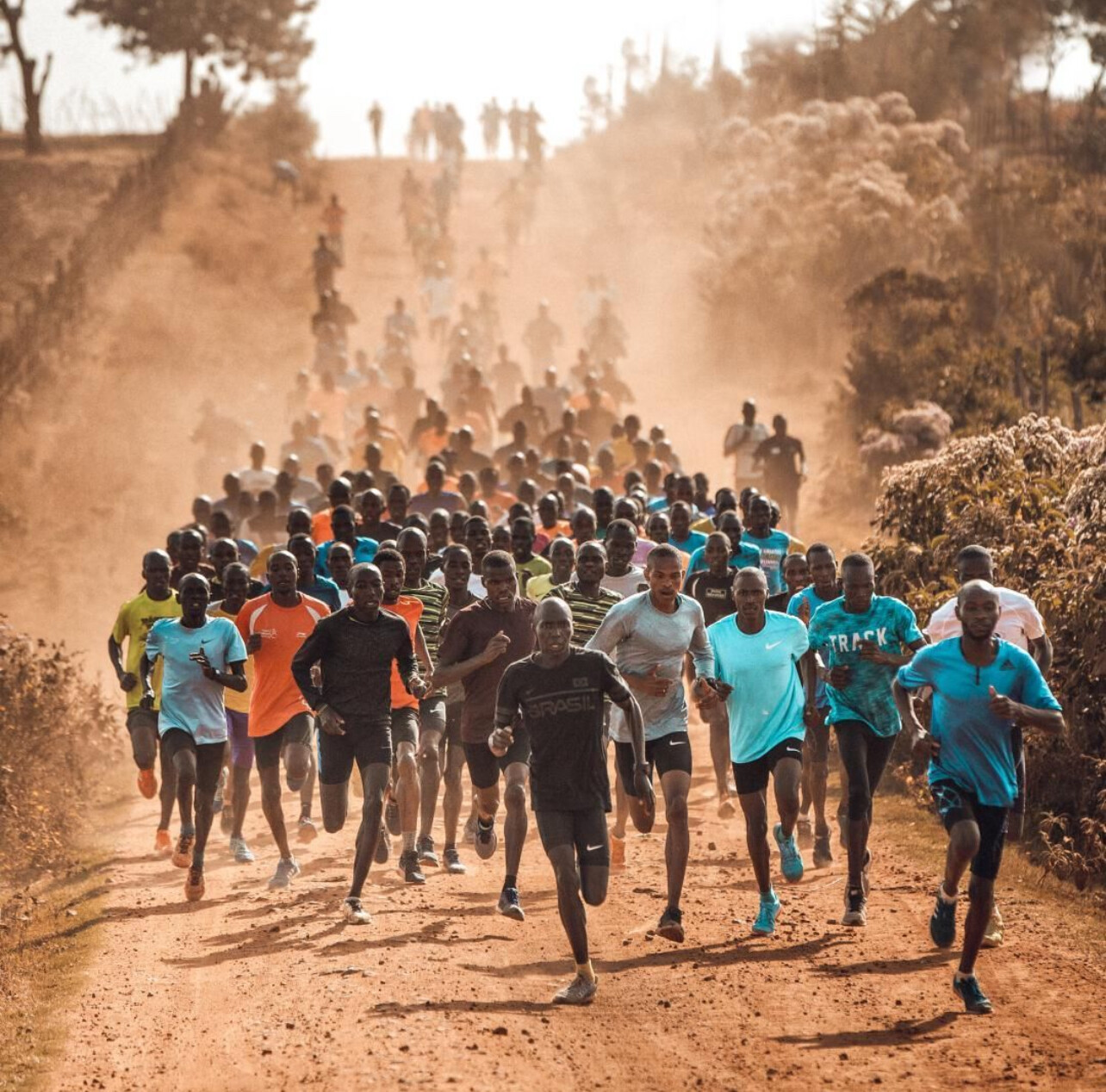
2. Track Workouts in Eldoret
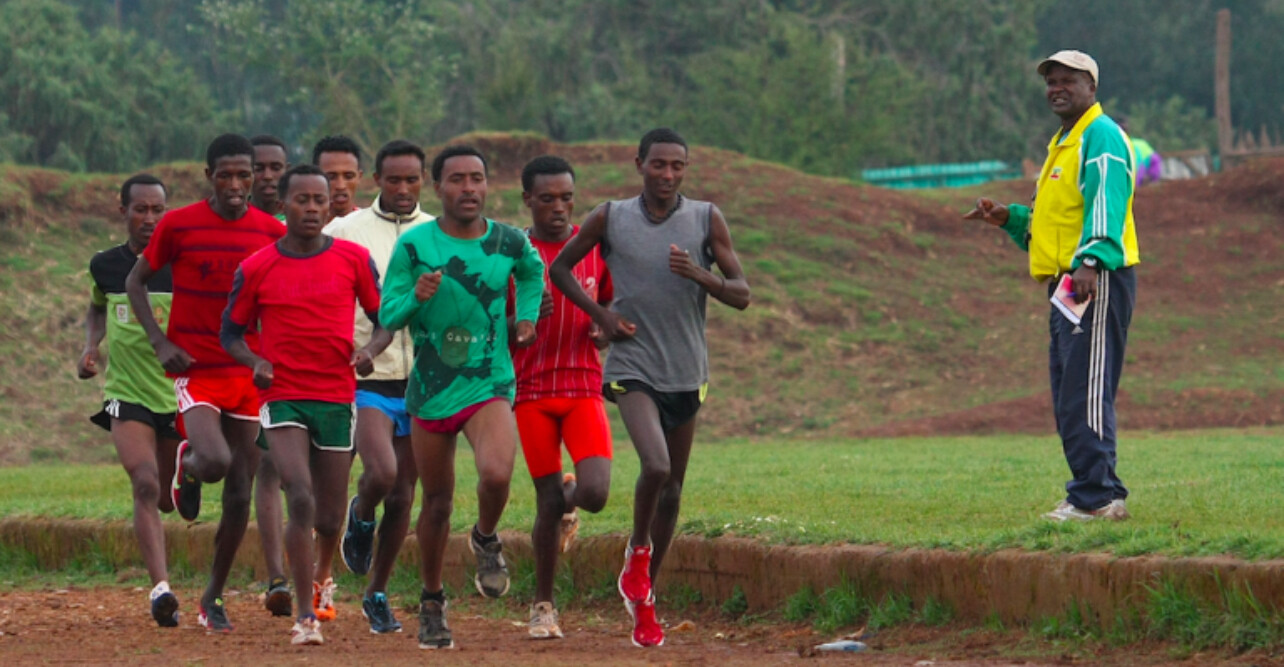
Kenyan marathon runners engaging in interval training at the athletics track in Eldoret, highlighting their emphasis on group cohesion and endurance.
(Photos) Ethiopian Training in Bekoji and Sululta
3. Group Training in Bekoji
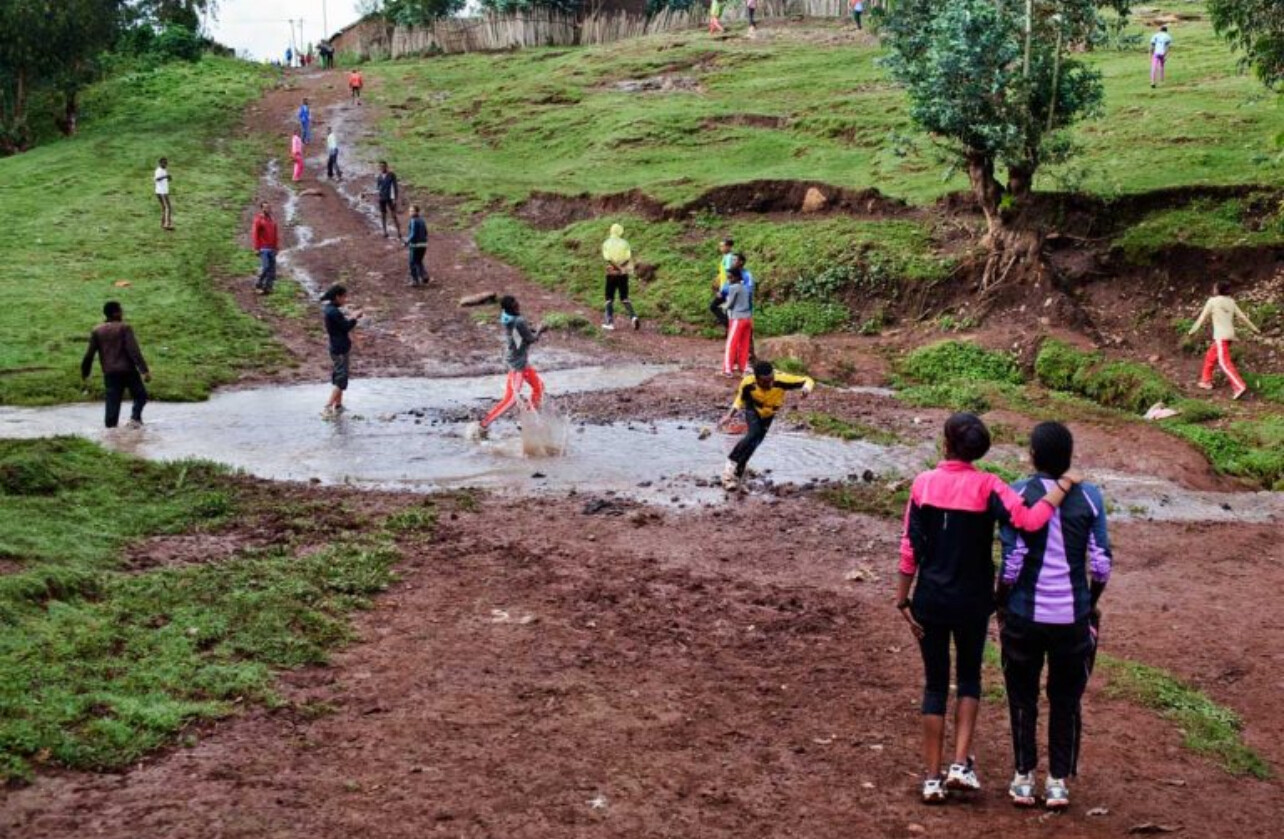
A glimpse into a training session in Bekoji, Ethiopia, showcasing runners on a dirt track, emphasizing their structured and coach-led routines.
4. Trail Running in Sululta
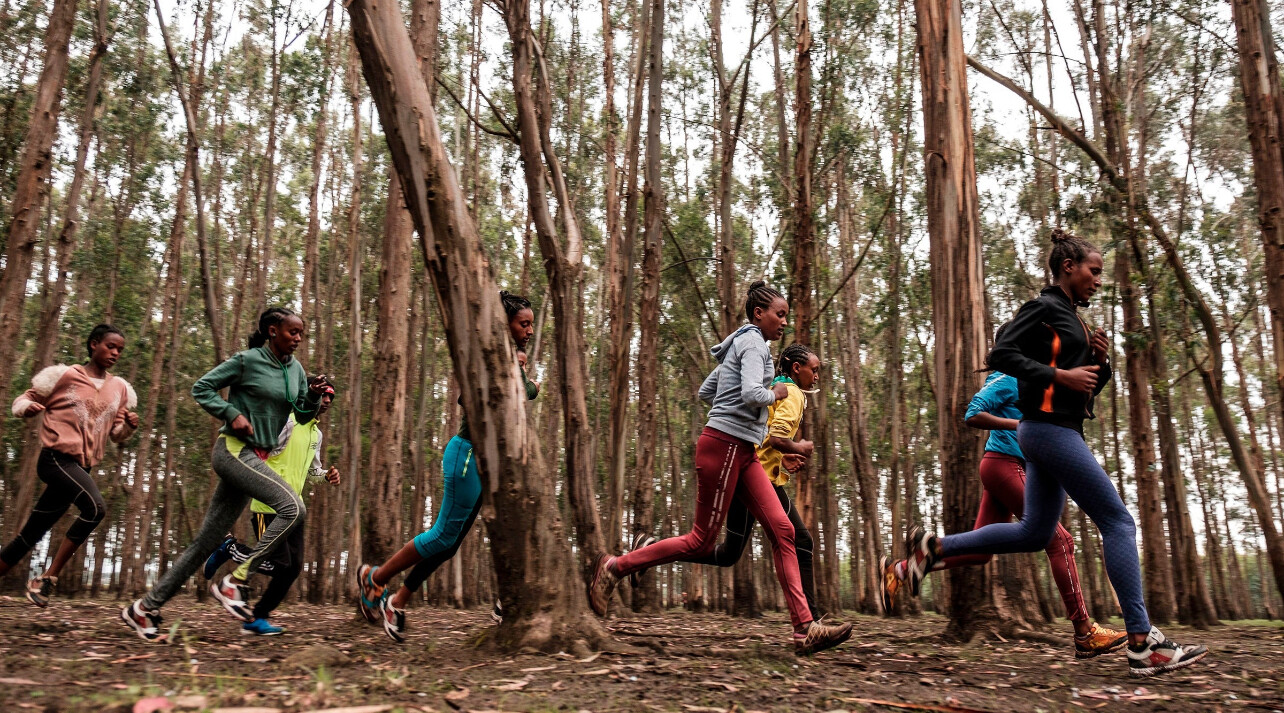
Ethiopian athletes navigating through forested trails in Sululta, reflecting their focus on varied terrains and natural environments.
Fueling for Success
Diet is another point of contrast. Kenyan athletes often eat ugali, a maize-based dish, with sukuma wiki (collard greens) and beans. Meals are consistent, simple, and heavy on carbohydrates. Hydration includes local teas and water, with little emphasis on supplements.
In Ethiopia, injera (a sour flatbread made from teff) is the foundation, served with protein-rich stews like shiro or doro wat. Teff is rich in iron and slow-digesting carbs—making it a valuable fuel for endurance.
Cultural and Coaching Influence
In Kenya, many athletes are inspired by runners from their own village or region—legends like Eliud Kipchoge or David Rudisha have inspired thousands. Training is often passed down through generations informally.
In Ethiopia, there’s a more centralized coaching system and support from the national federation. Greats like Haile Gebrselassie and Kenenisa Bekele have helped shape a more formal pathway from local clubs to the world stage.
Different Roads, Same Finish Line
Despite the differences, the results speak for themselves: both countries continue to dominate. Kenya may have the edge in the marathon, while Ethiopia consistently excels in 10K and track events. Together, they’ve redefined what’s possible in distance running.
by Boris Baron
Login to leave a comment
Faith Kipyegon’s Historic Sub-4:00 Mile Attempt Set for June 26 in Paris
Kenyan middle-distance legend Faith Kipyegon is preparing to make history by attempting to become the first woman to run a mile in under four minutes. The highly anticipated event is scheduled for June 26, 2025, at Stade Charléty in Paris and is part of Nike’s “Breaking4” initiative. This project mirrors the brand’s earlier “Breaking2” campaign, which supported Eliud Kipchoge’s groundbreaking sub-two-hour marathon attempt.
Aiming for the Unthinkable
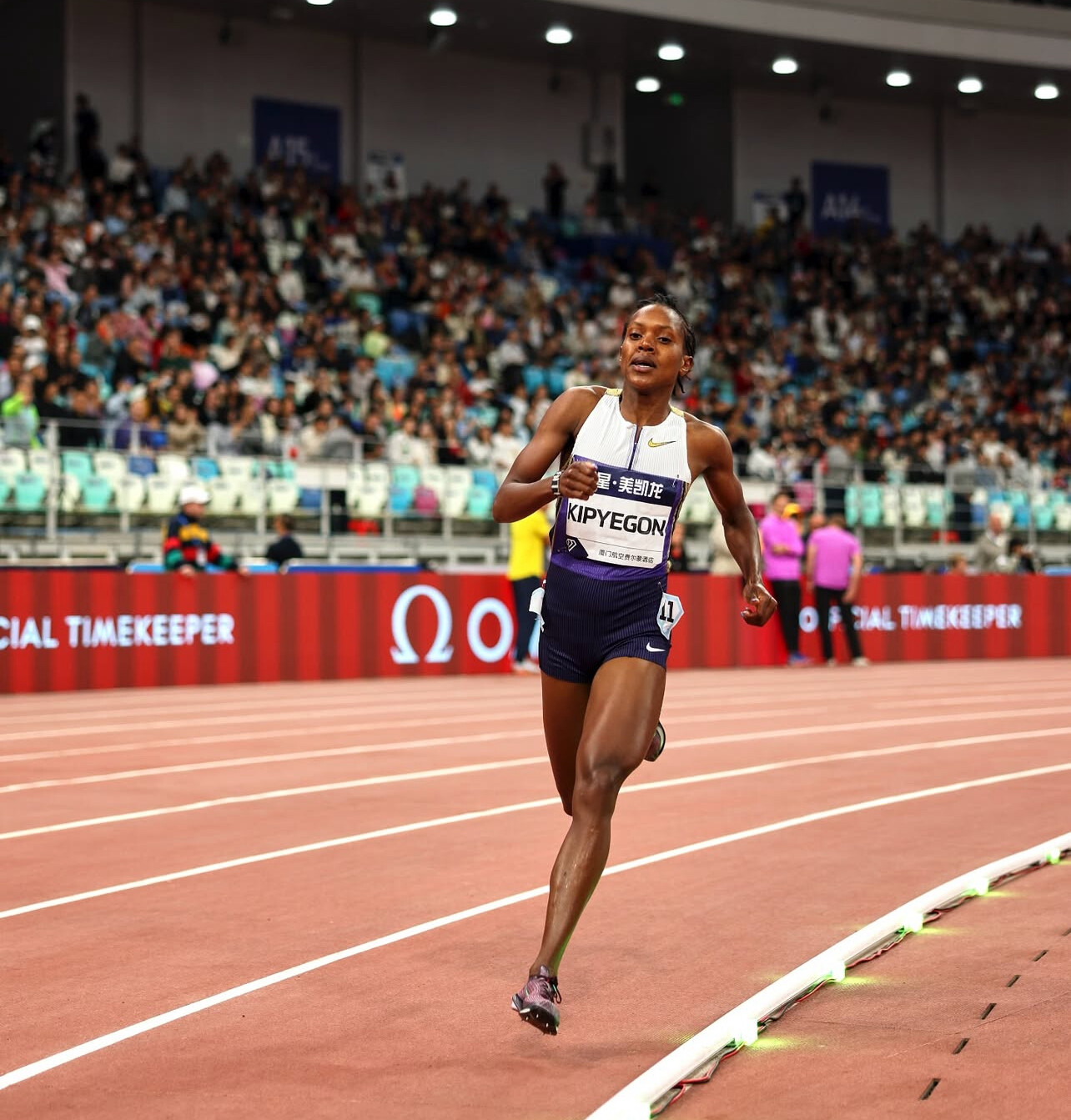
Kipyegon currently holds the women’s mile world record at 4:07.64, achieved at the Monaco Diamond League in July 2023. To break the four-minute barrier, she must shave over seven seconds off her personal best—a monumental challenge in elite middle-distance running.
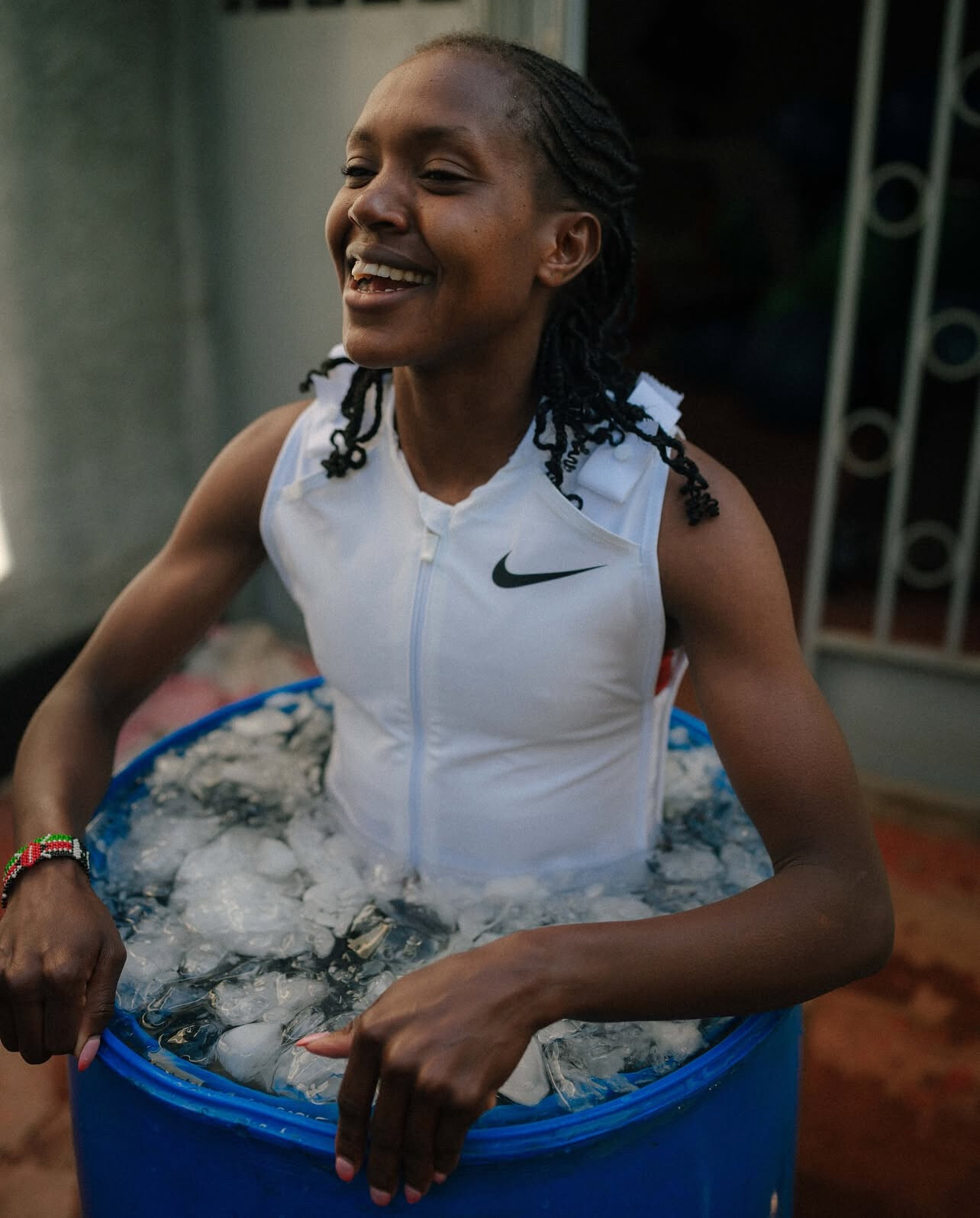
Nike is providing comprehensive support through its “Breaking4” initiative, which includes custom-designed shoes and apparel tailored to Kipyegon’s physiology. The gear is developed in Portland and aims to optimize her performance.
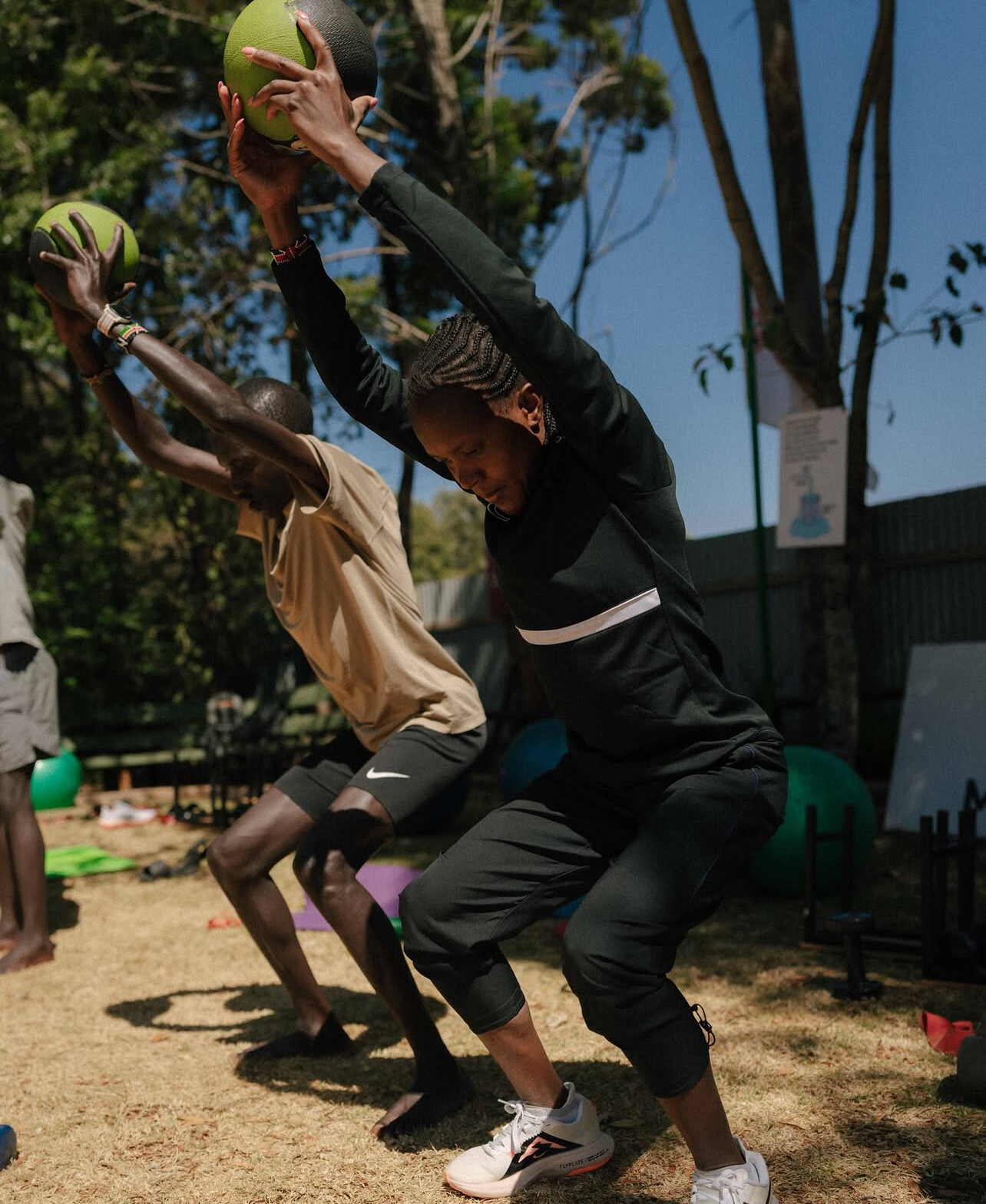
This will not be an Official Record
It’s important to note that this attempt will not be eligible for official world record recognition. The use of male pacemakers and advanced performance aids, such as laser pacing lights and cutting-edge footwear, disqualify the event from official status.

This setup is reminiscent of Kipchoge’s sub-two-hour marathon run, which, despite its significance, was not officially recognized due to similar conditions.
A Symbol of Inspiration
Beyond the athletic achievement, Kipyegon views this endeavor as a message to women worldwide. She has stated that she is running “to say to women, ‘You can dream and make your dreams valid.’”
Whether or not she breaks the four-minute barrier, Kipyegon’s attempt is set to inspire and push the boundaries of what is considered possible in women’s athletics.
by Boris Baron
Login to leave a comment
This is a marketing event for Nike being a paced time trial (what woman could have paced her anyway for an official race) but in any case it will be amazing to know that a woman can indeed run a mile in under four minutes. I know I will be watching. - Bob Anderson 4/29 5:58 pm |
Sebastian Sawe Stuns Legendary Field to Win 2025 London Marathon
In a race billed as the most competitive men’s marathon field ever assembled, Kenya’s Sebastian Sawe delivered a performance for the ages, clinching victory at the 2025 London Marathon with a time of 2:02:27.
Sawe, 30, who burst onto the marathon scene with a 2:02:05 debut in Valencia last December, showcased his prowess by outpacing a field laden with Olympic champions and world record holders. His decisive move came after the 30-kilometer mark, where he surged ahead, leaving his competitors trailing. This win marks only his second marathon, solidifying his status as one of the sport’s rising stars.
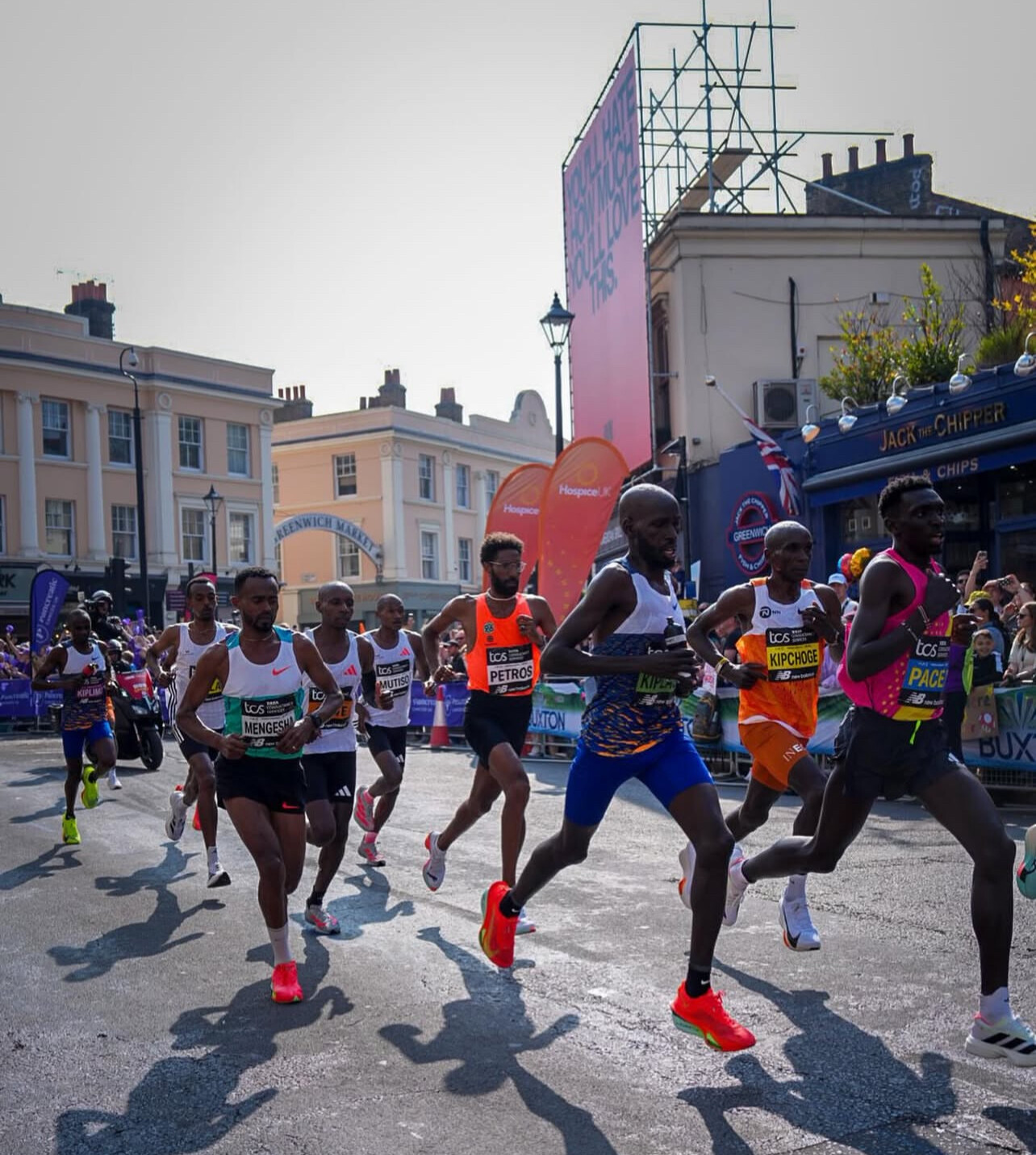
Men’s Elite Top 25 Finishers
Top 25 Men’s Elite Finishers
1. Sabastian Sawe (KEN) – 2:02:27
2. Jacob Kiplimo (UGA) – 2:03:37
3. Alexander Mutiso Munyao (KEN) – 2:04:20
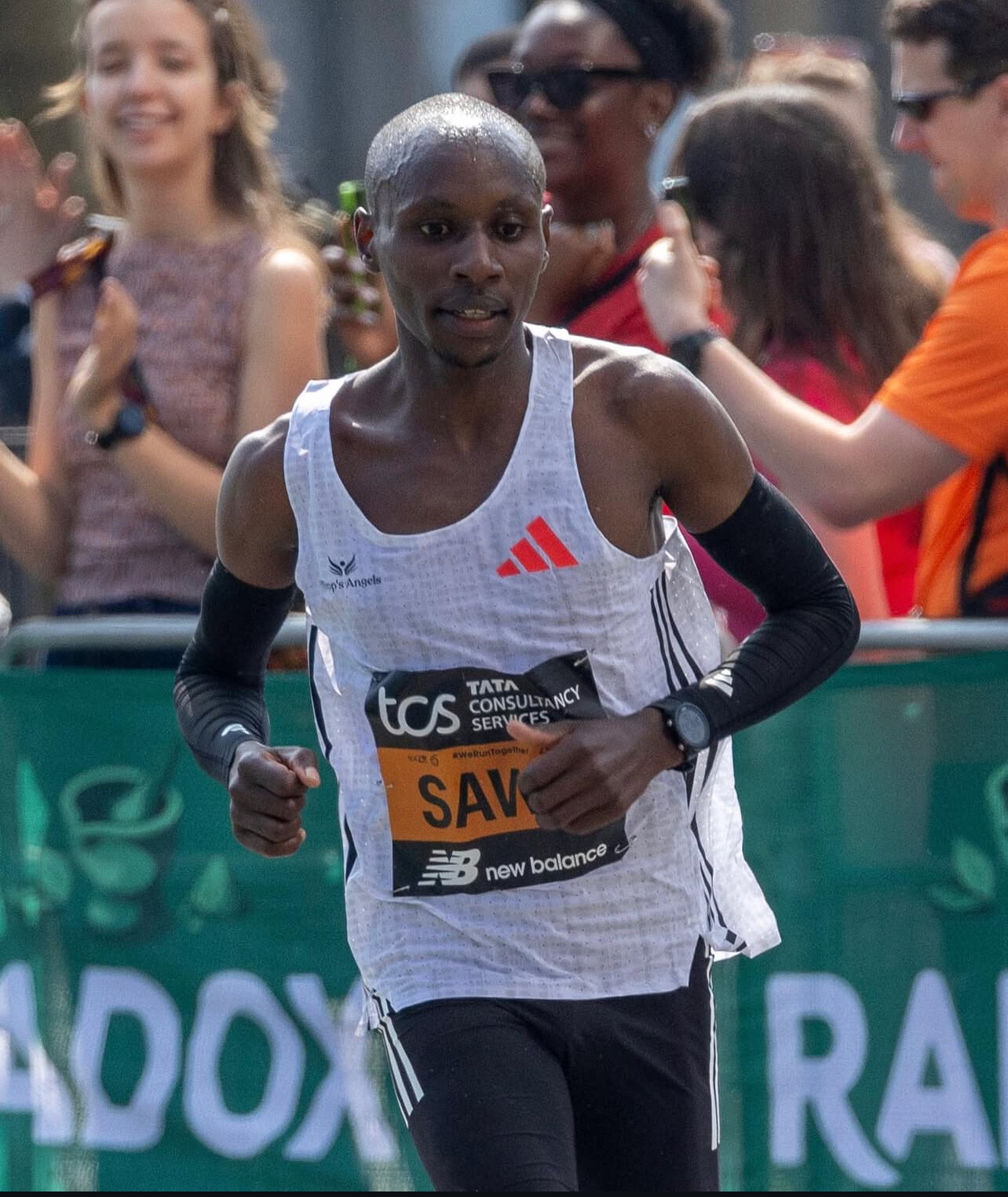
4. Abdi Nageeye (NED) – 2:04:20
5. Tamirat Tola (ETH) – 2:04:42
6. Eliud Kipchoge (KEN) – 2:05:25
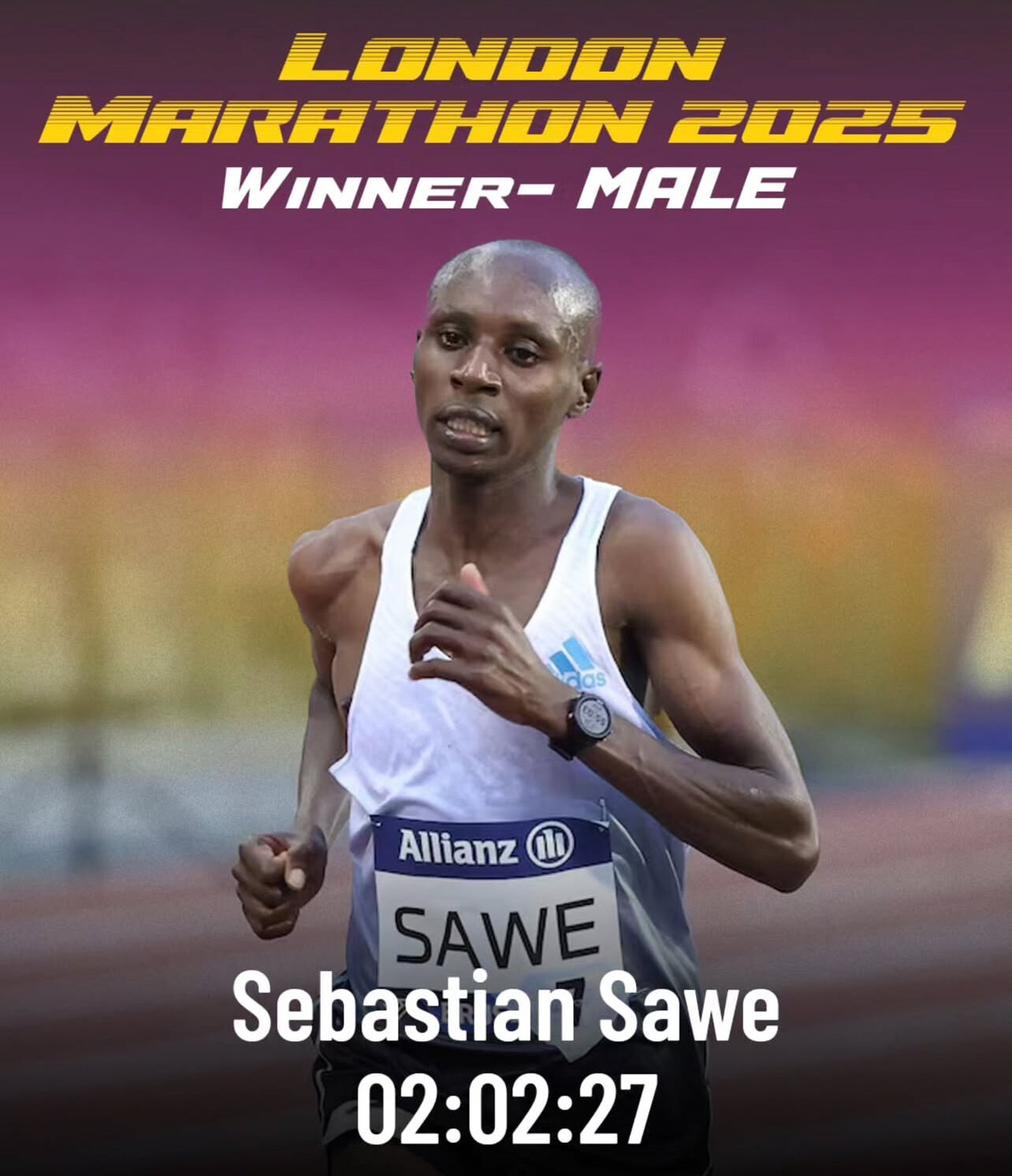
7. Hillary Kipkoech (KEN) – 2:06:05
8. Amanal Petros (GER) – 2:06:30
9. Mahamed Mahamed (GBR) – 2:08:52
10. Milkesa Mengesha (ETH) – 2:09:01
11. Andrew Buchanan (AUS) – 2:09:11
12. Adam Lipschitz (RSA) – 2:09:48
13. Sondre Nordstad Moen (NOR) – 2:09:57
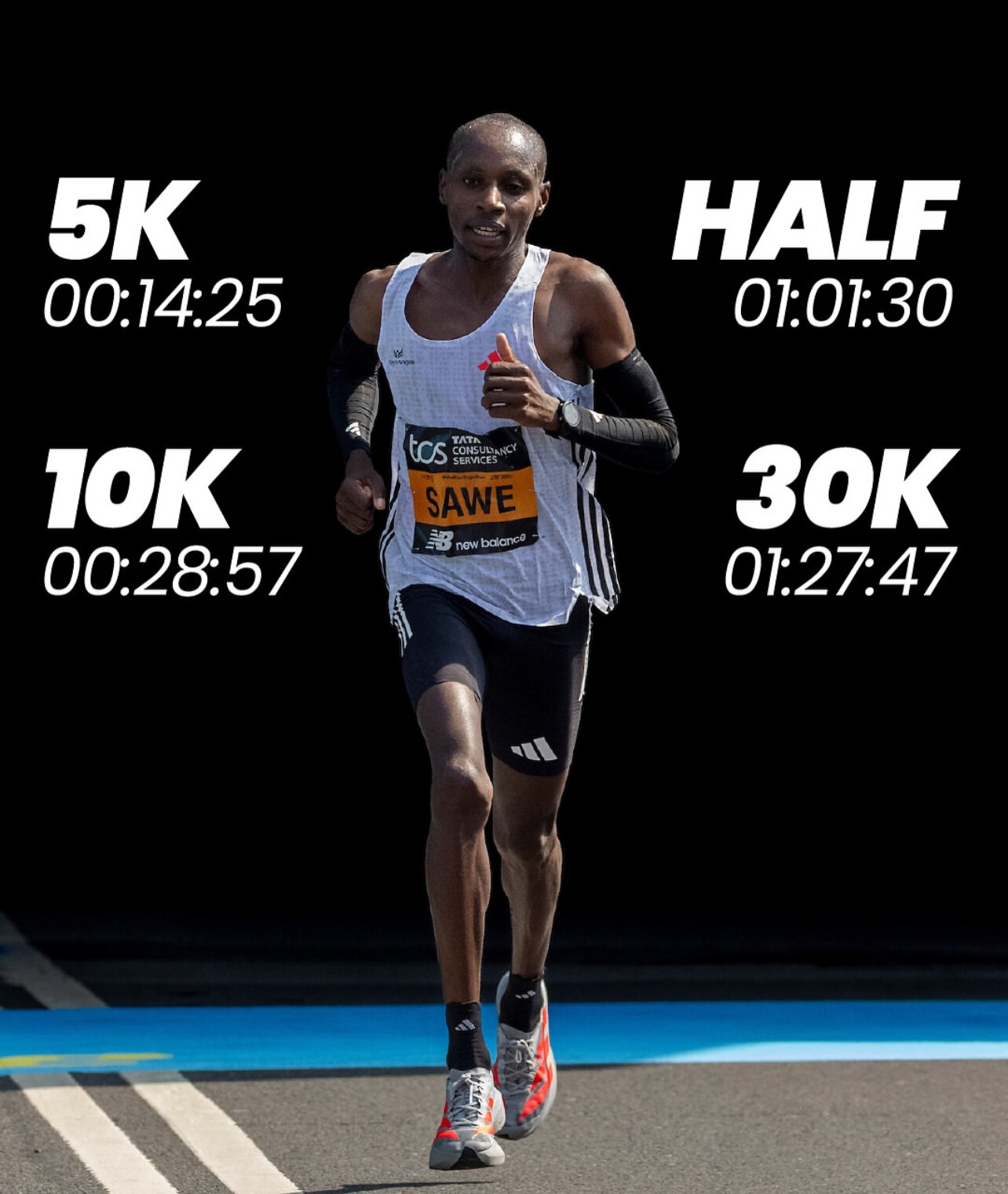
14. Alex Yee (GBR) – 2:11:08
15. Weynay Ghebresilasie (GBR) – 2:11:21
16. Jake Smith (GBR) – 2:11:57
17. Marcelo Laguera (MEX) – 2:12:03
18. Kevin Salvano (USA) – 2:13:03
19. Alex Milne (GBR) – 2:14:03
20. Philip Sesemann (GBR) – 2:14:46
21. Sean Hogan (GBR) – 2:14:51
22. Logan Smith (GBR) – 2:15:23
23. David Bishop (GBR) – 2:15:58
24. Ross Braden (GBR) – 2:21:05
25. Carl Avery (GBR) – 2:23:19
Notably, marathon legend Eliud Kipchoge, aiming for a record-extending fifth London title, finished sixth with a time of 2:05:25. Despite a strong start, Kipchoge couldn’t match the relentless pace set by Sawe in the latter stages of the race.
Uganda’s Jacob Kiplimo impressed in his marathon debut, securing second place with a commendable 2:03:37 finish. Defending champion Alexander Mutiso Munyao and Dutch record-holder Abdi Nageeye both clocked 2:04:20, with Mutiso narrowly edging out Nageeye for the third spot.
The race unfolded under sunny skies and ideal running conditions, with temperatures around 16°C (61°F), providing a perfect backdrop for this historic event.
Sawe’s triumph not only underscores his meteoric rise in long-distance running but also adds a new chapter to the rich history of the London Marathon.
by Boris Baron
Login to leave a comment
Five guys under 2:05 and 13 under 2:10! I know the organizers wanted sub 2 hours but it was a stunning event as it was. And the fastest time for a women’s only marathon. Congrats all around including to the organizers! Well done! - Bob Anderson 4/27 4:30 pm |
Jacob Kiplimo Ready to Make Marathon Debut in London After Record-Shattering Half Marathon
Earlier this year in Barcelona, Jacob Kiplimo delivered one of the most jaw-dropping performances in distance running history. The 24-year-old Ugandan covered 13.1 miles in a stunning 56:42 — a half marathon time 48 seconds faster than the previous world record.
Now, just two months later, Kiplimo is in London for his much-anticipated marathon debut. The buzz is growing louder: could he break the marathon world record? Could he even challenge the two-hour barrier in an official race? London Marathon event director Hugh Brasher believes we could be about to witness something historic.
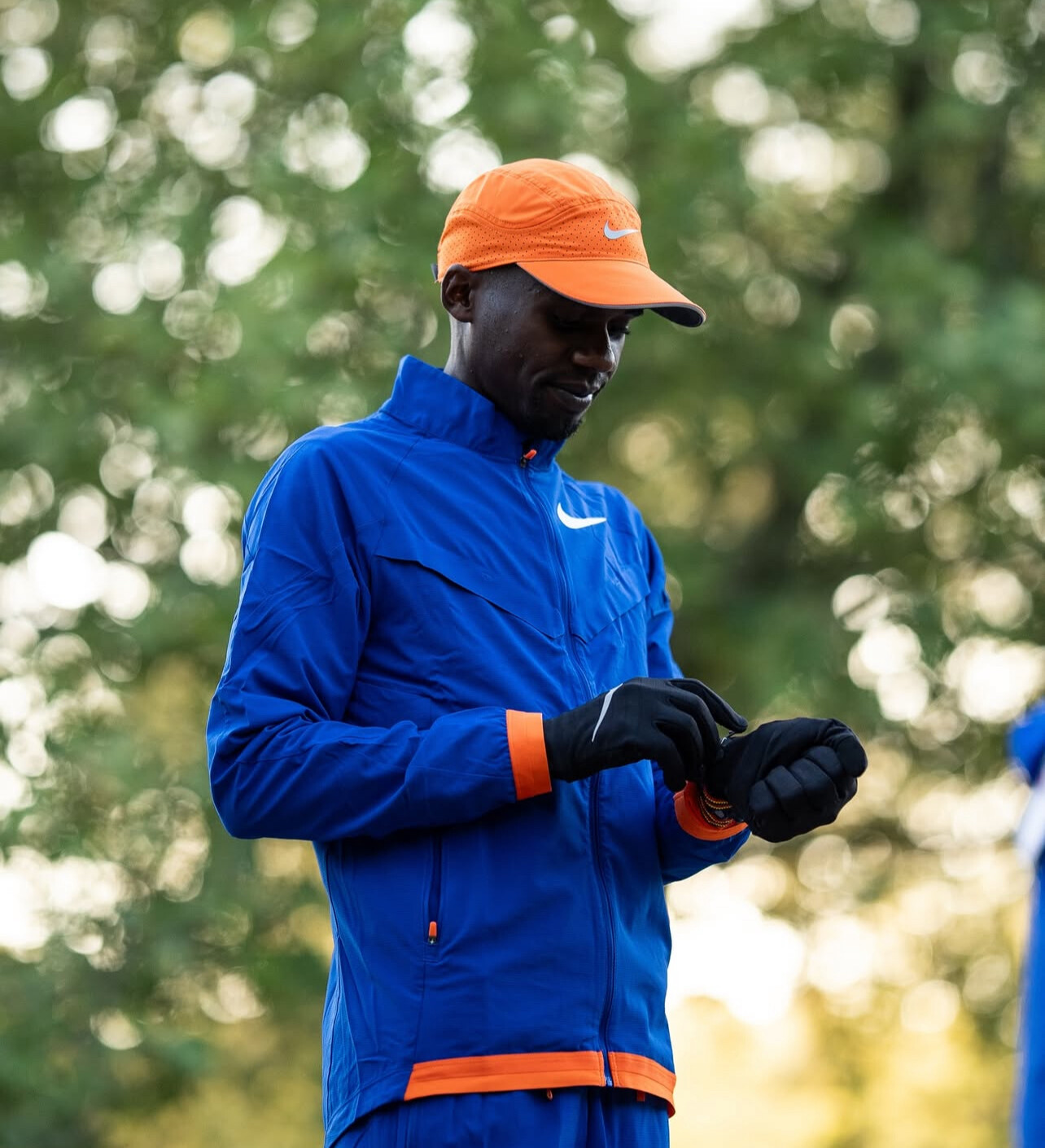
“I think it’s going to be the most fascinating debut ever,” Brasher said. “Is it feasible he could take Kelvin Kiptum’s record as the fastest debutant? Without a doubt. Could he eventually become the first man to run under two hours? Yes. But let’s see what happens on Sunday.”
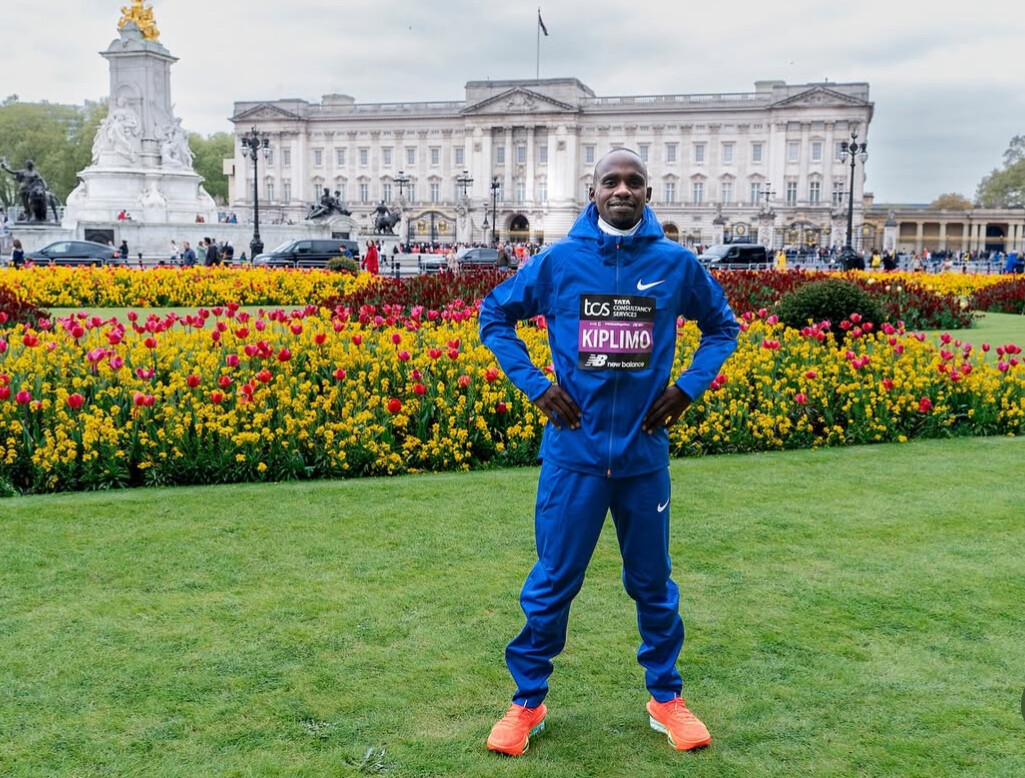
Kiplimo’s story is remarkable. Growing up on a farm 1,500 meters above sea level on the slopes of Mount Elgon, he found inspiration in his older half-brothers — Robert Chemonges and Victor Kiplangat — both of whom would go on to become world-class marathoners.
“We were helping our brothers, the big brothers,” Kiplimo said. “We would see them training and I told them: ‘I want to become like you.’ So I just kept training.”
By 15, Kiplimo had been spotted and brought to Italy to prepare for the Rio Olympics. Although he exited in the 5,000m semifinals, the experience launched his international career. His early times were already astonishing: 13:19 for 5,000m and 27:26 for 10,000m — all before the supershoe era.
While his track career was hampered by the lack of a blazing sprint finish, Kiplimo found his true strength on the roads. He went on to win two senior world cross country titles, along with Olympic and World Championship bronze medals in the 10,000m.
Sunday’s London Marathon will be his toughest test yet. He will face one of the strongest fields ever assembled: Eliud Kipchoge, Olympic champion Tamirat Tola, defending champion Alexander Mutiso, and Sebastian Sawe — who ran 2:02:05 to win Valencia, the second-fastest marathon debut in history. British eyes will also be on Olympic triathlon champion Alex Yee, aiming for a 2:09 debut.
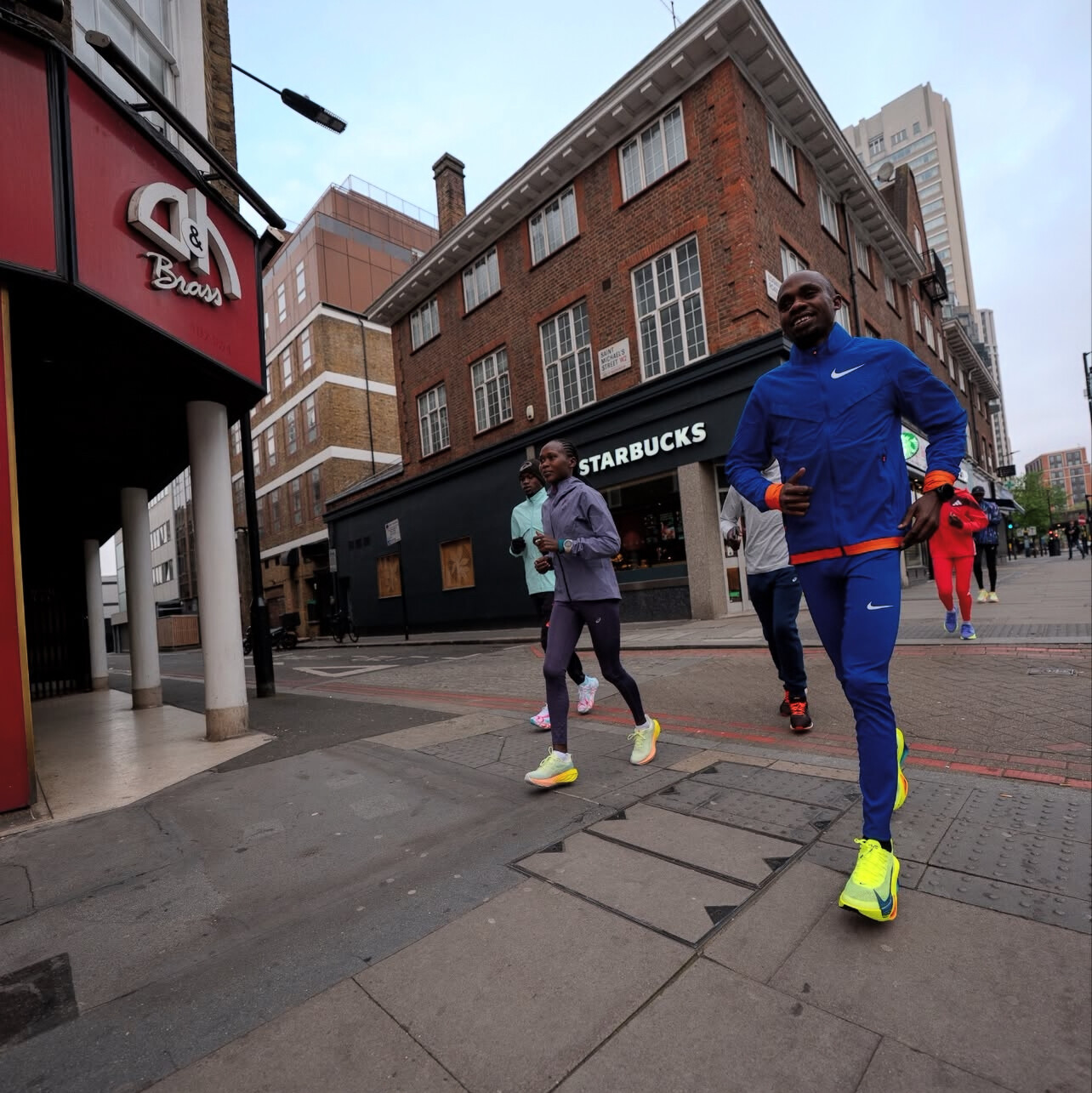
Kiplimo says he is ready. He has built up his weekly mileage from 75–90 miles during his track days to 125–135 miles for the marathon.
The lead pack is expected to hit halfway in around 61 minutes, setting up a possible negative split. With a favorable tailwind forecast in the second half — though temperatures could be on the warm side — conditions could be ideal for something special.
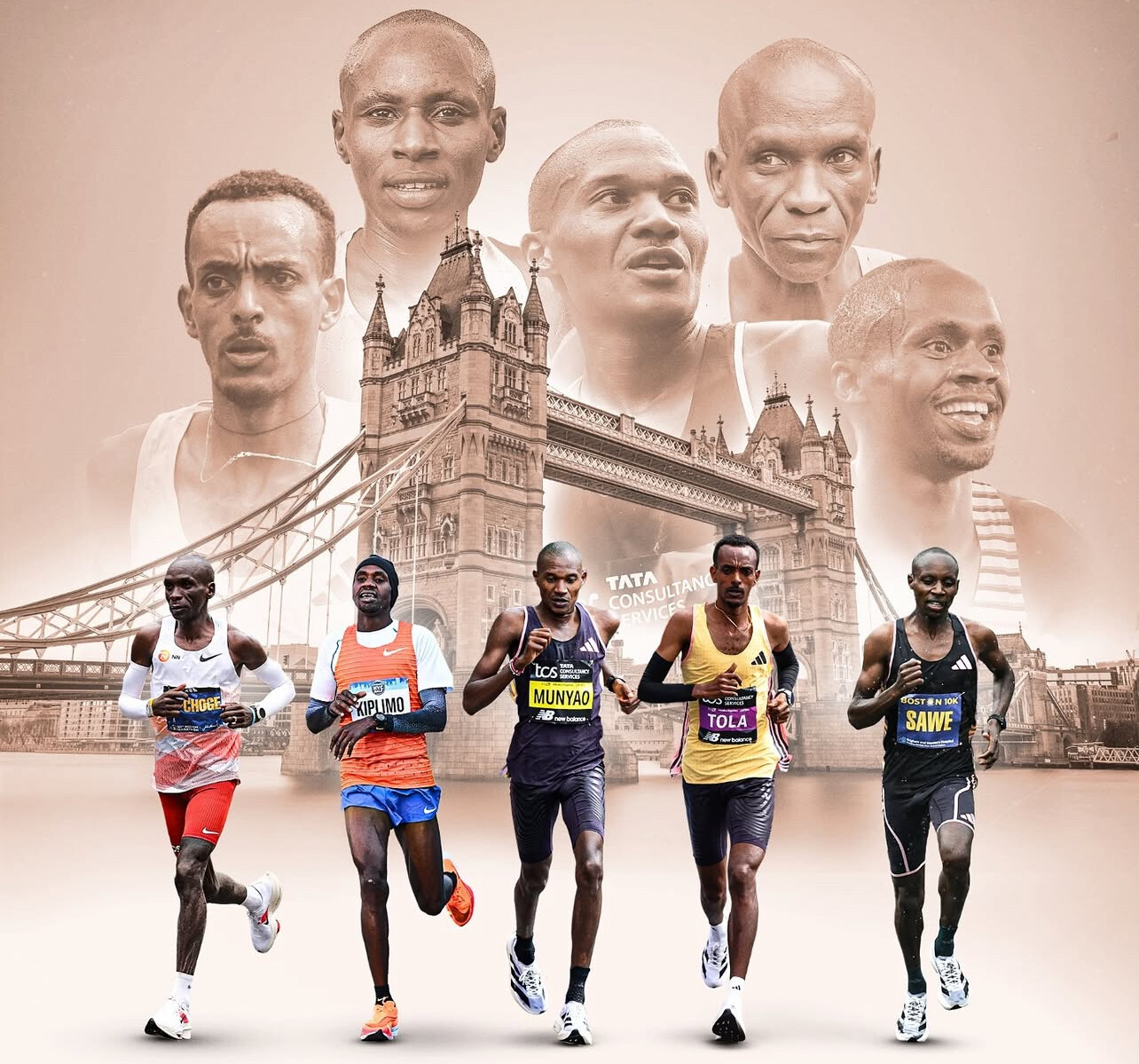
Kiplimo has already shown he can rewrite history. On Sunday, the world will be watching to see if he can do it again.
by Boris Baron
Login to leave a comment
TCS London Marathon
The London Marathon was first run on March 29, 1981 and has been held in the spring of every year since 2010. It is sponsored by Virgin Money and was founded by the former Olympic champion and journalist Chris Brasher and Welsh athlete John Disley. It is organized by Hugh Brasher (son of Chris) as Race Director and Nick Bitel...
more...Brigid Kosgei and Amos Kipruto Lead the Deepest Fields Ever at Haspa Marathon Hamburg
European star Karoline Grovdal targets historic debut
The 39th edition of the Haspa Marathon Hamburg on Sunday promises to be the fastest and most competitive in the event’s history. Headlining the men’s race are Kenya’s Amos Kipruto and Ethiopia’s Kinde Atanaw, both with personal bests under 2:04. Meanwhile, former women’s world record holder Brigid Kosgei leads a stellar women’s lineup, becoming the fastest woman ever to start in Hamburg.
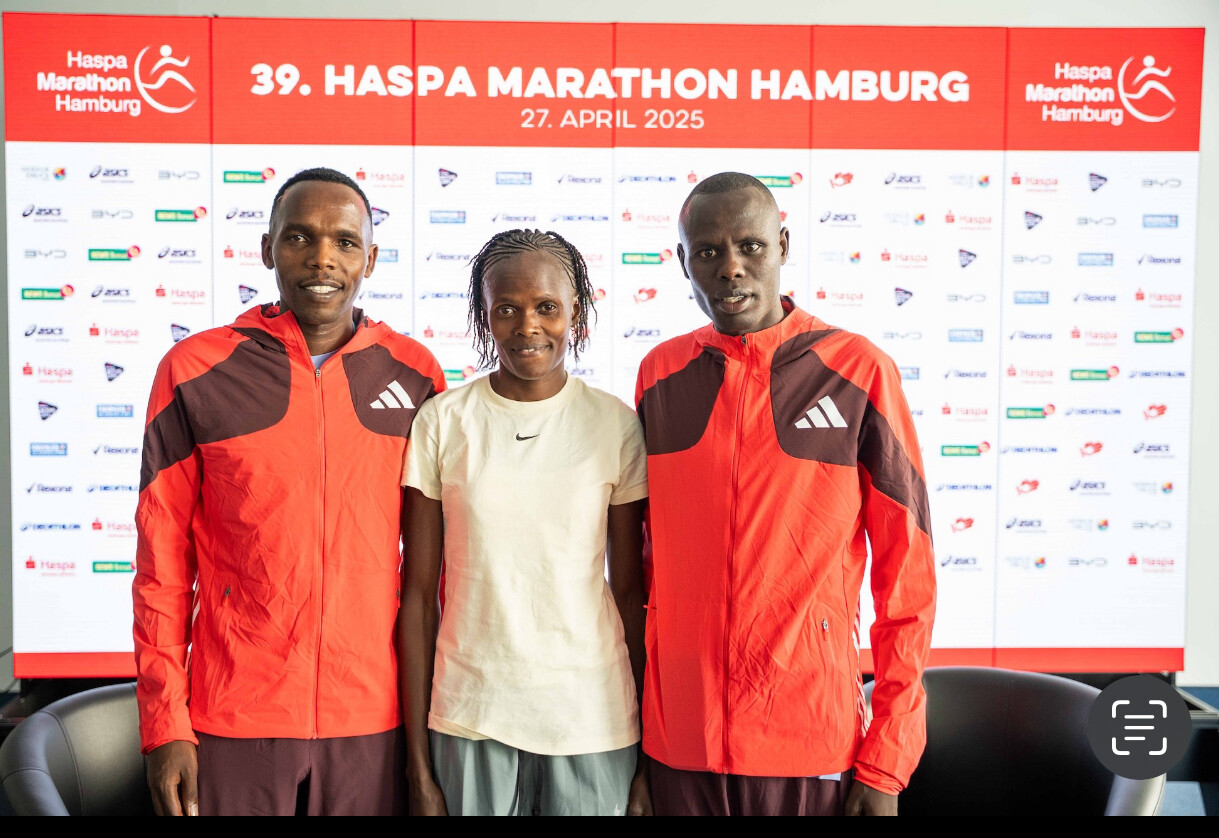
A total of 15,000 runners have entered Germany’s biggest spring marathon, with 38,000 participants across all weekend events—setting a new record. “We are experiencing another running boom, and our elite fields are stronger than ever,” said Chief Organiser Frank Thaleiser.
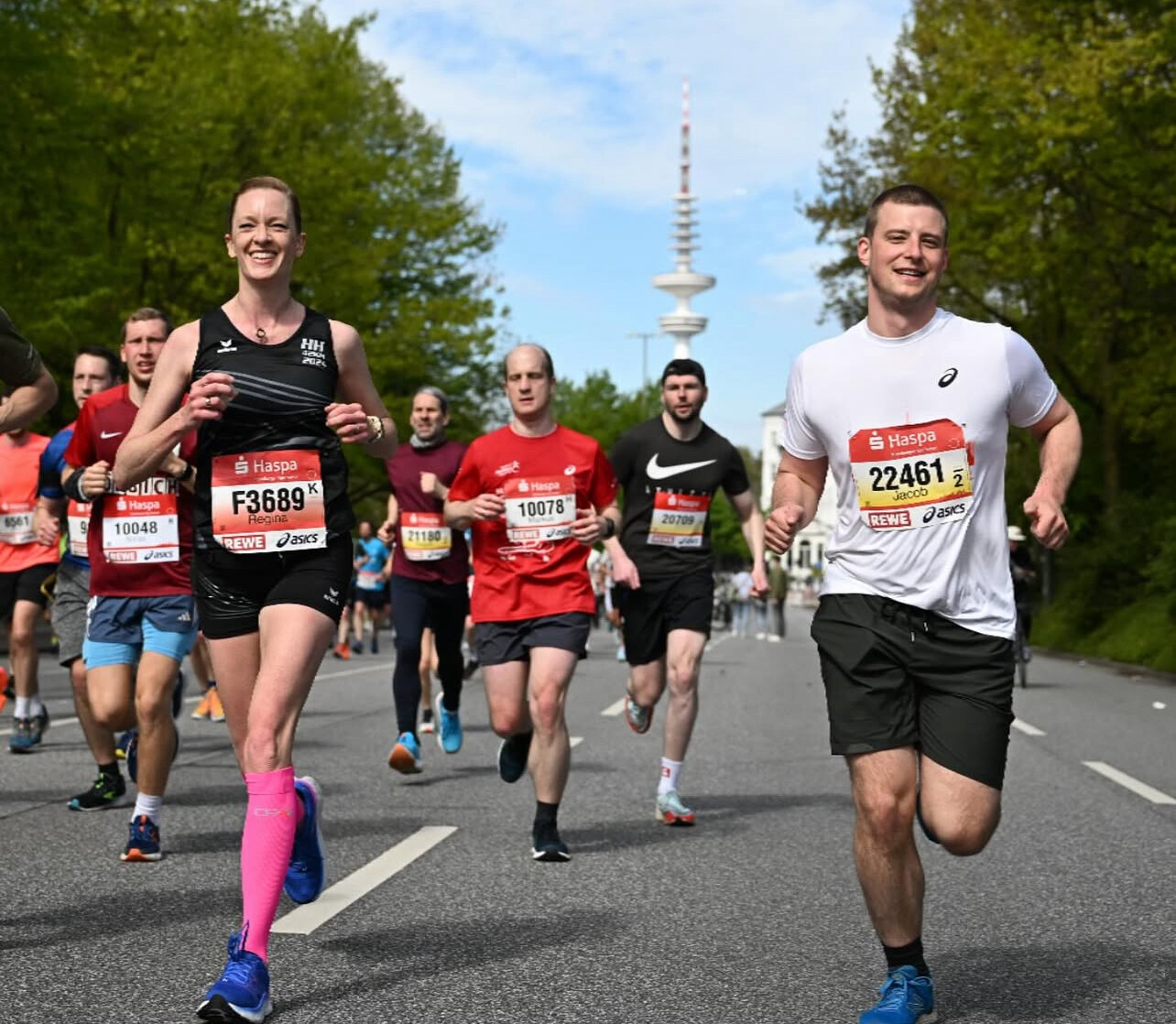
With near-perfect weather conditions forecasted, fast times are expected. The men’s course record of 2:04:09, set by Bernard Koech in 2023, could be under threat, with the potential for Hamburg’s first sub-2:04 performance.
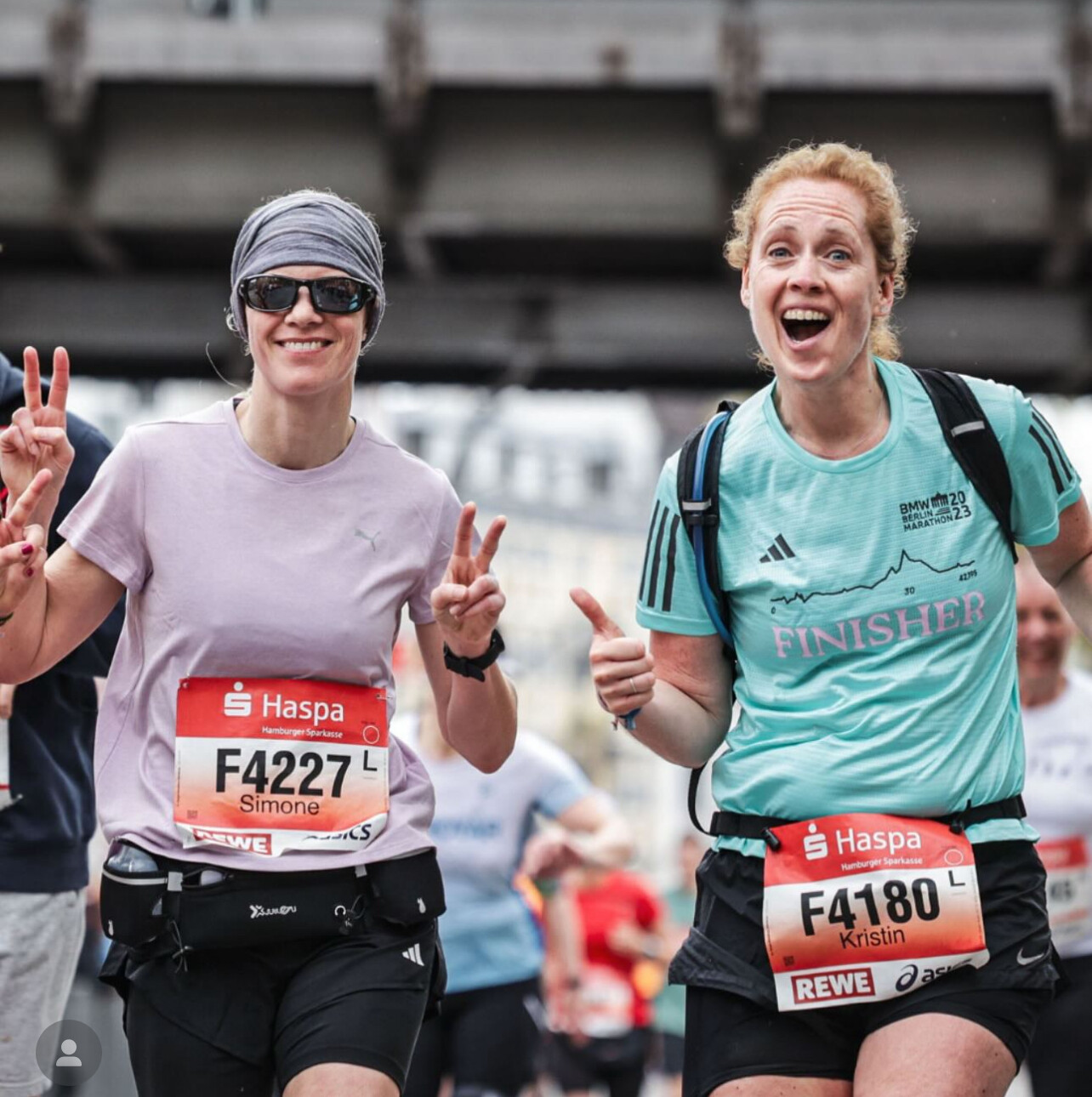
Amos Kipruto, who ran a personal best of 2:03:13 when finishing second behind Eliud Kipchoge in Tokyo 2022, is focused on running fast. “If I had the choice, a personal best would mean more to me than victory,” said Kipruto at the pre-race press conference. He’ll be joined by Kinde Atanaw (2:03:51), Tsegaye Getachew (2:04:49), and Philemon Kiplimo (2:04:56) in chasing the record. Kiplimo, who finished third in Hamburg last year, knows the course well and is aiming for an aggressive second half after a planned 62:00 opening.
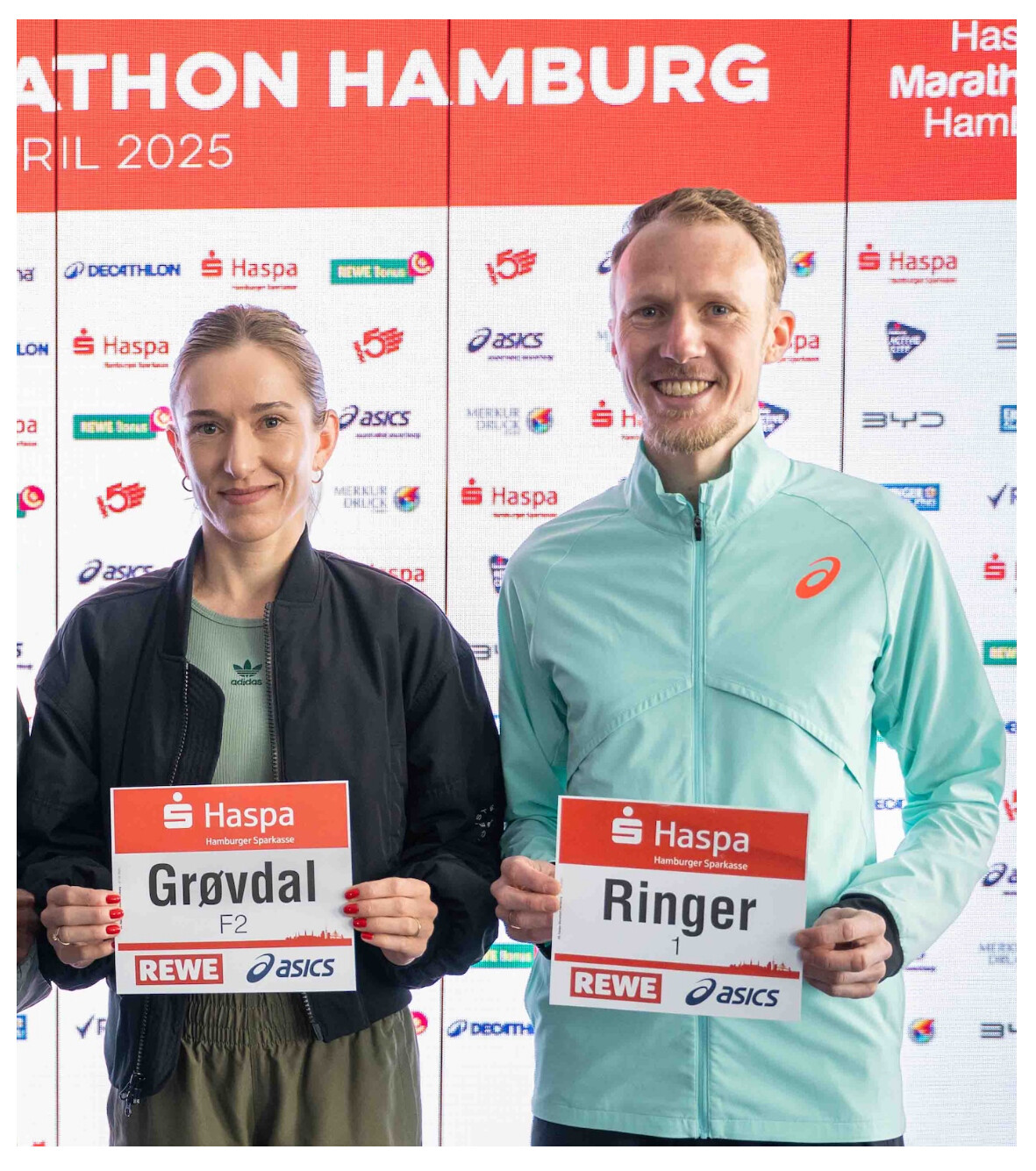
Germany’s top hope is Richard Ringer, the 2022 European marathon champion, who recently improved his personal best to 2:05:46. “I want to improve my Hamburg result from last year and aim to run under 2:07:00,” said Ringer, who also ran a new half marathon PB of 60:51 in Berlin this spring.
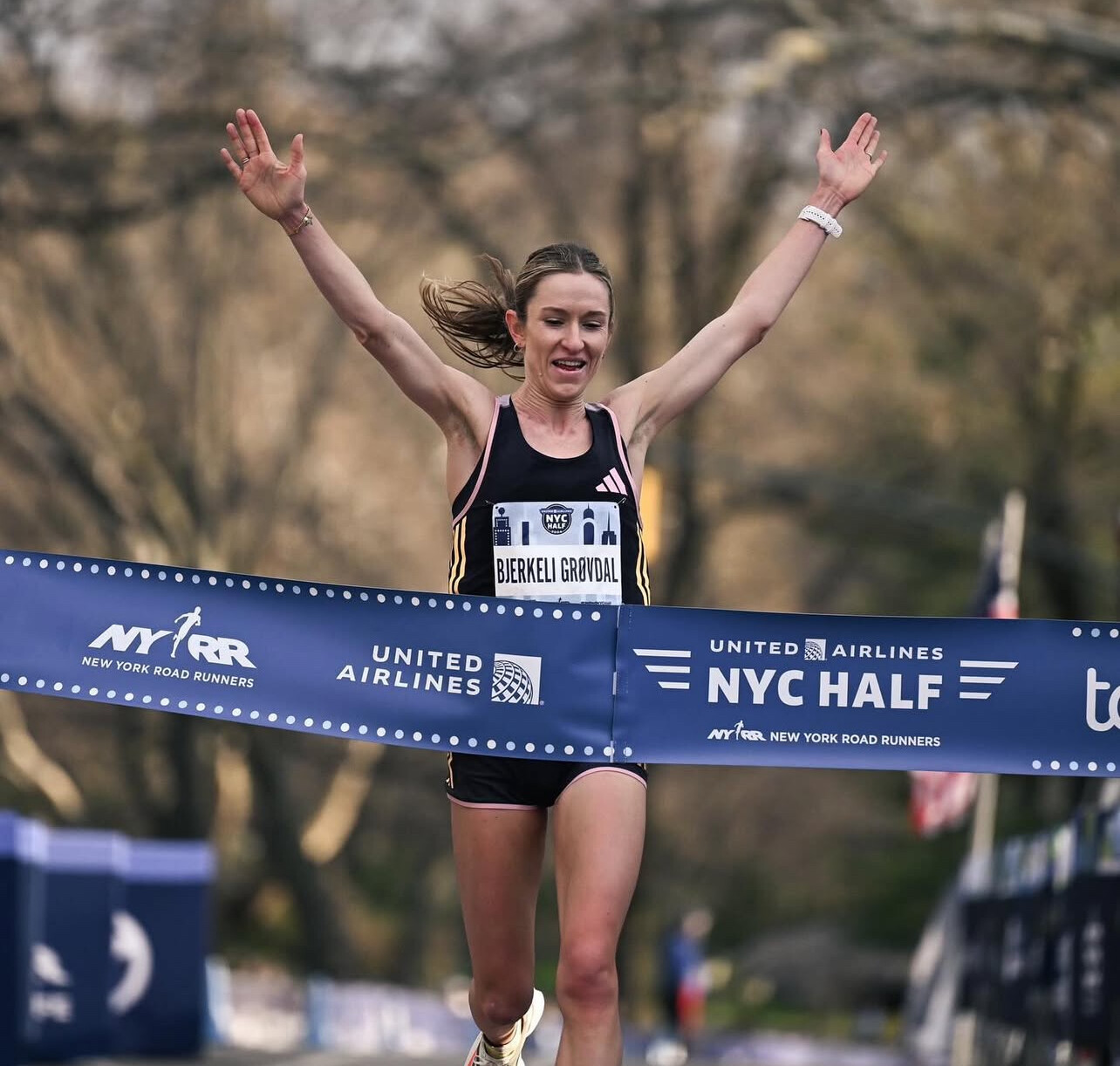
On the women’s side, Brigid Kosgei is back after battling injury, having last raced at the 2023 London Marathon where she clocked 2:19:02. Kosgei, who broke Paula Radcliffe’s long-standing world record with her 2:14:04 performance in Chicago 2019, is confident: “I am fit now and excited to run a good race in Hamburg.”
The women’s course record of 2:17:23, set by Ethiopia’s Yalemzerf Yehualaw in 2022, will be tough to beat, but with Kosgei, Ethiopia’s Workenesh Edesa (2:18:51), and rising star Sichala Kumeshi (2:20:42) in the field, a sub-2:20 finish is very possible. Edesa recently won in Osaka with 2:21:00 and is aiming to go faster, while Kumeshi is coming off a strong victory in Houston under tough conditions.
A major European storyline is Norway’s Karoline Grovdal, who will make her marathon debut. Grovdal, a multiple European Champion and last year’s half marathon gold medalist in Rome, is targeting Ingrid Kristiansen’s legendary Norwegian record of 2:21:06—set in London back in 1985 when it was a world record.
Elite Field Highlights
Men:
Amos Kipruto (KEN) – 2:03:13
Kinde Atanaw (ETH) – 2:03:51
Tsegaye Getachew (ETH) – 2:04:49
Philemon Kiplimo (KEN) – 2:04:56
Kebede Tulu (ETH) – 2:05:19
Goitom Kifle (ERI) – 2:05:28
Richard Ringer (GER) – 2:05:46
Others include Awet Habte (ERI, 2:06:25), Felix Kibitok (KEN, 2:06:28), and Julien Wanders (SUI, 2:11:52)
Women:
Brigid Kosgei (KEN) – 2:14:04
Workenesh Edesa (ETH) – 2:18:51
Etagegn Woldu (ETH) – 2:20:03
Sichala Kumeshi (ETH) – 2:20:42
Karoline Grovdal (NOR) – Marathon Debut
Others include Shitaye Eshete (BRN, 2:21:33) and Natasha Cockram (GBR, 2:26:14)
by Race News Service with Boris Baron
Login to leave a comment
Haspa Marathon Hamburg
The HASPA MARATHON HAMBURG is Germany’s biggest spring marathon and since 1986 the first one to paint the blue line on the roads. Hamburcourse record is fast (2:05:30), the metropolitan city (1.8 million residents) lets the euphoric atmosphere spill over and carry you to the finish. Make this experience first hand and follow the Blue Line....
more...London Marathon 2025: Elite Field Assembles in the Capital
The streets of London are buzzing as many of the world’s top marathoners arrive ahead of the 2025 TCS London Marathon this Sunday. Among the headliners are legends and rising stars: Eliud Kipchoge, Jacob Kiplimo, Tamirat Tola, Emmanuel Mutiso, and Alexander Mutiso Munyao, all looking sharp as they pose in front of Buckingham Palace.
The field is stacked, with major championship titles, world records, and fast finishes in the mix. With Kipchoge aiming for redemption and Kiplimo pushing to prove himself at the full marathon distance, fans can expect fireworks on the historic course.
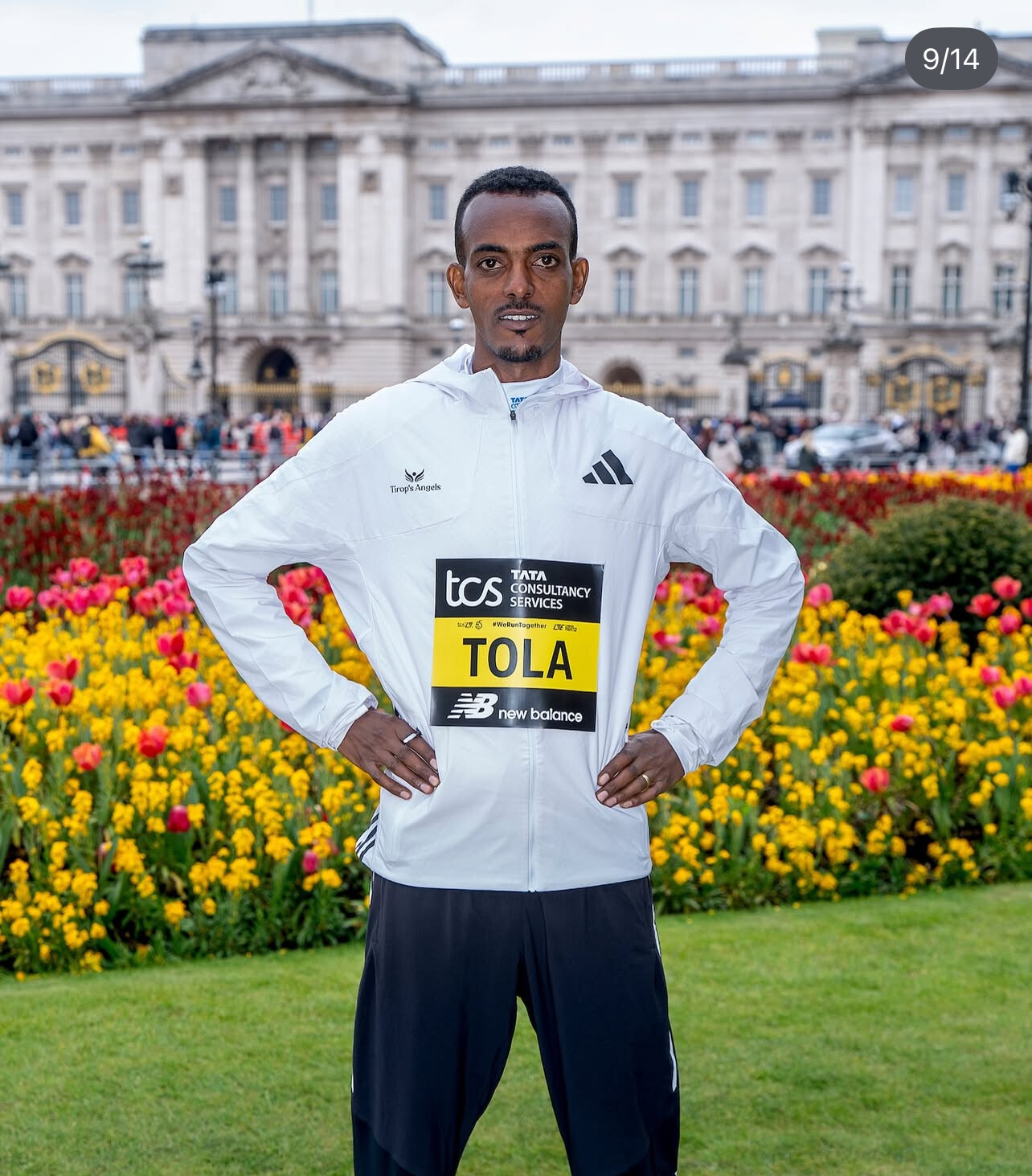
The latest forecast for the 2025 London Marathon, scheduled for Sunday, April 27, indicates warm and mostly dry conditions—ideal for spectators but potentially challenging for runners unaccustomed to heat.
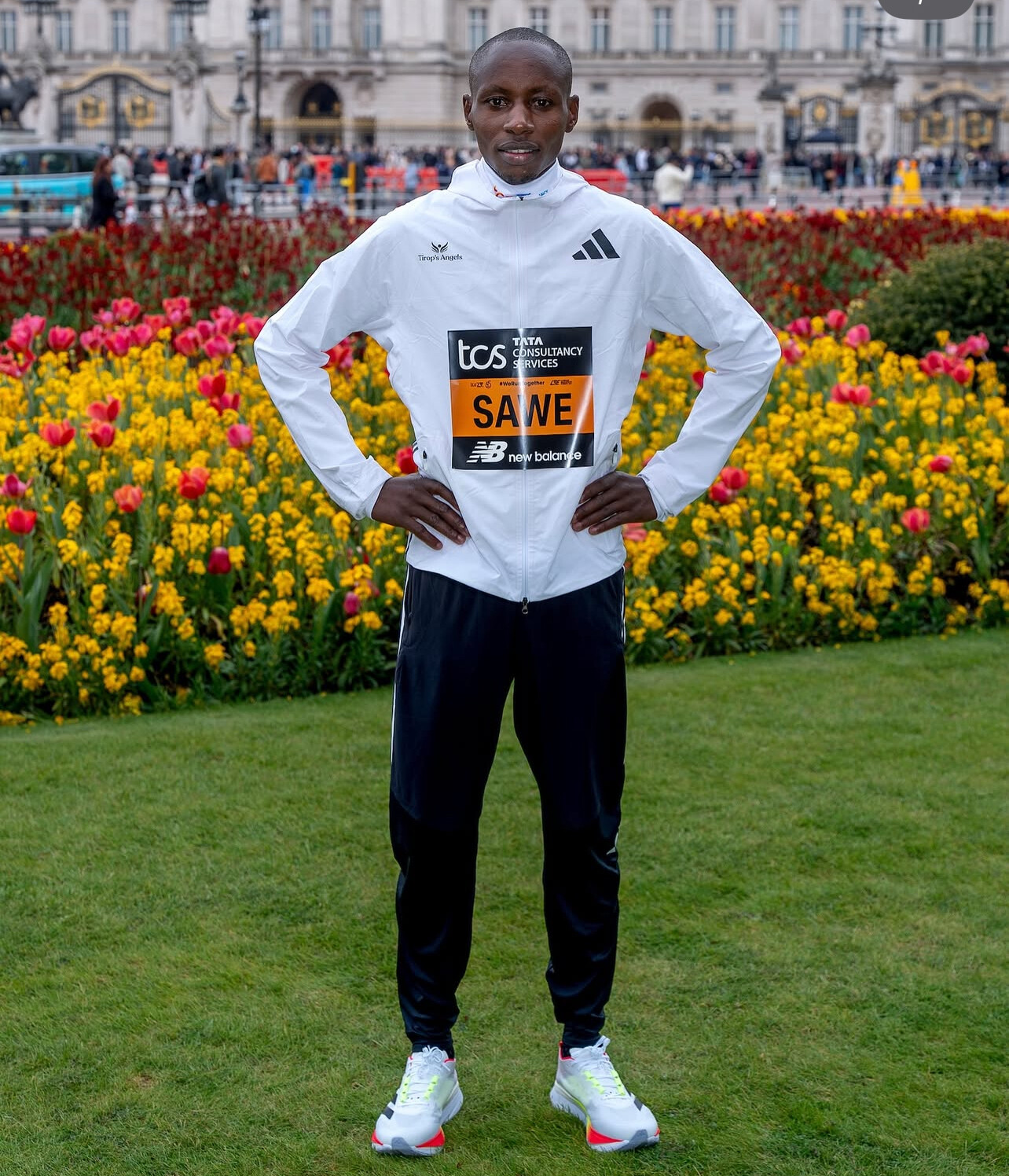
Race Day Weather Overview
• Morning Start (9:00 AM): Temperatures around 10°C (50°F) with light winds and cloudy skies.
• Midday to Afternoon: Temperatures rising steadily, peaking between 20°C and 22°C (68°F–72°F) by mid to late afternoon.
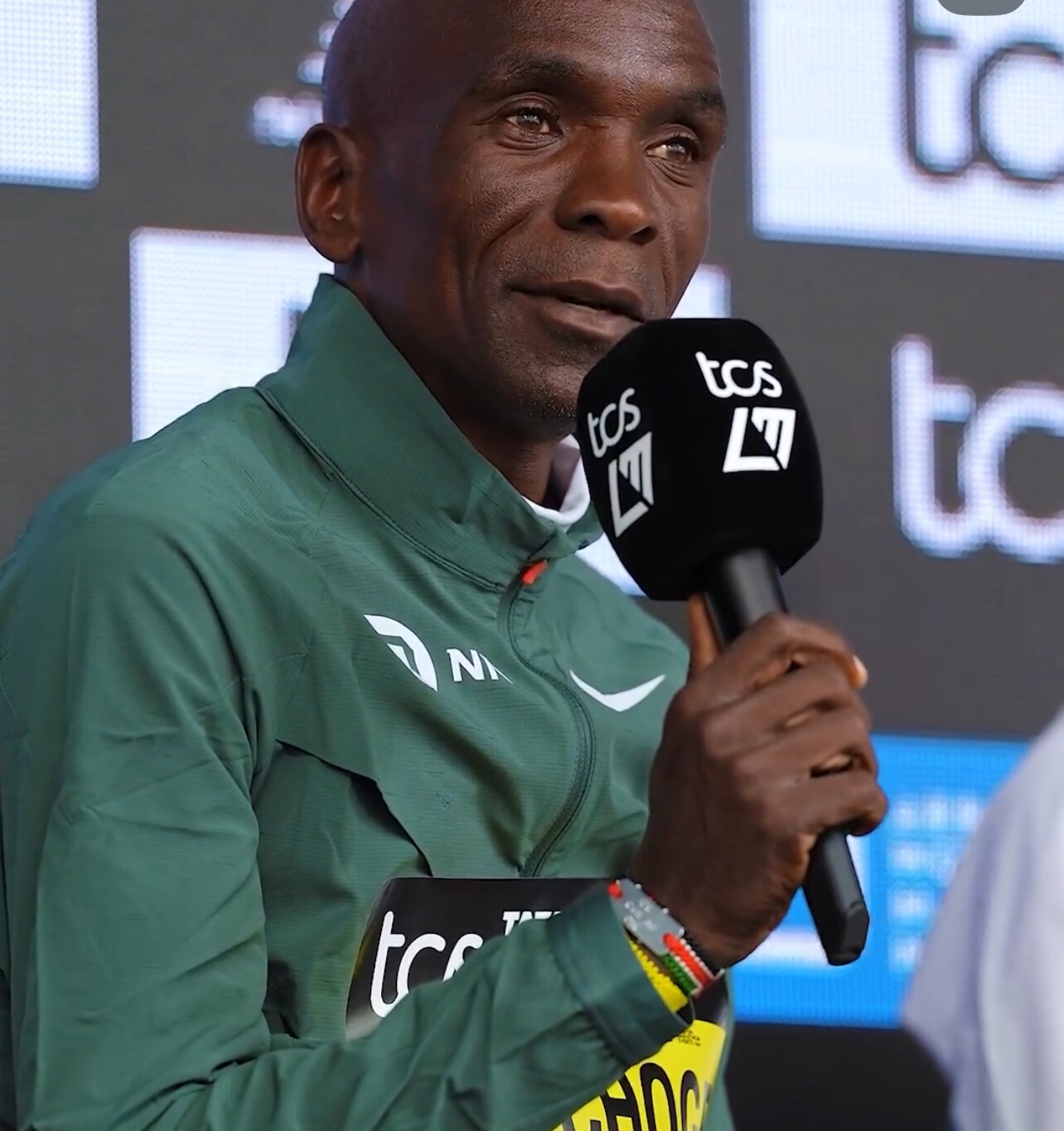
• Sky Conditions: Partly cloudy with sunny intervals throughout the day.
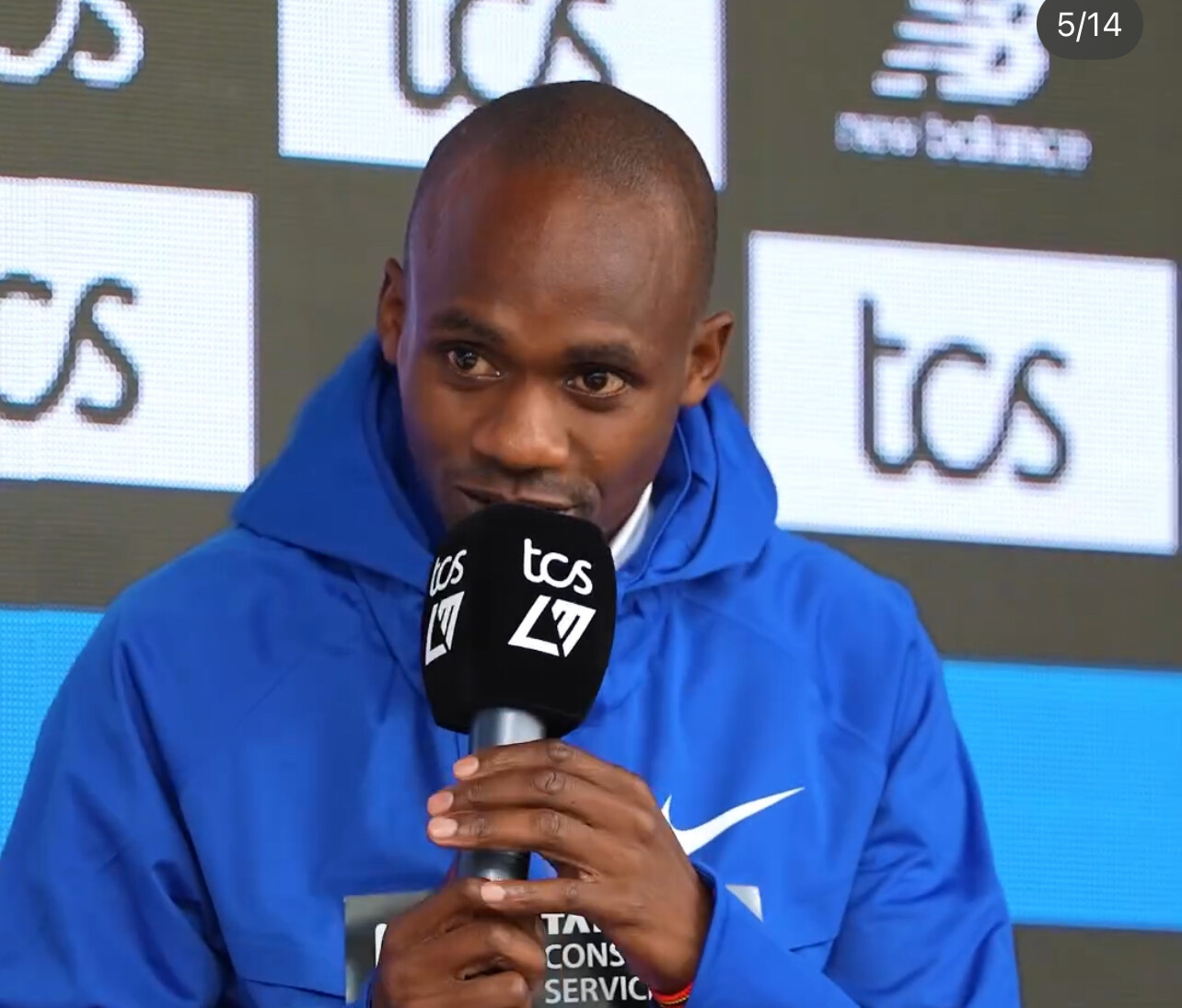
• Rain Probability: Low, with a 7%–10% chance of precipitation.
• Wind: Light breezes, potentially increasing slightly in the afternoon.
These conditions are consistent with forecasts from multiple sources, including the Met Office and BBC Weather.
“The weather forecast is suggesting perfect racing conditions,” says Bob Anderson. “Sub two hours?”
Stay tuned for live updates and results on My Best Runs — your go-to source for the World’s Best Road Races.
by Boris Baron
Login to leave a comment
Kiplimo’s Marathon Debut: Ugandan Star Set to Challenge Legends in London
Ugandan distance running sensation Jacob Kiplimo is poised to make his marathon debut at the 2025 TCS London Marathon on Sunday, April 27. This highly anticipated event follows his record-breaking performance at the Barcelona Half Marathon in February, where he set a new world record of 56:41, surpassing the previous mark by 49 seconds .
A Meteoric Rise
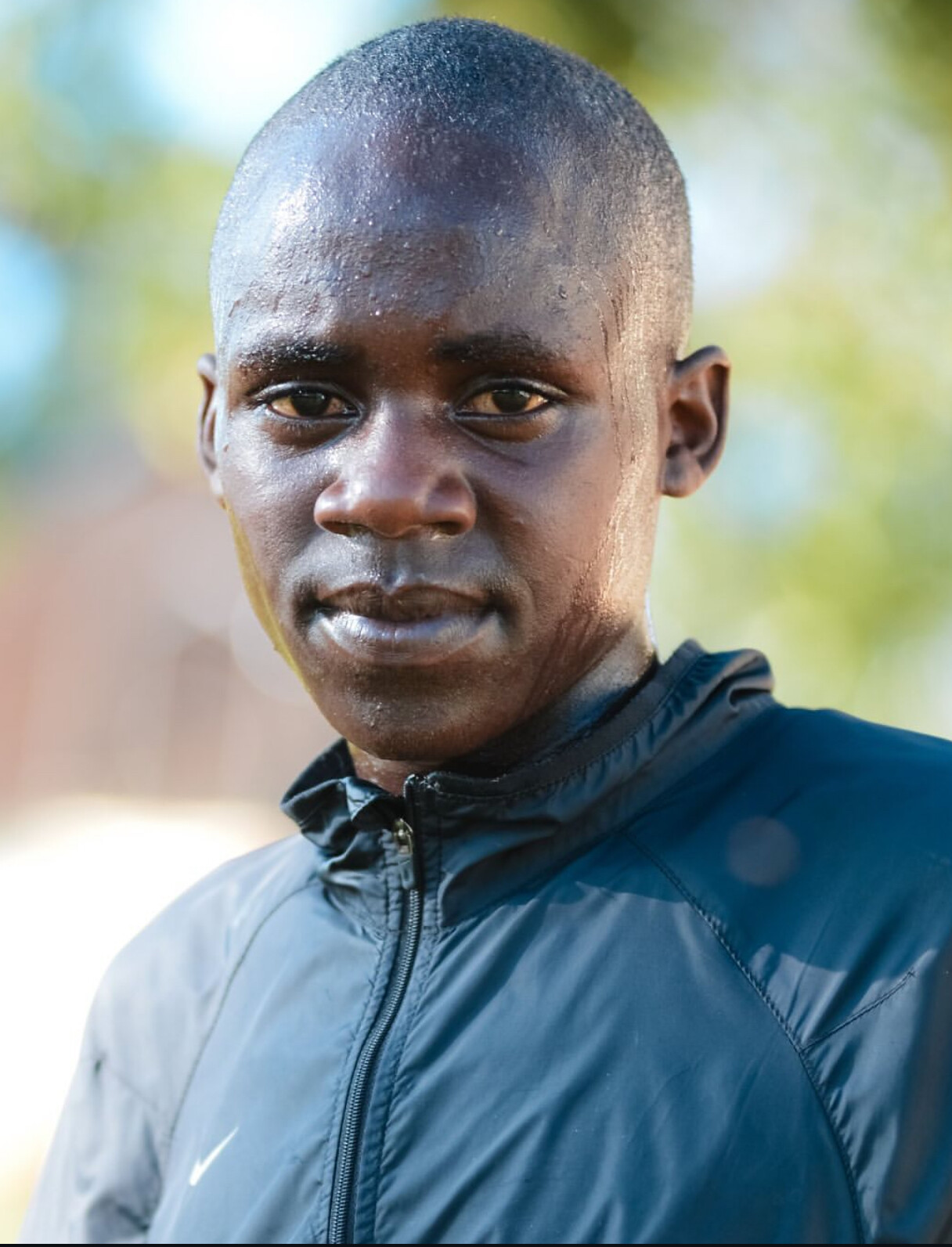
At just 24 years old, Kiplimo has already established himself as a formidable force in long-distance running. His accolades include a bronze medal in the 10,000 meters at the Tokyo 2020 Olympics and two World Cross Country Championship titles . His recent half marathon world record has only heightened expectations for his transition to the full marathon distance.
Facing a Formidable Field
Kiplimo’s debut will see him compete against some of the sport’s most decorated athletes, including:
• Eliud Kipchoge: The Kenyan legend and two-time Olympic champion, aiming for a record-extending fifth London Marathon title .
• Tamirat Tola: The reigning Olympic champion from Ethiopia.
• Alexander Mutiso: The 2024 London Marathon winner.
• Sabastian Sawe: The second-fastest marathon debutant in history, with a time of 2:02:05 in Valencia .
Despite the stiff competition, Kiplimo’s coach, Peter Chelangat, has expressed confidence in his protégé’s preparation, stating that they are building his endurance through intense training tailored for the 42-kilometer race .The Road Ahead
The London Marathon, renowned for its flat and fast course, offers an ideal setting for Kiplimo’s debut. While breaking the elusive two-hour barrier remains a monumental challenge, Kiplimo’s recent performances suggest he could be a strong contender for a podium finish.
As the running world eagerly awaits April 27, all eyes will be on Kiplimo to see if he can translate his half marathon prowess to the full marathon distance and make history in London.
by Boris Baron
Login to leave a comment
TCS London Marathon
The London Marathon was first run on March 29, 1981 and has been held in the spring of every year since 2010. It is sponsored by Virgin Money and was founded by the former Olympic champion and journalist Chris Brasher and Welsh athlete John Disley. It is organized by Hugh Brasher (son of Chris) as Race Director and Nick Bitel...
more...BROTHERHOOD ON BOYLSTON: JOHN KORIR LOOKS TO EMULATE WESLEY AS BOSTON MARATHON CHAMPION
By Toni Reavis
There have been many historic firsts in the long history of the Boston Marathon. This coming Monday, 21 April, 2025, 28-year-old John Korir of Kitale, Kenya, will attempt to become the first brother of a Boston champion to match his sibling on the Boylston Street winner‘s platform. Older brother Wesley won Boston in the notoriously hot year of 2012.
History To Write
The Korir brothers have already written their first chapter of running history when John won the BofA Chicago Marathon last fall in 2:02:44. That gave each brother one World Marathon Major on their ledger. And both have won twice the Los Angeles Marathon, too, Wesley in 2009 & 2010, John in 2021 & 2022. Now John looks to join Wesley as a Boston champion.
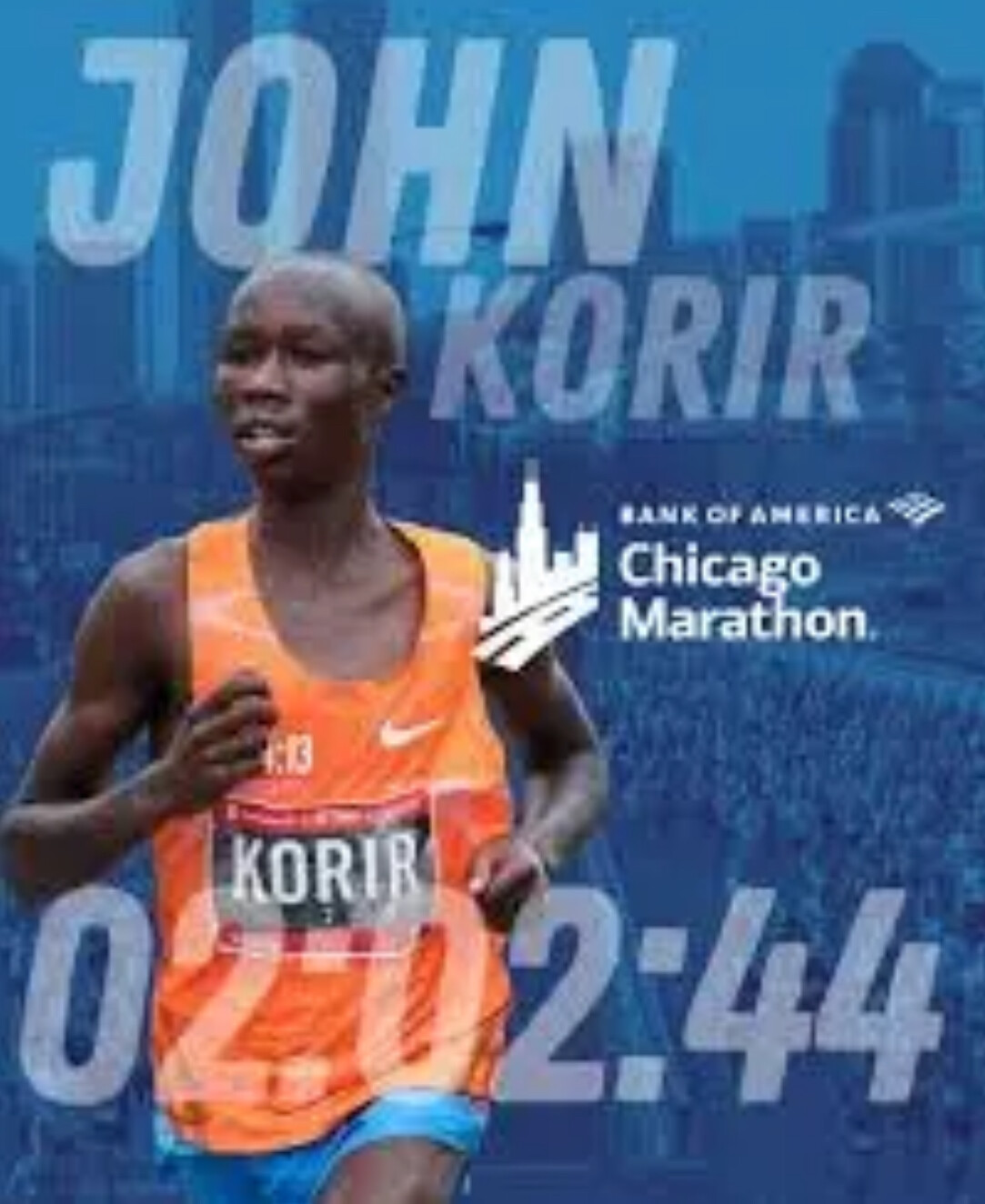
STRONG FIELD
But it won’t be easy as John will have, among others, two former Boston champions to contend with, defender Sisay Lemma of Ethiopia and 2022-2023 champ, Evans Chebet of Kenya.
All three competed last year, so there won’t be any surprises like we saw in 2024 when Lemma struck out early, opened a commanding lead—posting the fastest first half in Boston history, 60:19—and then hung on to win.
BOSTON TACTICS
So accustomed are today’s runners to pacesetters, that a tactic like hard early front running can catch competitors off guard. Remember Meb Keflezighi in 2014? It worked again ten years later.
Despite Lemma slowing to a near 66-minute second half, his cushion was substantial enough for a relatively easy win in 2:06:17. Chebet finished third, Korir fourth.
1. Sisay Lemma: 2:06:17 (Ethiopia)
2. Mohamed Esa: 2:06:58 (Ethiopia)
3. Evans Chebet: 2:07:22 (Kenya)
4. John Korir: 2:07:40 (Kenya)
Odds are that Lemma won’t employ the same strategy this Patriots’ Day. And if he does, the others won’t be caught on their back foot.
FAITH IN & FROM COACH MANN
I spoke with John Korir‘s coach, Ron Mann, two days ago after he finished nine holes of golf at his home course in Louisville, Kentucky. We discussed both John and brother Wesley, who Ron also coached at the University of Louisville and then throughout his professional running career.
I pointed out to Coach Mann that Boston 2025 will be the 12th marathon of John’s career. He began with two late race falters in his first three marathon attempts, Ottawa 2018 and Los Angeles in 2019. On both occasions, he moved hard at 20 miles and opened what looked to be winning margins.
EARLY HARD LESSONS
But in Ottawa, course record holder Yemane Tsegay of Ethiopia caught him at 40k, and won by 22 seconds. In Los Angeles, it was even more cruel, as John faded significantly on Ocean Avenue in sight of the finish line in Santa Monica. With less than 30 seconds of running left, Elisha Barno flew by the exhausted Korir to snatch the win by 7 seconds.
“Early in his career, when he was running well, but not great, he was only running about 70 miles a week,” explained Coach Mann. “He didn’t have a bottom under him. Gradually, over a period of four years, we are now at the point where he is running big mileage. He first did it before Chicago last fall and now even a little bit more for Boston. I don’t know how well the others are prepared, but John is all ready to go.”
This will be John‘s third attempt at Boston. In 2023 he finished ninth in 2:10:04. Last year he was fourth in 2:07:40.
“So he knows the course,” confirmed Coach Mann. “And if we go back to Geoffrey Mutai’s record in 2011 (2:03:02), everything happens at Heartbreak Hill. Two years ago, John charged up Heartbreak Hill with Eliud Kipchoge. They ended up eighth and ninth. So you gotta ask if that’s the wise thing to do.”
BOSTON SPECIFIC PREP
John has prepared on a variety of terrains back home for Boston’s tricky route.
“Like golf, you try to look at the course you’re playing,” explained Mann, who visited John in Kenya in January. “If the last hole is over water, then you practice that. So the last 4 miles in Boston are downgrade with big crowds. So you have to be ready for that.
“I told him, ‘you have as much speed as anyone. You’ve run a 58:50 for the half-marathon. So if you feel like you wanna go, go. But if you feel like you wanna wait, then wait.”
There is a 14-year gap between Wesley and John. And their attributes as runners are different as well.
2012 Boston Marathon champion Wesley Korir (third photo)
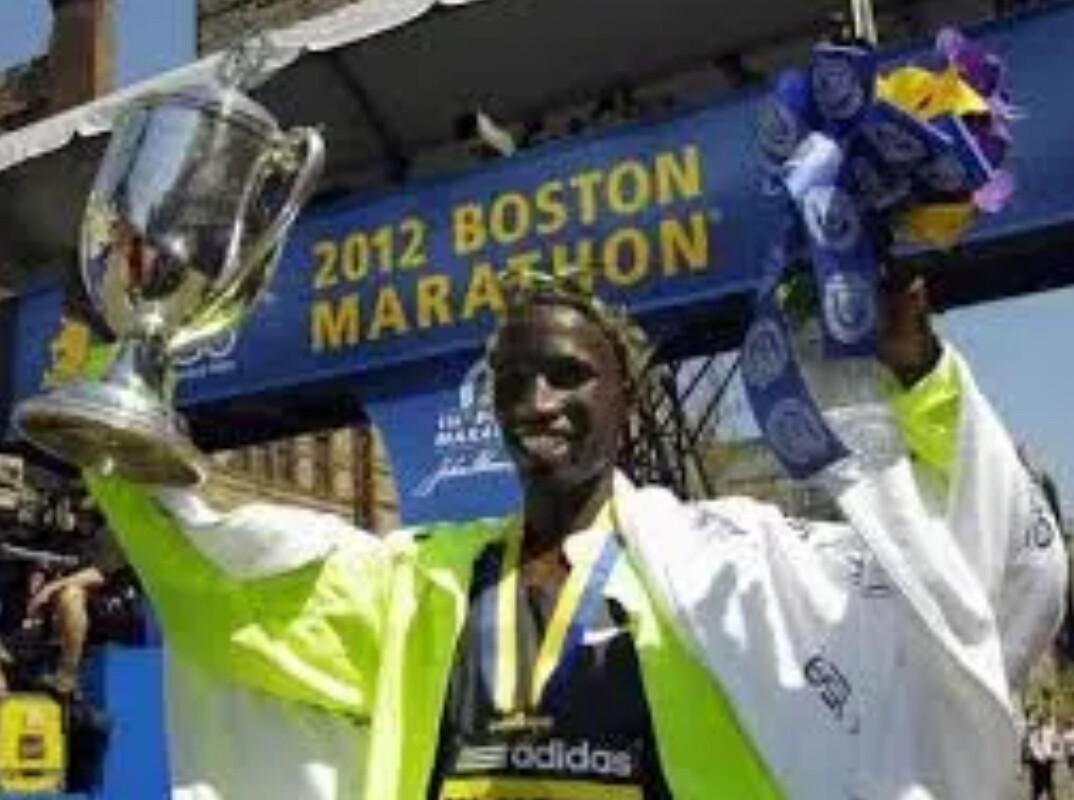
“John has more speed,” said their coach. “But Wesley had more endurance. He was able to withstand more early on in his career. But we needed to put speed on to his endurance. But when he decided to campaign for and won his seat for parliament in 2013 (as he simultaneously prepared to defend his Boston title), we never got a chance to do that. So we never saw the end of his career where he could’ve maximized his speed. John already has the speed. We just needed to put endurance beneath it.”
LEARNING HOW TO WIN
Another of Korir’s opponents will be American Olympian, Connor Mantz. Like John, Connor is 28-years-old, and just entering his prime. While still dangerous, Sisay Lemma (34) and Evans Chebet (35) are on the back nine of their careers.
Though Connor Mantz has a half marathon PR close to Korir’s—59:15 to 58:50—he has yet to finish on the podium of a major marathon, much less tasted victory.
“John has learned how to win,” said Coach Mann. “That’s why the wins in the Boilermaker 15k (Utica, N.Y.), Falmouth Road Race, and Chicago Marathon in 2024 were so important. Now he is expecting to win.
“He already has two marathon victories in Los Angeles and one in Chicago. He also has a world class personal best (2:02:44). Now it’s consistency over a long period of time. Boston is one step along that route. Will he win this year? I don’t know. But he will win Boston in his career. I tell him, you’re as prepared as you can be, and I’ve never trained an athlete to your level before. So, it’s yours to take now.”
CONSTRUCTING YOUR FITNESS
Runners know that reaching peak form is a slow building process. People refer to building your aerobic house. I liken it to constructing a house of cards. You can build a very strong house, but you must build it assiduously, and gradually, or the whole thing will come tumbling down.
“Between Boston last spring and Chicago last fall, John’s stride tempo went up by five per minute,” explained Coach Mann. “And his average heart rate went from 184bpm in Boston to 173 in Chicago. That tells me he’s even fitter that he was.”
HOME IN THE CHERANGANY HILLS
John lives and trains in the Cherangany Hills about 40 minutes northwest of Eldoret, Kenya in the famed Central Highlands. It’s 15 minutes from Kitale, where the Transcend Academy is located.
Transcend Academy is a non-profit school sponsored by the Kenyan Kids Foundation USA that provides full scholarships to talented students from needy backgrounds. Its mission is to leverage running to develop holistic individuals for the progress of Kenya. It’s an offshoot of Wesley Korir’s political sensibilities.
The school was founded by Wesley and his wife, Tarah, who met while both were students at the University of Louisville. John also contributes financially to Transcend.
While John lives and trains in Kitale, his wife and three girls moved to Eldoret because that’s where his kids go to school. But John built a second home in Kitale with his Chicago winnings, so his family can come stay with him on weekends. John and Wesley’s mom and dad live about 600m from the school, too.
“We have a very close-knit, well-oiled family around him,” said Coach Mann, “to make sure that he gets it right.”
The field for Monday’s marathon is very strong and experienced. The weather forecast suggests benign conditions, so it will be the athletes, alone, who decide the outcome.
IN THE HANDS OF GOD
“I tell John, ‘the gift is your responsibility to use," said Coach Mann. "So use it well and give the glory to God’. He did that in Chicago. He crossed himself after he crossed the line.”
Maybe another cross in Hopkinton might not be a bad idea come Monday morning. Brother Wesley will be waiting with Coach Mann at the finish line on Boylston Street, praying like mad, one would assume.
Believing the Boston!
by Toni Reavis
Login to leave a comment
Boston Marathon
Among the nation’s oldest athletic clubs, the B.A.A. was established in 1887, and, in 1896, more than half of the U.S. Olympic Team at the first modern games was composed of B.A.A. club members. The Olympic Games provided the inspiration for the first Boston Marathon, which culminated the B.A.A. Games on April 19, 1897. John J. McDermott emerged from a...
more...Breaking the Two-Hour Marathon: Could London 2025 Be the Stage?
The marathon world has long been captivated by the elusive sub-two-hour barrier. While Eliud Kipchoge’s 1:59:40 in Vienna 2019 showcased human potential, it occurred under controlled conditions and isn’t recognized as an official world record. As the 2025 TCS London Marathon approaches on April 27, the question arises: Could this be the race where history is officially rewritten?
The Elite Field: A Convergence of Legends and Rising Stars
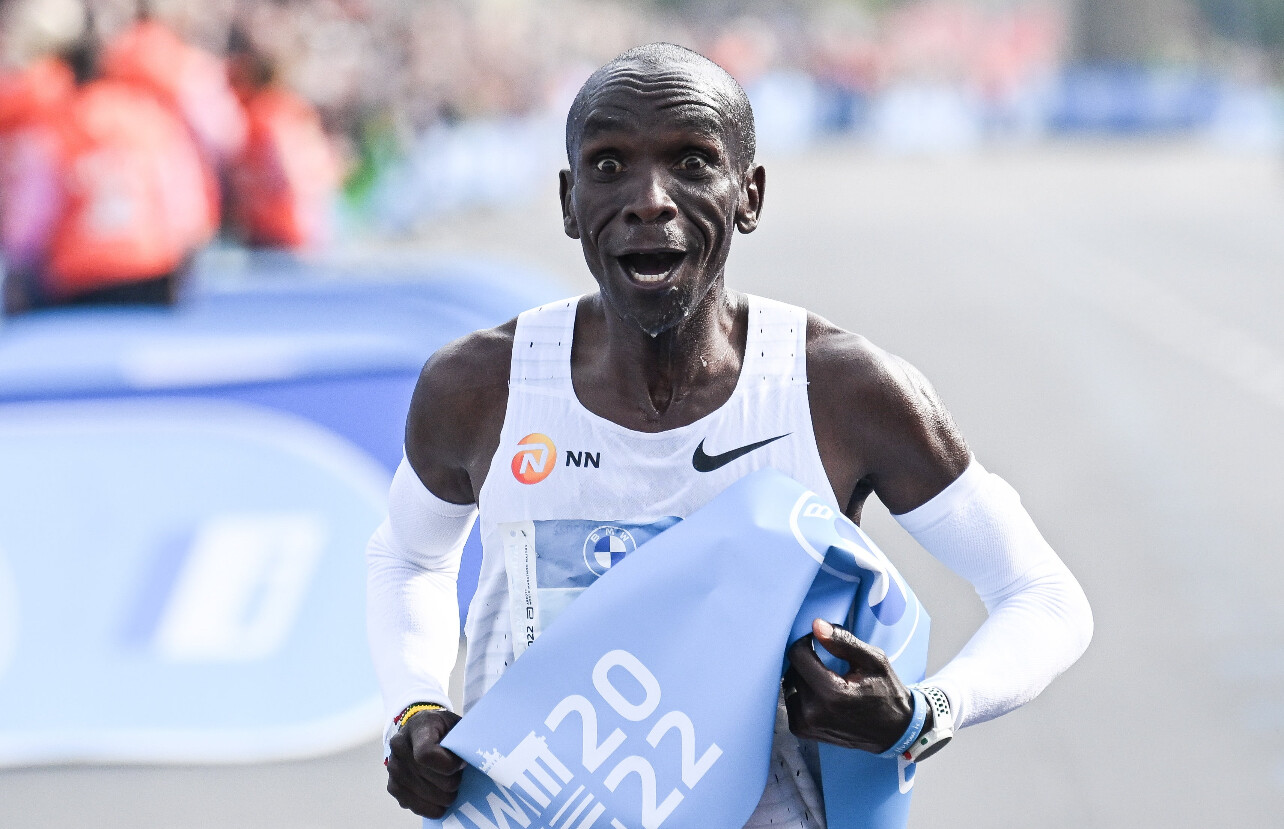
London’s 2025 lineup is arguably its most formidable yet. Eliud Kipchoge, the four-time London champion and former world record holder (2:01:09), returns to a course he has dominated. Joining him is Kenenisa Bekele, the third-fastest marathoner ever (2:01:41), seeking redemption after a close second-place finish in 2024. The field also features Olympic champion Tamirat Tola, reigning London champion Alexander Mutiso, and debutant Jacob Kiplimo, who holds the half marathon world record at 56:42.
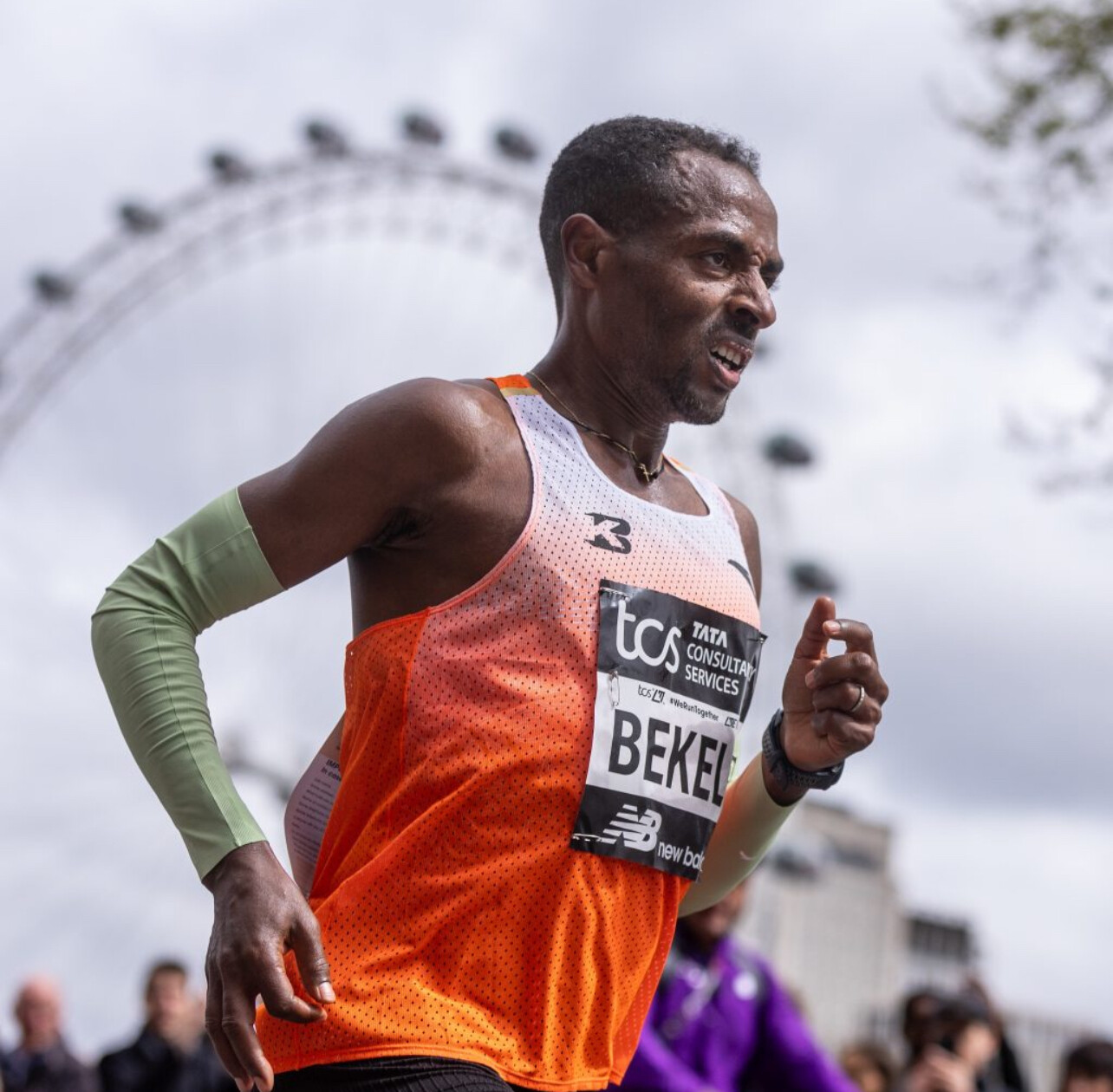
“The elite field for London is loaded, but my pick (if I must) is Jacob Kiplimo after watching him destroy the half marathon record,” says MBR editor Bob Anderson. “But the marathon is a different animal, and a sub-two-hour marathon is very possible. However, the weather will need to be perfect, and Jacob needs to have an ‘on’ day for it to happen. He might just go for the win. I wonder how his training has differed in preparation?”

Course and Conditions: London’s Favorable Terrain

The London Marathon’s flat and fast course, combined with its sea-level altitude, provides an ideal setting for record-breaking attempts. The 2025 weather forecast predicts partly cloudy skies with temperatures ranging from 45°F to 56°F (7°C to 13°C) and minimal wind—conditions conducive to fast times.
Technological Advancements: The Role of Innovation
Modern advancements, notably in footwear technology, have played a significant role in recent marathon performances. The latest “super shoes” offer enhanced energy return, potentially shaving crucial seconds off elite runners’ times. Additionally, strategic pacemaking and optimized nutrition strategies are integral components in the pursuit of the sub-two-hour marathon.
The Verdict: Is Sub-Two Within Reach?
While the convergence of elite talent, favorable course conditions, and technological support makes the prospect enticing, breaking the two-hour barrier in an official race remains a monumental challenge. However, if ever there was a race poised to witness such a historic feat, the 2025 London Marathon stands as a prime candidate.
Stay tuned to My Best Runs for comprehensive coverage of the London Marathon and insights into the evolving landscape of elite distance running.
by Boris Baron
Login to leave a comment
TCS London Marathon
The London Marathon was first run on March 29, 1981 and has been held in the spring of every year since 2010. It is sponsored by Virgin Money and was founded by the former Olympic champion and journalist Chris Brasher and Welsh athlete John Disley. It is organized by Hugh Brasher (son of Chris) as Race Director and Nick Bitel...
more...Kenyan Athletes Nominated for Africa Golden Awards 2025
Kenyan athletes Ferdinand Omanyala, Eliud Kipchoge, and Faith Kipyegon have been nominated for the prestigious Africa Golden Awards’ Best Athlete of the Year 2025. The awards ceremony is scheduled to take place in Nairobi on April 27, 2025.
Ferdinand Omanyala
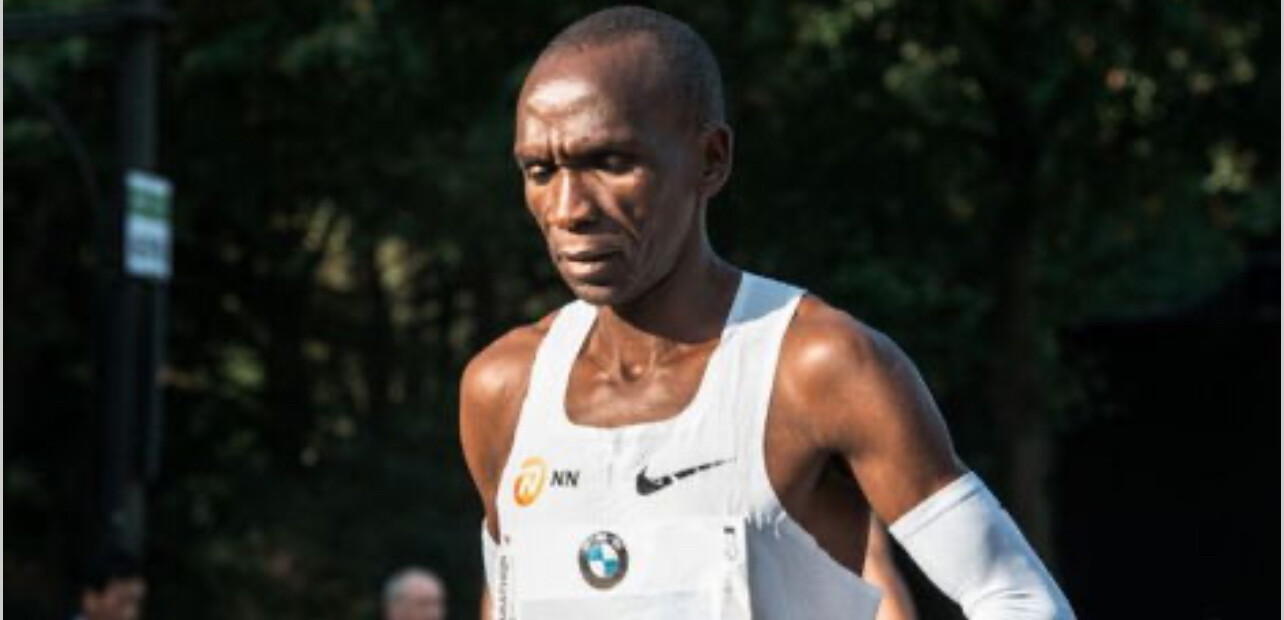
Renowned for his sprinting prowess, Omanyala had a mixed 2024 season. He secured a fourth-place finish at the World Athletics Indoor Championships and reached the semi-finals at the Paris Olympics, finishing eighth. Despite these challenges, his nomination underscores his significant impact on African sprinting.
Eliud Kipchoge
The marathon legend faced a challenging 2024, finishing 10th at the Tokyo Marathon and recording a Did Not Finish (DNF) at the Paris Olympics. Nonetheless, his enduring legacy in long-distance running and his influence on the sport have earned him a place among the nominees.
Faith Kipyegon
Middle-distance runner Kipyegon had a stellar 2024 season, highlighted by her third consecutive Olympic gold in the 1500m at the Paris Olympics. She also secured a silver medal in the 5000m, further cementing her status as one of the year’s top athletes.
Voting and Awards Ceremony
Voting for the Best Athlete of the Year award commenced on March 9 and will continue until April 21. The athlete receiving the highest number of votes will be honored at the awards gala on April 27 in Nairobi. The winner will receive Ksh4.5 million (USD 35,000), with the first and second runners-up earning Ksh2.5 million (USD 20,000) and Ksh1.2 million (USD 10,000), respectively.
The Africa Golden Awards aim to recognize and celebrate the exceptional achievements of African athletes, highlighting the continent’s growing prominence in the global sports arena.
by Boris Baron
Login to leave a comment
Amanal Petros - From Refugee to Record-Breaker, Eyes Set on London Marathon Glory
German marathon record-holder Amanal Petros is preparing for a significant milestone in his athletic career as he sets his sights on the 2025 London Marathon, scheduled for April 27, 2025. This event will mark his inaugural participation in the London Marathon, where he will compete alongside an elite field featuring renowned athletes such as Eliud Kipchoge and Kenenisa Bekele. Petros’s personal best of 2:04:58, achieved at the 2023 Berlin Marathon, positions him as a formidable contender in this prestigious race.
A Journey of Resilience and Achievement
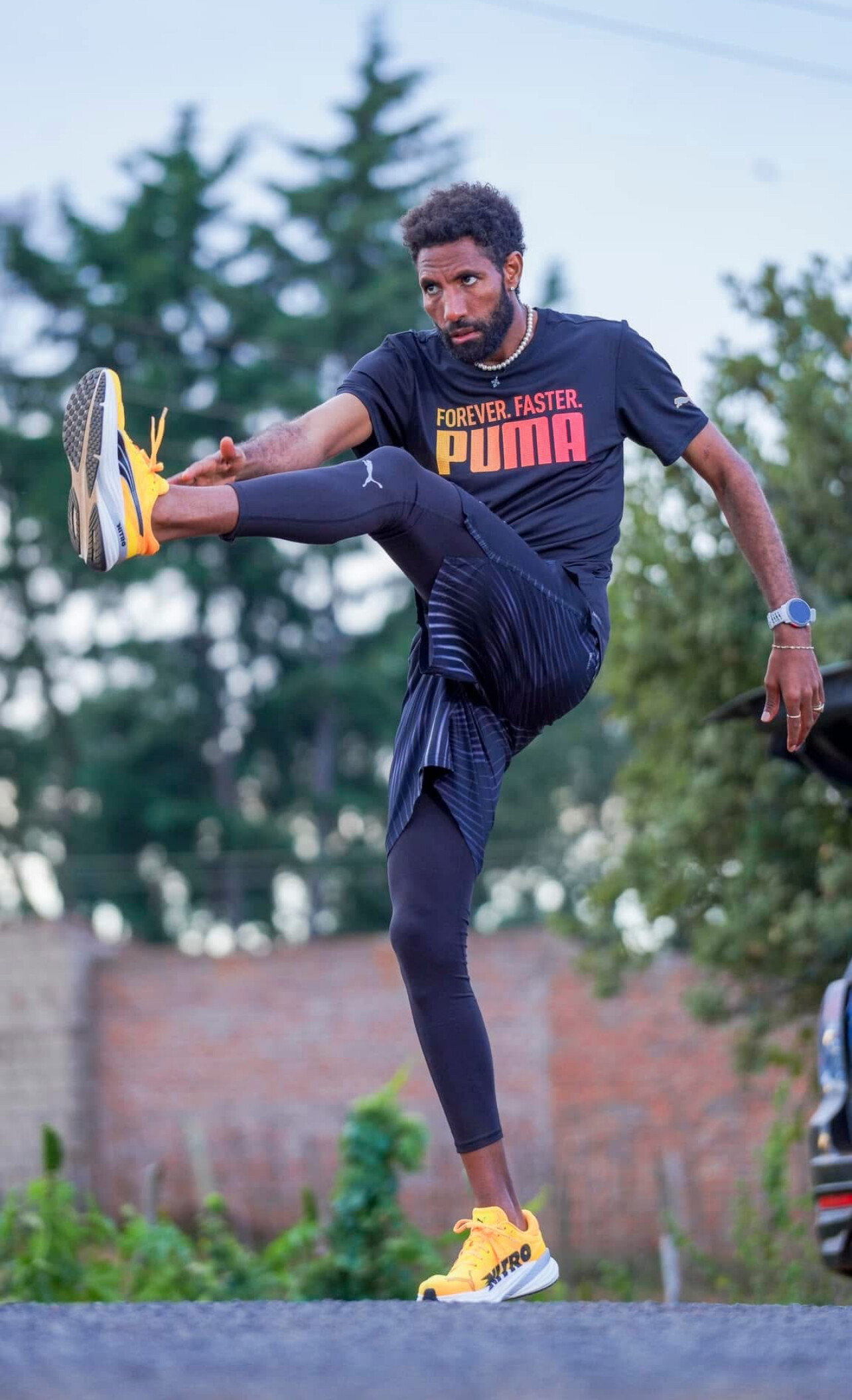
Born on May 17, 1995, in Assab, Eritrea, Petros’s early life was marked by adversity. At the age of two, his family fled the Eritrean-Ethiopian conflict, seeking refuge in Ethiopia. In 2012, as a teenager, Petros embarked on a journey to Germany, where he sought asylum and eventually acquired citizenship in 2015. It was in Germany that he discovered his passion and talent for long-distance running, setting the stage for a series of remarkable achievements.
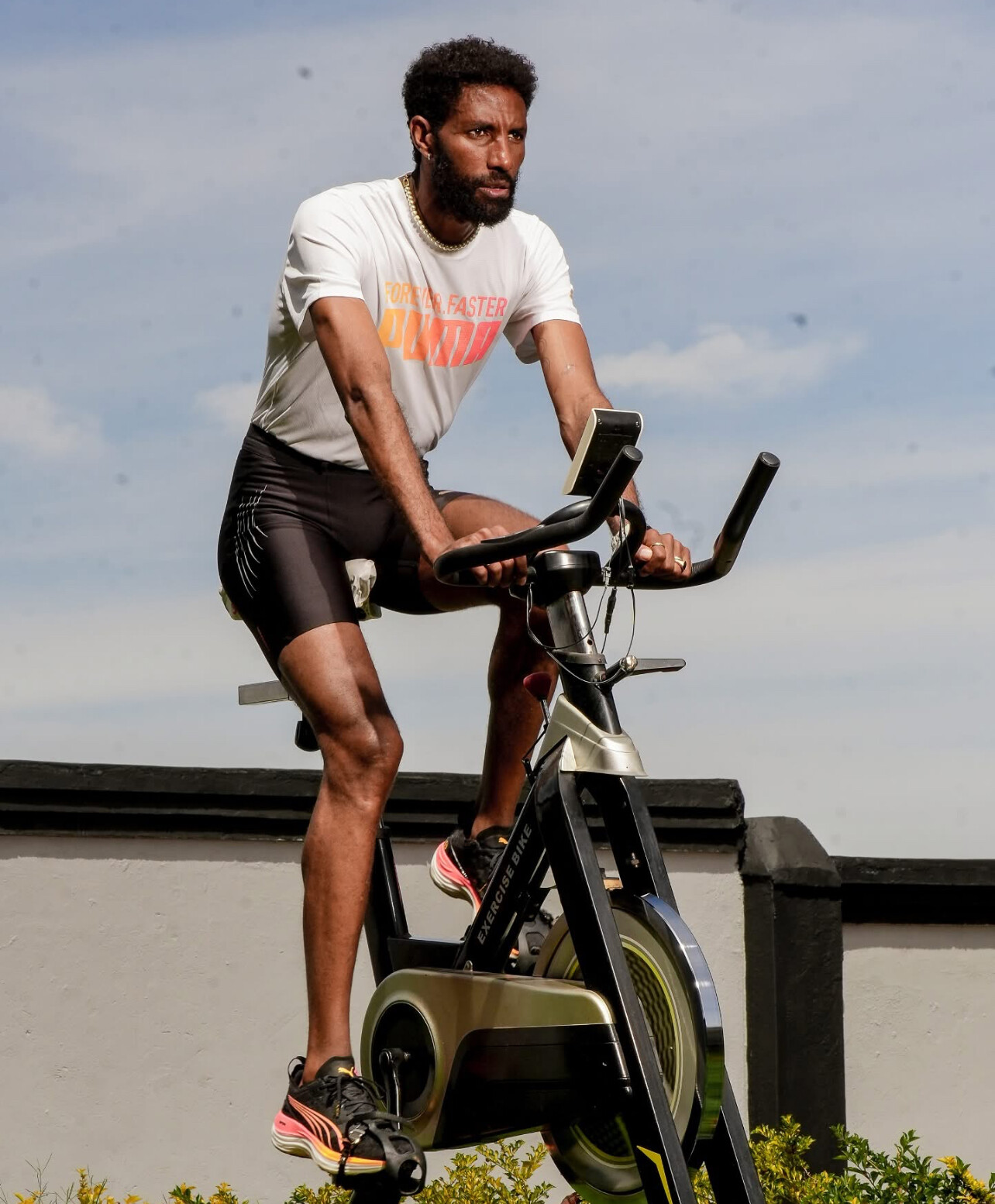
Record-Breaking Performances
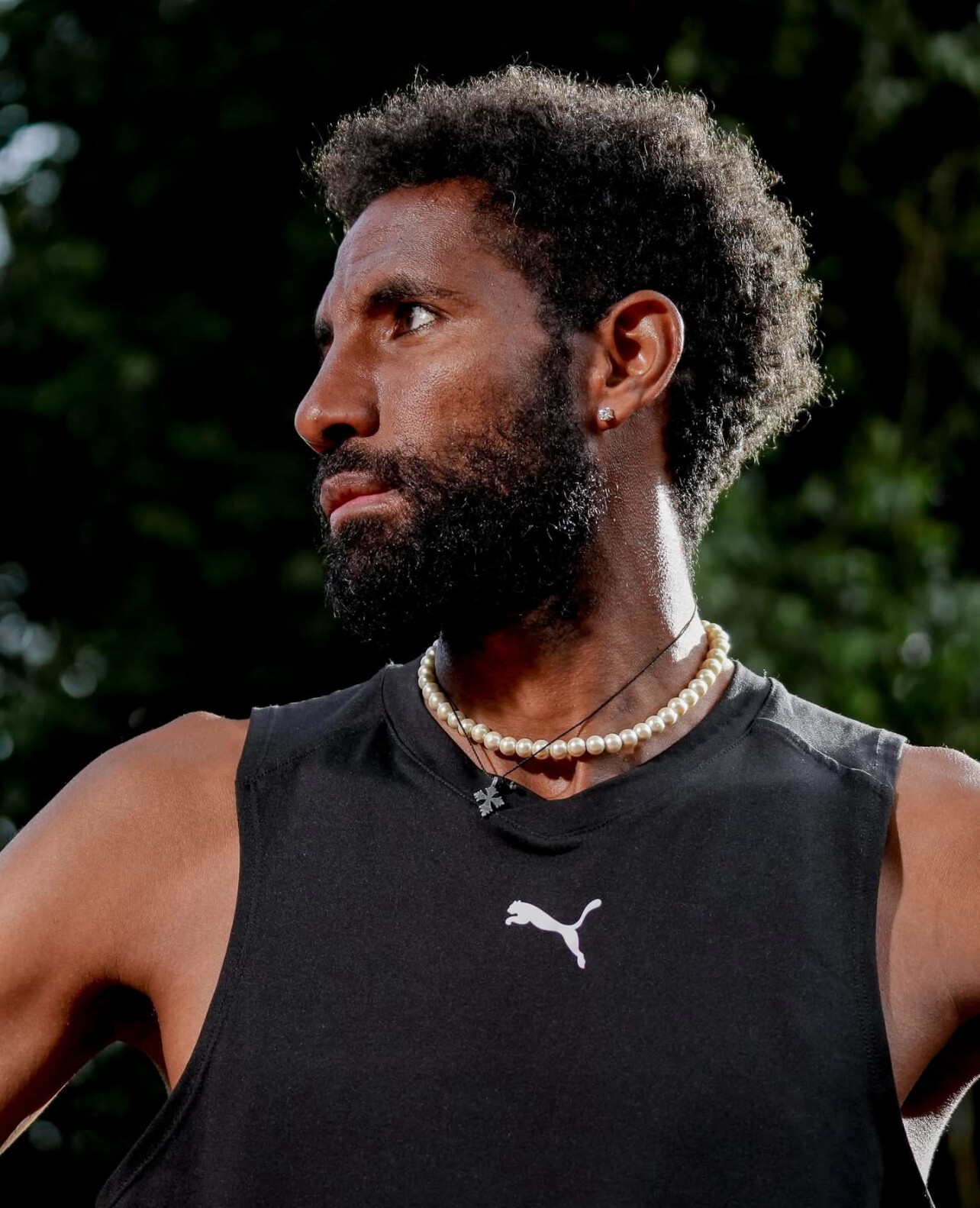
Petros’s dedication and perseverance have led to several national records:
• Marathon: German national record of 2:04:58, set at the 2023 Berlin Marathon.
• Half Marathon: National record of 1:00:09, achieved in Valencia on October 24, 2021.
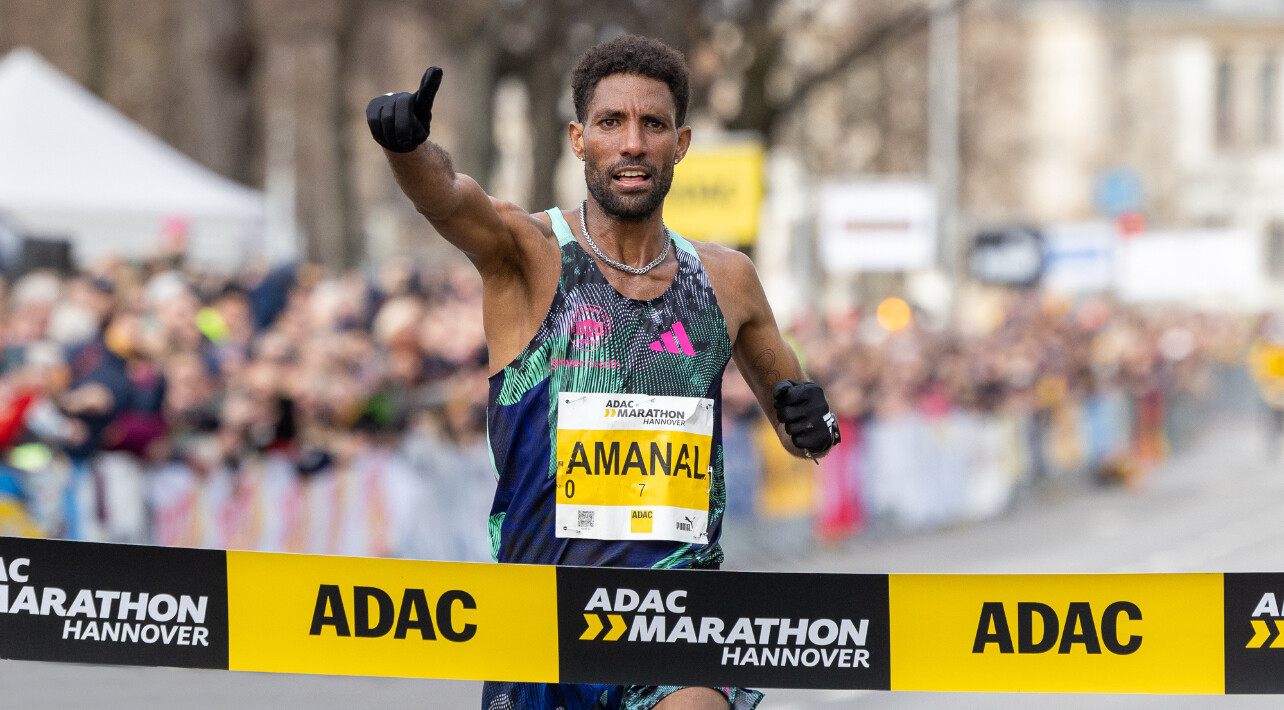
• 10 km Road Race: National record of 27:32, set in Castellón, Spain, on February 26, 2023.
International Representation
Petros has proudly represented Germany on the international stage:
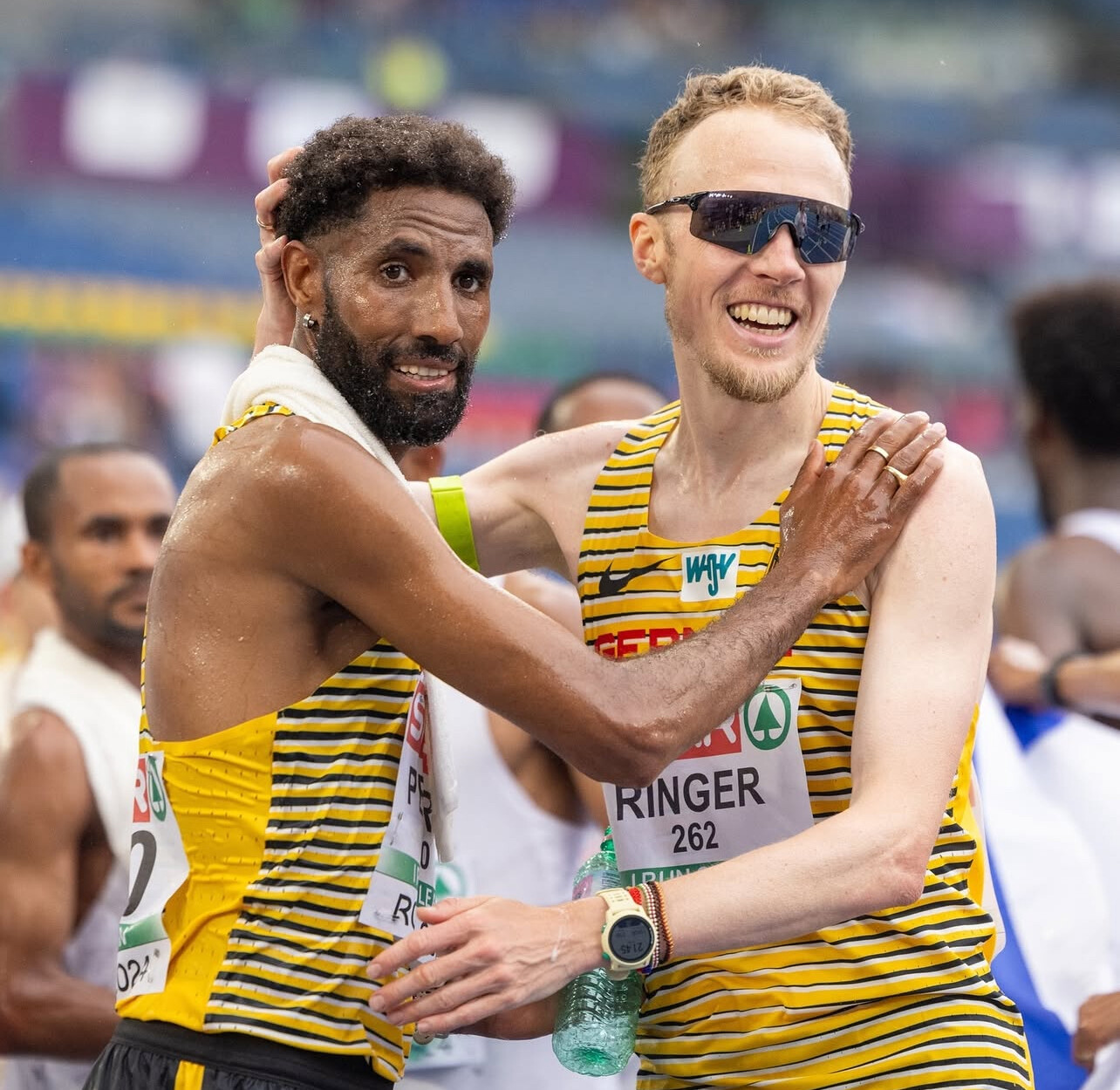
• Olympic Games: Competed in the men’s marathon at the 2020 Tokyo Olympics, finishing 30th.
• European Championships: Secured a silver medal in the team marathon event and placed fourth individually at the 2022 European Athletics Championships in Munich.
Recent Preparations and Professional Milestones
In preparation for the London Marathon, Petros participated in the eDreams Mitja Marató Barcelonaon February 16, 2025, completing the half marathon in 1:01:51. Reflecting on his performance, he stated:
“Today I ran quite far from my German record, but I am happy to run my first competition in 61:50 after the Olympic Games in Paris. Looking forward to my first marathon in London 2025.”
In addition to his athletic endeavors, Petros has recently joined the Puma Running Team, expressing enthusiasm about this new partnership and the opportunities it presents for the upcoming seasons.
Looking Ahead
As the 2025 London Marathon approaches, the running community eagerly anticipates Petros’s performance. His journey from a refugee seeking asylum to a national record-holder exemplifies resilience and determination. With his eyes set on London, Petros continues to inspire and set new benchmarks in long-distance running.
The last photo
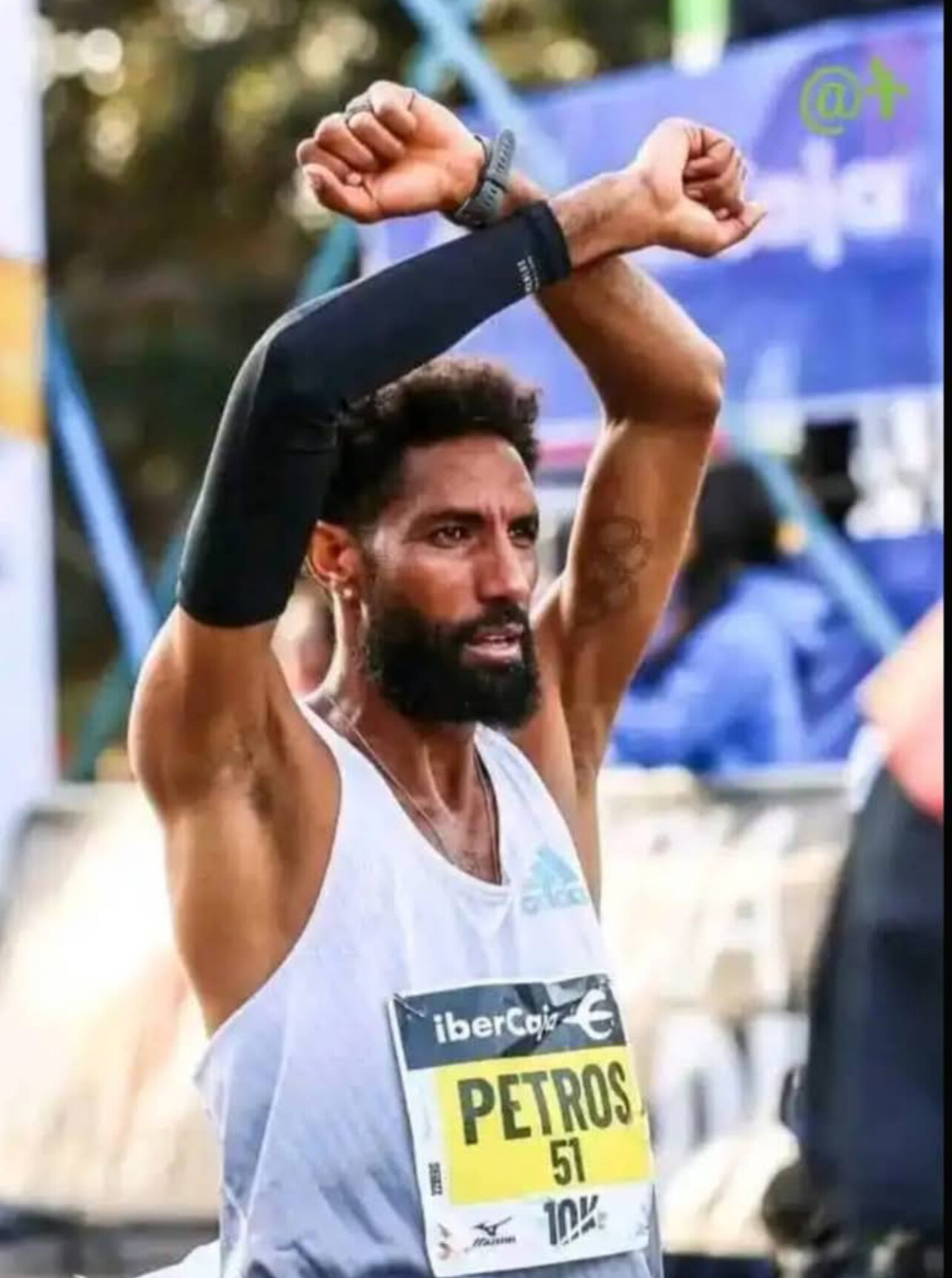
The gesture Amanal Petros is making in this photo — crossing his arms above his head — is a powerful and symbolic act. He does not do this gesture often but his beliefs have not changed.
This “X” gesture has been widely recognized as a sign of solidarity with the Tigray people in northern Ethiopia. It’s used by athletes and others to bring attention to the humanitarian crisis and conflict in the region, where countless civilians have suffered due to war, famine, and displacement.
Petros, who was born in Eritrea and whose roots are in Tigray, is using this moment at the finish line to make a public statement of support and raise awareness.
by Boris Baron
Login to leave a comment
Olympic Triathlon Champion Alex Yee Targets 2:07 Marathon Debut at London Marathon
Alex Yee, Great Britain’s Olympic and World Triathlon Champion, is set to make his marathon debut at the 2025 London Marathon on April 27. The 27-year-old aims for a finishing time between 2:07 and 2:10, a performance that would place him among the top British marathoners historically.
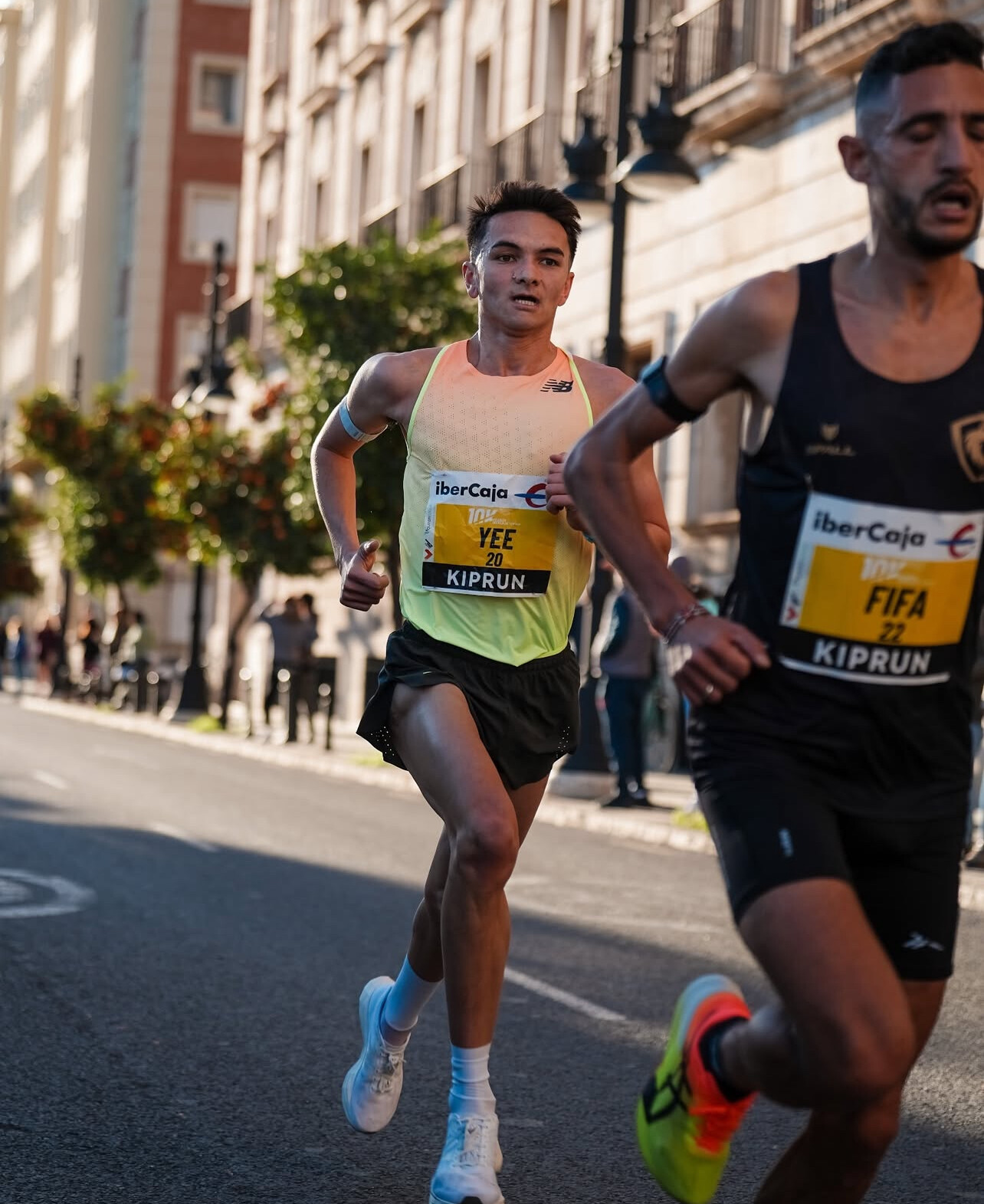
Yee’s decision to tackle the marathon comes after a stellar 2024, during which he secured both Olympic and World Championship titles in triathlon. Reflecting on this new challenge, Yee stated, “The marathon is something I’ve wanted to try for a while… Taking it on now just makes sense—it’s something different to mix things up and keep the motivation high.”
Training under coach Adam Elliott, Yee is adapting his regimen to balance marathon preparation with his triathlon commitments.
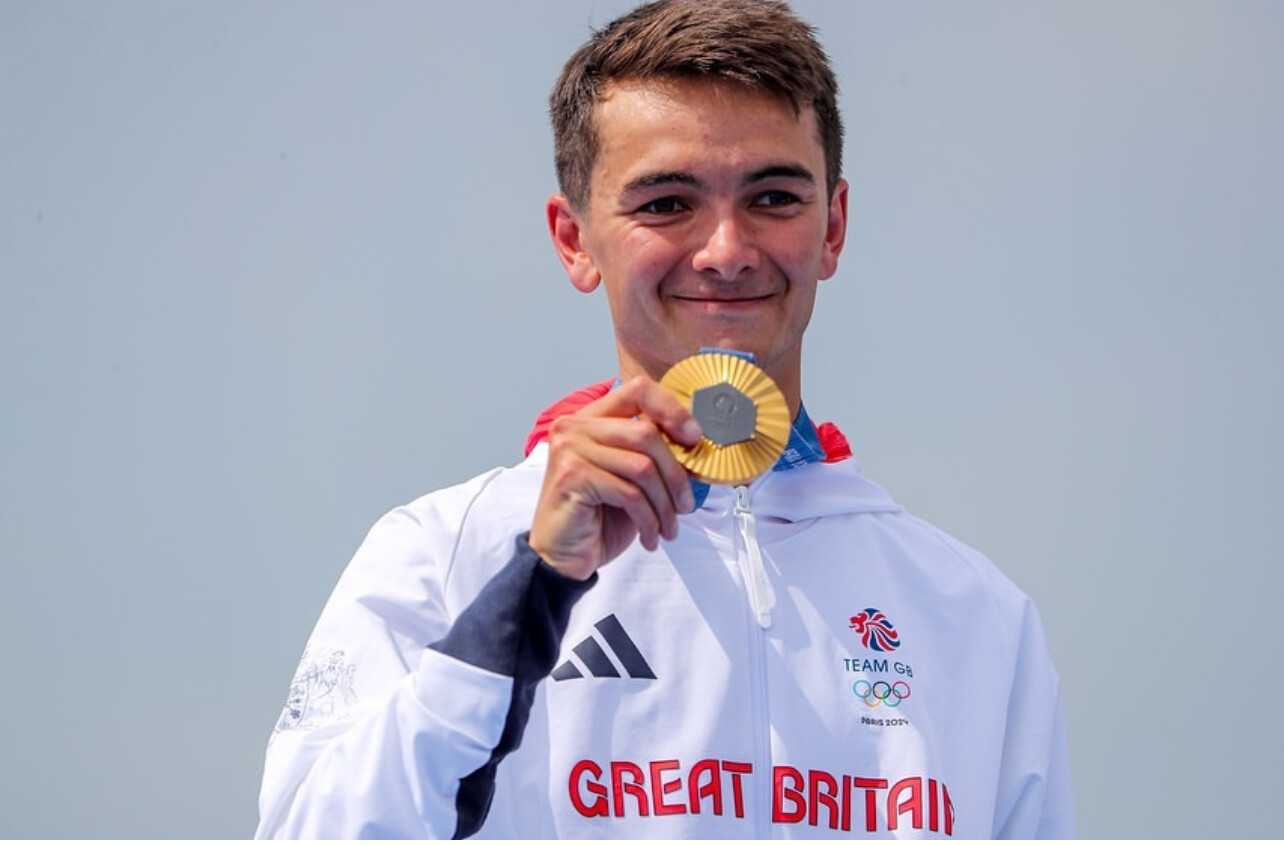
His weekly running mileage is increasing to approximately 80 miles, complemented by swimming and cycling sessions to maintain overall fitness. Elliott emphasizes a cautious approach to avoid injury, noting, “There is a clear risk of lower leg injury so he won’t do it off super high mileage.”
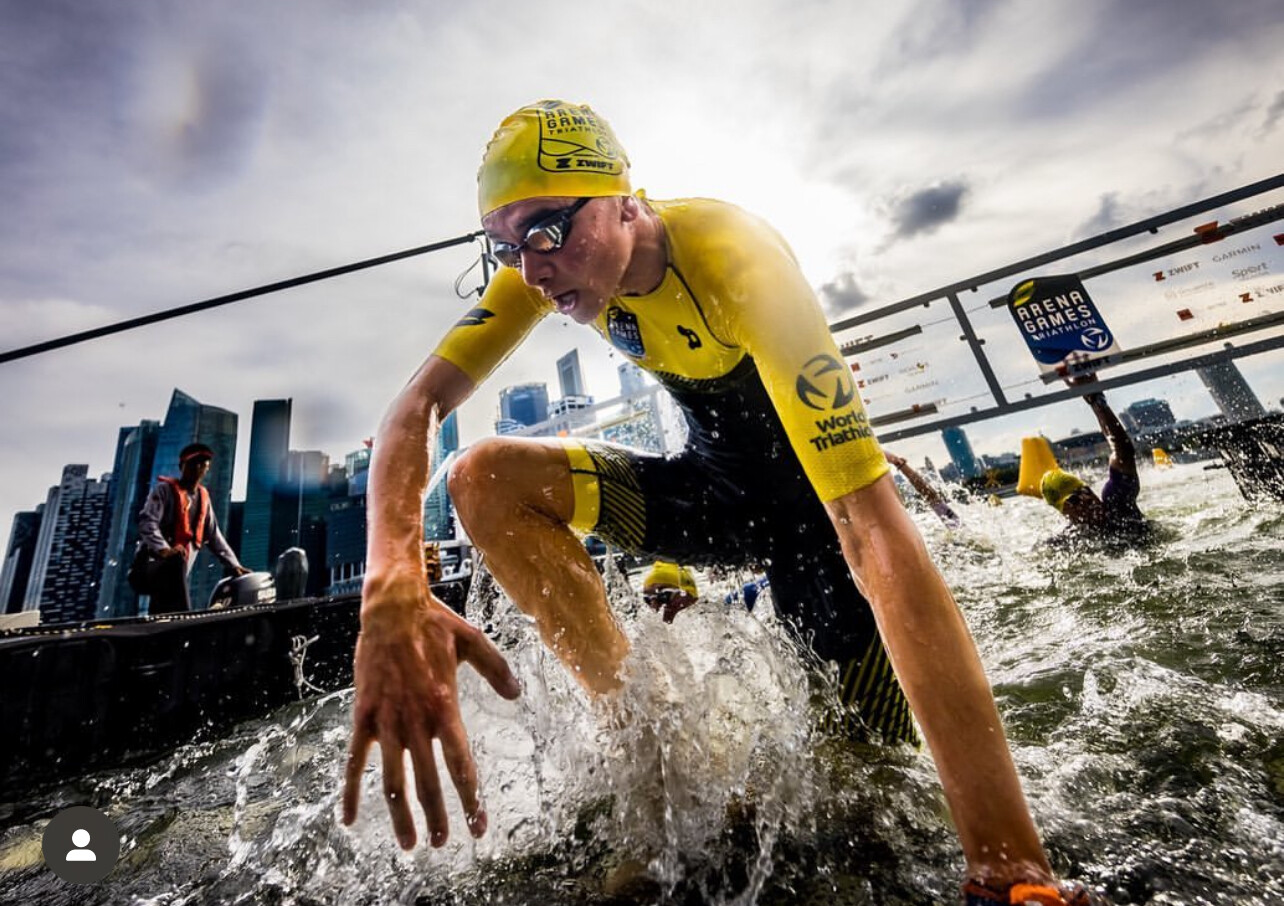
Yee’s running credentials are impressive; he boasts a 10,000m personal best of 27:51 and recently clocked 28:07 in a 10k road race in Valencia. These performances suggest his marathon goal is within reach.

Yee acknowledges the unknowns ahead, remarking, “I think the exciting thing is that I could fail and it might not go to plan. And that’s a good thing… there’ll be a huge amount of learning either way.”
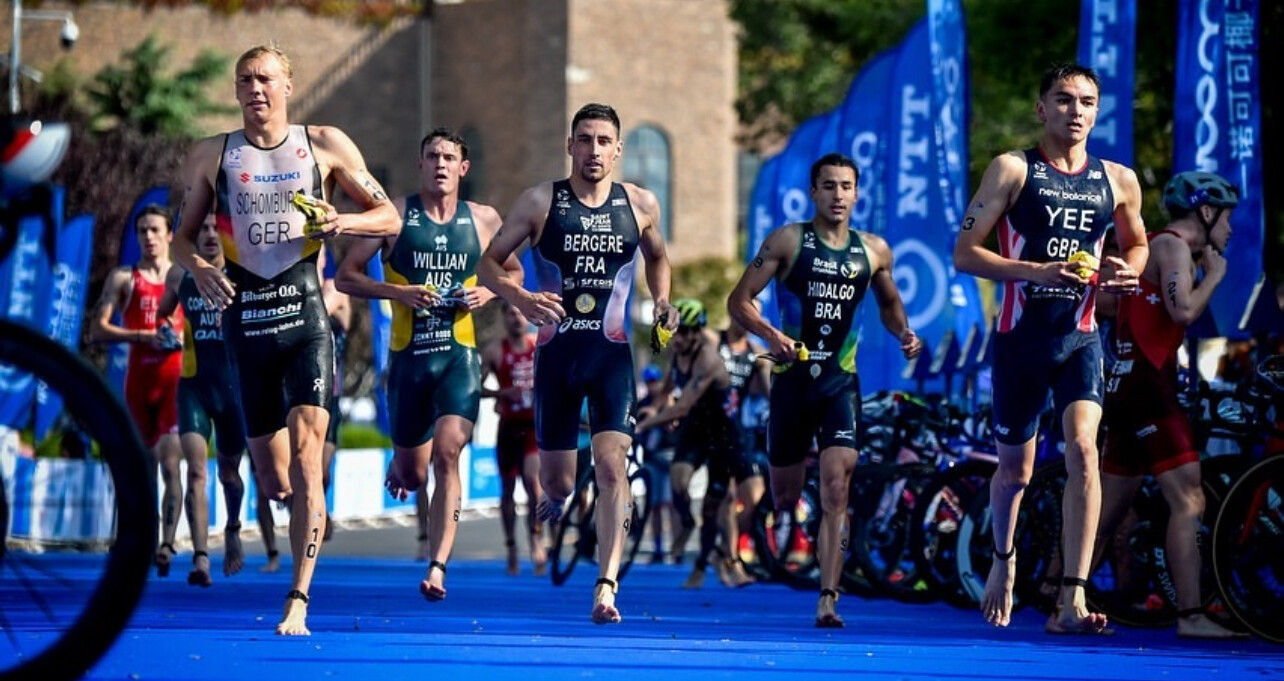
Adding to the anticipation, marathon legend Eliud Kipchoge has offered to mentor Yee ahead of the race. Kipchoge expressed his willingness to share insights, stating, “I’d like to meet him [Yee] before the race and share the lives we live… I’ll give my time when I’m in London to sit with him and share a meal, have a coffee.”
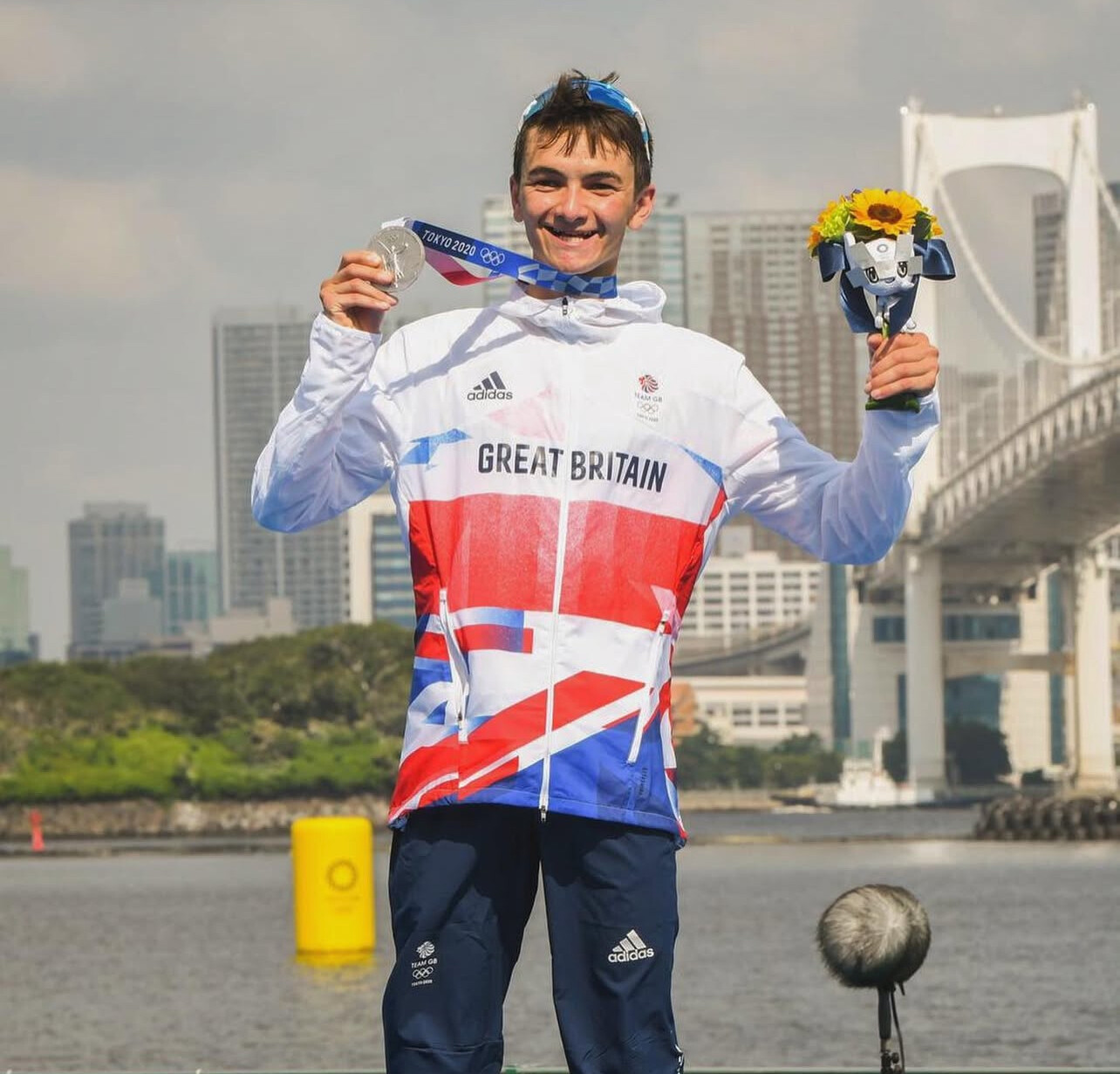
As Yee prepares for this significant milestone, the athletics community eagerly awaits his transition from triathlon to marathon running, anticipating a performance that could redefine expectations for multi-discipline athletes.
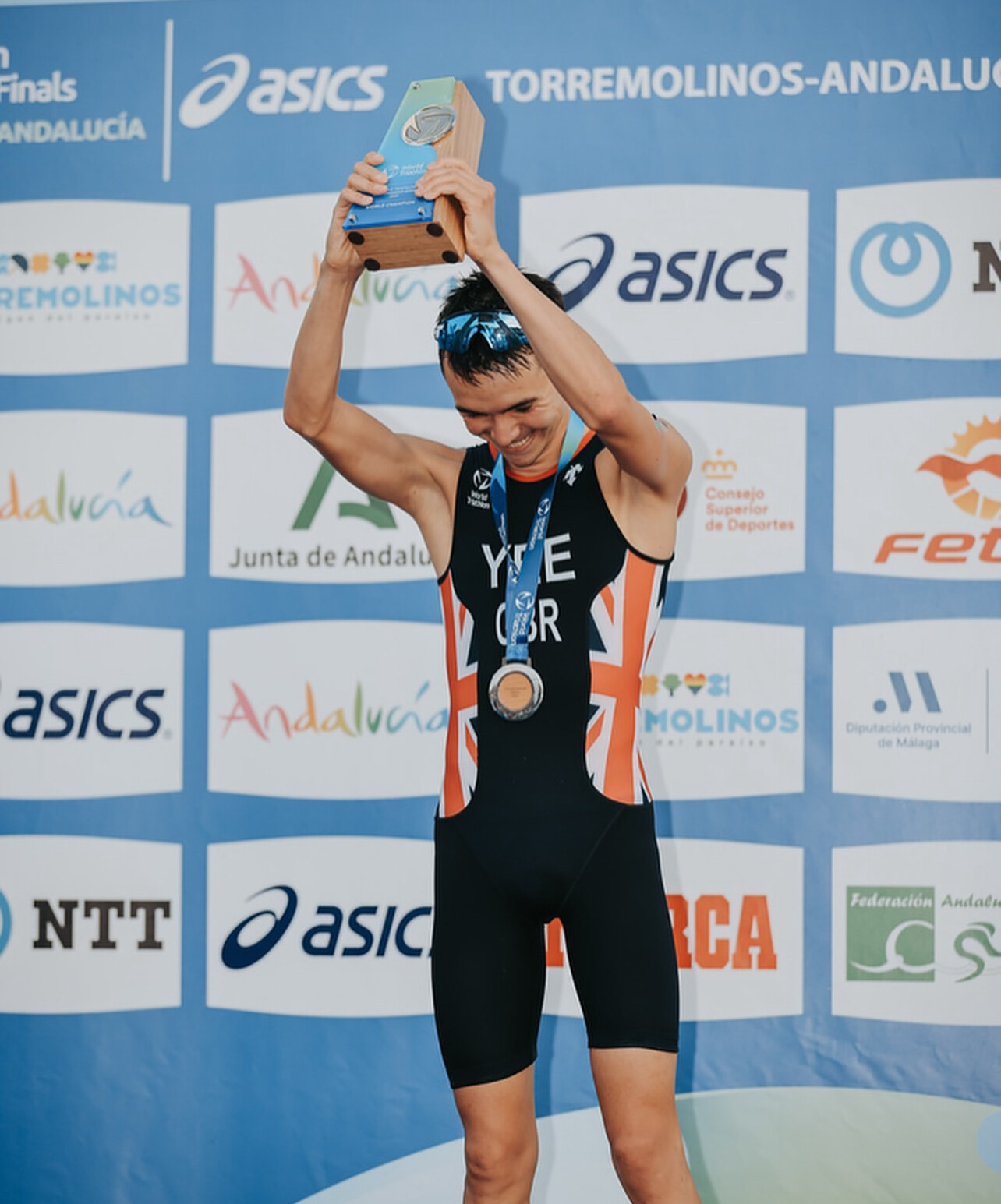
by Boris Baron
Login to leave a comment
Jacob Kiplimo’s Marathon Debut: Pursuing the Sub-Two-Hour Barrier at the London Marathon
Jacob Kiplimo, the 24-year-old Ugandan distance running sensation, has recently captured global attention with his record-breaking performances. His upcoming marathon debut at the 2025 London Marathon has sparked widespread speculation: Could Kiplimo be the first to officially break the elusive two-hour marathon barrier?
A Record-Breaking Prelude
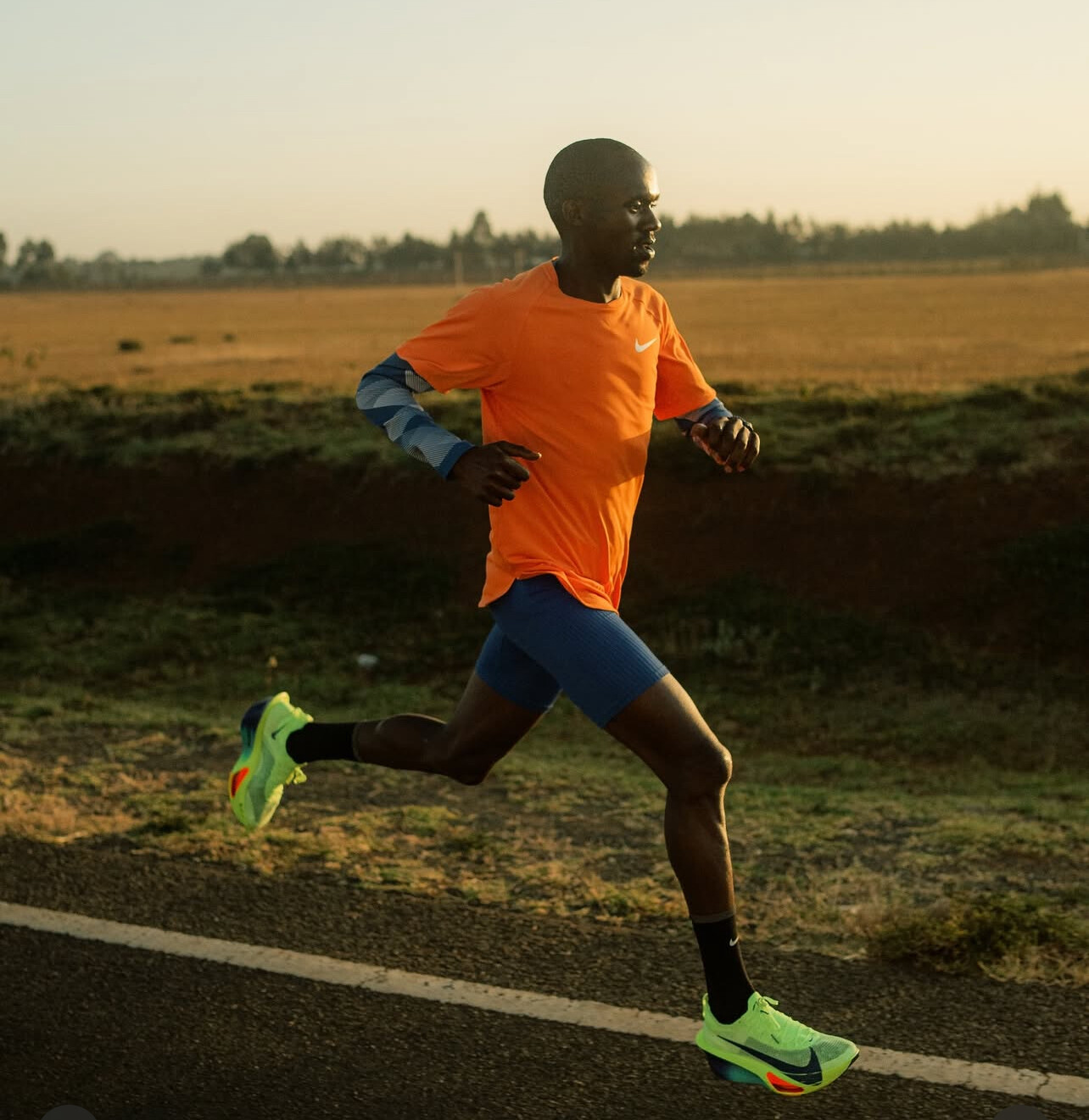
In February 2025, Kiplimo shattered the half marathon world record at the Barcelona Half Marathon, clocking an astonishing 56 minutes and 42 seconds. This feat not only eclipsed the previous record by 48 seconds but also showcased his exceptional endurance and speed. Reflecting on his performance, Kiplimo remarked, “I didn’t expect to break the world record… I told myself that I had to maintain that pace no matter what it took.”
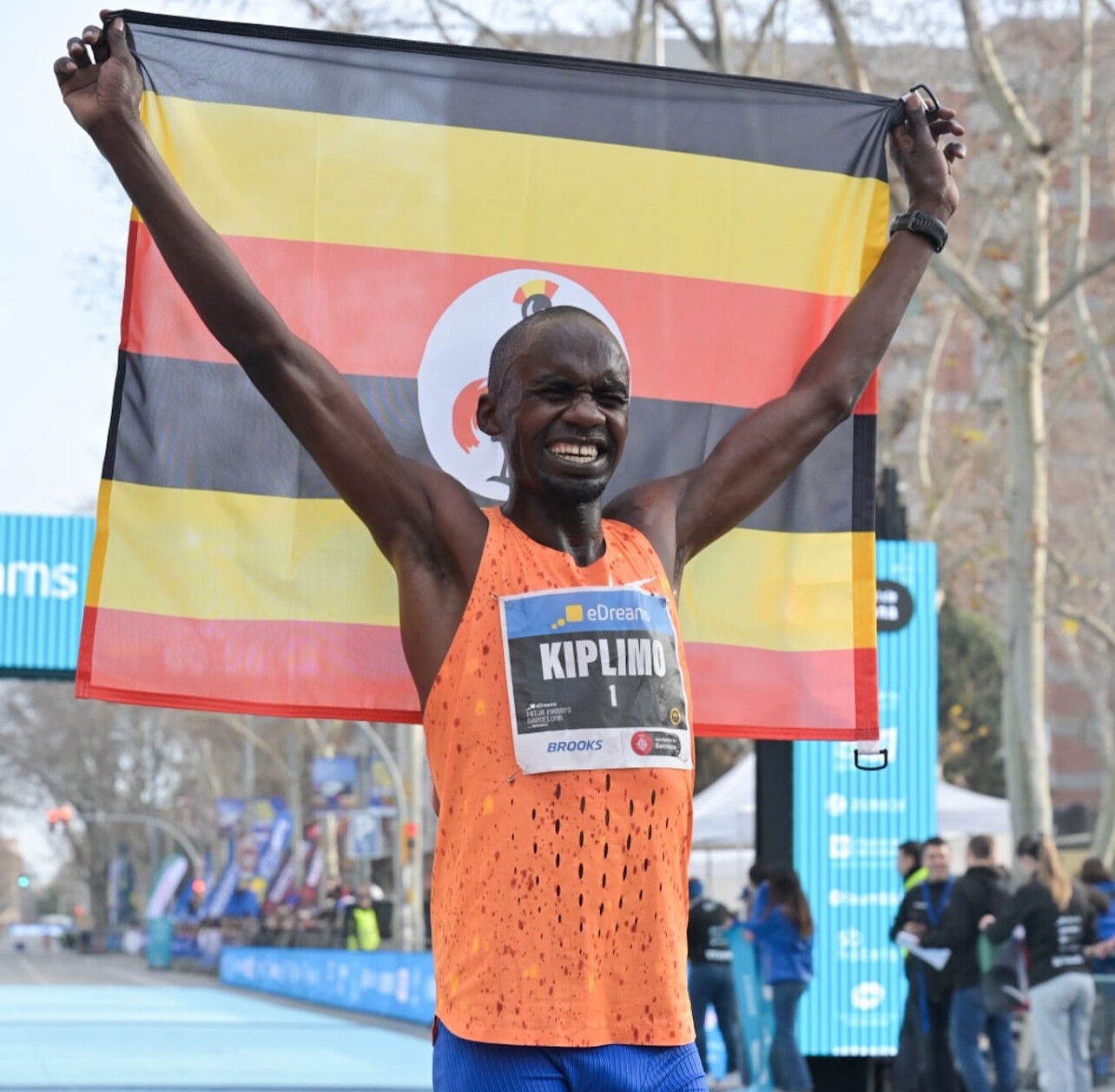
Training Regimen: Balancing Quality and Volume
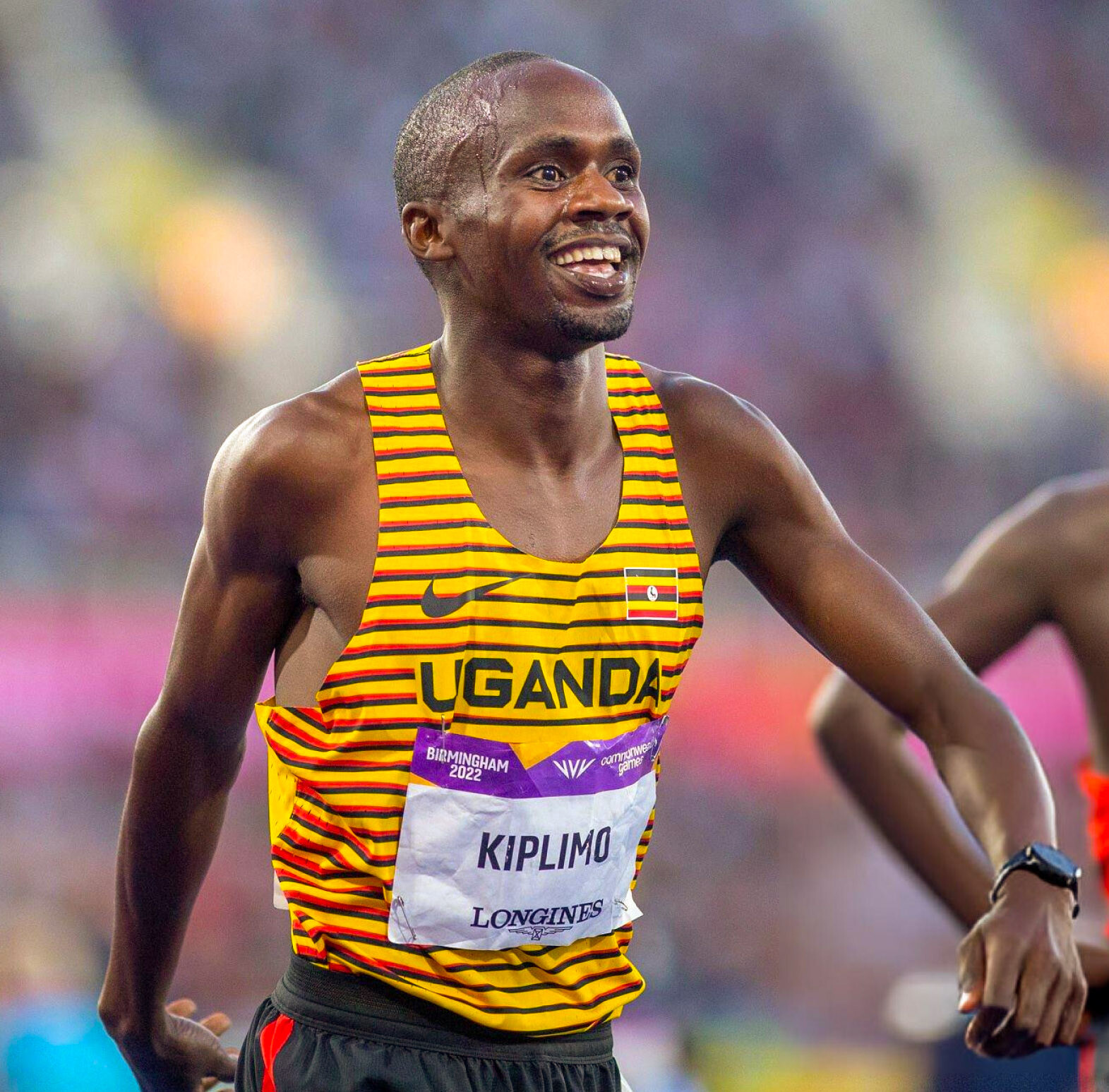
Kiplimo’s training approach emphasizes quality over sheer volume. Reports indicate that he typically runs between 80 to 95 miles per week, incorporating fartlek sessions, hill workouts, and threshold runs. His coach prioritizes structured, scientifically-based training, focusing on improving speed and personal bests before transitioning fully to marathon distances.
Assessing the Sub-Two-Hour Possibility
While Kiplimo’s half marathon performance suggests immense potential, translating that success to a full marathon presents distinct challenges. The physiological demands of 42.195 kilometers require not only speed but also exceptional endurance and energy management. Historically, even elite half marathoners have faced hurdles when moving up to the marathon distance. As noted in discussions about his transition, “His potential over 42.2km is massive, but marathon success isn’t just about being fast over 21.1km and doubling the effort.”
Strategic Considerations for London
Kiplimo’s race strategy for the London Marathon remains a topic of speculation. Given his aggressive approach in Barcelona, where he took the lead early and maintained a blistering pace, it’s plausible he might adopt a similar tactic in London. However, the marathon’s extended distance and the presence of seasoned competitors like Eliud Kipchoge and Kenenisa Bekele may influence a more measured strategy. Experts suggest that starting with a conservative pace could be advantageous, allowing Kiplimo to conserve energy for the latter stages of the race. Bob Anderson, founder of Runner’s World magazine and the Kenyan Athletics Training Academy, emphasizes the importance of early pacing:
“The marathon is twice the distance as the half, but to go under two hours Kiplimo has to be in good enough shape to push early,” says Bob Anderson. “He showed us in Barcelona he has the guts to do it. However, he has to be on that day, the temperature has to be perfect and with no wind. It can happen.”
Community and Expert Insights
The running community is abuzz with predictions. Some enthusiasts believe that with optimal conditions, Kiplimo could achieve a sub-two-hour marathon. One commentator expressed, “With the right course and good weather, this guy is going to do a sub 2 hour marathon. Amazing!” However, others urge caution, emphasizing the unpredictability of marathon debuts and the need for experience over the full distance.
Looking Ahead to London
As the London Marathon approaches, all eyes will be on Kiplimo. His performance will not only provide insights into his marathon potential but also indicate whether the sub-two-hour barrier can be breached in an official race setting. While optimism surrounds his debut, the marathon’s unique demands mean that even athletes of Kiplimo’s caliber must approach the challenge with respect and strategic preparation.
While Jacob Kiplimo’s transition to the marathon is highly anticipated, breaking the two-hour barrier in his debut remains a formidable challenge. His journey will undoubtedly captivate the running world, offering a compelling narrative of talent, preparation, and the relentless pursuit of athletic excellence.
by Boris Baron
Login to leave a comment
TCS London Marathon
The London Marathon was first run on March 29, 1981 and has been held in the spring of every year since 2010. It is sponsored by Virgin Money and was founded by the former Olympic champion and journalist Chris Brasher and Welsh athlete John Disley. It is organized by Hugh Brasher (son of Chris) as Race Director and Nick Bitel...
more...Stephen Kiprotich From Humble Beginnings to Marathon Glory
Stephen Kiprotich’s journey from a small village in Uganda to Olympic and World Championship marathon victories is a testament to his dedication and perseverance.
Early Life
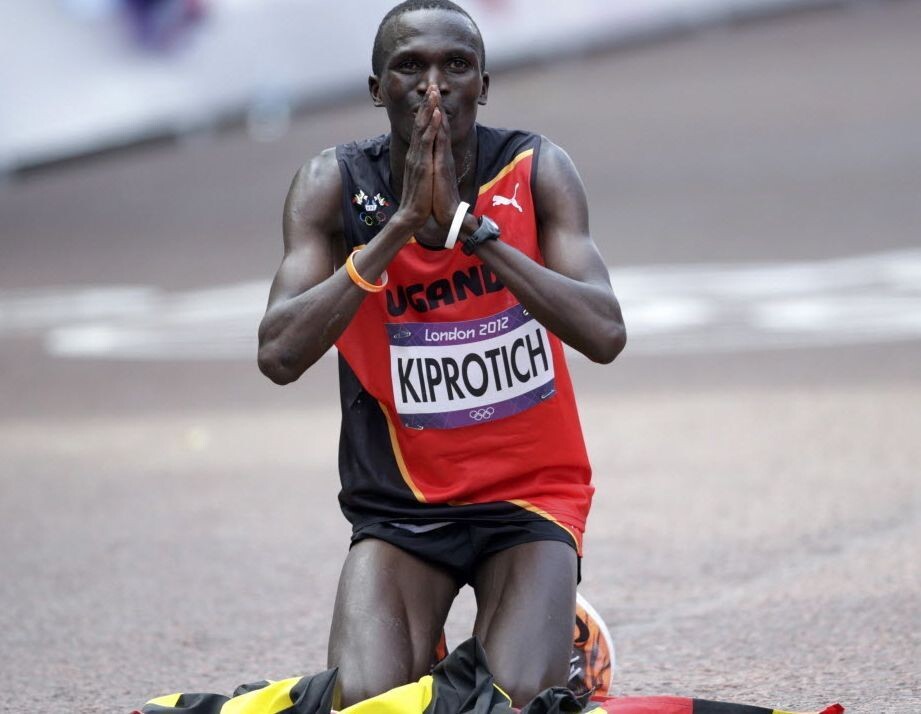
Born on February 27, 1989, in Cheptiyal, Kapchorwa District, Uganda, Kiprotich was the youngest of seven children in a farming family. During his childhood, he faced health challenges that kept him out of school for three years. Despite these setbacks, he developed a passion for running, inspired by Uganda’s strong tradition in cross-country events.
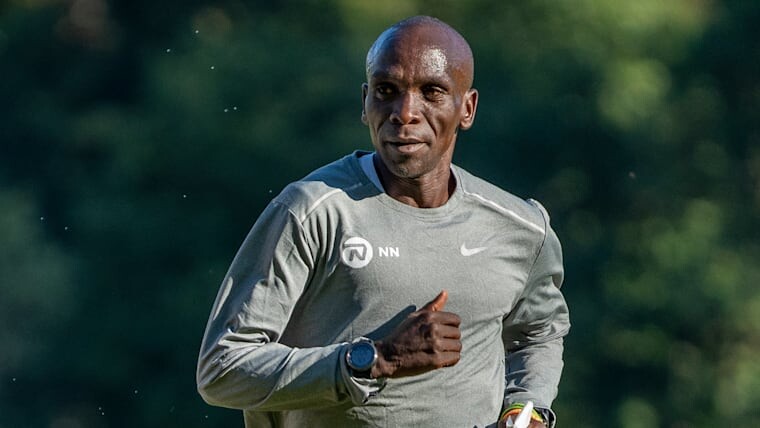
Transition to Competitive Running
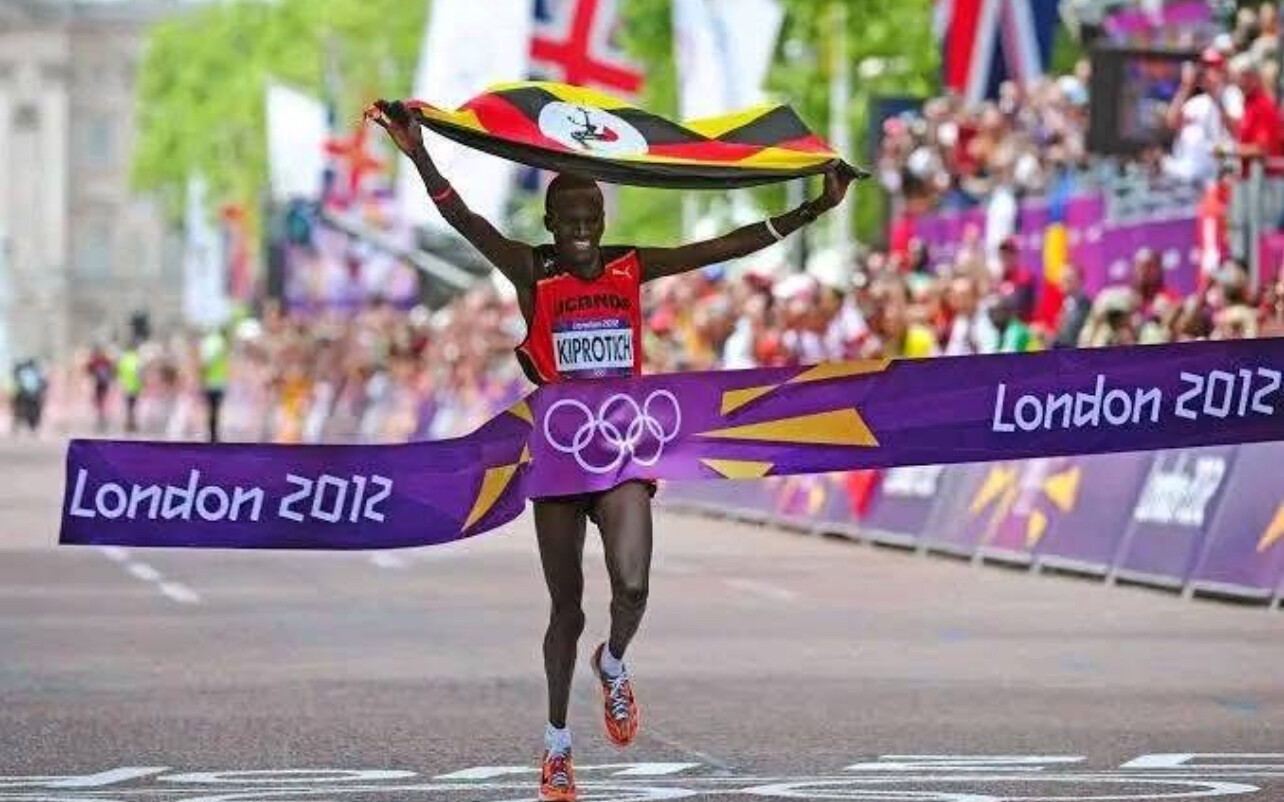
At 17, Kiprotich made a pivotal decision to pursue running seriously. He moved to the Eldoret region of Kenya, renowned for producing elite long-distance runners, to train alongside athletes like Eliud Kipchoge. This move allowed him to refine his skills and gain valuable experience in competitive running.
Marathon Success
Kiprotich’s marathon debut came in 2011 at the Enschede Marathon in the Netherlands, where he set a new Ugandan record with a time of 2:07:20. He continued to improve, finishing third at the 2012 Tokyo Marathon with a time of 2:07:50.
Olympic Gold in 2012
The pinnacle of Kiprotich’s career came at the 2012 London Olympics. In the marathon event, he faced strong competition from Kenyan athletes but managed to break away in the final stages, winning gold with a time of 2:08:01. This victory marked Uganda’s first Olympic gold medal since 1972 and elevated Kiprotich to national hero status.
World Championship Victory
In 2013, Kiprotich solidified his status as one of the world’s top marathon runners by winning gold at the World Championships in Moscow with a time of 2:09:51. He became only the second person to win both the Olympic and World Championship marathons consecutively.
Continued Dedication
Beyond his athletic achievements, Kiprotich serves as an assistant superintendent in the Uganda Prisons Service, reflecting his commitment to public service. His journey from humble beginnings to international acclaim continues to inspire many in Uganda and around the world.
Stephen Kiprotich’s story exemplifies the impact of determination and hard work, showcasing how one individual’s dedication can bring pride to a nation.
by Boris Baron
Login to leave a comment
Moh Ahmed Makes Half Marathon Debut A New Chapter for Canadas Distance Running Star
For elite runners, moving up in distance as they age is a natural progression History has shown this with legends like Kenenisa Bekele Haile Gebrselassie and Eliud Kipchoge all of whom transitioned from middle distance events to dominate the 5000m 10000m and eventually the marathon Now following a similar trajectory Canadian distance running star Moh Ahmed is set to make his highly anticipated half marathon debut at the United Airlines NYC Half Marathon on Sunday March 16 2025
From the Track to the Roads
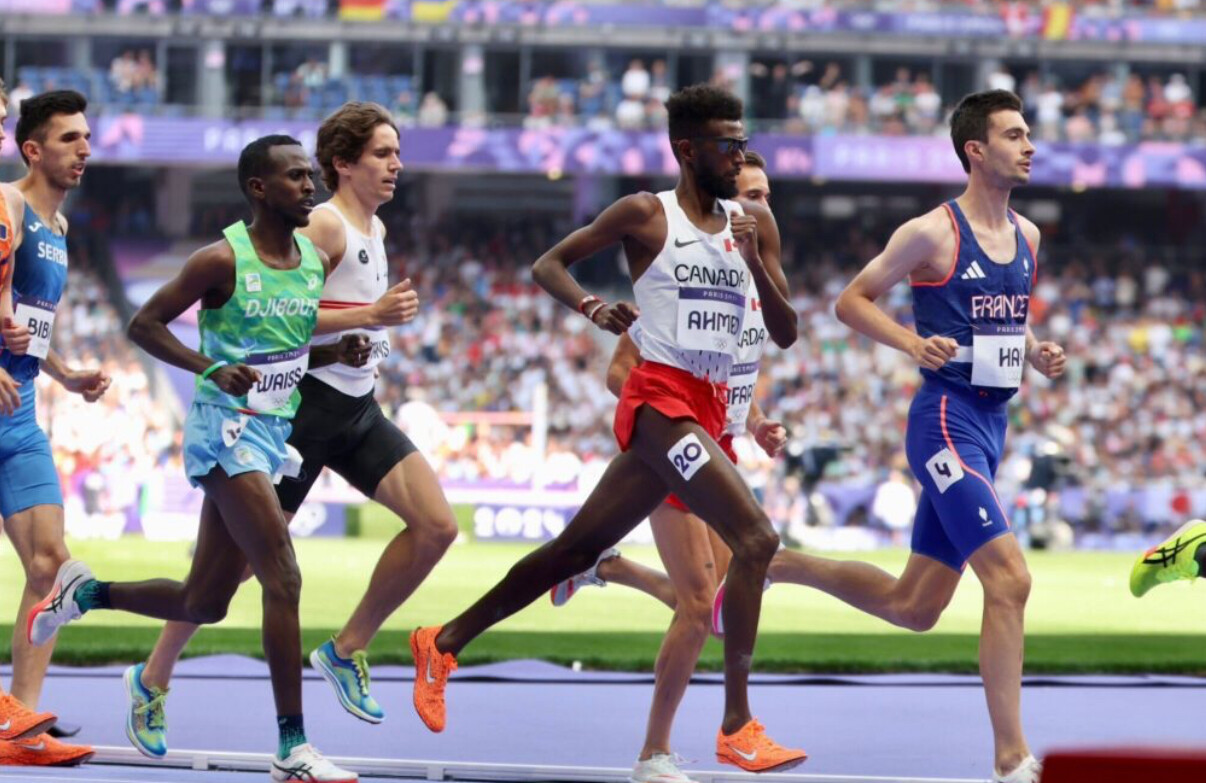
Ahmed a native of St Catharines Ontario has been a force in international athletics for over a decade He has built an impressive résumé earning
• Olympic Glory Silver in the 5000m at the Tokyo 2020 Olympics
• World Championship Medals Bronze in the 5000m at the 2019 and 2022 World Championships

• National Records Holding Canadian records in the 5000m 124720 and 10000m 263414
As he transitions from the track to road racing Ahmed joins a long list of elite runners who have sought new challenges over longer distances His decision to step up to the half marathon has generated excitement as fans and analysts eagerly anticipate how his track speed will translate to 131 miles
The NYC Half A Premier Road Racing Test
The United Airlines NYC Half Marathon is one of the most prestigious half marathons in the world drawing elite and amateur runners alike The race begins near the Brooklyn Museum passes through Times Square one of the only times the area is closed to traffic for a race and finishes in the heart of Central Park The course presents a challenging mix of hills and fast sections making it an excellent test for Ahmeds road racing debut
Ahmed will face a strong field that includes fellow Canadian Olympian Ben Flanagan a national record holder and a formidable competitor in the event The race will be a major test of Ahmeds endurance and strategic racing skills against some of the best long distance runners in the world
Breaking Barriers in the Big Apple
To date only three runners have broken the 60 minute barrier at the NYC Half Marathon a testament to the courses difficulty If Ahmed can challenge this mark in his debut it will further solidify his potential as a future marathon star With a background of blistering track times and world class endurance his performance in New York could signal the beginning of a new era for Canadian distance running
A New Beginning
As Ahmed takes on this new challenge all eyes will be on him to see how he adapts to the demands of road racing Whether this debut is a stepping stone toward future marathon ambitions or simply an exciting new test one thing is certain Moh Ahmeds journey is far from over His transition to the half marathon is just the beginning of another thrilling chapter in his already legendary career
by Boris Baron
Login to leave a comment
United Airlines NYC Half-Marathon
The United Airlines NYC Half takes runners from around the city and the globe on a 13.1-mile tour of NYC. Led by a talent-packed roster of American and international elites, runners will stop traffic in the Big Apple this March! Runners will begin their journey on Prospect Park’s Center Drive before taking the race onto Brooklyn’s streets. For the third...
more...Who Had the Best Era in Track & Field? A Generational Showdown
Track and field has long been the stage for some of the most electrifying athletic performances in history. Each generation has produced legends who have redefined what is possible in sprinting, distance running, and field events. But which era stands above the rest?
From the Silent Generation pioneers to the Gen Z record-breakers, every period has contributed to the evolution of the sport. Let’s break down each era’s greatest stars and their lasting impact on track and field.
Gen Z (Born 1997 - 2012): The Future of Track & Field
The newest generation of elite athletes is already making waves on the world stage. With the benefit of cutting-edge training, nutrition, and recovery techniques, these young stars are smashing records at a rapid pace.
Notable Sprinters & Field Athletes:
• Sydney McLaughlin-Levrone (USA) – 400m hurdles world record holder and Olympic champion
• Mondo Duplantis (Sweden) – Pole vault world record holder
• Erriyon Knighton (USA) – One of the fastest teenagers ever in the 200m
Notable Distance Runners:
• Jakob Ingebrigtsen (Norway) – Olympic 1500m champion, European mile record holder
• Joshua Cheptegei (Uganda) – 5000m and 10,000m world record holder
• Jacob Kiplimo (Uganda) – Half marathon world record holder (57:31)
• Gudaf Tsegay (Ethiopia) – World champion in the 1500m, dominant in middle distances
Gen Z athletes are not only breaking records but also shaping the future of the sport through their influence on social media and global visibility. With their combination of speed, endurance, and access to modern sports science, they may soon surpass all who came before them.
Defining Traits: Explosive, record-breaking, tech-savvy
Millennials (Born 1981 - 1996): The Superstars of the Modern Era
No discussion of dominant track and field generations is complete without mentioning Usain Bolt. The Jamaican sprinting legend captured the world’s attention with his charisma and untouchable world records.
Notable Sprinters:
• Usain Bolt (Jamaica) – Fastest man in history (100m: 9.58, 200m: 19.19)
• Allyson Felix (USA) – Most decorated female Olympian in track history
• Shelly-Ann Fraser-Pryce (Jamaica) – One of the most dominant sprinters of all time
Notable Distance Runners:
• Eliud Kipchoge (Kenya) – The greatest marathoner of all time, first to break two hours in a marathon
• Mo Farah (UK) – Dominated the 5000m and 10,000m at two Olympic Games
• Genzebe Dibaba (Ethiopia) – 1500m world record holder
• Ruth Chepngetich (Kenya) – First woman to break the 2:10 barrier in the marathon, setting a world record of 2:09:56 at the 2024 Chicago Marathon
Millennials excelled across all track and field disciplines. They ushered in an era of professional distance running dominance, with African runners setting standards in middle and long distances. Meanwhile, Kipchoge’s sub-2-hour marathon attempt was a historic milestone in human endurance.
Defining Traits: Charismatic, dominant, endurance revolutionaries
Gen X (Born 1965 - 1980): The Tough and Versatile Competitors
Gen X athletes were the bridge between the amateur days of track and the fully professional era. They pushed the sport forward with fierce rivalries and new records, while also seeing the globalization of track and field.
Notable Sprinters:
• Maurice Greene (USA) – Former world record holder in the 100m (9.79)
• Marion Jones (USA) – One of the most dominant sprinters of the late ‘90s
Notable Distance Runners:
• Haile Gebrselassie (Ethiopia) – Olympic and world champion, former marathon world record holder
• Paul Tergat (Kenya) – Pioneered marathon running dominance for Kenya
• Tegla Loroupe (Kenya) – First African woman to hold the marathon world record
This era marked a golden age for distance running, with Gebrselassie and Tergat setting the stage for the marathon revolution that would come in the next generation. With increased sponsorships, the road racing circuit became more competitive, and Kenyan and Ethiopian dominance solidified.
Defining Traits: Tough, globalized, long-distance pioneers
Baby Boomers (Born 1946 - 1964): The Golden Age of Track & Field
The Baby Boomers took track and field into the modern Olympic era, producing some of the most iconic figures in the sport’s history.
Notable Sprinters:
• Carl Lewis (USA) – Nine-time Olympic gold medalist across sprints and long jump
• Florence Griffith-Joyner (USA) – 100m (10.49) and 200m (21.34) world record holder
Notable Distance Runners:
• Sebastian Coe (UK) – 800m and 1500m Olympic champion, middle-distance legend
• Steve Prefontaine (USA) – One of the most influential distance runners in history
• Miruts Yifter (Ethiopia) – 5000m and 10,000m Olympic champion
This era brought middle and long-distance running into the mainstream, with rivalries like Coe vs. Ovett and Prefontaine vs. the world captivating fans. The Baby Boomers were the first generation of professional-level training and saw athletes truly dedicated to their craft year-round.
Defining Traits: Bold, revolutionary, multi-talented
Silent Generation (Born 1928 - 1945): The Pioneers of Kenya’s Dominance
This generation laid the foundation for modern track and field, producing legends whose influence still resonates today.
Notable Distance Runners:
• Kip Keino (Kenya) – The pioneer of Kenya’s dominance in distance running, winning Olympic gold in the 1500m (1968) and 3000m steeplechase (1972)
• Emil Zátopek (Czechoslovakia) – Triple gold in 5000m, 10,000m, and marathon at the 1952 Helsinki Olympics
• Paavo Nurmi (Finland) – Nine-time Olympic gold medalist in long-distance events
Kip Keino’s triumph over Jim Ryun in the 1500m final at the 1968 Mexico City Olympics is considered one of the greatest upsets in Olympic history. Competing at high altitude, Keino used a fast early pace to break Ryun, ushering in an era of Kenyan middle-distance dominance that continues today.
Defining Traits: Groundbreaking, resilient, visionary
Which Generation Had the Greatest Impact?
Each generation of track and field athletes has contributed to the sport’s evolution in unique ways:
• Millennials brought global superstardom (Bolt, Felix, Fraser-Pryce, Kipchoge, Chepngetich)
• Gen X athletes were fierce competitors in a rapidly changing sport (Greene, Gebrselassie, Tergat)
• The Baby Boomers set records that still stand today (Carl Lewis, Flo Jo, Coe, Prefontaine)
• The Silent Generation laid the foundation for modern track and field (Owens, Zátopek, Kip Keino)
• Gen Z is already breaking records and shaping the future of the sport (McLaughlin-Levrone, Ingebrigtsen, Cheptegei)
While it’s hard to declare one era the best, one thing is certain: the sport of track and field continues to evolve, with each generation pushing the limits of human performance.
Which generation do you think is the greatest? Let us know in the comments!
by Boris Baron
Login to leave a comment
Eliud Kipchoge to Race the 2025 Sydney Marathon in Historic First
Marathon legend Eliud Kipchoge has officially confirmed his participation in the 2025 Sydney Marathon, set for August 31. This marks the first time the Kenyan great will compete in Oceania, a significant milestone in his illustrious career.
The Sydney Marathon, which is in contention to become the seventh Abbott World Marathon Major, gains immense prestige with Kipchoge’s inclusion. Organizers expect over 300,000 spectators, making it one of the biggest marathon events in Australia’s history.

Kipchoge’s Legacy and Why Sydney Matters
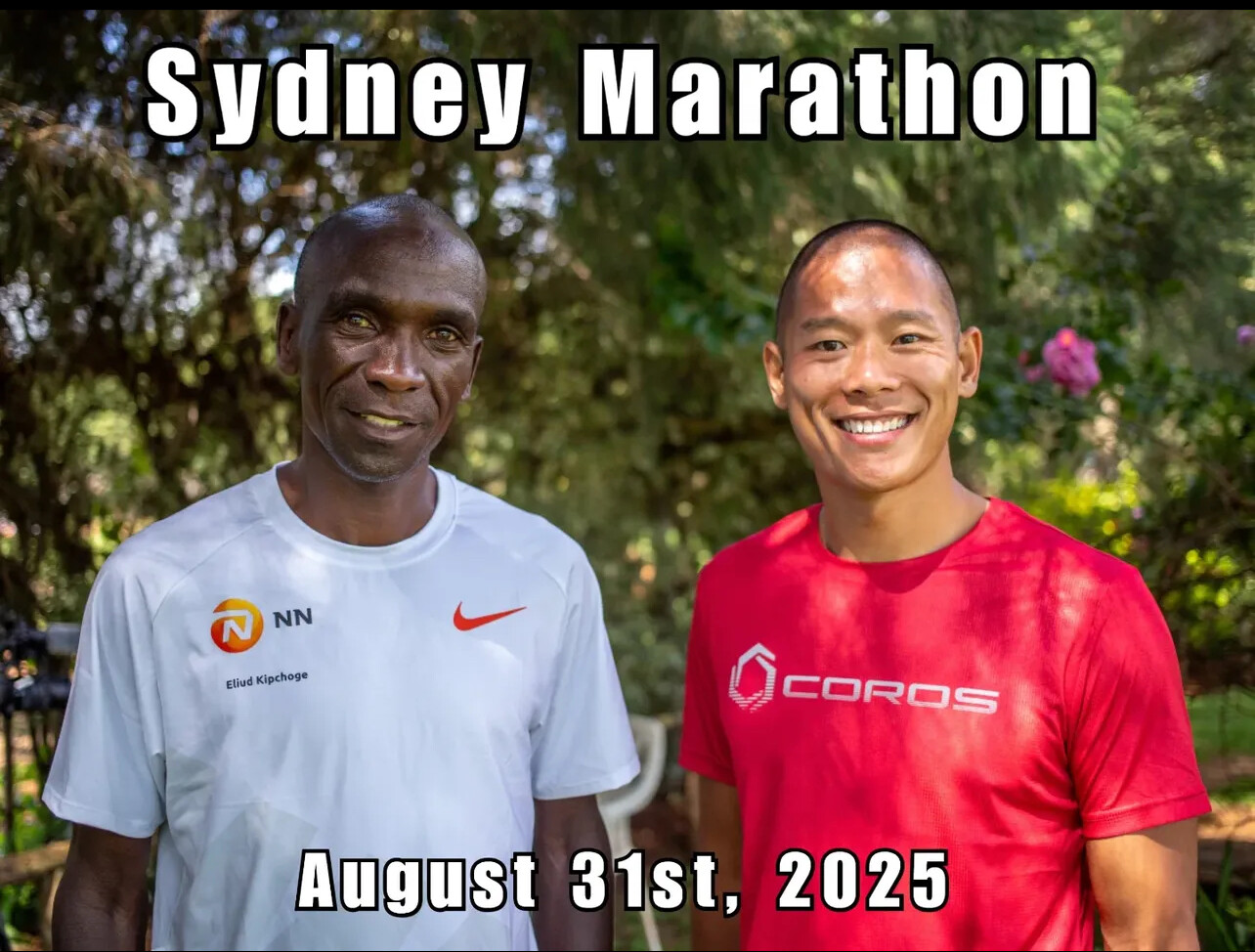
With 16 victories in 21 official marathons, Kipchoge is widely regarded as the greatest marathoner of all time. His historic achievements include:
• Back-to-back Olympic gold medals in the marathon at Rio 2016 and Tokyo 2020.
• A 10-marathon win streak from 2014 to 2019, a feat unmatched in modern distance running.
• A world-first sub-two-hour marathon, clocking 1:59:40 at the INEOS 1:59 Challengein 2019 (not an official record due to controlled conditions).
• The second-fastest marathon ever recorded, 2:01:09 at the 2022 Berlin Marathon.
With the Sydney Marathon aiming for World Major status, Kipchoge’s participation signals the event’s growing significance in the global running calendar. Race Director Wayne Lardencalled it a dream come true, emphasizing the impact Kipchoge’s presence will have on Australia’s running community.
The Road to Sydney: London Marathon First
Before taking on Sydney, Kipchoge is set to compete in the London Marathon on April 27, 2025. London has been one of his most successful races, and his performance there will be closely watched as he continues to chase new milestones.
A Race That Will Inspire a Nation
Kipchoge’s presence in Sydney is expected to elevate the marathon’s status, attract elite competitors, and inspire thousands of runners. Known for his mantra, “No human is limited,” his participation will shine a global spotlight on Sydney, drawing both elite athletes and everyday runners to the race.
As August 31 approaches, all eyes will be on Sydney to see if the greatest marathoner of all timecan add another historic victory to his legacy.
by Boris Baron
Login to leave a comment
Sydney Marathon
The Sydney Marathon is a marathon held annually in Sydney, Australia. The event was first held in 2001 as a legacy of the 2000 Summer Olympics, which were held in Sydney. In addition to the marathon, a half marathon, 9 kilometres (5.6 mi) "Bridge Run", and a 3.5 kilometres (2.2 mi) "Family Fun Run" are also held under the banner...
more...

